- Meet the Team
- Our Manifesto
- Work with Us
- Budget Travel
- Personal Development
- Work & Travel
- United Kingdom
- More of Europe
- Philippines
- More of Southeast Asia
- More of South America
- More of Central America
- South Korea
- More of Asia
- More of North America
- New Zealand
- Pacific Islands
- More of Oceania
- South Africa
- More of Africa
- More of the Middle East
- Travel Essentials
- Travel Gear
Home » Oceania » Australia » Packing List

Australia Packing List • 23 Items you NEED (2024)
As the world’s sixth largest country Australia is every adventure traveler’s wonderland with its endless offerings of things to see and do. Whether you’re up for some serious water activities – like surfing, scuba diving, whitewater rafting – or camping the Outback, hiking through the rainforest, or enjoying an evening of culture at the opera – Australia won’t disappoint!
But before heading out to the Land Down Under, you’ll have to prepare a game plan for what to pack for Australia. With eight states and territories with varying climates knowing what your Australia packing essentials are isn’t so obvious.
Thankfully you’ve come to our Australia survival guide – where we’ll walk you through your what to get pack for Australia undertaking step by step!.
So, sit back, have a read and start getting excited about all the fun you’ll be getting yourself into. One thing is for sure, those Aussies know how to show their visitors a good time!
Ready? Let’s get to it.

Unlock Our GREATEST Travel Secrets!
Sign up for our newsletter and get the best travel tips delivered right to your inbox.
The Ultimate Australia Packing List
What to pack for australia checklist: personal gear, final thoughts on what to pack for australia.
- Buy Us a Coffee!
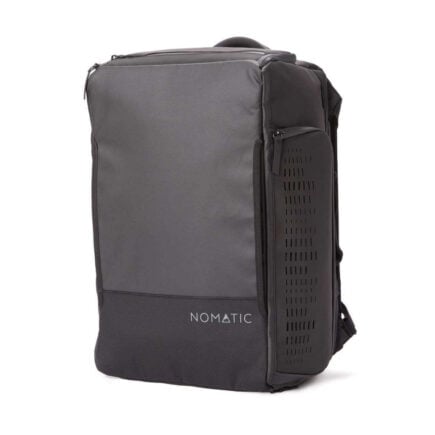
Nomatic Travel Bag
- Capacity > 30L
- Price > $289.99
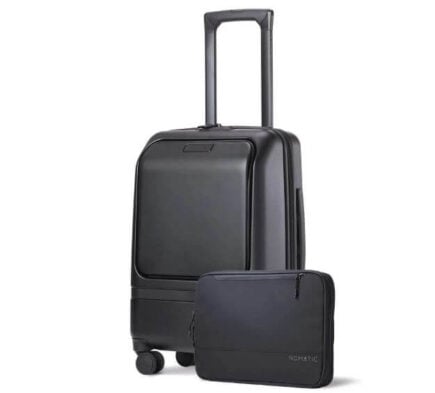
Nomatic Navigator Carry On
- Capacity > 37L
- Price > $549.99
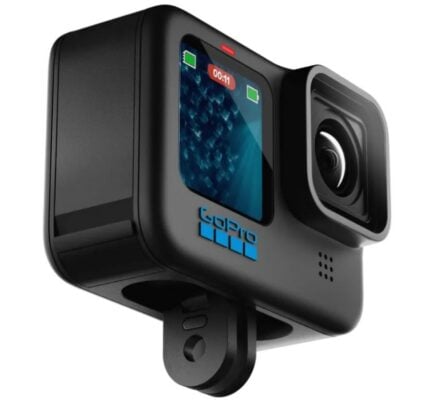
GoPro Hero 11
- Resolution > 5k
- Price > $349.99
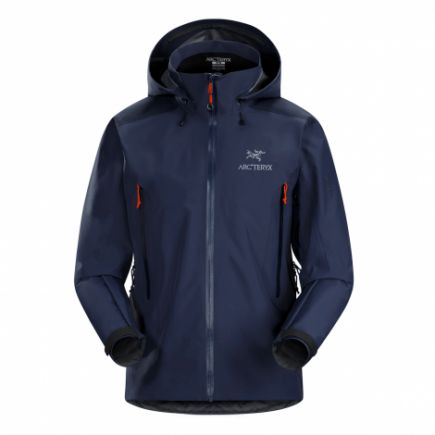
Arc’teryx Beta AR Jacket
- Price > $600

Insurance From World Nomads
- Price > Click For a Quote
Failure to back adequately for Australia could really boomerang. To avoid any “packing malfunctions” check out our advice on what to bring to Australia.
The Broke Backpacker is supported by you . Clicking through our links may earn us a small affiliate commission, and that's what allows us to keep producing free content 🙂 Learn more .
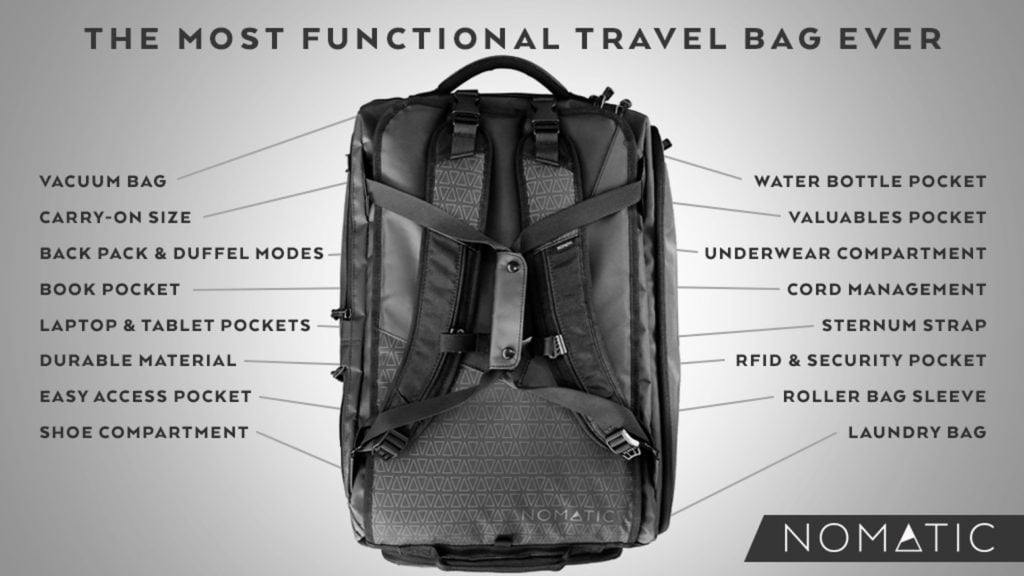
Best Backpack For Australia: Nomatic Travel Bag
Before you even take on the task of figuring out what to pack for Australia, you’ll need an amazing backpack to pack it all into. For all types of travelers and destinations, our number one recommendation is the Nomatic Travel Bag .
The Nomatic travel bag covers every detail to make backpacking travel the best experience. Because of its smart design, it manages to provide loads of packing space in a convenient, carry-on size package! Its handy built-in pockets make plenty of room for all the necessities on your what to pack for Australia checklist – you’ll find separate compartments for important items like shoes, water bottle, electronics, underwear and socks. As an added bonus, there’s also an RFID-safe and cord management pocket.
You have a choice between backpack or duffel bag carry, and extra carrying comfort for your back thanks to its innovative strap system and detachable sternum strap. And its black, waterproof material is every bit sleek and modern as it is durable and tough. There is a reason why most Broke Backpacker staff swear by this backpack.
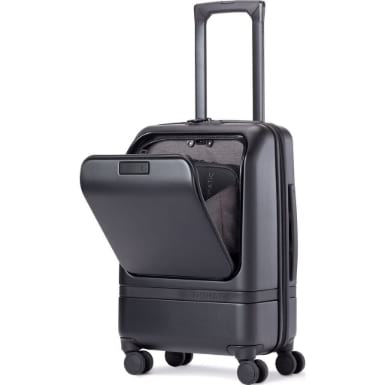
Best Suitcase For Australia: Nomatic Carry-On Pro
Backpacks not your thing? That’s ok. Our friends at Nomatic are back again with a great alternative to their badass Travel Bag; the Nomatic Carry-On Pro.
This suitcase is ultra-durable, sleek, and comes with a handy tech compartment for transporting your laptop and other electronic bits. Nomatic has been an industry leader when it comes to travel gear and that reputation is reflected in the quality build design and functionality of the Carry-On Pro suitcase. The beauty of taking a carry on case is that you will be able to take full advantage of the cheap domestfic flights you can bag in Australia.
Check out our Nomatic Carry-On Pro review to learn more about this epic suitcase.
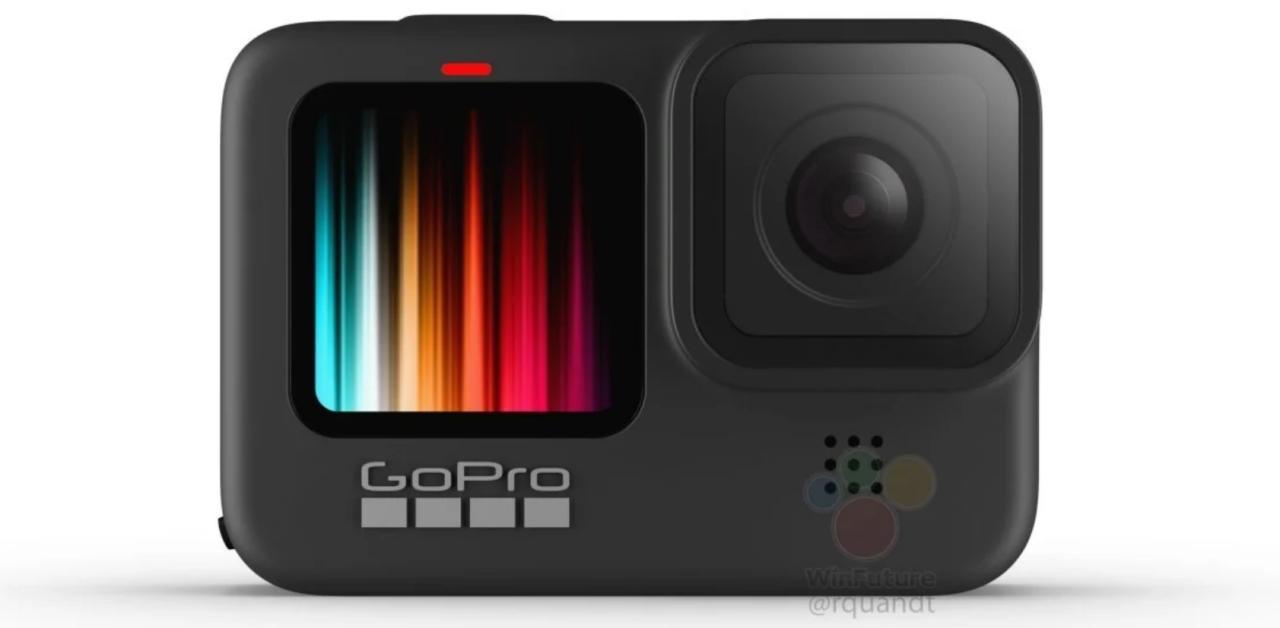
Best Camera For Australia: GoPro Hero9 Black
For most of us, our smartphones now feature cameras with stunning photo capabilities.
But… if you are an aspiring photographer who wants to take next-level photos and video beyond iPhone selfies, I recommend going with an action camera like the GoPro Hero9 Black .
It does deliver pro-quality video and gives you a bunch of a different angle options and shooting speeds to work with for photos (including a selfie-mode). It also has a level of water-proofing that it good the Great Barrier Reef.
Think of a camera purchase like this as a long term investment that will have you capturing epic shots well beyond your time exploring here.If you are looking for something cheaper for video specifically, check out these epic GoPro Alternatives .
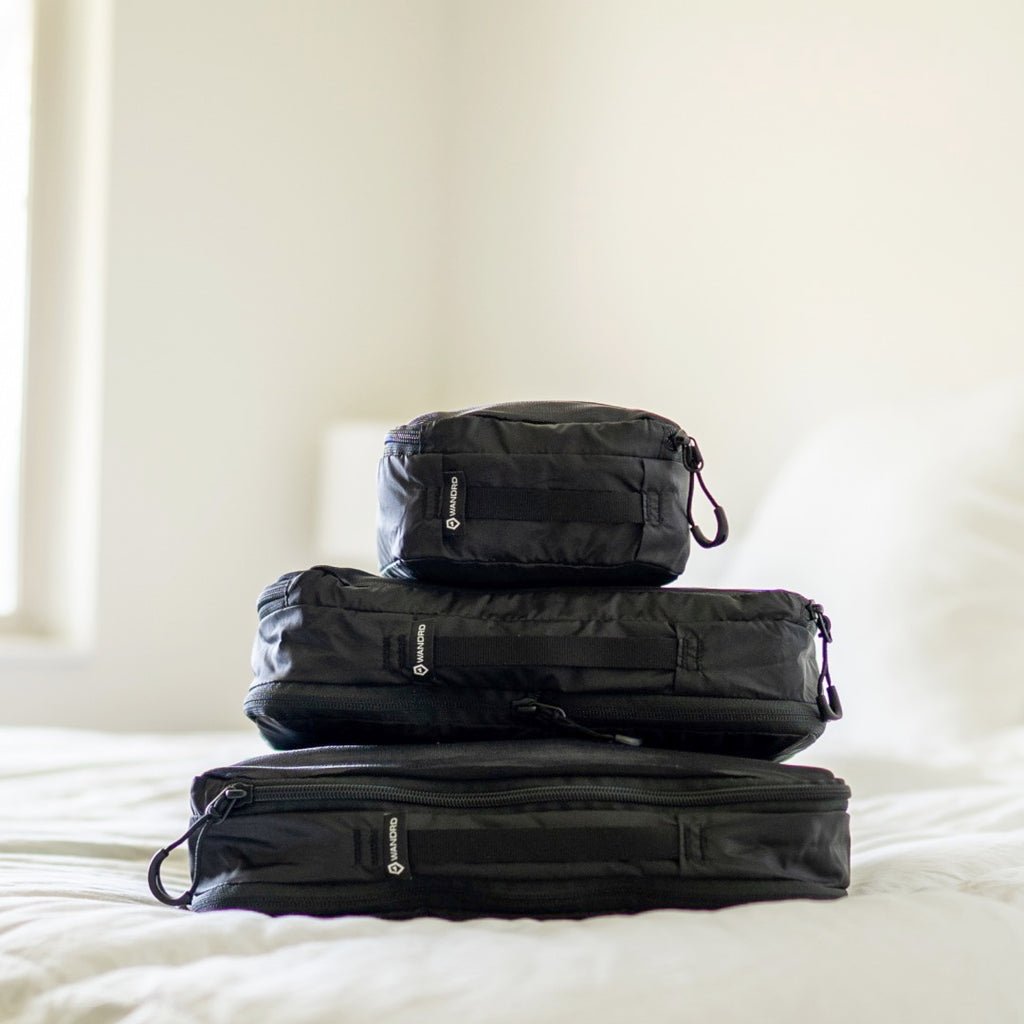
Packing Cubes For Australia – Wandrd Packing Cubes
In case you have never used them, packing cubes are little compression cubes that allow you to neatly pack clothes in in order to help facilitate better packing. They allow you to pack more stuff, and to keep it all better organised.
For the longest time, I thought that packing cubes were a superfluous indulgence, but boy was I wrong. Now I never travel without a few. These ones from WANDRD are great quality and excellent value for money. Get them on your Australia packing list now!
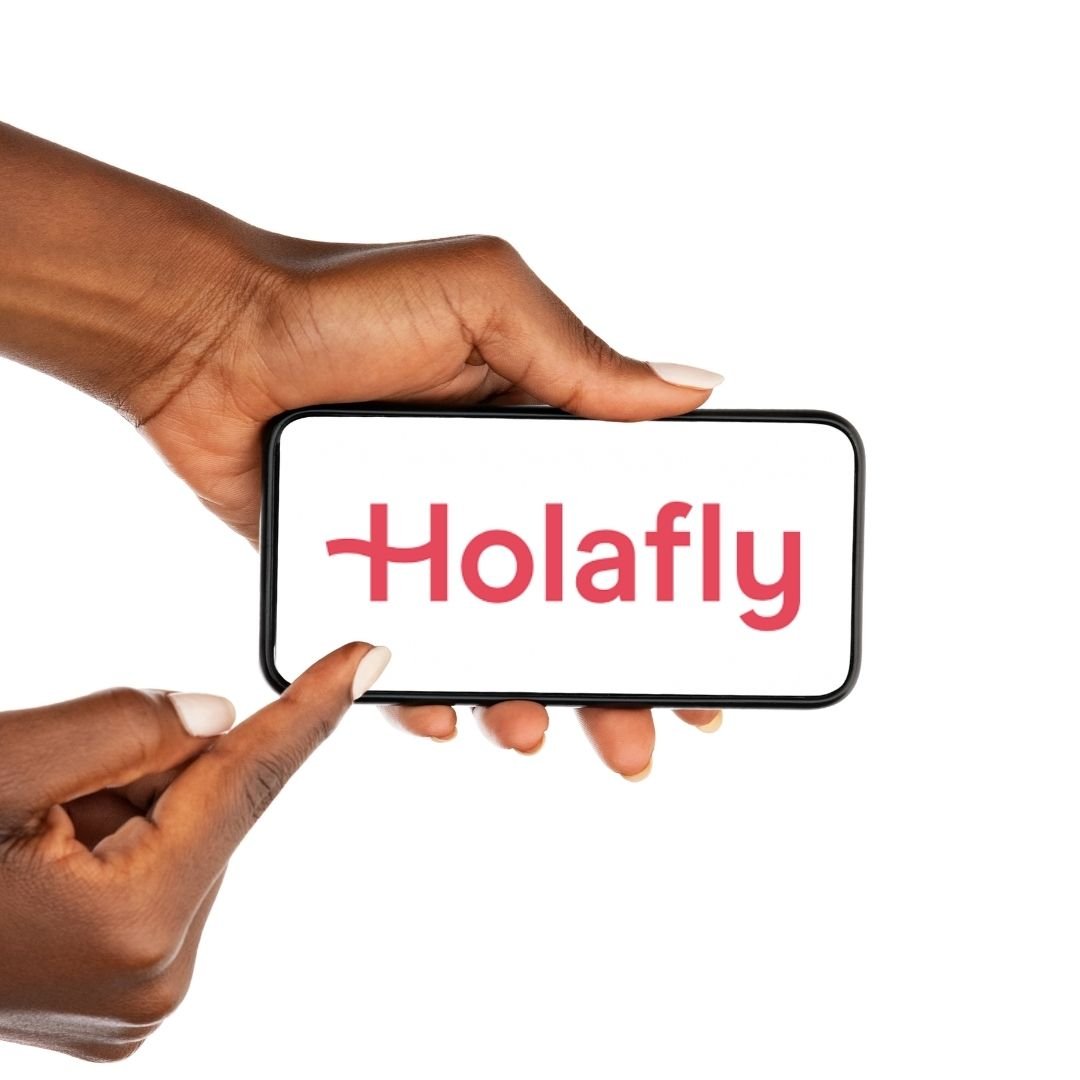
Best Sim For Australia – HolaFly eSim
The good news about Australia is that there is extensive 4g and 5g Internet coverage offering ready access to taxi apps and food delivery apps. The bad news is that your native SIM card will most probably not work and so you will not be able to access any of this online goodness until you rectify that particular situation.
You can waste time hanging around phone shops queuing to get a plastic sim or you can simply install a eSim onto your phone before you leave home. You just access the HolaFly site, choose the relevant package, download it and off you go – you are online the moment you land at the airport. eSims are easier to set up and better than the environment than plastic sims. The downside is that not all phones are eSim ready.
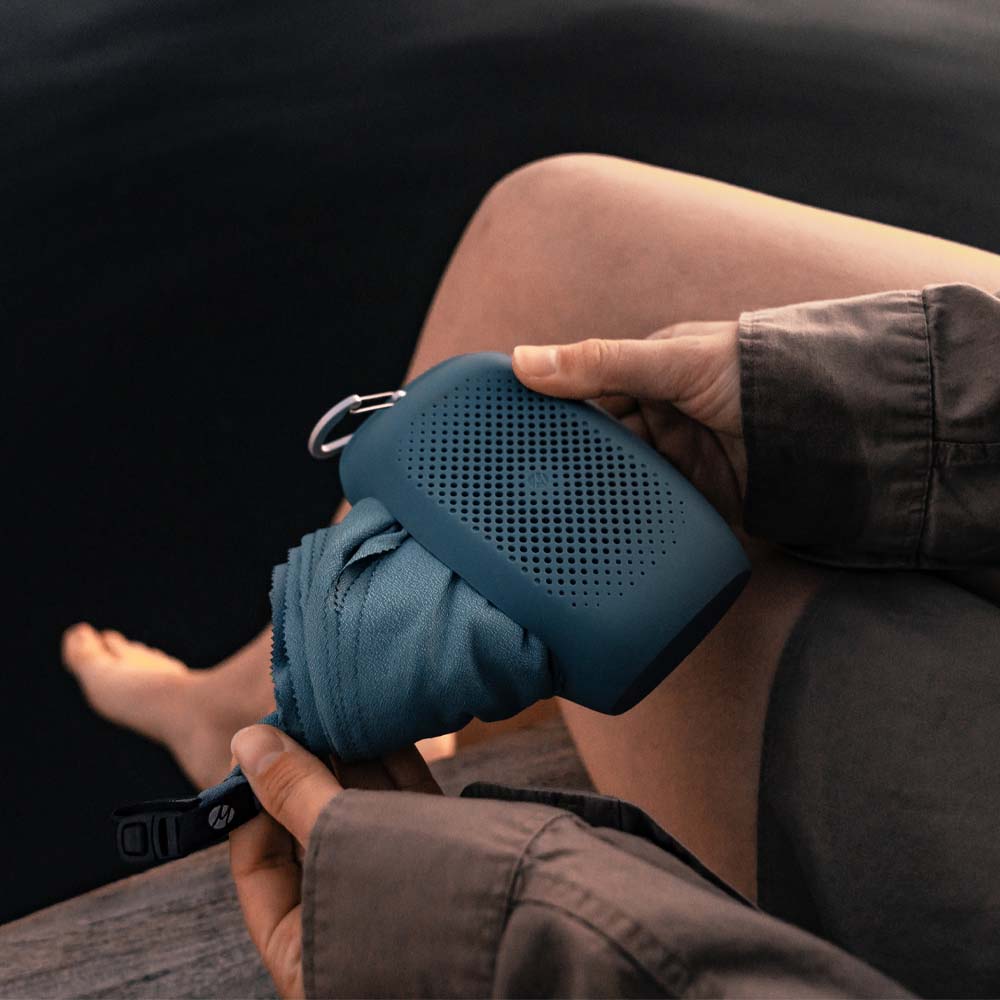
Best Travel Towel For Australia – Matador Packable Towel
Towels are essential backpacking gear as a lot of hostels don’t provide them or if they do, they may not really be all that clean. However don’t bring a ‘normal’ towel on your backpacking journeys, they are big and take up loads of room in your pack and they take ages to dry.
Travel pros like use micro-fibre dry towels that roll up into tiny, space saving proportions AND they dry unbelievably quick. Granted, they are not quite as comforting as a cotton towel but its a trade of that travellers need to make. A good micro-fibre travel towers is essential travel gear on any ultimate backpacking gear list.
Whilst the climate does vary across Australia and with the seasons, it is generally a warm country. Summer’s are VERY hot and even the Melbourne winters can be survived comfortably with nothing more than a jacket.
That said, there are some mountainous regions and these can get chilly and icy in winter – do you research before you head out. Oh and remember that if you are visiting Australia in December, that is summer in Oz and June is winter!
Want to save money on accommodation?

We got you. For reals.
We are going to tell you how to dress in Australia (but a hat with corks dangling from it would be fetching), instead our list will suggest some useful travel goodies.
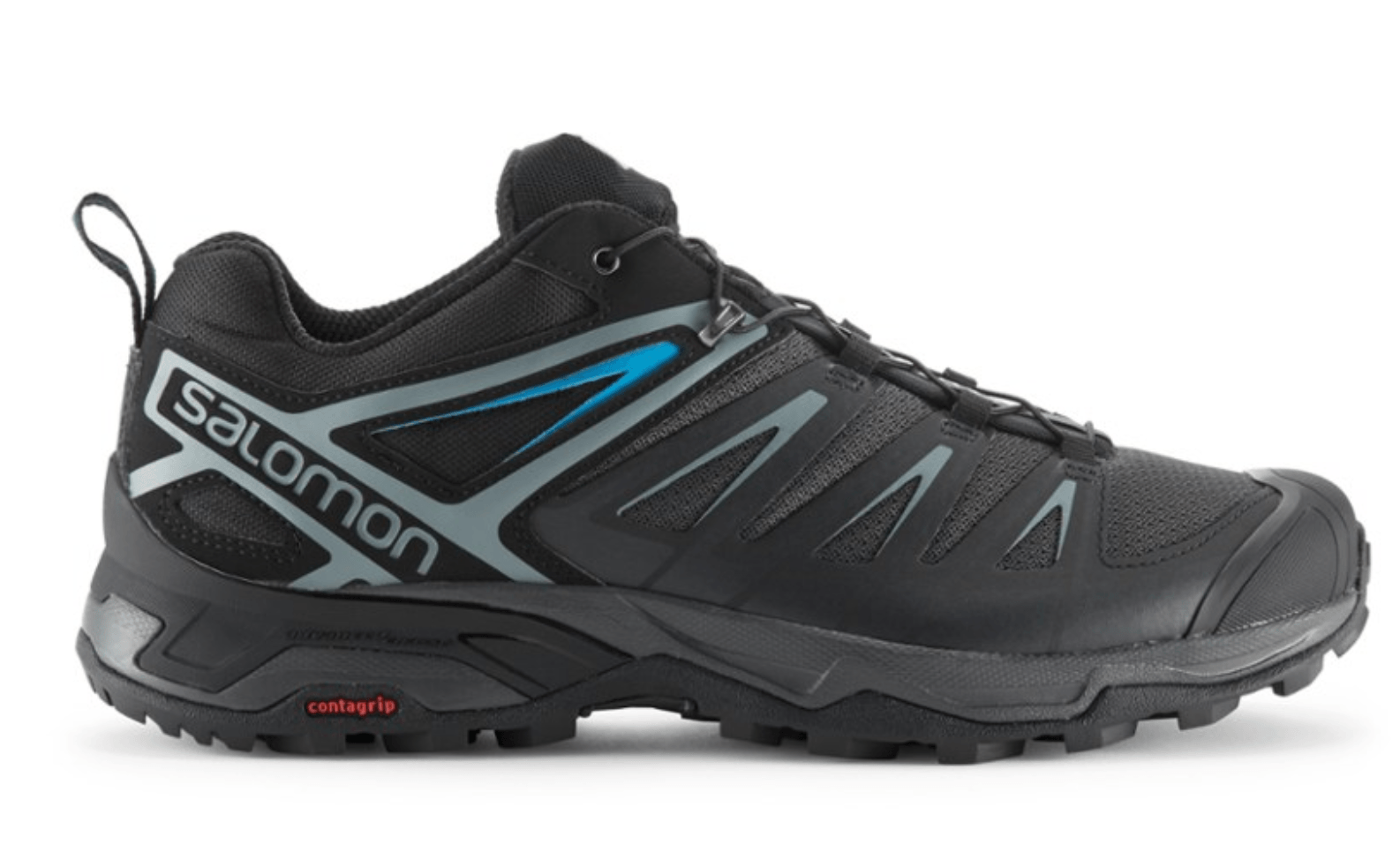
Salomon X Ultra 3 Low Aero
Most Auzzies I met in Europe and South America seemed to live in flip-flops (or thongs). However, that does not mean that this is suitable footwear for wearing down under. Your trip to Oz will probably involve a lot of walking and general adventure-stuff. Good shoes are a must.
I admit that most shoes that are also good for hiking are not the most attractive pieces of footwear. But they are some of the most comfortable and deliver good ankle support for a long day of going walkabout on your Australia adventure .
Check out the women’s Salomon X Ultra 3 Low Aero .
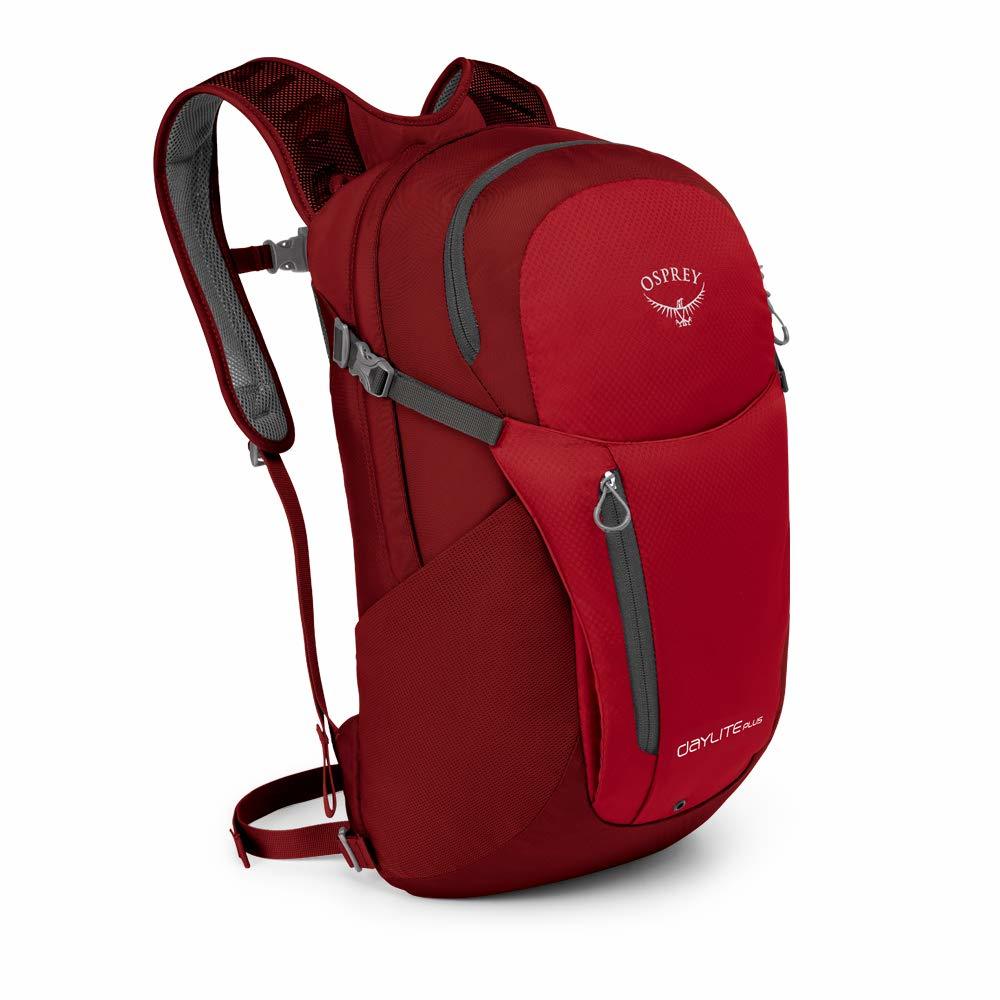
Osprey Daylite Plus
If you intend on doing any hiking or camping, then you shall need a daypack. They are great for carrying water, and clothes and for packing sandwiches for lunch. We love Osprey products and this daypack is our personal pick.
The Osprey Daylite Plus has a mesh-covered panel to keep your back cool and fresh by minimizing contact with the back of the pack itself and allowing air to get between you and the pack.
Check out our full review of the Osprey Daylite plus for more details.
Additionally, you can attach it to other Osprey packs in case you want to add more capacity and carry just one piece of luggage… but the reviews on this feature are mixed.
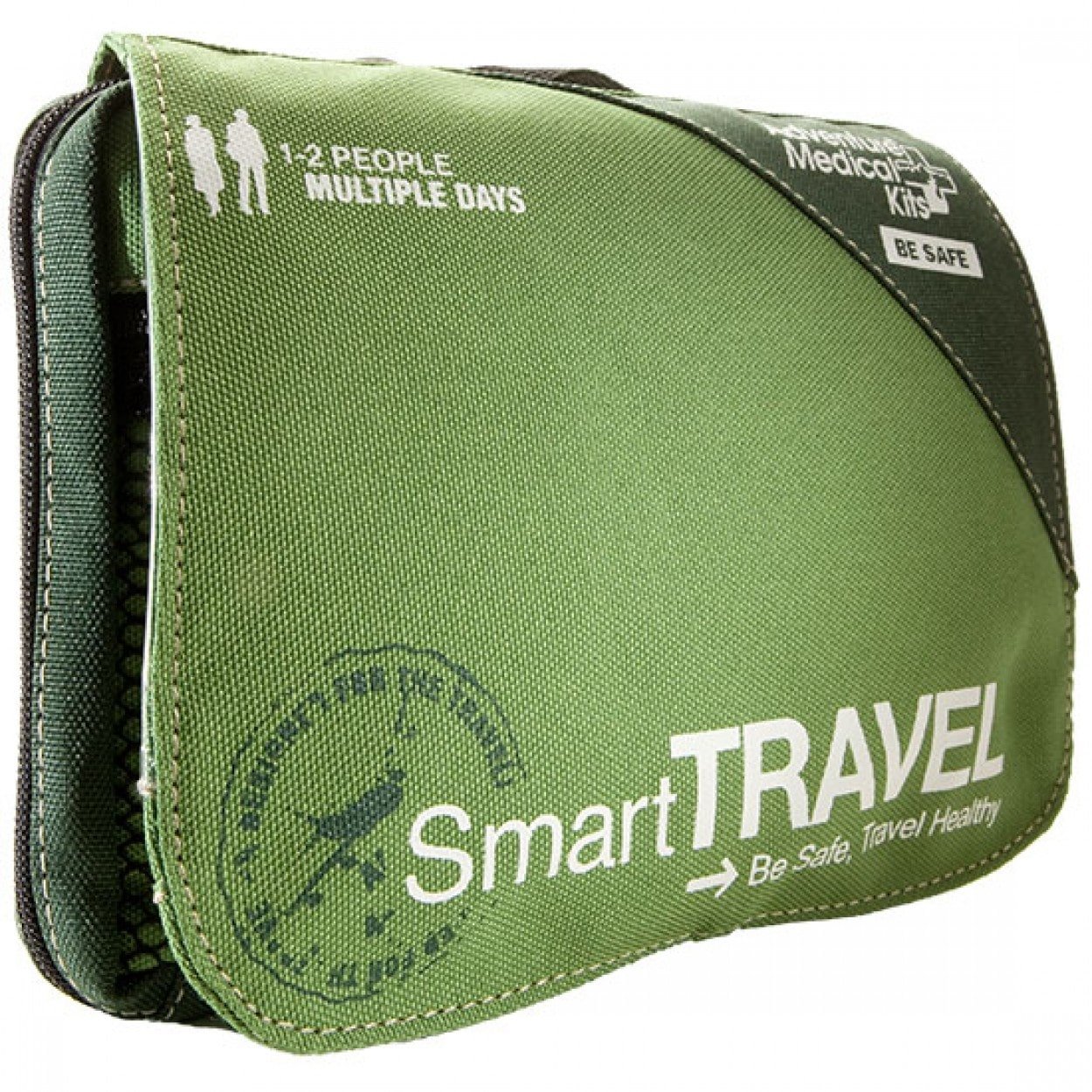
Travel First Aid Kit
You don’t need to tote around half a pharmacy, but a well-stocked first aid kit should be in all our backpacks. Stuff happens on the road and it’s inconvenient and embarrassing when you can’t manage small situations like a cut finger or hangover migraine.
You can tuck this lifesaver away in a forgotten pocket – and it’ll be there when you need it.
Tip: Add a few bits and pieces to the first aid kit after you purchase it, like extra headache medicine, any personal meds you need (like allergy pills), whatever you take to calm your stomach and a few more plasters.
Travel Insurance From World Nomads
ALWAYS sort out your backpacker insurance before your trip. There’s plenty to choose from in that department, but a good place to start is Safety Wing .
They offer month-to-month payments, no lock-in contracts, and require absolutely no itineraries: that’s the exact kind of insurance long-term travellers and digital nomads need.

SafetyWing is cheap, easy, and admin-free: just sign up lickety-split so you can get back to it!
Click the button below to learn more about SafetyWing’s setup or read our insider review for the full tasty scoop.
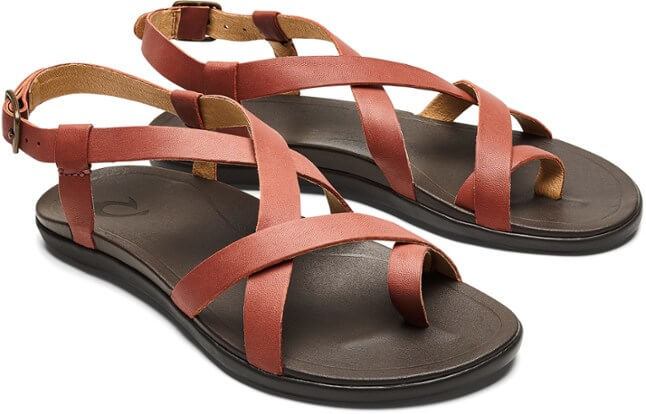
OluKai ‘Ohana Flip-Flops
Circling back to the footwear question, now we are going to talk about sandals. Whilst you do need good shoes for all that adventure stuff, a good pair of Jandals is perfect for the beach, for hanging out in the hostel and even for some city slicking.
When you visit Australia, your feet will end up tired and sweaty from those long days wearing shoes so do yourself a favor: pack sandals and give your feet some well-deserved cushion and fresh air. These Olukai flip flops are ultra-comfortable, well-made, and come in a variety of colors.
Check out the women’s OluKai ‘Ohana Flip-Flops .
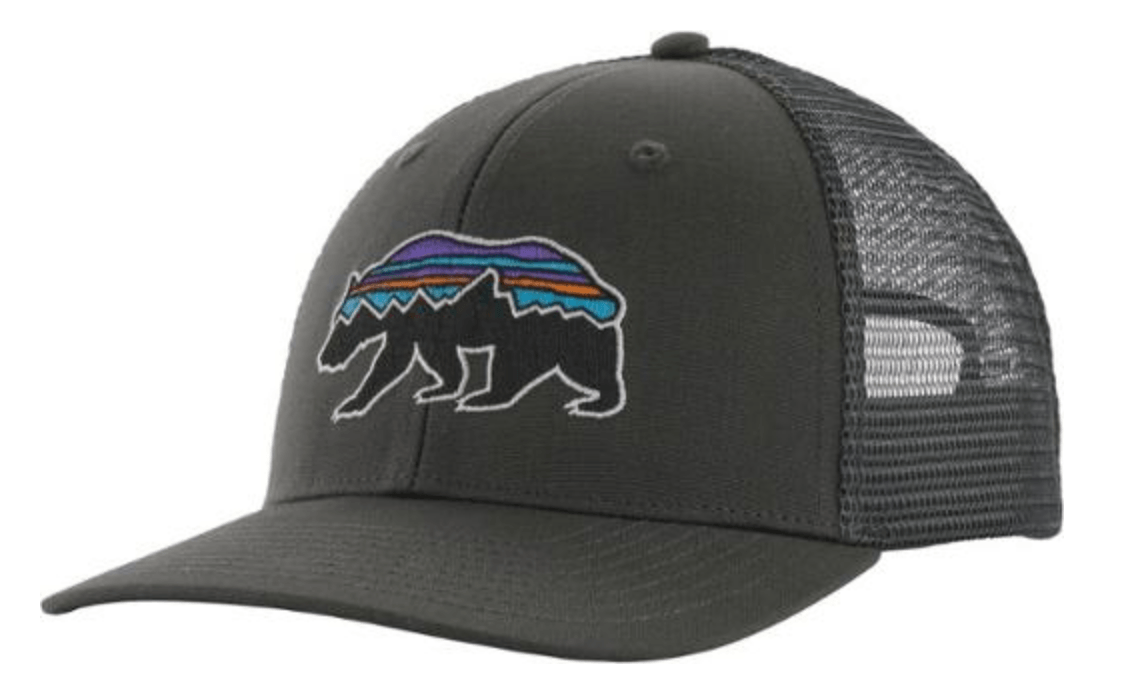
Patagonia Fitz Roy Trucker
As you should know by now, the sun in Australia is intense and you will undoubtedly be spending a lot of time outside. Having a hat on your Australia packing list is a good way to ensure your face is protected from the sun throughout the day.
Patagonia makes great hats. I have probably bought three or four of these over the last five years. Simple. Practical. Comfortable. That is what you are after especially if you are headed into Australia’s national parks .
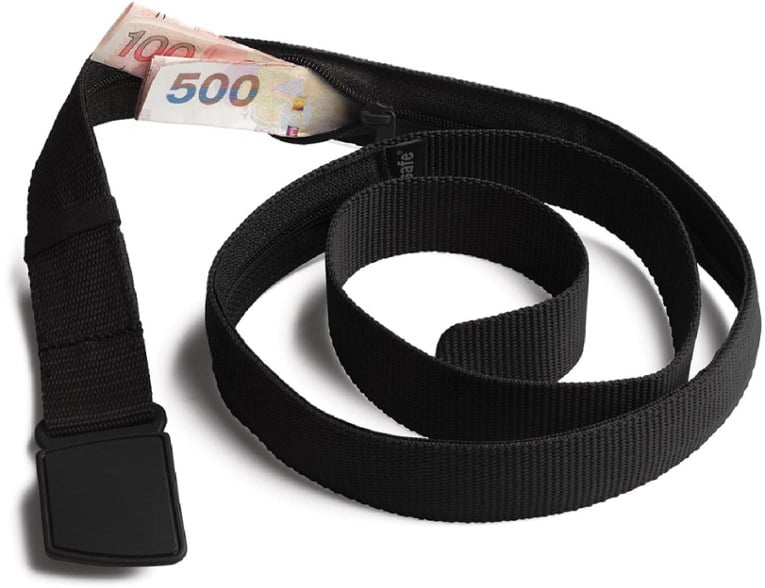
Money Belt By Pacsafe
Whilst Australia is not particularly dangerous (except for spiders crocodiles, snakes and boozed up bogans), crime can still happen and tourists are sometimes targeted.
Therefore it is always a good idea to use a money belt to hide your cash just in case something does go wrong.
If you get mugged by a Kangaroo, then at least it won’t get your cash!
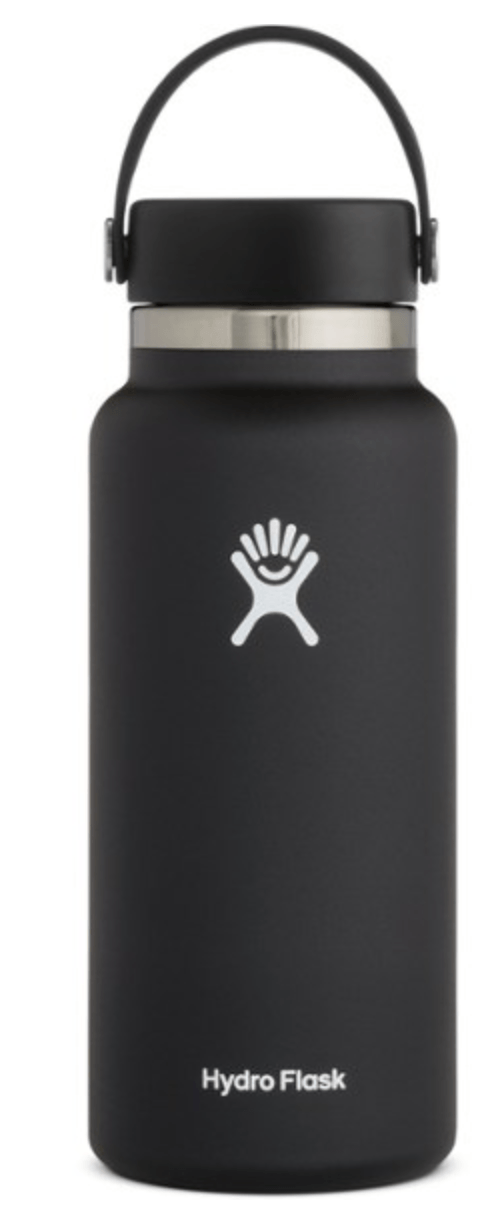
Hydroflask Vacuum Bottle 32 oz.
Packing a reusable water bottle is probably the best thing you can personally do to combat single-use plastic bottle use whilst traveling. There is simply zero need to buy plastic water bottles.
We love the Hydroflask Vacum Bottle for its quality and because it keeps cold water cold for many hours and vice versa for hot beverages. This bottle is the ideal water bottle to get not just for Australia trip but for daily use. Please don’t be that person buying plastic water bottles. We are all judging you…especially mother earth.
If you go with the Hydroflask, you’ll probably never need to buy another waterbottle again.
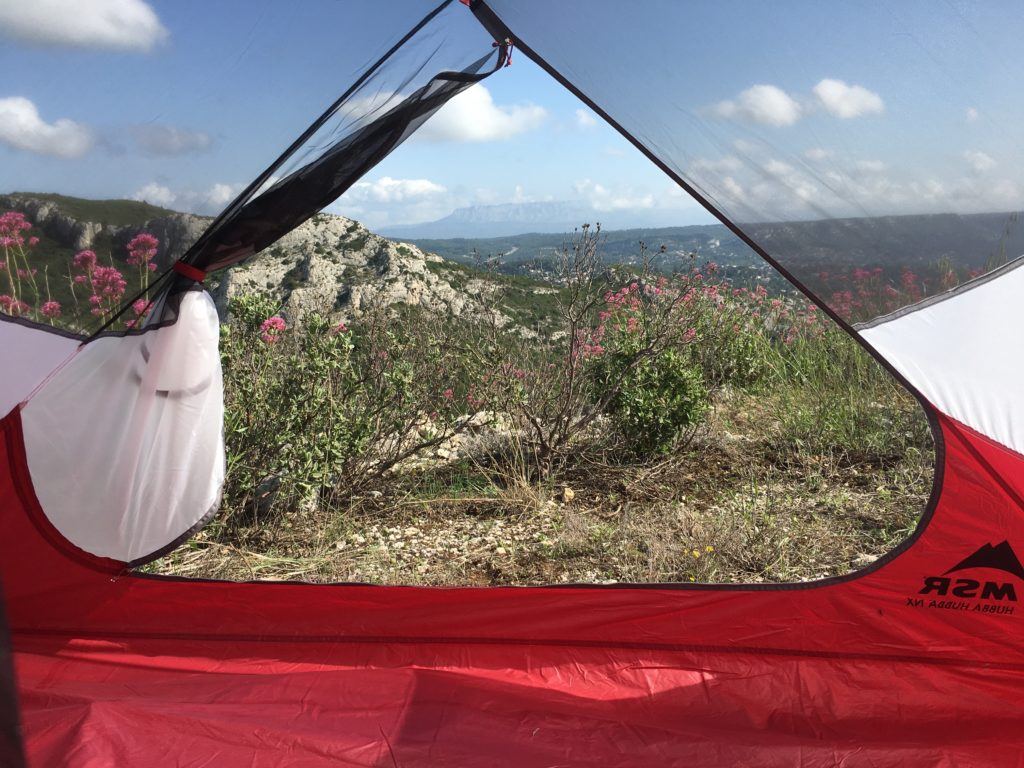
MSR Hubba Hubba 2p
There are loads of hostels in Australia but to be honest, they ain’t cheap. Furthermore, the country offers some amazing camping opportunities. Therefore, to save money and get the most from the Oz experience, pack a good tent.
This is one is a great all rounder. It’s not “ultralight” but is still pretty comfortable when packed into your backpack. As far as budget backpacking tents go, this is one of the best. It’s a happy medium between the ‘prepared for anything’ mode and the ‘I wanted to go for a trek so I bought this for 2000 rupees’ afterthought.
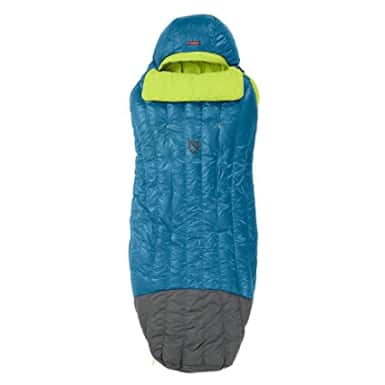
Nemo Disco 15
At some point in your trip to Australia, you will probably go camping or at the very least will spend a night at a hostel with insufficient bedding, or with dirty bedding that you would rather not lay in. Therefore bringing a sleeping bag is often a great investment.
There are a LOT of sleeping bags on the market today and we have tried a lot of them. The quality and standards varies and not always in correlation with the price – pricey does not always mean better. The Nemo Disco 15 is a great all rounder sleeping bag packing in warmth, durability and a reasonable price tag.
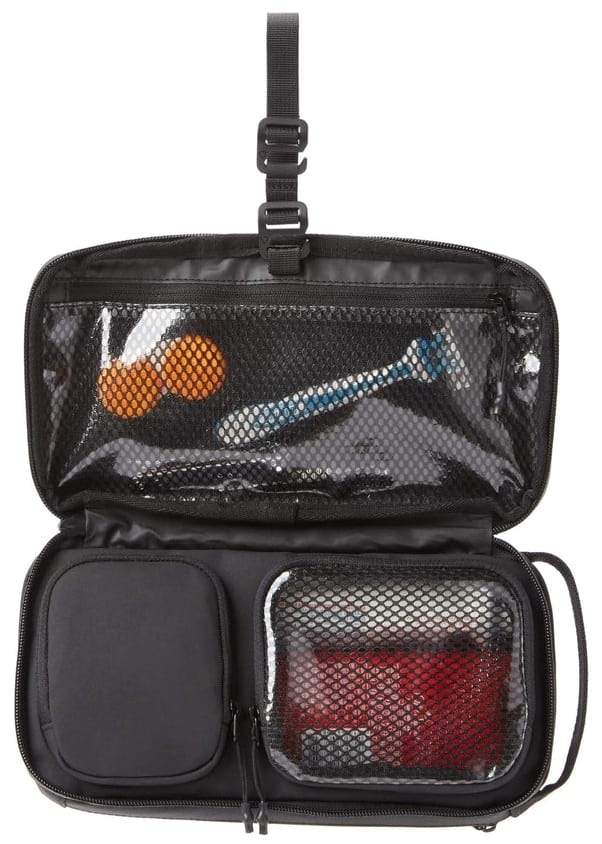
Hanging Toiletry Bag
Another backpacker/traveler favorite for staying organized is a hanging toiletry bag . It’s extremely helpful to have all of your accessories neatly gathered in one bag that you can hang for easy accessibility, especially when counter space isn’t plentiful or even available. A well-organized bag is worth having whether you’re tree whilst camping or a hook in the wall – it helps to have quick access to all your stuff.
Historically, I have been the guy who has my stuff all over the bathroom, so getting one of these things really changed the toiletry game for me. Plus they are not too expensive either. A no-brainer essential when packing for Australia.
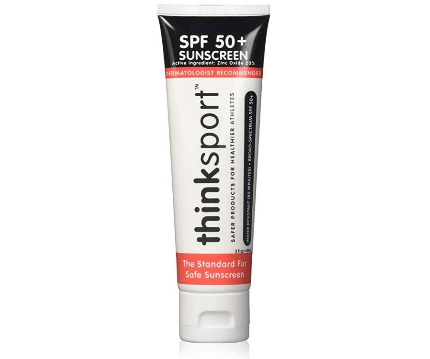
Suncream: Thinksport Safe SPF 50+
By now, all of us are as pasty as the driven snow from sheltering in place for the last six months. Am I right? This means we are even more vulnerable than usual to the sun’s fierce rays. Packing sunscreen for Australia may seem like a no brainer, but you would be amazed how many sun-burned cocktail-toting people you see wandering around.
Thinksport Safe SPF 50+ sunscreen gives folks strong sun protection in a non-oily formula that’s free of gluten, paraben, phthalates and biologically harmful chemicals.

Our GREATEST Travel Secrets…
Pop your email here & get the original Broke Backpacker Bible for FREE.
That’s it, mates! You now have all you need to know on what to pack for Australia with our handy-dandy Australia survival guide. You have a complete top-23 needs packing list, tips on what to wear in Australia in all its diversity, a breakdown of Aussie seasons and how to pack for the weather. Don’t forget our tips for women and men for their own packing lists – plus, what NOT to pack for Australia.
If you’re super excited to see just how much adventure you can pack into your experience in the Land Down Under, we don’t blame you! Be ready to wear your biggest smile, embrace life, and be open to making new memories and new friends. In other words – just do as the Aussies do!
Buy Us a Coffee !
A couple of you lovely people suggested we set up a tip jar for direct support as an alternative to booking through our links. So we created one!
You can now buy The Broke Backpacker a coffee . If you like and use our content to plan your trips, it’s a much appreciated way to show appreciation 🙂

Alexandria Zboyovski
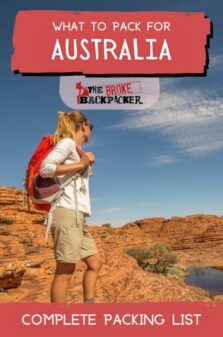
Share or save this post

Leave a Reply Cancel reply
Your email address will not be published. Required fields are marked *
Save my name, email, and website in this browser for the next time I comment.
Notify me of followup comments via e-mail.

Australia Recommends 2024

Travel Inspiration

G'day, the short film

Discover your Australia

Travel videos

Deals and offers

Australian Capital Territory

New South Wales

Northern Territory

South Australia

Western Australia

External Territories

The Whitsundays

Mornington Peninsula

Port Douglas

Ningaloo Reef

Airlie Beach

Kangaroo Island

Rottnest Island

Hamilton Island

Lord Howe Island

Tiwi Islands

Phillip Island

Bruny Island

Margaret River

Barossa Valley

The Grampians

Hunter Valley

Yarra Valley

McLaren Vale

Glass House Mountains

Alice Springs

Uluru and Kata Tjuta

The Kimberley

Flinders Ranges

Kakadu National Park

Eyre Peninsula

Karijini National Park

Great Barrier Reef

Blue Mountains

Daintree Rainforest

Great Ocean Road

Purnululu National Park

Cradle Mountain-Lake St Clair National Park

Litchfield National Park

Aboriginal experiences

Arts and culture

Festivals and events

Food and drink

Adventure and sports

Walks and hikes

Road trips and drives

Beaches and islands

Nature and national parks

Eco-friendly travel

Health and wellness

Family travel

Family destinations

Family road trips

Backpacking

Work and holiday

Beginner's guide

Accessible travel

Planning tips

Trip planner

Australian budget guide

Itinerary planner

Find a travel agent

Find accommodation

Find transport

Visitor information centres
Deals and travel packages

Visa and entry requirements FAQ

COVID-19 travel and entry advice

Customs and biosecurity

Working Holiday Maker visas

Facts about Australia

Experiences that will make you feel like an Aussie

People and culture

Health and safety FAQ

Cities, states & territories

Iconic places and attractions

When is the best time to visit Australia?

Seasonal travel

Events and festivals

School holidays

Public holidays
How to get to Australia's most iconic cities

How long do I need for my trip to Australia?

How to travel around Australia

Guide to driving in Australia

How to hire a car or campervan

How to plan a family road trip

How to plan an outback road trip

- Photographer

The ultimate packing list for Australia
Ready to pack your bags? Here’s everything you’ll need for your adventure.
We’ve curated a packing checklist for every vacation style, so all you have to do next is squeeze in your essentials, fly and begin your dream trip Down Under.
An outdoor adventure

The Hike Collective, Perth, Western Australia © Tourism Australia

Squeaky Windmill, West MacDonnell Ranges, Northern Territory © Tourism Australia

Emu Run Experience, West MacDonnell Ranges, Northern Territory © Tourism Australia
Run wild with our local wildlife and explore the best of Australia’s nature and national parks . Here are some must-pack items for your next exploration.
- Walking or hiking shoes to explore some of Australia's top hiking trails
- Headlamp to find epic stargazing spots
- Active wear for working up a sweat
- Day pack or backpack
- Thermal wine glass or sustainable coffee cup
- Aussie Snacks (we recommend Tim Tams, Caramello Koalas, Shapes, and Allen's lollies!)
- Wind or waterproof jacket depending on the weather
- Binoculars for spotting local wildlife
- First aid kit: if not travelling on a guided tour
Travel essentials
Pro tip: a lightweight picnic rug or blanket will take your trip photos from boring to bougie.
A summer escape

South Bank Precinct, Brisbane, Queensland © Tourism Australia

Sunset Bar, Cable Beach, Broome, Western Australia © Tourism Australia

Eco Beach, Broome, Western Australia © Tourism Australia
Make waves on your summer vacation in Australia . From a saltwater pool overlooking the ocean to snorkelling with a sea turtle , here’s what to bring on a sun seeker’s holiday.
- Wide brimmed hat (for safety and style)
- Beach towel (Turkish towels are a good lightweight option)
- Swimwear or bathing suits for diving in at the best swimming beaches
- Sarong, or cover-up for comfortable beach hopping
- Goggles if you plan to go snorkelling with local marine life
- Book to read when you're laying in the sun at one of Australia's best beaches
- Summer dresses and lightweight clothing
- Party outfits and heels to sip cocktails on a rooftop bar
- Rash vest to protect you from the sun - and board if you plan to go surfing !
- Light jumper, cardigan, or jacket for cool evening sunsets
- Sandals or thongs (flip flops) for easy walking
- Comfortable walking shoes for enjoying coastal walks
- Fold up umbrella for shaded picnics
Pro Tip: When discovering coral reefs don't forget your reef shoes and wet bag. Water shoes protect your feet from the hot sand, sharp rocks, and rough terrain you might encounter as you explore.
A snowy getaway

Perisher Blue, Snowy Mountains, New South Wales © Perisher Blue

Huon Valley, Tasmania © Samuel Shelley

Mount Hotham, Victoria © Visit Victoria
Winter in Australia means cosying up with a local drop in some of Australia’s best wine regions after playing in the winter snow , so here’s what you’ll need to bring to rug up and get out and about.
- Beanie, scarf and gloves to keep you cosy
- Thermal underwear and thick socks
- Waterproof and windproof jacket to keep you warm throughout your many winter adventures
- Long sleeve shirts and layers for days spent outdoors seeking winter wildlife events
- Thick jacket or jumper
- Dress pants and a button up for chilly nights out among Australia's eclectic food scene
- Tracksuit for exploring in comfort or curling up by the fire
- Ski clothing: that’s right, you can ski in Australia !
- Comfortable walking shoes if you're going on a walk or hike
- Closed in, waterproof shoes or boots
- Swimwear to swim with our spectacular marine life (swimming with humpbacks happens during their winter migration!)
Pro tip: The Aussie sun can pack a punch! Be sure to bring your sun safety essentials even if you're visiting in winter.
An eco-friendly vacation

The Village Markets, Gold Coast, Queensland © Tourism and Events Queensland

Bonza Bike Tours, The Rocks, New South Wales © Destination NSW

ELEVATE Sydney, Circular Quay, New South Wales © Destination NSW

One of the easiest ways to travel sustainably in Australia is to pack an eco-minded suitcase or backpack. Embark on your journey knowing your footprint here will be as light as a feather with these items in your suitcase.
- Reusable water bottle to stay hydrated
- Reusable coffee cup to keep your flat-white warm
- Canvas or reusable bag (single-use plastic bags are outlawed in most Australian states, so a compact shopping bag is an essential addition!)
- Reusable cutlery for irresistible street eats
- Reusable straw for sipping cocktails
- Bike shorts and walking shoes for cycling through city streets
- Solid shampoo and conditioner
- Lightweight towel to save on space
- Durable clothing and footwear for exploring Australia's most eco-friendly destinations
- A conscious travel mindset!
Pro tip: Australia's tap water is clean and safe to drink, so bringing a reusable water bottle will help your wallet and the environment.
A picture-perfect holiday

Australian Coastal Safaris, Port Lincoln, Eyre Peninsula, South Australia © Australian Coastal Safaris

Kangaroo, Cape Hillsborough National Park, Queensland © Matt Glastonbury/Tourism and Events Queensland

Snorkelling, Great Barrier Reef, Queensland © Darren Jew
If your aesthetic is sweeping landscapes, serene nature reserves , bustling cities, or artistic events , your grid will be packed full of new content in no time. Here’s what you’ll need for the perfect shot.
- Camera, GoPro, or drone to record your favourite Aussie experiences
- Underwater camera for diving adventures
- Chargers for all of your devices - portable power packs are great for when you're on the go
- Mini tripod to quietly capture photos of friendly wildlife
- Microphone for optimal sound quality
- Universal adaptor and powerboard
- Spare camera batteries
- Memory cards to avoid running low on space
- Bluetooth speaker for beachside tunes
- Laptop / tablet
- Headphones to play your travel soundtrack
- Selfie stick for snapping moments with Australia's top natural attractions
Pro tip: Australia uses voltage 230V 50Hz. If your home country does not use the same voltage, you’ll need to pack a voltage transformer, which adjusts the outlet power accordingly. Check the label on your electronic appliances to see which voltage is used.

Whether you're making a splash at some of Australia's best beaches or embarking on an outback journey , here's a checklist of essentials for any type of holiday.
- Documents: passport (VERY ESSENTIAL!), visa (if required), boarding pass, itinerary and travel insurance policy
- Travel wallet, keys and phone
- A change of clothes for the flight
- Hairbrush: to freshen up when you arrive
- Compression socks: recommended for long-haul flights
- Entertainment: book, journal and pen, magazine, cards, tablet, laptop and headphones
- Reusable bottle: just remember to empty it before you go through security!
- Toiletries: toothpaste, toothbrush, roll-on deodorant, moisturiser, lip balm and face wash (all under 100 mls or 3.4 ounces)
- Hand sanitiser and a face mask
- Neck pillow, eye mask and earplugs: you can never be too comfortable, right?
- Medication (if required)
Pro tip: Wearing comfortable layers like a big cosy jumper on your flight will help you stay warm while in the air and save space in your luggage. Strip down to your lighter layers when you land in sunny Australia!
- Packing cubes
- Small backpack
- Sun safe kit, including sunglasses and a hat
- Sleepwear and underwear
- Toothbrush and toothpaste
- Makeup and makeup remover
- Skincare: moisturiser, face wash and serums
- Perfumes, aftershave, or cologne
- Sunscreen: we recommend reef-friendly, SPF 50
- After sun / Aloe vera
- Insect repellent
- Medications
- Reusable face cloth and towel
- Shampoo, conditioner and soap: most of Australia’s accommodations will provide these, but it’s always worth double-checking
- Hair dryer, curler, or straightener (if not staying at hotels)
Pro tip: Sunscreen in Australia is high quality and affordable, so you can save some room in your bag by stocking up when you arrive.
More articles like this

Acknowledgement of Country

We acknowledge the Traditional Aboriginal and Torres Strait Islander Owners of the land, sea and waters of the Australian continent, and recognise their custodianship of culture and Country for over 60,000 years.
- International (English)
- New Zealand (English)
- United States (English)
- Canada (English)
- India (English)
- Malaysia (English)
- Singapore (English)
- Indonesia (Bahasa Indonesia)
- Deutschland (Deutsch)
- France (Français)
- Italia (Italiano)
- 中国大陆 (简体中文)
*Product Disclaimer: Tourism Australia is not the owner, operator, advertiser or promoter of the listed products and services. Information on listed products and services, including Covid-safe accreditations, are provided by the third-party operator on their website or as published on Australian Tourism Data Warehouse where applicable. Rates are indicative based on the minimum and maximum available prices of products and services. Please visit the operator’s website for further information. All prices quoted are in Australian dollars (AUD). Tourism Australia makes no representations whatsoever about any other websites which you may access through its websites such as australia.com. Some websites which are linked to the Tourism Australia website are independent from Tourism Australia and are not under the control of Tourism Australia. Tourism Australia does not endorse or accept any responsibility for the use of websites which are owned or operated by third parties and makes no representation or warranty in relation to the standard, class or fitness for purpose of any services, nor does it endorse or in any respect warrant any products or services by virtue of any information, material or content linked from or to this site.

All Destinations , Australasia , Australia , Packing Lists
Your complete australia packing list: for any state and climate.

G’day! Are you venturing to Australia sometime soon and are confused about what to bring? I’m here to answer all of your woes with this Australia packing list. Whether you’re hiking in Tasmania or tanning in Queensland, this list of what to take to Australia can be fully customisable for you.
Firstly, I recommend some essential documents, electronics and toiletries to take with you and then discuss the issue of which clothes to bring; here you can tailor make your own packing list for Australia depending on which part of the country and during which season you’re visiting. Nifty, huh?
Australia Packing List: Documents and Essentials

You’ll no doubt remember all of this when you’re planning what to pack for Australia, but I find it so handy to have a checklist! Click the links to see products that I use and recommend.
- Passport (make sure you sort your e-visa before travelling to Australia!)
- Print outs – of your travel insurance details, flight information, hotel/ hostel information, copy of your e-visa acceptance email, a map of the city that you are staying in
- Boarding pass if you’ve checked in online
- A nice practical plastic wallet to keep said print outs in
- Australian dollars
- A travel card to top up money on – make sure you have at least 2 ways to access money
- Notepad and pen to jot down any details (most people use notes on their phone, I’m still somewhat stuck in the 90s and like to use a notepad still)
Australia Packing List: Electronics
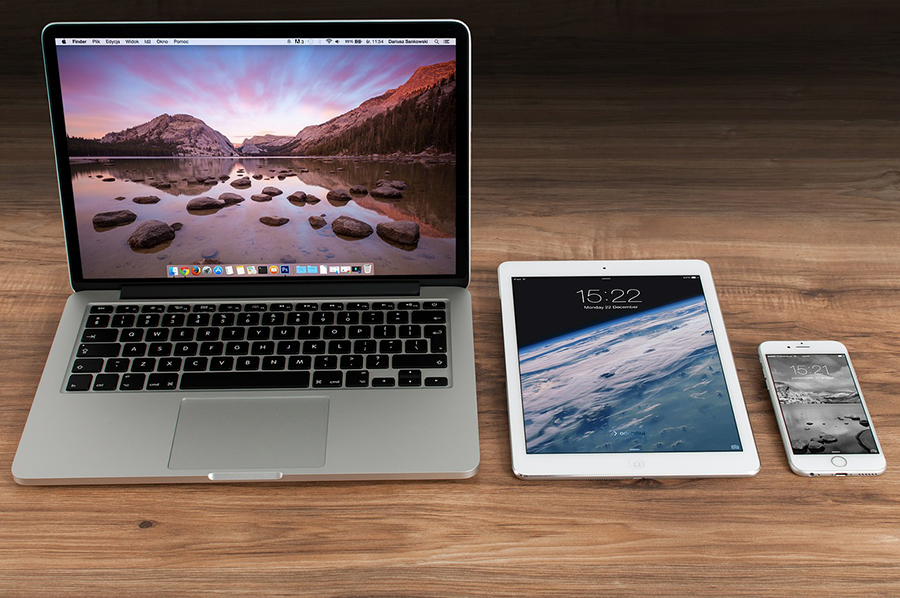
This of course varies from person to person, and depends what you’ll be doing while on your jollies in Australia, but here’s some ideas of electronic items to bring to Australia. All the products that I use and would recommend are clickable, so you can purchase them right away.
- An unblocked smartphone so you can put an Aussie sim in it (WiFi isn’t great in Australia so it’s a good idea to have data). I love the BLU Vivo .
- A GoPro so you can film all of your awesome adventures. I use and recommend the GoPro Hero 5 and a GoPro accessories bundle .
- A camera that takes high quality pics – you wouldn’t believe some of the landscapes here and you’ll definitely want one of the best cameras for travel ! The one I use is the Fuji x-a3 and don’t forget this memory card – and it can be transported in this pouch .
- A kindle – they work so much better than carrying around endless books! I use this lightweight 6″ kindle .
- A laptop – not everyone’s bag, but if you’re on a working holiday visa in Australia, you might want to bring one of the best laptops for travel . I use the MacBook Air – and make sure you have a protective case . If you don’t want to carry a laptop everywhere, you could also think about bringing an Ipad .
- A power bank to charge your appliances with. One with lots of power to enable multiple charges is great – like this one which can charge a phone up to six times.
- A universal adaptor so you can use all of your electronics in Australia and worldwide. Choose one like this which has 2 USB sockets as well as a plug socket.
Australia Packing List: Books
Here’s some great Australia related books that are great to read on the plane over!
- Lonely Planet Australia
- Down Under: Travels in A Sunburnt Country by Bill Bryson
- Follow the Rabbit-Proof Fence by Doris Pilkington Garimara
Australia Packing List: Toiletries & Medicines
Of course, this varies depending on tastes and necessities. You can buy anything you forget in Australia (although for many things it is more expensive) but some of my essentials are (click on the links to purchase each product):
- Shampoo – I use the LUSH bars as they’re vegan and carrying one of these is a lot easier than transporting heavy bottles which may explode!
- Conditioner – LUSH do conditioner bars too, but I find them a lot harder to use than the shampoo bars.
- Moisturiser
- Toothbrush – these bamboo ones are a lot more eco-friendly than plastic ones!
- Shower gel or LUSH soap
- Make-up – I go as minimalistic as possible (ie. just mascara and eyebrow pencil normally!) You’ll likely only want a full face of make-up if you’re spending time in the cities or going out clubbing, so pack accordingly.
- Suncream – lots of it, the sun in Australia is fierce
- Mosquito repellent – especially if you’re in the tropics (but there’s mozzies in the south too!)
- Clippers/ nail scissors
- Paracetemol
- Tiger balm – it works wonders on headaches and itchy mosquito bites
- Earplugs – an essential if you’re sleeping in hostel dorms
- Eyemask – ditto
- Senekot if you often get an upset tummy when travelling
- Mooncup for the female travelers – they’re a lifesaver when travelling on your period
- Eco-friendly bamboo towel
Australia Packing List: Travel Items
These items will make travelling that little bit easier. Click through to purchase each item.
- Water-to-go bottle – tap water is safe in most places in Australia, but in more rural areas it is recommended that you treat before drinking. This water-to-go bottle takes care of that for you!
- Collapsible Tupperware – this is ideal for people who want to cook in hostels and take food on the go or those who are road tripping Australia.
- Head torch – this is an essential camping item but is so handy in hostel dorm rooms as well!
- Pack of cards – perfect for long journeys!
Australia Packing List: Clothes
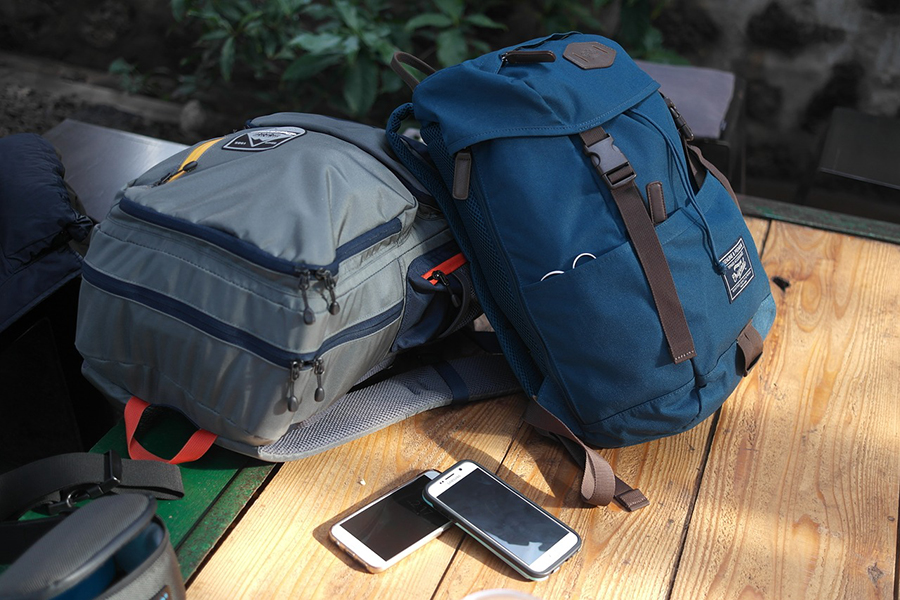
All hostels and some hotels in Australia have laundry facilities, and there are launderettes aplenty in the land down under, so I’d advise only taking one week’s worth of clothes with you. Some staples that you will want to remember are:
- Bikini/ swimsuit/ trunks
- Beach towel/ sarong
- Flip flops (they call them thongs in Australia!)
Hiking Gear
- Hiking boots
- Waterproof jacket
- Hiking trousers or hiking leggings
- Thick socks
- Running leggings or shorts
- Sports bra for girls
- Trainers/ running shoes
- Loose top for exercise
Formal Wear
- Dress/ skirt/ smart trousers
- Shirts, tops
- Smart shoes
Casual Wear
- Jeans/ shorts/ skirt
- Casual shoes
Lounge Wear
- Tracksuit bottoms
- Hippie pants
Underwear & Pyjamas
- Set of Pyjamas
What to wear in Different Climates
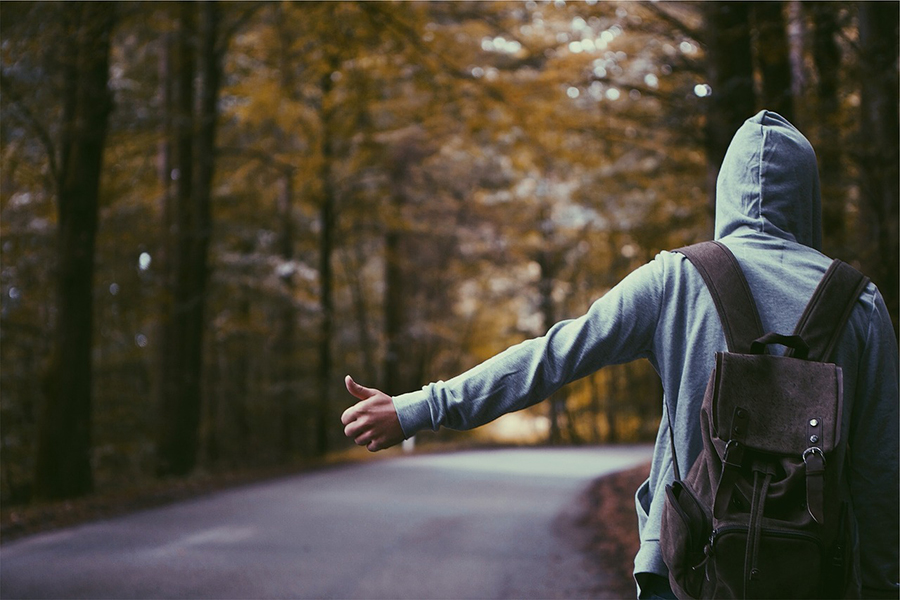
Of course, whether you take trousers or shorts or pack one or three hoodies will, in many cases, depend on the weather.
There are some common misconceptions about Australia, one being that it’s always hot. If you’re talking about the Northern Territory, or right at the tip top of Queensland then you’re right: the temperature verges between hot and ridiculously hot.
But, further south, the temperatures can be a lot more variable. There are even ski resorts in New South Wales and Victoria and in Tasmania, it once snowed in December (that’s summer in Australia!).
So your packing list depends a lot on what area you’re going to, and what season you’re visiting in. Here’s a few pointers:
Northern Territory
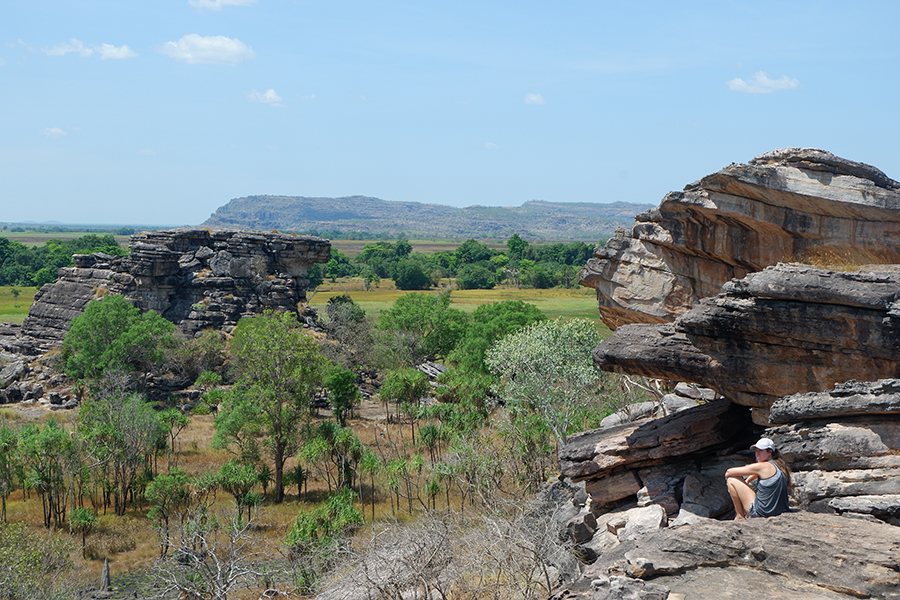
Darwin and the Top End
Summer : this is the wet season so pack a waterproof mac and waterproof shoes. It’s not the best time to visit this area as getting around is tough and many attractions are closed; hiking isn’t recommended nearly everywhere in the Top End during this period. But if you are going to be outside for lengthy periods of time, waterproof pants are probably essential too. Bear in mind that temperatures are often in the late 30s, sometimes topping 40, so breathable clothes are essential as well.
Winter : this word doesn’t exist in Darwin and the Top End – while the rest of the country experiences cooler temperatures, Darwin enjoys a lush wet season with temperatures normally in the low 30s (although increasing in September and October as the build-up starts). So pack your shorts, t-shirts, thongs (that’s the Australian word for flip flops!) and prepare to not experience a cloud in the sky.
Alice Springs and the Red Centre
Summer : it’s nearly always dry in Alice (apart from when I was there…) but in the summer, it is hot . So pack your summeriest clothes and prepare to be sizzled. During the evenings, it does get considerably cooler (although is often still t-shirt weather in the summer months), so take some longer clothes if you are prone to the cold.
Winter : it stays hot during the days, although sometimes dips to the teens – so bring some long clothes for the cooler days. It gets bitterly cold at night – often below freezing – as you are literally in the middle of the desert. Take some warm clothes for the evenings, and if you are camping, thermals might not be a bad idea!
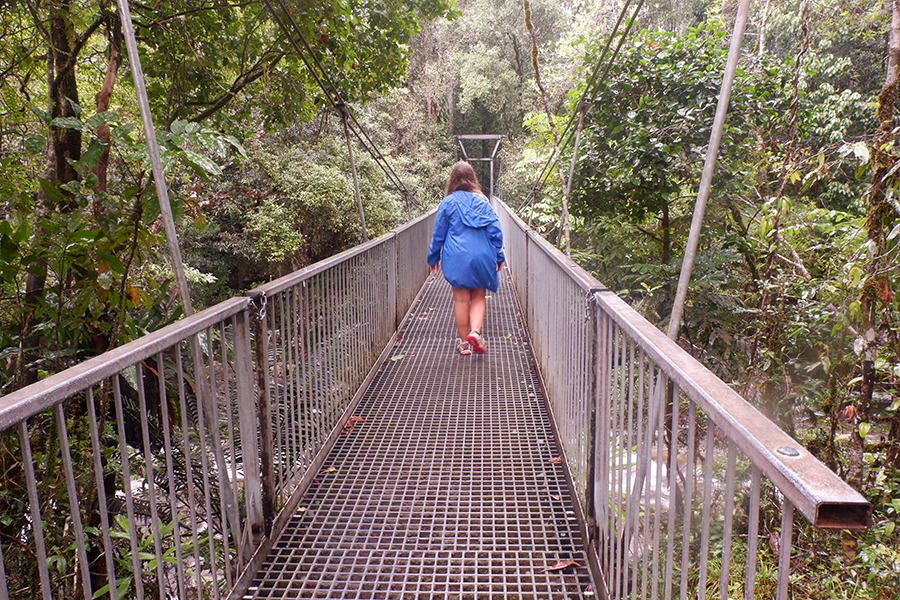
Tropical North Queensland
Summer : North Queensland enjoys a similar climate to Darwin, although the seasons aren’t quite as dramatic. You can still get out and explore most of the attractions in the wet season – but be aware that it does rain more. So take your summer clothes as well as rain gear, and if you want to do any hikes in the Daintree or elsewhere, think about some serious waterproof gear.
Winter : the temperatures stay pretty warm in Cairns and surrounds, and although rain can happen, it is generally quite dry. Pack your summer clothes, and bring your mac just incase – you are visiting a rain forest in the wet tropics, after all! 😉
Central and South Queensland
Summer : Central and South Queensland scorch in the summer, with temperatures often between 30-40 degrees. It does rain slightly more in the summer, so if you’re going to be doing lots of outside activities, remember a waterproof coat along with your summer gear.
Winter : it rarely gets too cold in Central and South Queensland, so you’ll most likely have the chance to wear your summer wardrobe, but take some warmer clothes just in case. It gets cold at night too – so if you’re camping, pack some layers and a warm sleeping bag!
New South Wales

Northern New South Wales
Summer : I lived in a tent in Byron Bay for 5 months in Spring/ Summer 2016/17 and let me tell you, it was warm . You won’t be needing any long trousers of any description! There are, however, lots of thunderstorms around this time (which is an interesting phenomenon when you’re living in a tent!) so bring your waterproofs.
Winter : the days can be sunny and warm, or slightly on the chilly side, so it’s best to pack both summer and warmer clothes – and if you’re camping don’t forget your layers, it seriously gets so cold at night here! It can rain, so pack a mac too.
Southern New South Wales and Canberra
Summer : the weather is generally pretty warm, with the odd cool day. Take shorts, t-shirts etc but also an emergency pair of trousers and a hoodie – just in case. Again, it can get wet, bring yer mac.
Winter : as you approach cooler climates, it can get very cold here in the winter. Sydney always stays fairly mild, but in the mountains there can be a lot of snow – so much that there are even a couple of ski resorts! So pack accordingly depending on where you’re going – you’ll need trousers, hoodies and maybe even thermals.

Summer : there’s not much point in separating Victoria into seasons, because its capital, Melbourne, is perhaps most well known for having ‘4 seasons in one day’. The summers can be over 40 degrees, or they can be 15, cold and rainy. So pack for any eventuality – shorts, t-shirts, trousers and hoodies are all great ideas. And don’t forget waterproofs!
Winter : to be honest, winter weather in Victoria is pretty miserable. If you are visiting at this time of year, bring plenty of waterproof clothes, warm items and winter woolies.
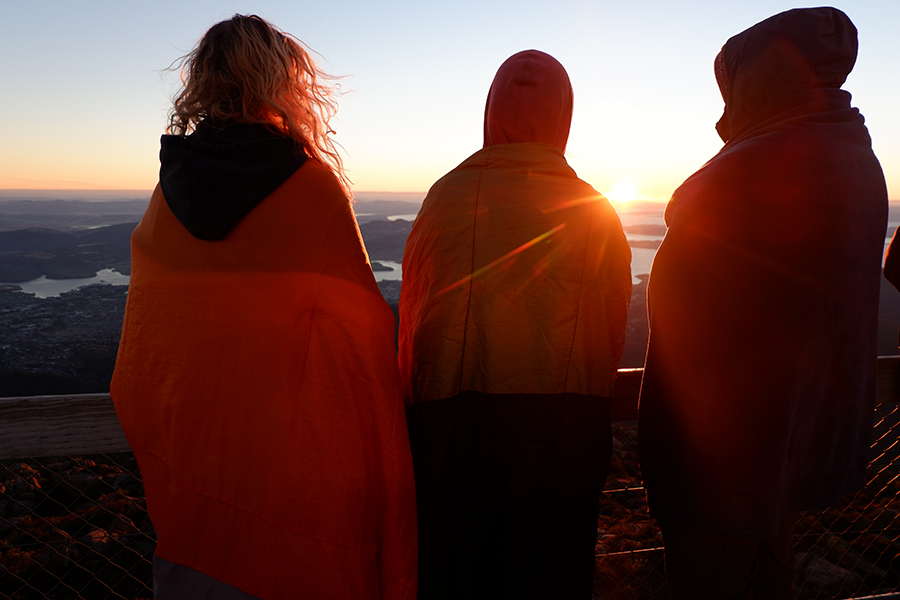
Summer : summers in Tassie rarely get to the heat of the mainland, but they can be quite pleasant, with temperatures in the late 20s. However, they can also be chilly – as I mentioned, it once snowed in December! So pack for any weather and make sure you have plenty of warm clothes if you’re camping. You’ll most likely be hiking in Tasmania, so bring waterproof gear.
Winter : I hope you don’t mind the cold! Tassie in winter is very chilly and pretty rainy; not ideal camping weather! But if you are visiting then, take layers and waterproofs. And don’t forget thick socks!
South Australia
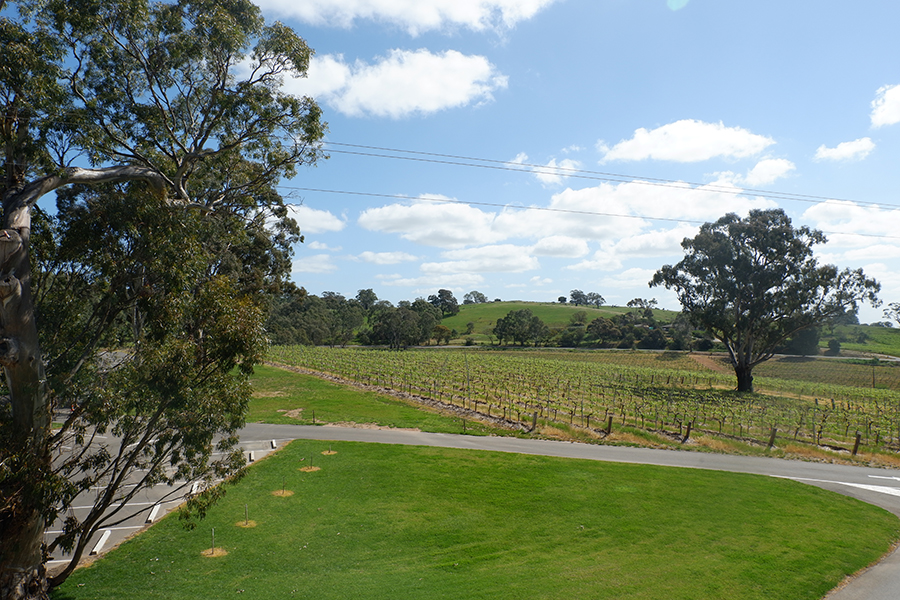
Adelaide and Surrounds
Summer : Adelaide enjoys a Mediterranean climate, with hot, dry summers. Although the temperature can vary, it’s normally pretty stable in the 30s. Pack summer gear and an emergency pair of warm clothes just in case.
Winter : Adelaide is Australia’s driest capital city, so you shouldn’t have too much rain – although of course it can and does, so pack a mac just in case. Warm clothes are a good idea for visiting Adelaide at this time of year, as it does get a bit chilly.
The Outback
Summer : it gets so hot in the South Australian outback in the summer that people in Coober Pedy live underground to escape the heat. No joke. It can reach up to 50 degrees celcius. Take the bare minimum of clothes possible and think about investing in a mobile air conditioning unit to cool down. It gets marginally cooler at nights, but not that much – you might need a pair of trackies if you’re camping.
Winter : temperatures range between 10-30 degrees, so take both summer and warmer clothes. If you’re camping, take plenty of layers for the outback nights. You’re unlikely to see rain, and if it you do it won’t be a huge amount.
Western Australia
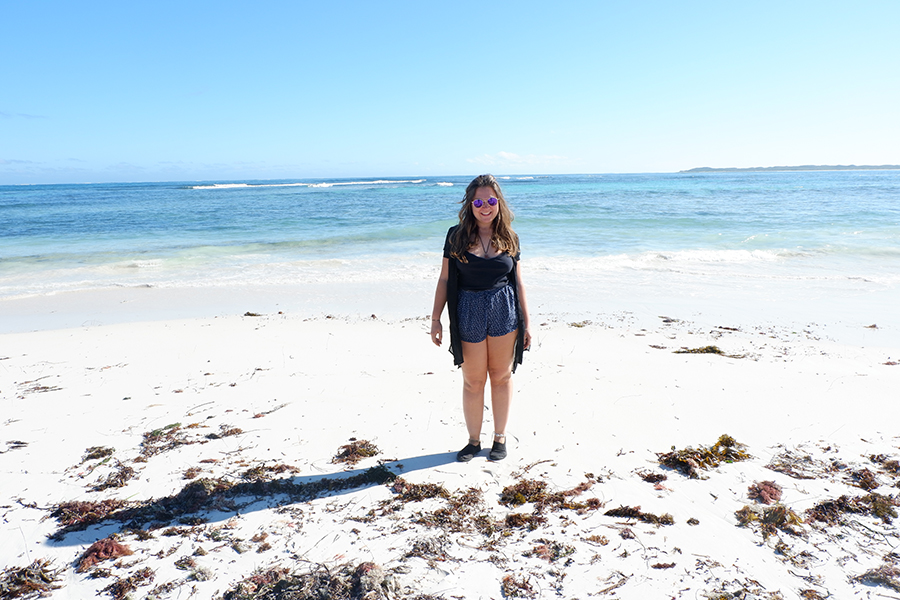
South Western Australia
Summer : there’s nowhere quite like Perth in the summertime. It’s Australia’s sunniest city and basks in idyllic low-30s temperatures, with zero rain. Take your summeriest clothes and prepare for a good time! If you’re heading to the outback, you’ll be graced with soaring temps, so pack accordingly.
Winter : it can get cold and rainy in Perth in the winter, so take some warmer clothes and waterproofs. That being said, you might luck out and get some nice days – I was there for one of the warmest Aprils on record, and even when I left Perth in June it was over 20 degrees.
Central – the Pilbara Region
Summer : It gets pretty scorching in the summertime in the centre of Western Australia – by the coast it can be just about bearable, but if you’re going inland you’re in for one hell of a roast.
Winter : winter is the rainy time of year – although it doesn’t rain a huge amount – so bring a mac and other waterproofs if you’re hiking. Temperatures are generally still pretty warm – in the 20s – so summer clothes should suffice, but bring some longer clothes for cooler days. If you’re camping, take some thick layers – it gets really cold at night here.
North – The Kimberley Region
Summer : similarly to Darwin, the summer here is the wet season and it’s not recommended to visit during this time, as towns such as Broome often get cut off due to flooding. If you must visit then, take summery clothes and waterproofs – and bear in mind that sometimes the minimum night temperature is 30 degrees, so bring the airiest pair of pyjamas you have!
Winter : winter is a great time to visit north-western Australia! All the most beautiful spots of the amazing Kimberley region are accessible, and you’re nearly guaranteed blue skies every day. Summer clothes are all you’ll need for the day time – but it can get very cold at night. If you’re camping, take layers.
That concludes our Australia packing list – and whether you’re heading there for a week, a month or a year, there should be everything you need here!
If you’ve found this post useful, please share it or follow me on Facebook !
Disclaimer: some of the links above are affiliate links . If you make a purchase using one of these links, I may make a small commission, at no extra cost to you . This is one of the ways I fund this blog!
Pin me if you’re happy…

4 thoughts on “ Your Complete Australia Packing List: For Any State and Climate ”
I am flying to Sydney during November for 2 weeks vacation. This will be my first time travelling abroad. I will be living with friends in NSW. Would appreciate some advice in what to pack. Thanks. Heidi
Hi Heidi, you can check out my Australia packing list here! https://clairesfootsteps.com/australia-packing-list/
Going to Kangaroo Island visiting my son on the 3rd of september this year. I think it will be spring. Is it the same weather as Adelaide? I will be staying for four weeks. I’ve never been so far in my life, only Europe so i am quite excited ?
Great list! Very helpful for packing
Comments are closed.
- New Zealand
- The Philippines
- The Netherlands
- United Kingdom
- Inspiration
- Overland Itineraries
- Packing Lists
- Travel Tips
- Working Abroad
- Accomodation Guides
- Overland Travel
- Preserving Cultures
- Protecting Animals
- Living Abroad

The Must-Have Essentials For Travelling Australia Full-Time
If you’ve made it here and you’re planning your lap of Australia or a long road trip and you want to make sure you’ve got all the must-have gear – you’re in the right place!
We have provided a guide from our own experience for all the essentials for travelling Australia full-time. Plus some tips and tricks we’ve learned along the way to make life ‘easier’ while living in our camper trailer.
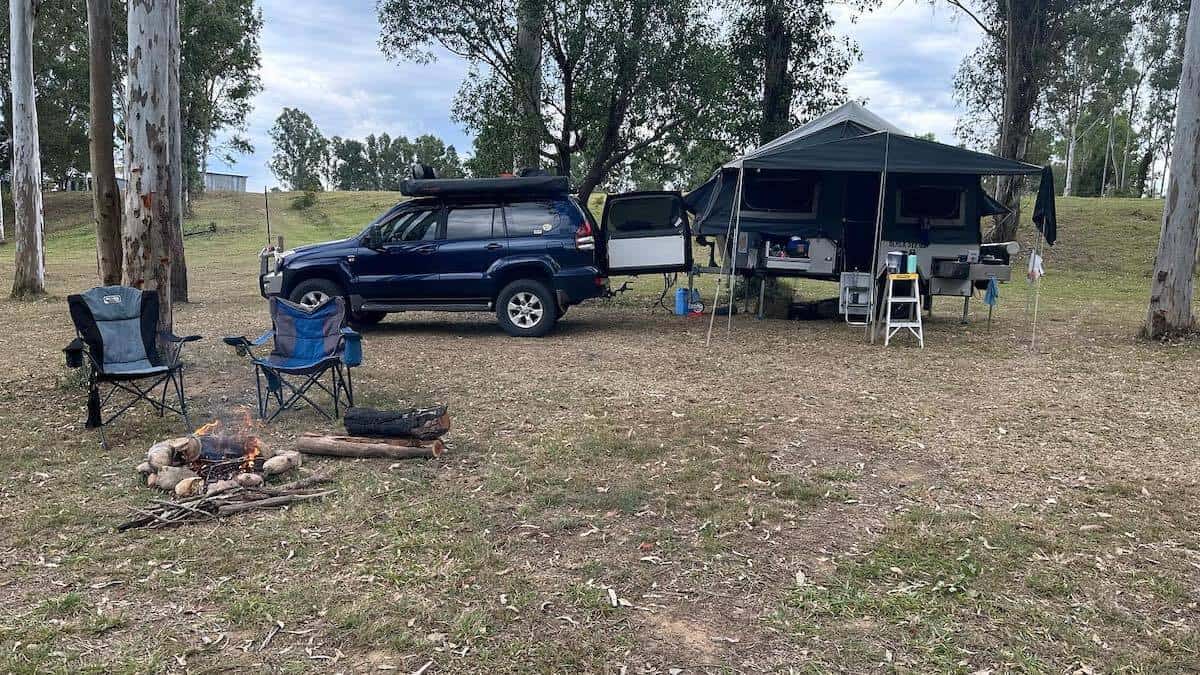
Before we get into it, let’s start off with some of the basic essential items for full-time travel. You will find our comprehensive list of essentials for travelling Australia full-time further down if you want to skip ahead, but first some very important tips:
The Basic Essential Items For Full-Time Travel In Australia
Some of these items might be expected, however, we wanted to provide a couple of the basics before we get into the bigger essential items. There is A LOT to research before embarking in full-time travel in Australia, so you may slip past some of these:
- A decent sunscreen (we won’t use anything else but this one as it feels more like a moisturiser over a greasy sunscreen)
- A wide-brimmed hat that fits well (there’s nothing worse than chasing your hat every 5 minutes – or being sunburnt every day)
- A comfortable chair (you will spend more time in your chair than you think – down days are essential for not experiencing burnout and sometimes the weather will decide you won’t be leaving camp for the day)
- Spare thongs – Nick’s already been through 4 pairs (all within 2 months) and I’m almost finished with my second pair. You’ll use these more often than you think and yes, we are talking shoes, not underwear.
- Insect repellant – this is 100% a part of the essential items to survive full-time travel. We originally used Bushman’s but don’t enjoy the strong smell and have recently been making our own using 1 part Dettol, baby oil and eucalyptus oil and IT WORKS!!
- An expectation that things will go wrong but it will be okay. In this lifestyle, you will have to adapt to change a lot
- Get ready to be the captain of your own ship – this adventure will keep you on your toes with the constant change of scenery and experiences that you will talk about for the rest of your life!
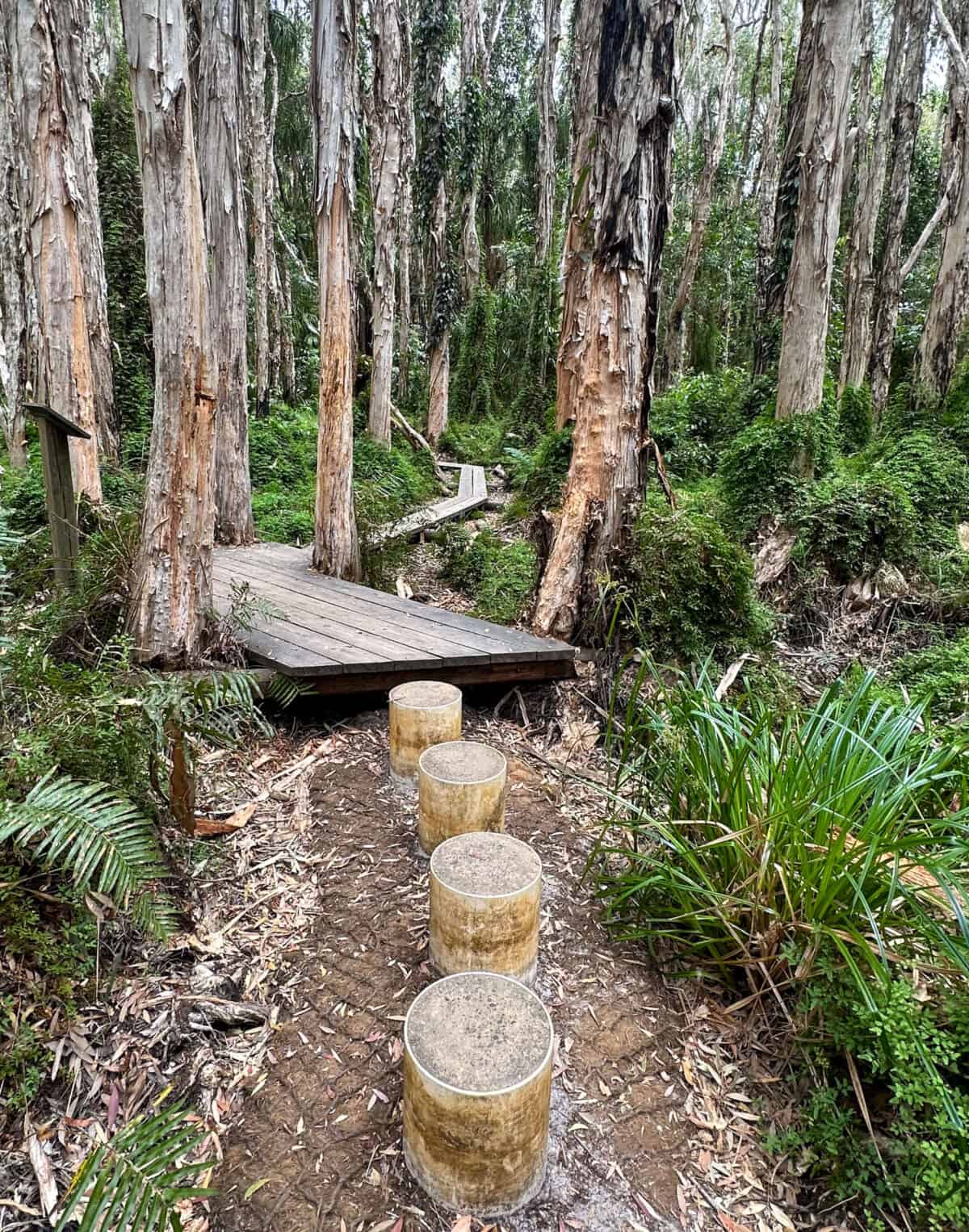
The Hard Parts Of Full Time Travel In Australia
Life on the road is a unique, incredible journey!
We have loved every moment and wouldn’t go back to our old lifestyle with any amount of money offered…but there are some downfalls to the lifestyle and having the right knowledge and gear can really assist with making this life more comfortable.
Let’s run through some of the harder adjustments we’ve encountered so far. This includes things out of our control and also things we have to be more conscious of during our travels:
Weather (Wind/Rain/Heat)
- Strong winds make for difficult cooking even with a wind guard (all our cooking devices are outdoors), we have also experienced poles lifting on our awning and our tropical cover ripped off one corner in a strong wind event we experienced. Guy ropes are essential!
- 40 plus degree days are absolutely exhausting when you’re in an area without a swimming hole to cool down (we also don’t have air-conditioning except in our car, so this may not apply to everyone)
- Days of constant rain leave you pretty stuck at camp and NOTHING dries!
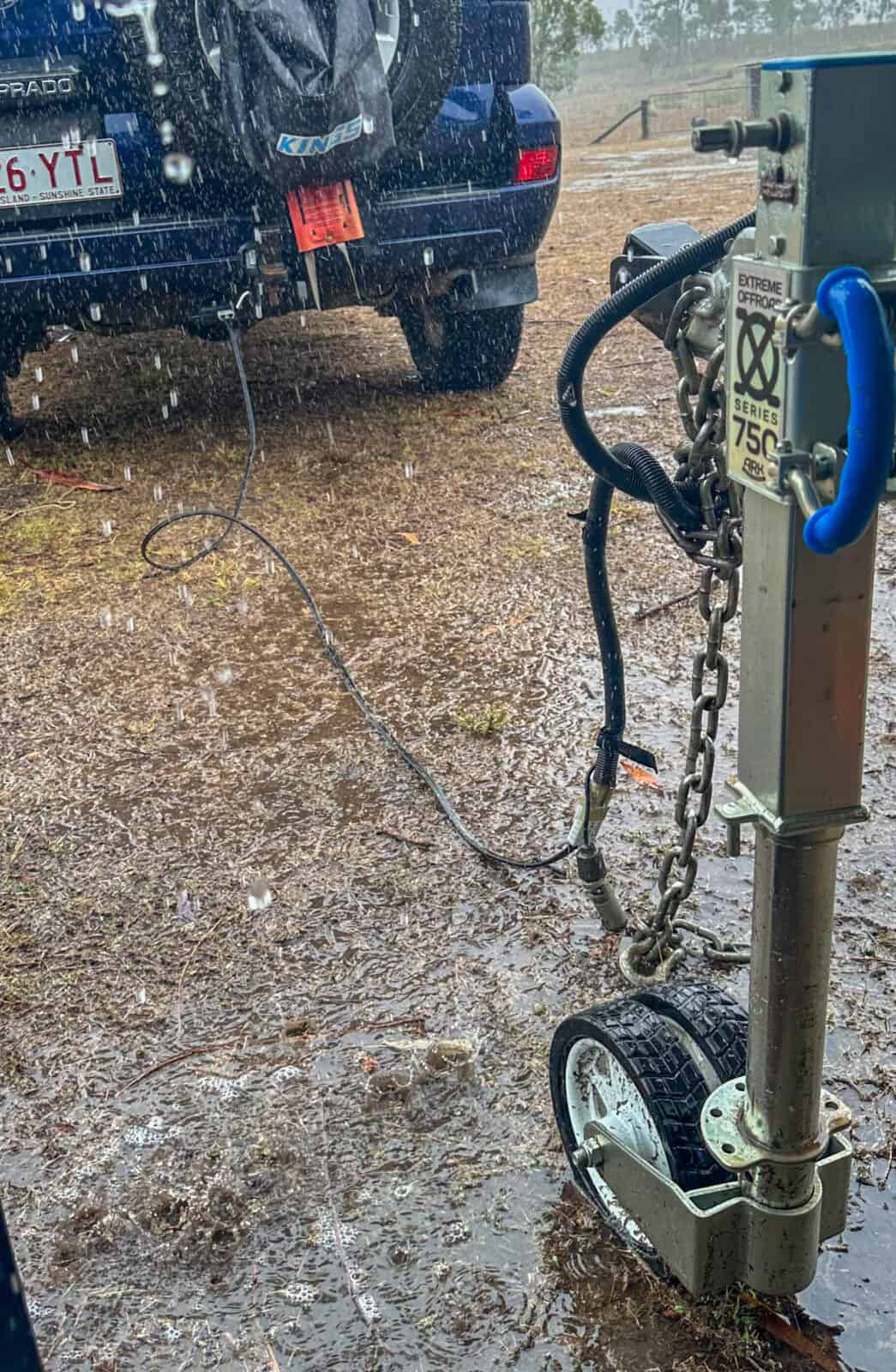
- Water is precious – you learn to be extremely conservative with what you have
- We constantly monitor our water gauge to ensure our 100L water tank is never empty. We are capable of going ‘off grid’ however we are required to head into town every couple of days to stock our water with our 50L water jugs
Minimal Space
- Space is extremely limited in every aspect of this life – you have to consider storage for water, food, clothing and literally everything else
- Tetris packing art becomes a necessity. Everything has it’s own place, and don’t forget you have to put the item back where it belongs. A little tip – organise the gear so the everyday used items are easily accessed and less frequent gear is at the back of the drawer/bag
- A great deal we would have snagged at the grocery store when we lived in the house may not be achievable now due to fridge, freezer and pantry space
Enough Power: Chasing The Sun
- Following the sun with the solar panel – if you know you know.
- Ensuring you have enough power to keep your electrical devices charged is one of the most important tasks, one cloudy day or a day of no driving can really affect the batteries
- You quickly learn to only charge devices during the day or use the power-sapping devices during peak sun
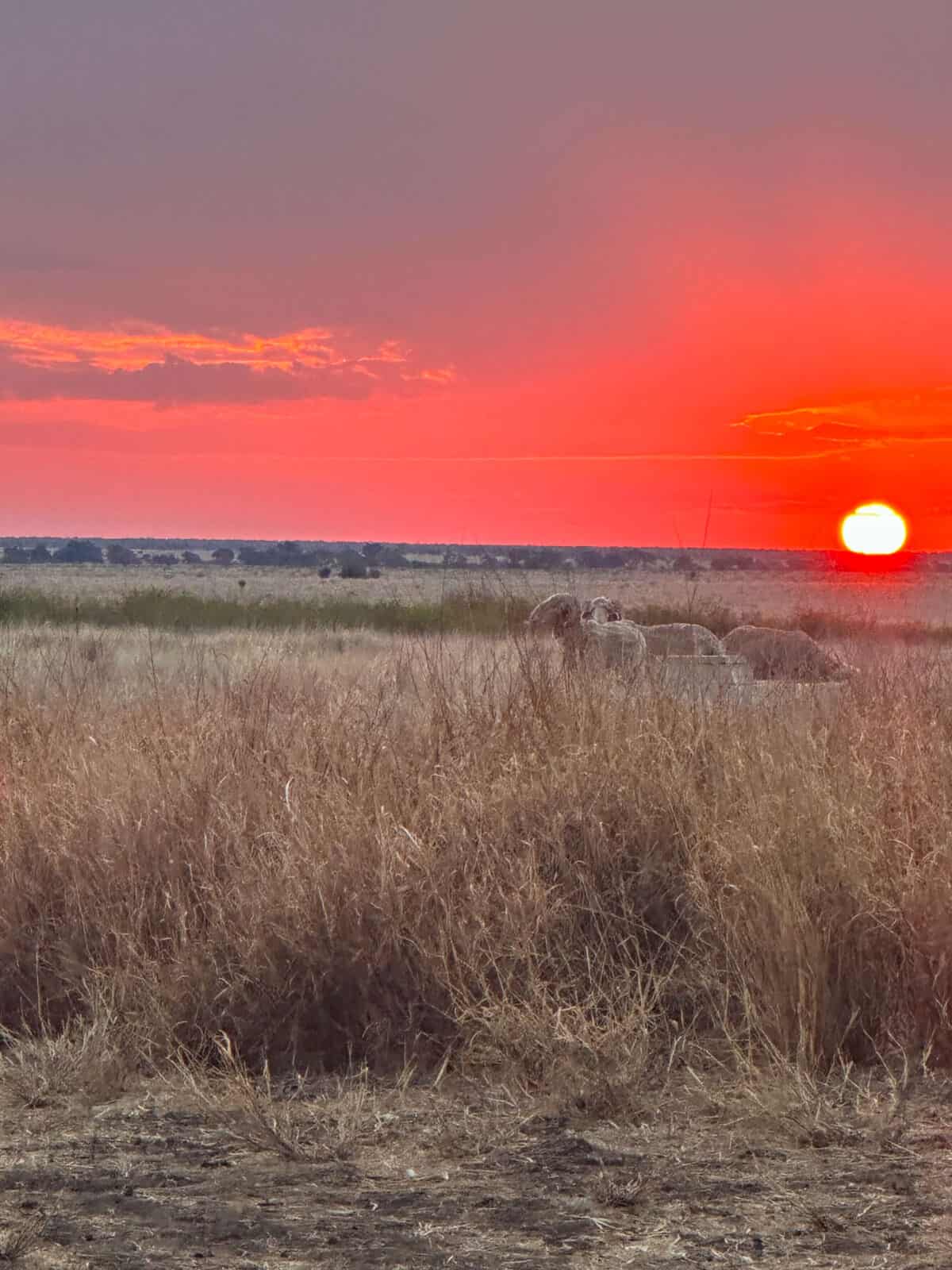
Hygiene (Shower & Toilet Specific)
This simple task in a house isn’t quite as simple in a camper trailer.
For us we are required to set up our ensuite tent, fill the toilet flush and waste tank and set up the shower stand. When it comes to using the shower, our gas hot water system turns on to fill our canvas bag. We also preserve water by turning the bag on and off between washing and lathering the soap.
- Once our toilet waste is full, this has to be emptied at the local dump point – this is never a fun experience but it’s now a part of our life
- One thing we miss (if you don’t have a camper with a decent shower and a large water capacity) is having the ability to shower every day
Washing Our Clothes
We have a couple of money-saving goals while on the road. One of them is we don’t want to pay to have our clothes laundered. This means we purchased a manual washing machine.
- If we’re low on water, we can’t wash our clothes
- If we’ve been in a pretty dusty/dirty area we basically have to double-wash everything
- Our manual washing machine only washes a small amount of clothing at a time, which means it takes a long time to do a normal washing machine load
- If it’s raining for an extended period of time, you need to hit up a laundromat (we’ve only done this once)
All in all, some of those things just require a little bit more forward-thinking, so really not a drama once you’ve settled into a routine.
However, some of those things can make for a bad day such as the intense weather. Or if you’re a bit tired or heat-stroked, those little things can defeat you for the moment.
The Essentials For Travelling Australia Full-Time
With all the harder parts of this lifestyle in mind, we’ve compiled a list of our essentials for travelling Australia full-time that assist us with being as comfortable as we can without being overweight in our set-up.
The essential items for a big lap of Australia range from storage hacks to everyday items you may not have thought of.
Some of these might not seem essential to you, and that’s perfectly okay – everyone has different needs and wants and every traveller’s set up will be different.
Lets get into our essentials for travelling Australia full-time:
1. Thermopot
To explain this one simply, it is basically a slow cooker without power. We have only tried wet/liquid meals with this one (curries, corned beef, honey mustard chicken etc) but it has been a game changer.
When we know we have a big day planned, we pop all the ingredients into the large pot, boil for up to 30 minutes on the gas stove and insert the pot into the thermal sleeve. The meal will continue cooking all day and be perfectly cooked at dinner time.
There has been some moments when we are in cool or windy areas, the meal is on the cooler side by the end of the day, in these moments we just reheat on the gas stove. Either way, this means we can have a decent meal after a big day exploring an area and not feel the need to eat out.
An additional bonus, the pots supplied in the thermopot double as our cooking pots (another handy tip – you’ll learn to double purpose A LOT!)
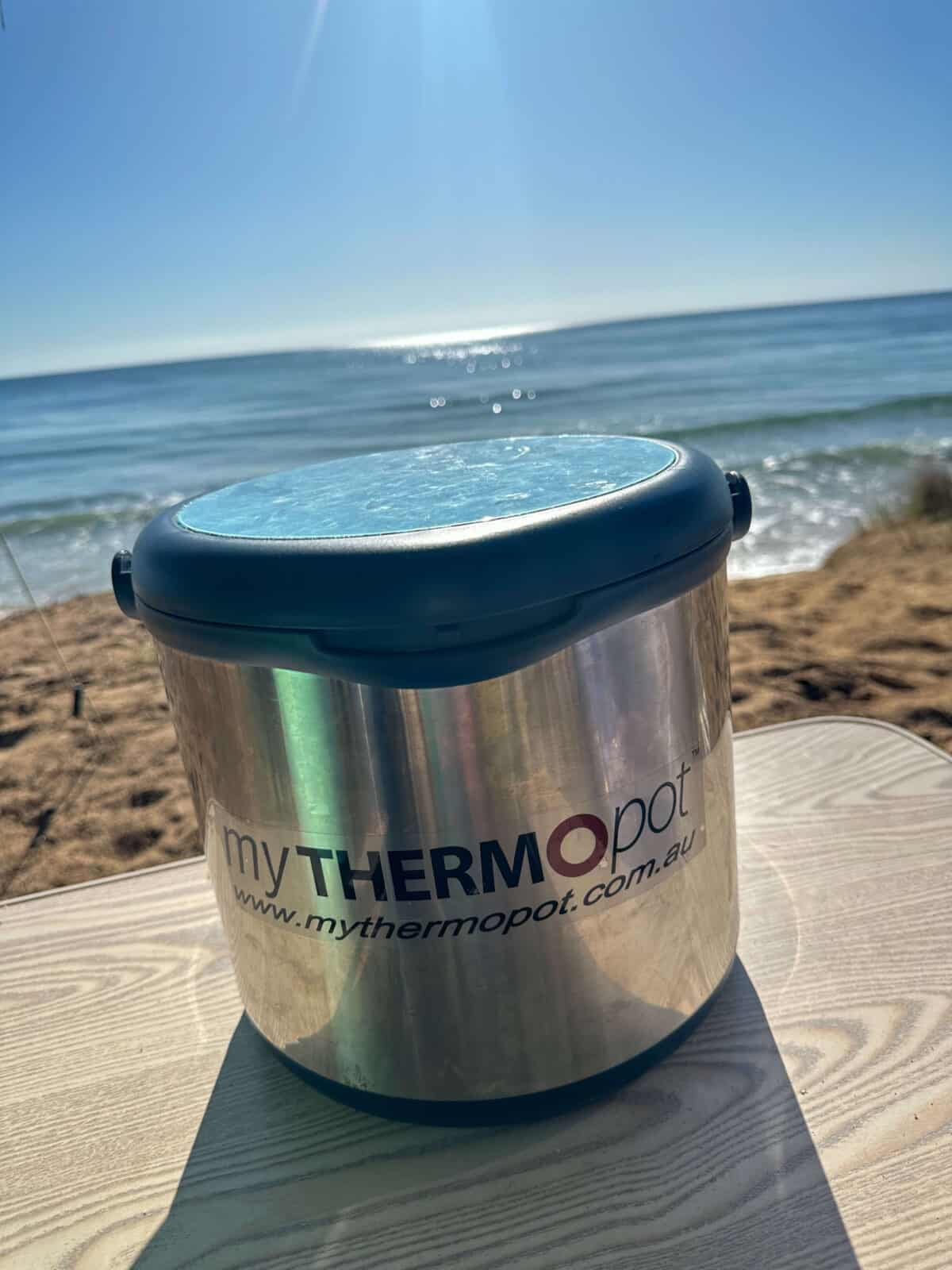
2. Aeropress (Coffee)
That first coffee in the morning.
If this is important to you, finding the right device comparable to a coffee machine is pretty important. Prior to heading off on our lap we experimented with 3 devices and the Aeropress was the winner by far!
We love this device and it makes coffee reasonable quickly. We also find the device removes a lot of bitterness from coffee, allowing us to buy cheaper grinds.
Check out our coffee trial and error here to learn more about why it’s our favourite.
You can purchase the Aeropress online or in-store at your local Anaconda .
3. Jet Boil
This is another add-on for coffee making as this is our fast-boil “kettle”. We do have a kettle for the gas stove, however, it is slower. The jet boil has your water ready promptly with measurements along the side so you can boil the exact amount required.
You can opt for the Jet Boil brand or Kmart offer a cheaper option.
Along with the jet boil, you’ll also require the gas canisters , which are much cheaper at Kmart over any of your camping stores. However they are often out of stock for this reason.
4. 12V Vacuum
From experience, it’s impossible to keep inside tidy as you’re constantly bringing in sand, dirt or whatever ground you are standing on (even with mats). The vacuum gives you the freedom to tidy up regularly as it only takes a couple of minutes to vacuum our inside space.
We have the Makita Stick Vacuum and it’s been perfect for keeping the trailer and car clean. We haven’t had to pay for a vacuum at a car washing facility with this handy little device.
Added bonus, all our tools (drill, driver, leaf blower, radio) are Makita so we already had the batteries packed and ready to go.
If you are taking a different tool brand with you, check to see if they also make a vacuum.
5. Rechargeable Lanterns
Yes, we do have a 12v bar light system however we also have rechargeable lanterns.
For short stays, we don’t set up the 12v system and just opt for these lanterns . They throw just enough light to cook dinner or do the dishes. Plus you don’t have to use the trailers batteries at night!
6. Fishing Rod Storage
This was a hard decision, we did a lot of research. We found the perfect solution for us was in the car. We have our 2 fishing rods strapped on the passenger side of the car straight to the holy crap/grab bars.
This means we can access our rods within a couple of minutes, we did also look at a PVC pipes but due to the size of the reel..this would mean separating the rods in sections. We thought about this long and hard and decided we probably wouldn’t fish much with the added effort.
We also kept the fishing rod holder on our bull bar for when we’re beach camping so the rods are even easier to access!
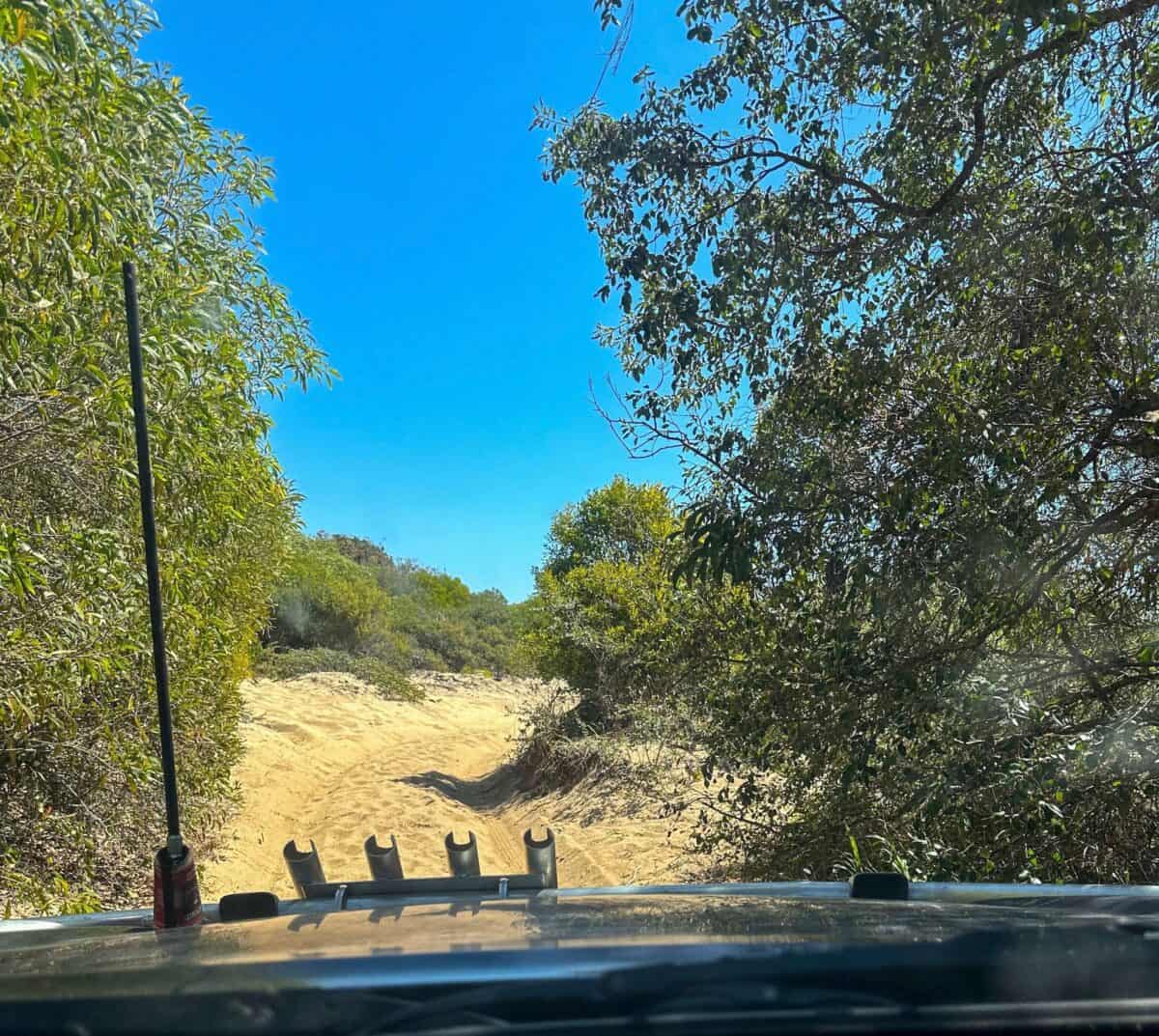
7. Collapsible Bucket, Laundry Tub & Dish Drainer
Have we mentioned space is our biggest problem? We have a collapsible laundry basket , bucket and sink drainer to assist with storing our items during travel.
This means the items all slip into small areas rather than taking up a large amount of space.
8. Silicone Collapsible Containers, Zip Lock Bags & Spice Bags
I was a tupperware queen when living in our house BUT our space doesn’t allow for the storage of these containers. To prepare for the trip, we purchased this range of different sized silicone collapsible containers and we use them ALL THE TIME.
The next essential item in this category is spice jars. To minimise space we found these brilliant bags on Amazon . When I converted our jars to bags, we saved almost 2kgs. Not only did we save space and weight with our spices, we also use them for sugar, nuts, etc.
We very rarely used zip lock bags while living in the house, I think a pack lasted us 2-3 years.. although we are still on the packs we purchased while at the house, we do unfortunately use these a lot now to assist with storing our fridge items with minimal space used.
We have a handful of reusable silicone zip lock bags and eventually aim to have enough silicone zip lock bags to avoid the added waste in the environment.
A simple net that attaches to the 4 grab handles (the holy crap bars).
For us, this net stores our picnic rug, swimming towels, some jumpers and our pool noodles. It is a fantastic way to store some lightweight gear to avoid them taking up space elsewhere in the vehicle.
Plus when you need those items, they are in eye sight so no need to rummage through everything.
10. Dirty Bags
If you don’t know what we’re referring to it’s the bag you often see attached to the spare tyre on a 4WD or caravan. Believe it or not we have 4 dirty bags, each with their own purpose.
Honestly, if one of them broke we’d probably replace it straight away as they really assist with storing dirtier items. This is how we use ours:
- Rubbish bin & transport the toilet waste canister
- Dirty washing
- Sand and ground mats
- Fossicking gear (sieves, picks etc) and our gum boots
11. Recovery Gear & Air Compressor
Bogged, flat tyre or travelling on the beach highway. These are pretty essential items to have on hand. From experience most of the beach camping areas are secluded with no reception so you may be left to your own devices to get out of a pickle.
We have a digital PSI tyre gauge , automatic tyre deflators , air compressor , snatch strap , 3 recovery tracks (we lost one while bogged at Kinkuna ), long handled shovel and spare shackles to get us through.
Some more serious 4WD travellers will opt for an electric winch , however at this stage we didn’t find it necessary – plus it’s a lot of extra weight.
At a bare minimum we think the PSI gauge, air compressor, recovery tracks and shovel is a must have.
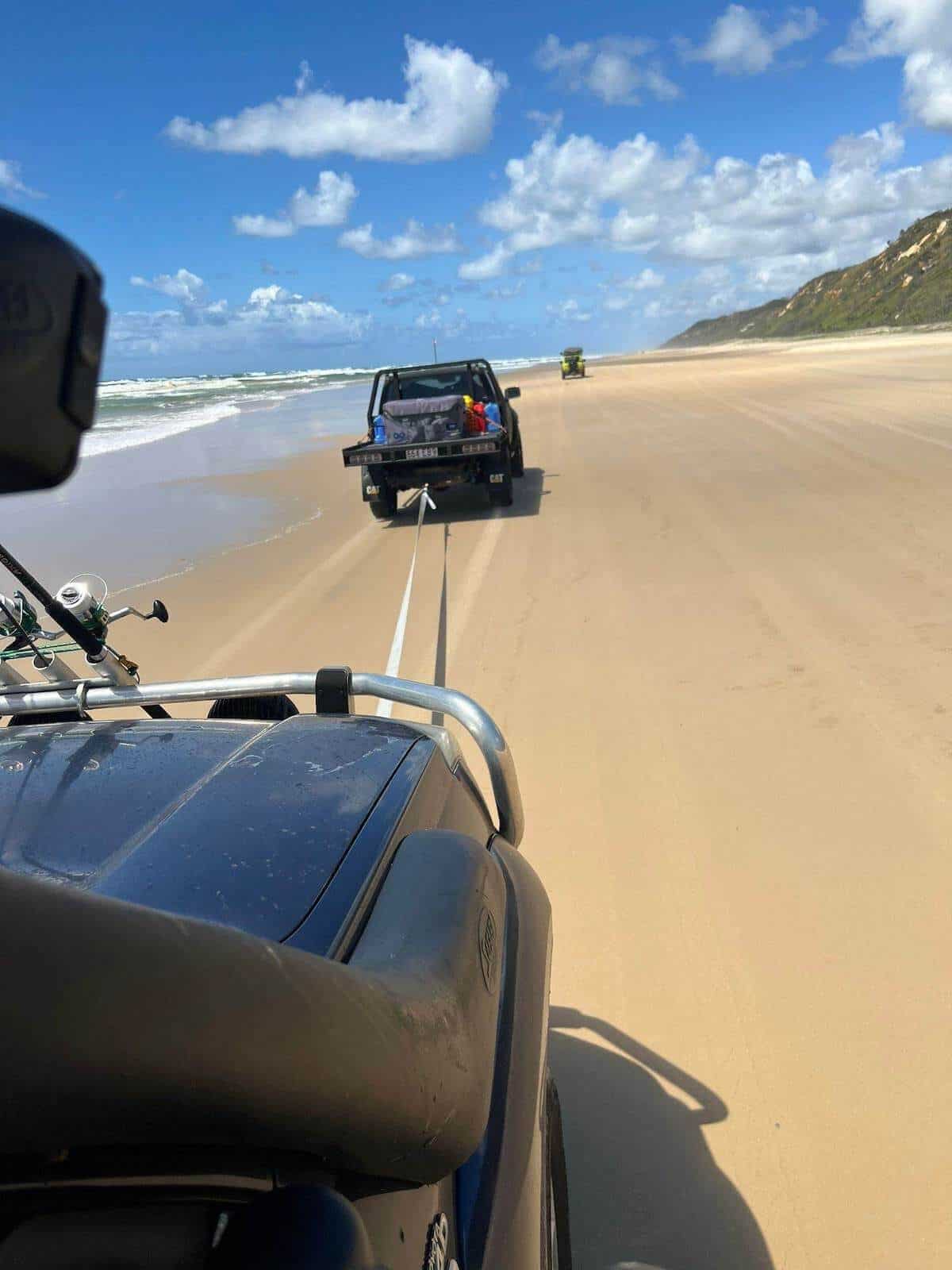
12. 12v Ceiling Fan
When it’s hot, it’s hot. “ Frank the Fan ” really helps us with cooling down the camper trailer (mostly at night, we kinda just deal with it during the day). He is loud, like really loud. But he is also very much worth it.
We have now experienced up to 50 degree days and we wouldn’t have been able to sleep without this amazing device whirring away.
Added bonus (as we live in canvas) when we’ve experienced severe rain we pop the fan on to avoid the canvas staying wet for long periods of time no one wants mould, right!
13. Inline Filter for the 100L Water Tank
A simple device that clicks onto the hose when filling the water tanks or jugs.
By using an inline filter when filling our water tanks, we preserve our pump to our sink by not running any grit through it. This also ensures we don’t suck any ‘nasties’ into our tank.
We also travel with all the tap connectors as some taps have no attachments. We can click on ours and attach our hose to make using the filter easier.
14. Water Filter Jug (For Drinking Water)
Before heading off on our lap, we had a water filter for years, and for this reason I became a bit fussy with tap water. We decided to purchase the water filter to top up our water bottles as a precaution with all the different water we’ll be drinking.
We’ve already experienced extremely treated water and bore water that we couldn’t drink without the water filter (some we had to filter multiple times to even consider drinking) – so definitely a must have for our lap of Australia.
If you’ll be purchasing bottled drinking water, this one won’t be important for you.
15. Manual Washing Machine
As mentioned earlier, we didn’t want to constantly spend money on laundry. So we opted for this manual washing machine .
The washing machine does only hold a small amount of clothes and takes a solid few minutes between adding water, wool wash, clothes and the spin and dry cycle.
To hang our washing we add ropes to trees to create a line for the larger items and use one of these foldable drying racks for the small items such as socks and jocks. This has worked a treat for us so far to avoid carting a bulky collapsible washing line.
We have definitely saved a lot of money with this device! In total we have only spent $12 for 3 loads of washing in the 4 months of our lap of Australia, when the rain just wouldn’t let up.
But just for some insight on how quickly the price could add up, when leaving our first 2 week camp site with sand in everything we checked a laundromat to get all the sheets and clothes cleaned and found it would cost $13 a load. No thanks.
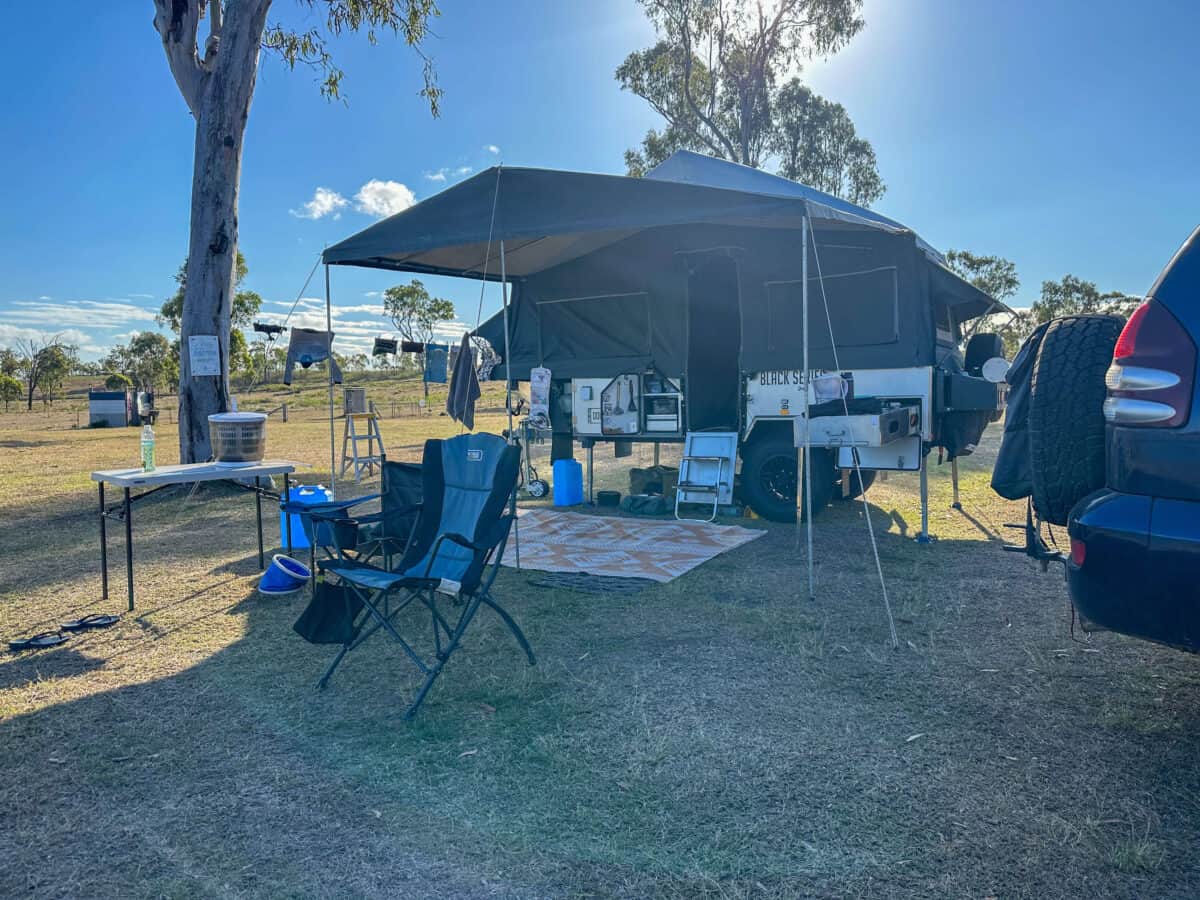
16. Sectioned Toiletry Bag
We have a 3 section toiletry bag to hold our every day toiletry items.
The sections are different sizes. The first smaller one holds things like cotton tips, tweezers, etc. The second holds our tooth brushing items and the third is for face moisturisers, deodarants, etc. You might organise yours differently, but this works for us.
This toiletry bag is usually hung up on the camper trailer near our kitchen sink for easy access.
17. Dry Bags
You know the dry bags you get usually for boating to store your more precious devices? We had a couple of those from when we had our kayak.
They are fantastic when you’re staying at a campsite with facilities. Just pop all your toiletries in (you can even fit your clothes in some) and head off for a shower with your towel in hand.
18. Backseat Organisers
While on the topic of toiletry items, another storage element we have a few of are these backseat organisers .
2 hold a large portion of showering toiletry items such as shampoo, conditioner, razors etc. The last one holds the smaller tools and utility items such as straps.
As it’s just the two of us (no children), we have one on each rear window and one on the back of the front seat. This gives us so much extra storage space.
An added bonus, having small things like these for storage makes it easier to know where everything is.
19. Back Car Door Fold Down Table
Nick is really crafty and designed and built this for our car. It’s the perfect addition to pull up and make a quick lunch (our fridge is also in the car for this reason).
A quick clip system that makes it super easy to use, plus there’s just enough of a gap to fit in a small chopping board, a knife with a cover, wraps and plates.
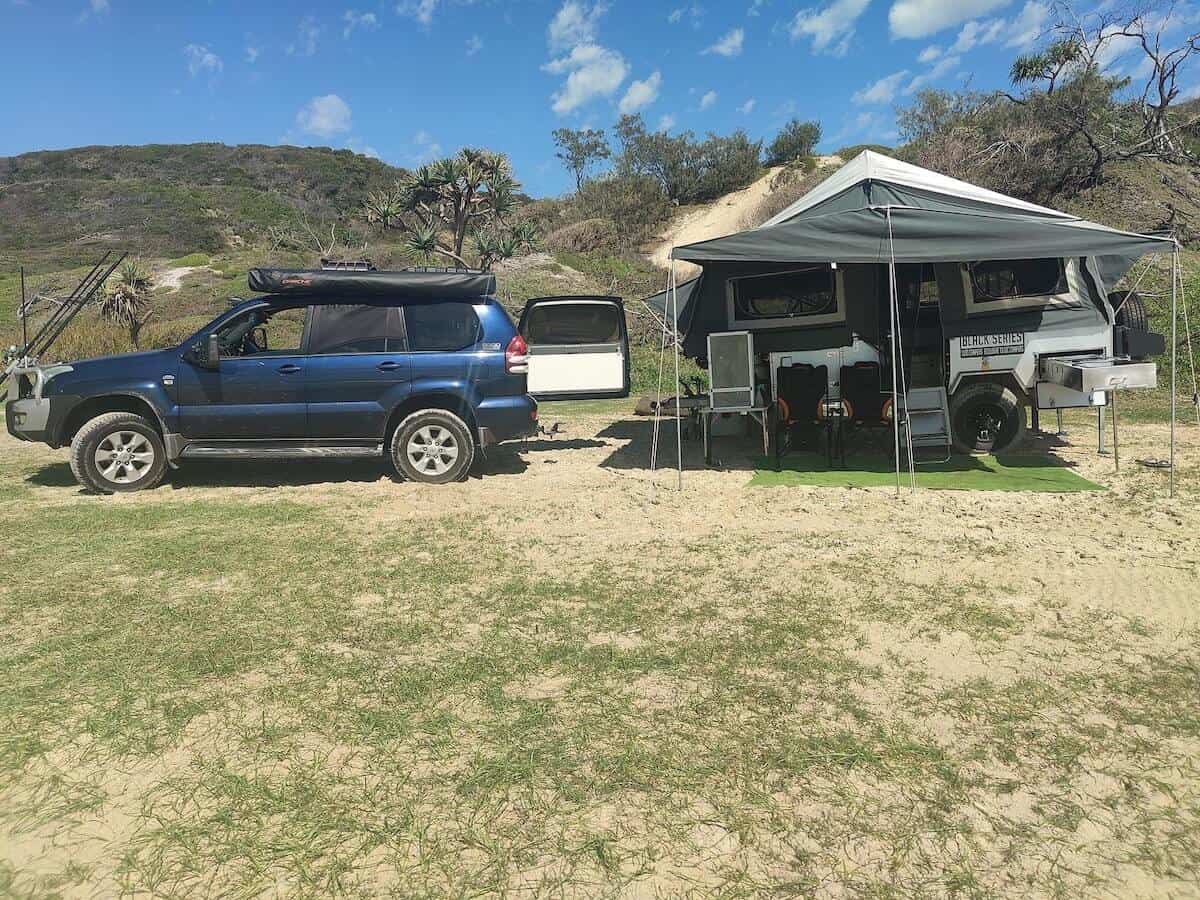
20. Food Vacuum Sealer
Thankfully you can purchase vacuum sealers in 12v so we were able to add this to our gear.
By vacuum sealing all our meat, we can fit a large amount of food into our freezer – which means less trips to the butcher. Plus the fridge/freezer doesn’t work as hard when it’s completely full as all the items stored assist with keeping the temperature just right.
We tend to buy our meat at butchers, so we usually have a “vacuum seal day” where we separate the meat into meal portions and seal during the day while the sun is beaming!
A little tip – if you write the food item with permanent marker you’ll avoid getting out the wrong piece of meat ( been there, done that ).
21. Ice Tray For Drinks
This might sound a bit crazy but we attempted using a small fridge as a bulk meat/drinks fridge.
Our electrical system couldn’t handle the second fridge and we found a better solution. (The small fridge was power-sapping much more than our large fridge, which we thought was pretty crazy considering it was 1/4 of the size).
We keep our drinks hot in a tub. When you’re feeling a cheeky afternoon beverage, we grab some ice cubes and voila – you have a cold drink. We do keep 2 silicone zip lock bags filled with ice at all times, so this is a bit of a chore as sometimes we use the ice in our water bottles as well… but it saves on storage, weight and our electrical system!
Side note – make sure to purchase an ice tray with a lid to avoid spills when driving.
22. Battery Bank
Ours specifically is a car jump starter , but it’s mostly used as a battery bank to charge our devices.
If you make sure this device is charged during the day, you don’t have to sap any of the trailers batteries to charge your phone or a lantern.
23. Pool Noodles
Prior to setting off on our lap, we always had floaties for our hundreds of water-located camping trips.
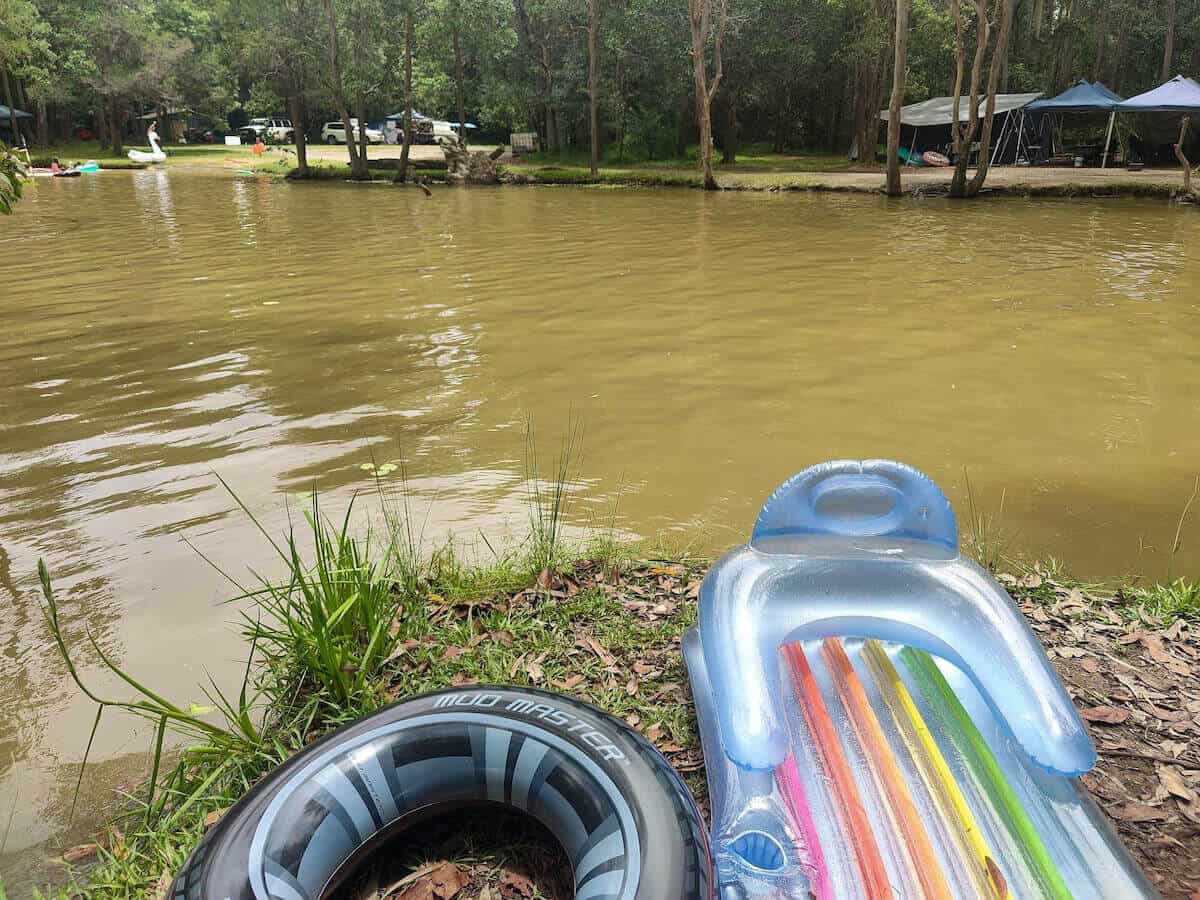
When evaluating our space, we opted for pool noodles as there is no set up required plus they slide right in our roof net, making them easy to access when we find the perfect spot for a swim.
24. Insulated Water Bottles & Tumblers
As mentioned earlier, I was the Tupperware Queen which included the plastic water bottles. If you’ve owned one and live in a hot part of the country you know if it’s hot, your water is hot.
By purchasing insulated water bottles and tumblers, you can guarantee the liquid going in will stay the same temperature.. and if the water is hot, you can add some ice cubes and the water will stay cool for hours.
Plus living this lifestyle is a little more rough, you’re going to knock your water bottle over onto the ground a lot. Plastic will break, whereas the insulated items can stand the knocks with limited damage.
Additional tip – opt for an easy to clean device as you no longer have a dishwasher. For example, I was gifted a yeti water bottle which is a dream to clean. We purchased a second cheap bottle that has a few more hard to get to grooves.
Our insulated Yeti range includes: water bottle , large tumbler , small tumbler . Besides the stubby coolers , we don’t have any other drinking devices.
25. Fuel Doctor Additive For The Car
A fuel app will become a pretty important part to keeping the budget down (we use Petrol Spy). Even if you don’t opt for the cheapest fuel, you still run the risk of picking up some nasty fuel.
For preventative maintenance we always pop in fuel doctor to ensure we don’t run into any problems. This recommendation came from a mechanic when we started blowing a little bit of smoke. One run of the fuel doctor and the smoke was gone.
We still add the fuel doctor to our tank as we cruise through this country, just in case.
Without a fixed address for postage, we purchased ours at a Supercheap however if you want to save almost half the cost, get yours delivered from Amazon (it’s literally the same brand)
26. Water Jerry Cans
We started with a 10L and this definitely was not close to enough. We ended up getting rid of our fuel jerry can as our fuel tank holds 180L of diesel and instead have two 20L water cans to cart water.
This definitely helps as water is our highest use, especially when staying somewhere without a shower or when doing some washing.
27. Rainy Day Activities
This can be whatever you fancy – UNO, playing cards, board games, a Kindle eReader (or just use the app), colouring books, or a musical instrument.
My latest favourites are colouring books and paint by numbers (you can pick them up pretty cheap at dollar stores).
You may not use them all the time but you’ll be sure glad you have them when you’re faced with a few days rain and can’t leave camp or you’re too exhausted to head off on a physical adventure.
Throw Throw Burrito is a game we love – cards mashed with dodgeball!
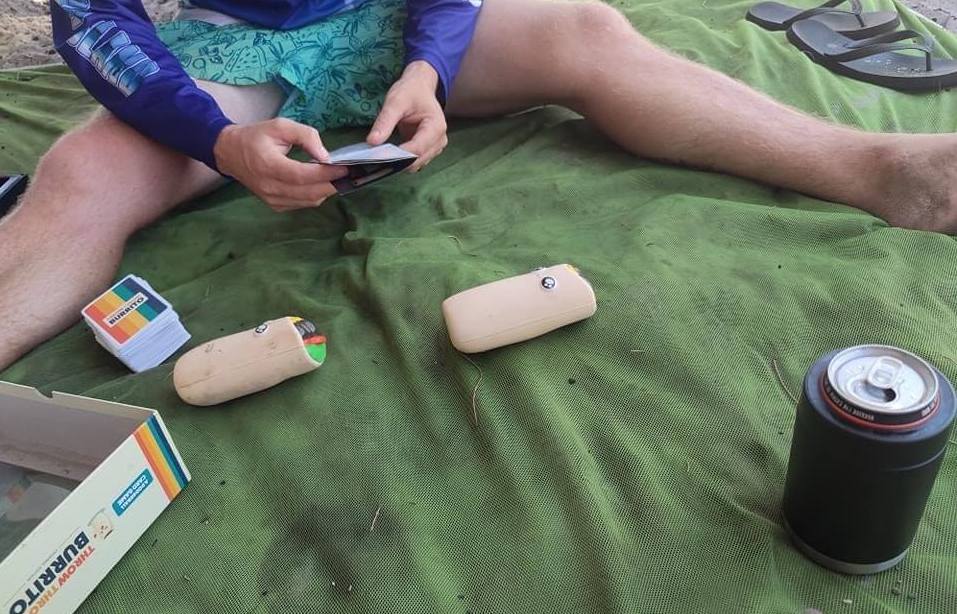
28. Folding Table
We took off on our lap without an extra table and boy did we struggle with our tiny table that came in the camper trailer. We picked one up pretty early in our journey and we use it EVERYDAY.
This table is used for storage, food preparation, games, washing our laundry and everything in between. 10/10 we wouldn’t leave for our lap of Australia again without one!
We also opted for one that folds at the legs and not the middle of the table for complete sturdiness.
A Couple Extra For The List
- Rope and straps of all different kinds ( occy straps , tie down straps ) have been essential items for our lifestyle. We use them to hang things in the car when travelling, to fix things that break, etc
- Baby wipes – I know they’re not good for the environment but when you are low on water they can assist with a quick wipe down of feet, bits & pits or the table
- Ground mats ; we have a sand mat for beach camping and a recycled plastic mat for when we a grassy ground. They really help with keeping our area tidy and just having a space for clean feet.
- Quick dry towels. We have normal towels for showering but a couple quick dry towels for swimming. Sometimes we’re in the water every couple of hours or have to hang the towels in the car while heading back to our next destination.
- Hammock – some people won’t agree with this but we LOVE our hammock ..especially at a beautiful beach location to relax in the breeze.
- Beach Wagon/Cart – you may not use it that often but when you’re planning a day of fishing or hanging on the beach it sure does come in handy! We purchased ours from Bunnings , however if you’re looking for something with a roof (especially with little ones) this one might be more up your alley!
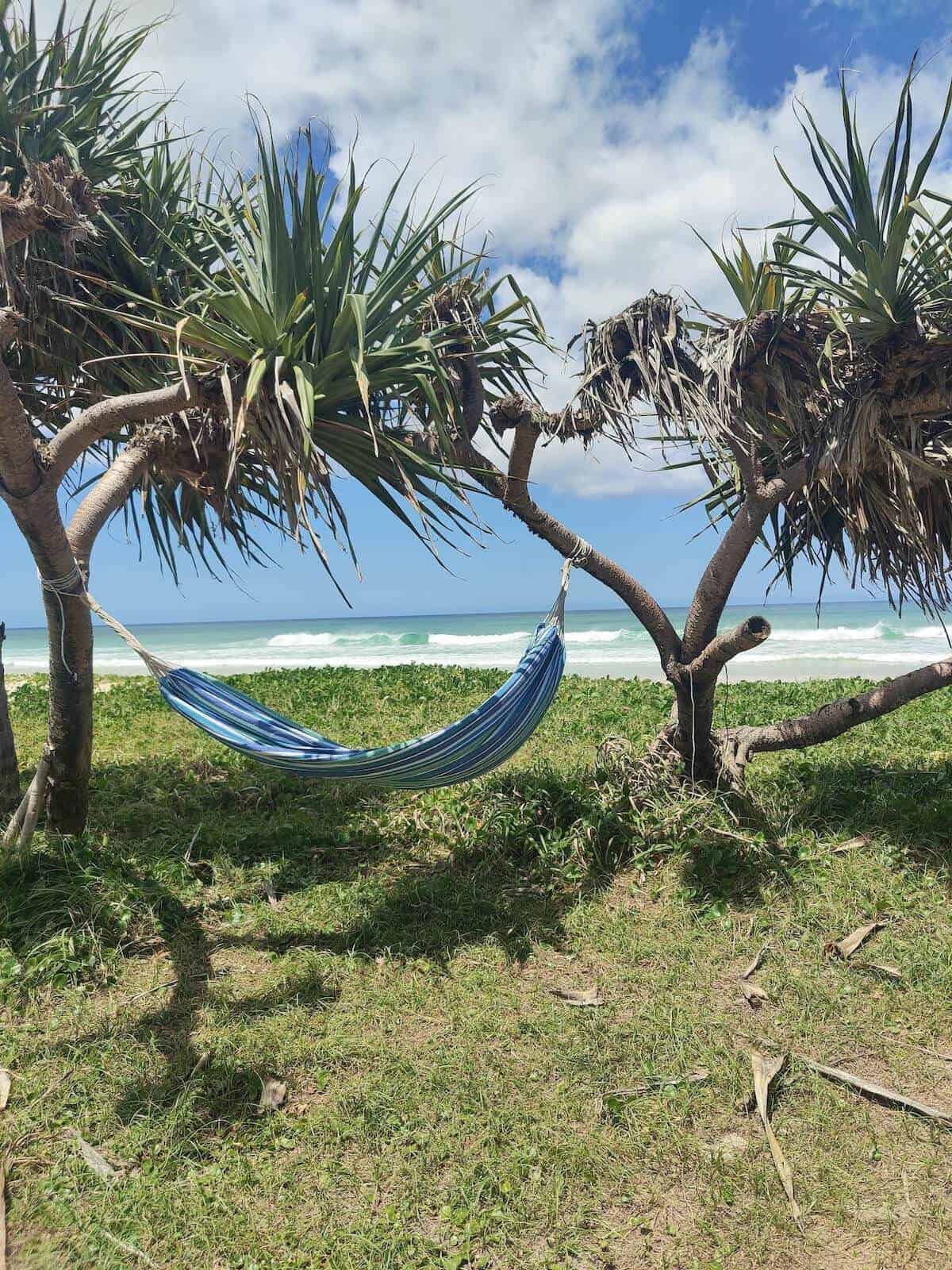
That about sums up our essentials for travelling Australia full-time. As we’re only 4 months into our lap of Australia, we’re definitely still learning.. and who knows maybe the essential list will change as we reach different states and experience different seasons.
With all that in mind, I can safely say there are a few on the list I know for sure, will be there for good!
PS – don’t forget, there are shops in most towns (especially cities and a lot of the coastal towns) so pack what you think are the essential items and if you need something along the way, go buy it.
Final Thoughts on Full Time Travel in Australia
Australia is a beautiful country that we are so incredibly lucky to have the opportunity to explore.
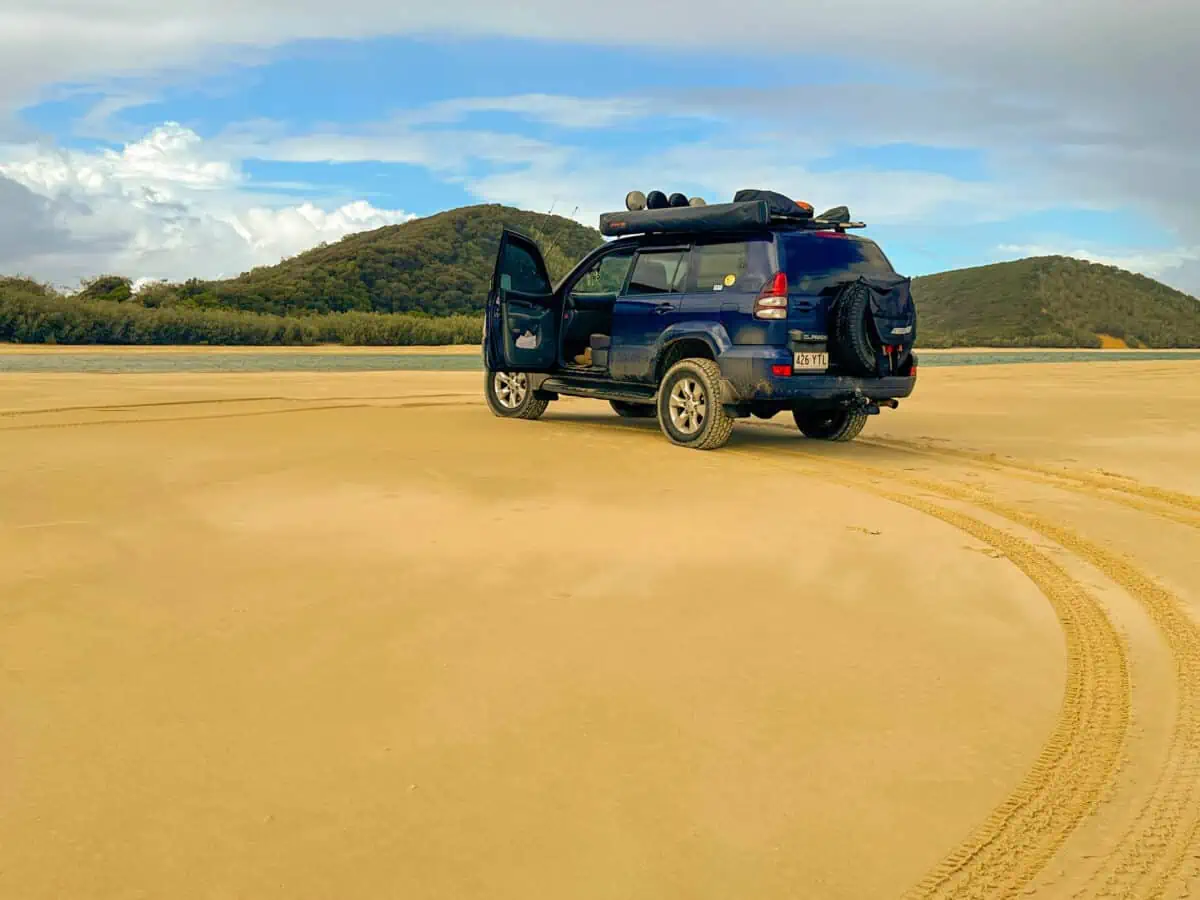
Yes there will be bad days, or bad moments but I wouldn’t trade this journey to go back to my old life. I don’t even want to think about eventually settling back down into a routine with the same backyard everyday.
I have always been a bit of a routine person and this experience has been incredible for me to get out of my own head and just live. If you’re thinking about taking up full time travel, just do it. After all, if you don’t like it, you can always just pack up and go back home.
If you’ve made it to the end, thank you for taking the time to read our tips, tricks and essentials for travelling Australia full-time. We hope we’ve assisted you through planning your lap of Australia!
If you have something different in mind that we haven’t mentioned, let us know below in the comments.
Happy travelling!
More tips for your big lap:
- Tips for planning a lap of Australia
- How we afford to travel full time in Australia
Shannon is the organised half of a travel duo. Camping trips fueled her love for the outdoors, eventually leading to the dream to live on the road full-time. She loves the ocean, crystals, sunrises, and hiking - her happy place is surrounded by nature.
Similar Posts
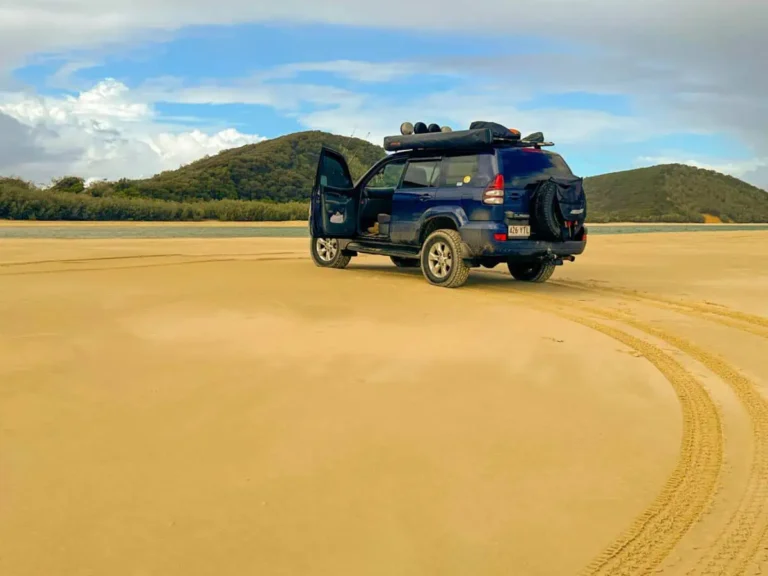
Our 16 Must-Have Vehicle Upgrades For Full-Time Travel In Australia
If you’re in the early stages of getting ready for full-time travel in Australia, we’ve got you covered with our list of must-have vehicle upgrades.
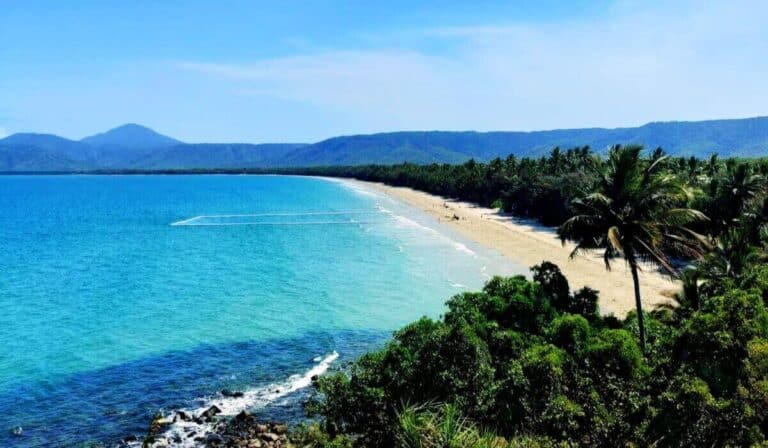
100 Australia Trivia Questions: Australian Quiz Questions To Challenge You
We’ve put together 100 Australia trivia questions that are really going to test your knowledge of Australia.
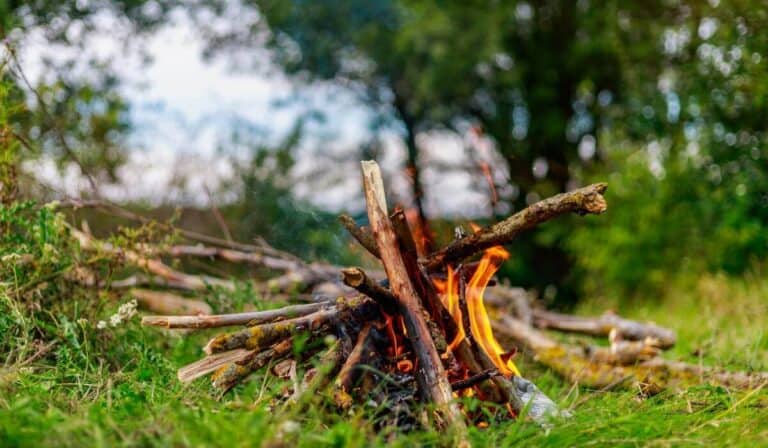
20 Safety Tips For Camping So Your Trip Doesn’t End In Disaster
This guide will help you with how to stay safe while camping, with simple things you can do to keep the whole family safer and hopefully minimise the risk of injury, illness and worse!
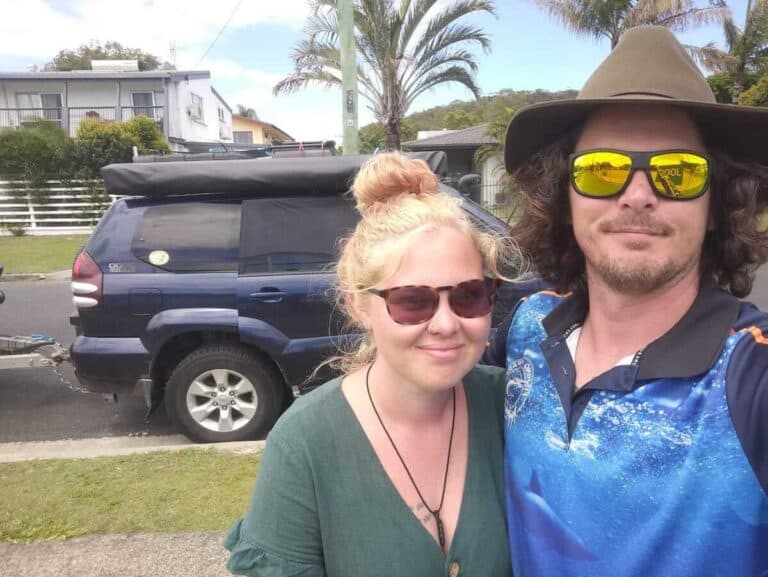
How We Afford Full Time Travel In Australia
Are you dreaming of travelling full-time, but not sure how to make it a reality? We share how we afford full-time travel in Australia, how to save & prepare to leave.
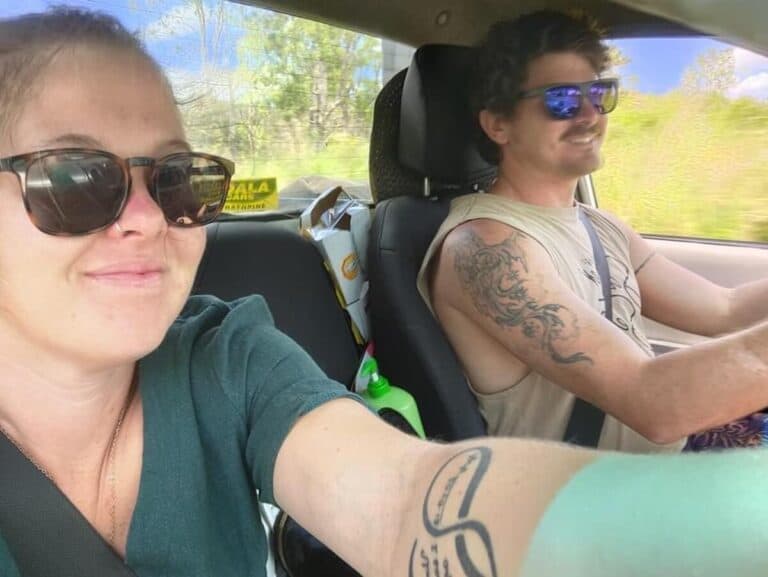
120 Road Trip Questions For Couples: Conversation Starters For Car Rides
Looking for the perfect road trip questions for couples? These conversation starters for couples are sure to make the long drive more fun!
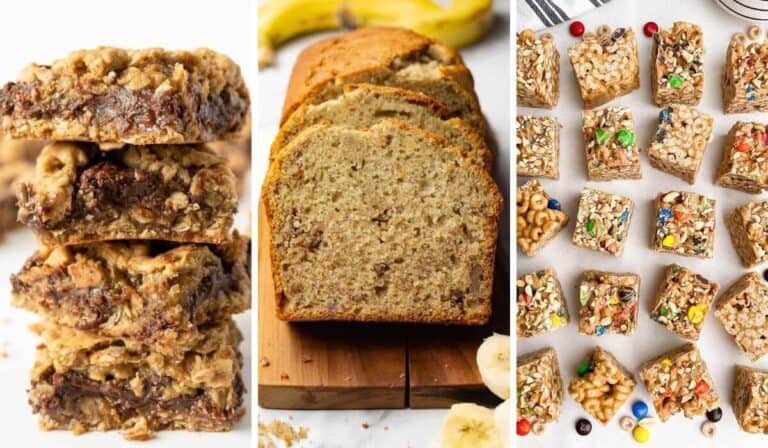
33 Make Ahead Camping Desserts: Easy Ideas & Recipes
These make-ahead camping desserts are the easiest way to enjoy a sweet treat at your camping trip without extra cooking! Includes no chill camping dessert ideas.
Leave a Reply Cancel reply
Your email address will not be published. Required fields are marked *
Save my name, email, and website in this browser for the next time I comment.
Australia what to pack: Travel essentials, important documents + clothes
14 Jan, 2022 | Migration , New Life Maker
I’m often asked questions about what to pack for Australia. What to pack for Australia depends on lots of things – are you looking for things to take to Australia for a holiday, for a backpacking adventure or are you moving to Australia permanently and wondering what should be on your Australia packing list?!
This post about Australia What to pack contains affiliate links. The full disclosure is available in the footer.
For this article, I’m going to assume that you’re moving to Australia or travelling to Australia for a long period of time and we’re going to talk about what to pack for Australia in your hand luggage as well as in your suitcase. You might be sending a shipping container of things or some luggage via a luggage delivery service separately too, so this post will also help you work out the important things to keep with you.
Don’t forget, if you need a shipping quote you can save time by using my inquiry form here to get up to five shipping quotes. Plus you can use my Send My Bag discount link to get 5% off baggage sending services so your bag can be delivered right to your door in Australia. Too easy!
Travel checklist Australia: What goes in your hand luggage?
If you’re wondering what to pack for Australia, here are my travel essentials for Australia to go in your hand luggage .
Passports and tickets

I like to use a travel wallet to keep everything together.
>> Shop for travel wallets on Amazon
Visa letters
If you’re moving to Australia, don’t assume just because your visa is on your passport that you won’t need to show the actual letter multiple times too! Print out a few copies of it as you’ll need them.
Gather an Australia pack of important documents
In this, you need to include:
- originals of personal documents (birth certificates, marriage certificate, qualification certificates, police checks from your visa etc.) These will be essential pieces of identification in Australia. Make sure you leave photocopies of all of these with someone you trust back home just in case you ever lose these originals, and it’s also helpful if another family member who is travelling with you has a pack of the photocopies on them too because you might need to give them out as ID later when setting up accounts, finding a rental etc. It always pays to try to keep separate copies of things! (You should also scan copies of these and add them to your laptop or portable hard drive so you have a record of them).
- any recent bills you might need to chase up later (you never know if you might need to query a final payment, or ring the company up to follow something up).
- details of where you’re staying and your hire car confirmations and/or taxi details.
Some Australian currency so you have some cash ready to spend when you land
I like to order mine online in advance of travelling.
A multi-currency account with debit card
I think a multi-currency account is super handy (I wish I’d had access to one when we were moving but I didn’t know they even existed then!). You can have money in a Wise multi-currency account to tide you over until you can validate your Australian bank account in person and move your money over. I highly recommend this as an interim measure while waiting for your Australian debit cards to be ordered. It will also come in so handy if you’re moving to Australia as it means you’ll have access to bank accounts in multiple countries, and you’ll be able to use it when you travel in future too.
Your bank account opening confirmation details
Bring any information you’re going to need about your Australian bank account so you’re ready to go in and validate your account when you land. You can find out more about banking in Australia here.
Packing cubes to organise your bags (these work well for hand luggage as well as your suitcase)
While the larger packing cubes are perfect for using in your suitcase, the smaller sets are perfect for organising your hang luggage. You can use them to keep paperwork together, to organise any spare clothes you want to keep clean and dry – and to keep your cables together. Are packing cubes worth it? Absolutely!

Travel adapters

>> Shop for travel adapters on Amazon
Rehydration products to help you get over the jet lag

Air travel leads to dehydration so take some rehydration products with you that you can consume on the go. I like the dissolvable tablets that you can just add to a bottle of water. Make sure your kids have some too – it really does help to ease feelings of jet lag and exhaustion later.
>> Shop for rehydration products on Amazon
Paracetamol/ibuprofen for you and the kids
For travelling, I find using sachets of medicine is helpful for the kids, or soluble kids paracetamol that you can just pop into a bottle of water. Make sure you pack some for the grown ups too – I always get a bad headache when travelling long haul.
Travel sickness tablets and bands

As someone who has two kids that get travel sick, this is a must for us! I honestly also find the travel bands work too (I lived in them when I was pregnant with twins and suffering severe morning sickness through the pregnancy!) The travel sickness tablets are still important though – we couldn’t travel without them.
>> Shop for travel bands on Amazon
Any medication you need for the journey and after you arrive
Don’t pack it all in your hold luggage in case that goes missing. And make sure you bring enough to keep you going until you can sign up to a doctor in Australia if it’s an ongoing prescription.
Travel first aid kit

I never travel anywhere without a little first aid kit. Mine contains: bandages, plasters, antiseptic wipes, antiseptic cream, bite cream and a thermometer. Just remember you’ll need to delcare any bottles of liquid/lotion at check in.
>> Shop for travel first aid kits on Amazon
Portable hard drive

This should contain all of your important data from your computer and/or laptop. In an ideal world, you’d take two of these so that two members of your group have one copy for security reasons. If you’re sending your desktop computer in your shipping container, don’t forget to back it up onto this device. And even if you’re taking your laptop in one of your hand luggage bags, make sure it is backed up and the portable drive is kept separate. You never know if your bag might get damaged or stolen.
>> Shop for portable hard drives on Amazon
Portable charger

Our kids frequently use up all of our phone batteries. A portable charger means you can carry on using your devices on the go. These are life savers for long journeys.
>> Shop for portable chargers on Amazon
Any special photo prints that are irreplaceable
If you’re moving and taking all of your belongings with you, it’s helpful to try to back up what photos you can on a portable hard drive, but I know that I have way too many prints to want to spend the time doing that. I suggest pulling out the most important prints and taking those with your in your hand luggage. Make sure they’re in a folder to keep them flat and protected.
Camera and Laptop
These are delicate items so will travel with you on the flight. Don’t risk packing them in the hold luggage.
I love my Bose noise-cancelling headphones. Perfect for a relaxing flight!

It’s always a good idea to have a good book with you!
Notebook and pens
You never know when you’re going to need to make a note of something, and you always need to fill out visa forms on the plane.
Masks, hand sanitiser and antibacterial wipes
This is the world we live in now!
A few small sandwich bags and a carrier bag
Use these for rubbish/storing dirty clothes or half-eaten food for the kids.
So you can add layers if the plane feels cold.
Kids inflatable footrest

These are so handy to help your kids to sleep on the plane if they’re still small enough. You can read more about these sleep solutions here.
Shop for FlyPal inflatable footrests on Amazon
Put a couple of little travel packs in everyone’s hand luggage.
Shop for packs of travel tissues on Amazon
Travel activities for the kids
Think books, colouring, stickers… (You can check out my top tips for travelling long haul with kids here ).
Make sure you pack them in a hard case so they don’t get damaged.
Baby gear if travelling with a baby
Nappies, wipes, nappy bags, formula, travel changing mat, snacks, spare clothes, bibs.
One way travel insurance or backpacking insurance
OK technically not something for your hand luggage but one-way travel insurance is an important piece of your Australia travel gear in my opinion! Find out more about it here.
If you’re backpacking around Australia, you can find backpacking insurance too – it may sound boring but it’s really important!
Feel like you’ve got too much to pack for Australia?
You probably have!
We took so many bags to Australia when we moved as our airline gave us an extra luggage allowance for travelling one way as permanent migrants so we wanted to make the most of it! It was so challenging trying to travel with so many bags and cases with three kids under five.
We paid for the assistance of luggage porters in London (as there was literally no way we could get from the taxi rank into the airport without either leaving our kids or our bags unattended as we just didn’t have enough hands!) The porters were honestly a lifesaver and worth their weight in gold, but hindsight is a wonderful thing. We wanted to take all of the things to keep us going until our shipping container arrived. That didn’t get delivered until about six or seven weeks after we landed, so those suitcases and bags held so many important things including toys for the kids, clothes and travel gear.
If I could go back now though, I would instead send at least a couple of those suitcases via a luggage door-to-door delivery service. That way the bags would have been picked up from our home and delivered directly to us after we’d landed in Australia. It would have taken tonnes of pressure off us trying to juggle so much with the three kids. Sometimes it’s worth trying to save money, and sometimes it’s worth investing to save your sanity and make an experience easier. This was one of those times!
I partner with Send My Bag and you can get a 5% discount when you click through my affiliate link here . If it only helps one of you not to have to deal with the stress of travelling with too many bags and too many kids then my work here is done!
Actually, even if you don’t have too many kids, sending your bag ahead is still a much easier way to travel if you don’t mind spending some money for convenience. Imagine not having to wait in line at the carousel for your luggage and not having to balance it on trolleys as you navigate the terminals. One day, I plan to only travel first class and have my luggage sent on ahead (I can but dream!) >> Get your discounted quote from Send My Bag here.
If you’re just travelling to Australia for a holiday, you won’t need so many bags. Check out this post about things to look for in travel luggage . Don’t forget to use packing cubes to make packing for Australia easier and give yourself more space !

What to wear when travelling to Australia and what to pack in your suitcase
While it’s hot in Australia, it’s often cool on the plane. I prefer to travel long haul in closed toe shoes and trousers. This also means you can wear compression socks which help reduce the risk of DVT. I like to go for layers both for myself and the kids who can never decide if they’re boiling or freezing.
I did pack pyjamas for the kids in case we wanted to get them changed on the plane but to be honest it felt like too much of a faff so we didn’t end up using them. I think for a small baby or young toddler it could help signal to them that it’s bedtime though – anything to help them sleep on the plane!
If you’re wondering what sort of clothes to pack for Australia, consider the season and the location you’re going to. I’m often asked what to pack for Australia in winter or what to pack for Australia in autumn. In Queensland (and in many other states and territories), for instance, year-round you can wear sandals, shorts, dresses and t-shirts. In winter, it’s helpful to have jeans, a hoodie, socks and shoes or trainers/runners as well (you’ll still likely spend a lot of time in shorts and t-shirt but it does get cooler at nights). If you’re heading somewhere that gets colder like Tasmania or Victoria, you’ll likely need to take a coat or jacket. (Coats aren’t something we wear in Queensland often although you might want to pack a rain mac and umbrella too).
In Australia, I generally dress very casually. I’m always wearing either Converse or Saltwater Sandals. I wear wrap dresses or shorts and bamboo t-shirts most of the year. A few weeks of the year, you’ll find me wearing jeans and a hoodie (usually from June – August).
Swimwear and sarongs are essentials to pack in your suitcase no matter what time of the year you’re travelling to Australia. Although you can go shopping when you arrive in Australia, it’s helpful to have some swimmers ready to go in case you want to hit the beach or pool before you’ve had chance to go around the shops. A sun protection top/rash vest/rashie is also important for your kids to protect them from the sun. (If you bring one with you, you can shop for more when you get here).
Suitcase packing list: Australia Travel essentials
There are lots of other travel essentials for Australia to go on your packing list. As I said above, yes you can go shopping when you land but if you at least arrive with some basics it gives you a bit of breathing room to enjoy your new surroundings before you need to rush to the shopping centre.
Get wide-brimmed fabric hats that can fold up in your case. For kids, it’s helpful to get ones with a chin strap too. Baseball caps don’t provide enough protection and kids end up with burnt ears and necks.
I like to travel with at least one bottle of sunscreen because it usually takes a couple of days to get around to heading to the shops. Sunscreen is something you need to wear daily here. You can read all about my experiences with reef-safe zinc sunscreen here .
Insect repellent
Just like sunscreen, it’s helpful to travel with at least one bottle of insect repellent. You can read all about my experience with natural insect repellents here .

It’s handy to take some lightweight, quick-drying towels for beach or pool days. I’m in love with my new Dock and Bay beach towels and pink striped poncho that I just treated myself to over Christmas.
Travel-sized toiletries
Take some travel-sized shampoo/conditioner/body wash etc. You can go to the shops within a few days of landing, so there is no point filling up your case with big bottles. Just remember to make sure that all bottles are packed in something waterproof in your case just in case they leak. You don’t want liquid ending up all over your clothes!
Water bottle
>> Shop for insulated bottles on Amazon
Australia What to pack: Don’t stress!
I know I’ve mentioned above that it’s helpful to take lots of things to Australia so you don’t need to rush out to the shops, but we have plenty of great shops here. You can go out and get more nappies/shampoo/sunscreen etc. when you land so you don’t need to stress about forgetting anything. Target, Big W, Kmart, Coles and Woolworths sell just about everything and anything you could want. It is handy to bring some things though so you can relax and get through the jet lag a little before having to hit the shopping centres.
Take a deep breath. Let’s get your Australia pack ready to go and you’re ready for your adventure!
I hope you found this post about what to pack for Australia helpful! If you enjoyed it, please give it a share!
READY TO READ MORE?

Privacy Overview
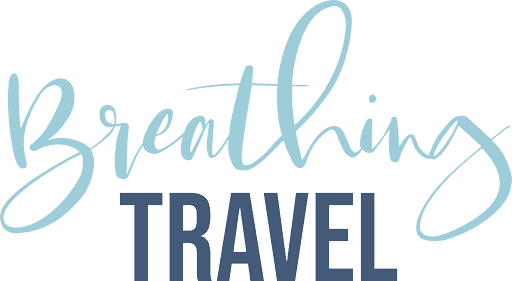
What to Pack for Australia: Essential Packing List
I first came to Australia in 2006. It was the month of July when I arrived and even though I knew it was “winter” in Australia, I thought it was going to be nice and warm with the sun shining every day and I wouldn't need any warm clothes.
While this is partly true, I mean the sun shines perfectly all day, it does get pretty damn breezy at night. Even though Brisbane is located in the Sunshine State Queensland, imagine further south, there are areas where it snows and there are ski fields with 0 degrees too!
Weather in Australia
Brisbane, the Gold Co ast and Sunshine Coast typically experience a temperate climate, with daytime temperatures ranging from 20 to 27 degrees Celsius.
However, it's not uncommon for temperatures to drop to 10 degrees or even lower at night, especially during the cooler months of June, July and August. This means that packing layers is essential to stay comfortable throughout the day and night.
On the other hand, the northern parts of Australia, such as Darwin and Cairns , have a tropical climate characterized by hot temperatures year-round. Daytime temperatures in these regions often soar above 30 degrees Celsius, making lightweight and breathable clothing a must-have for staying cool and comfortable.
Sydney enjoys a temperate climate with mild winters and warm summers, while Melbourne experiences more variable weather (the weather can change drastically even within 1 day) with cooler winters.
Tasmania, being further south, has cooler temperatures year-round. Pack accordingly for each destination to enjoy your trip comfortably.

The Ultimate Australia Packing List
My guide focuses on essential items for a summer trip to Australia! I'll highlight key items you should pack for popular Australian destinations during the summer months, ensuring you're well-prepared to make the most of your sunny adventures Down Under.
Here's my ultimate Australia packing list:
Flip Flops – Or well, thongs. Because that's what they call them on this side of the planet. Cute, no? In summer, I only live in thongs because temperatures are around 30 degrees Celsius day and night and I frequent the beach like everybody else to cool off, tan and chill. I love my Havaianas which originated from Brazil but are widely available in all shapes and sizes in Australia now too.
Microfibre Travel Towel – Lightweight, quick drying and compact. Turkish Towels are the perfect little thing to throw into your suitcase instead of a bulky bath towel. They come in all sorts of colors and sizes and I carry a microfibre towel on all my travels. They are lightweight, quick dry and simply awesome without taking up any space!
Swimsuit/Bikini – Once again, in Australia, they have another word for your swimsuit . They call them togs or bathers here. Bring one or better yet: bring many! Because there are plenty of beaches and places you will want to go swimming. They say, if you were to visit a new Australian beach every day, it would take you 27 years to see them all! So literally, too many options to choose from.
Sunscreen & Sunnies – With UV levels higher than anywhere else in the world, you wouldn't want to leave your sunscreen at home. I particularly love the Hawaiian Tropic Island Sunscreen as it just smells so nice like coconuts! Bring at least SPF 30+, or better yet 50+ which is waterproof. You will need it, I promise. Getting sunburned was never easier than in Australia. 20 minutes out in the rays without sunscreen and it will be lobster alarm! Oh, and of course sunglasses to protect your eyes.
Warm & Windproof Jacket – Definitely bring a jacket! Especially in winter which is from around June to August, which isn't very long compared to European winters, but it does get cold. The southern parts of Australia also get to have snow in some mountainous areas. Tasmania's climate is also pretty close to the one in Germany. I always have a light jumper and a fleece jacket with me, which keeps me warm on cold nights, flights, heavily air-conditioned bus rides and shopping malls.

Power Bank – I used to always run out of battery on my phone, tablet, and camera all the time. It's been very annoying! In the worst moments too, while looking for directions exiting Central Station and my phone would power off because I had used it for the entire journey to my destination. With the big distances between places in Australia , you will easily run out of power in no time before you even see the next power socket. I never leave the house without my portable power bank, there are so many different ones out there now!

Phone, Camera, Drone – Australia is spoilt with beautiful places, sights and landscapes. I have never seen such a pretty blue of the ocean! The clear skies, red soil in the outback and everything in between are so worth a shot. Or really: many shots! I often get asked how I shoot my photos. I shoot all of my photos and Instagram Reels on my iPhone 15 Pro Max. The quality is outstanding even without a flash or tripod (even though I recommend you get one!).
Love this? Pin to save on Pinterest.
Please note, this post may contain affiliate links, which means that – at absolutely no cost to you – we earn a small commission on sales generated through this website. We only recommend sites we actually use and thank you for your support!
Carolin is a travel expert born in Germany. She has been travelling around the world since 2014 and now lives in her adopted soul home Australia. Her travel advice has been featured on Forbes, Daily Mail, Yahoo!, News.com.au, Tour Radar, Expedia and she's also been named one of the top travel bloggers you need to follow by Tourism Queensland.
Related Articles

The 16 Best Things To Do In Surfers Paradise
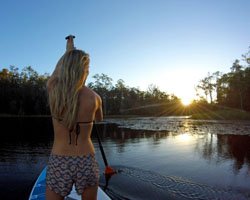
The 25 Best Day Trips From Brisbane
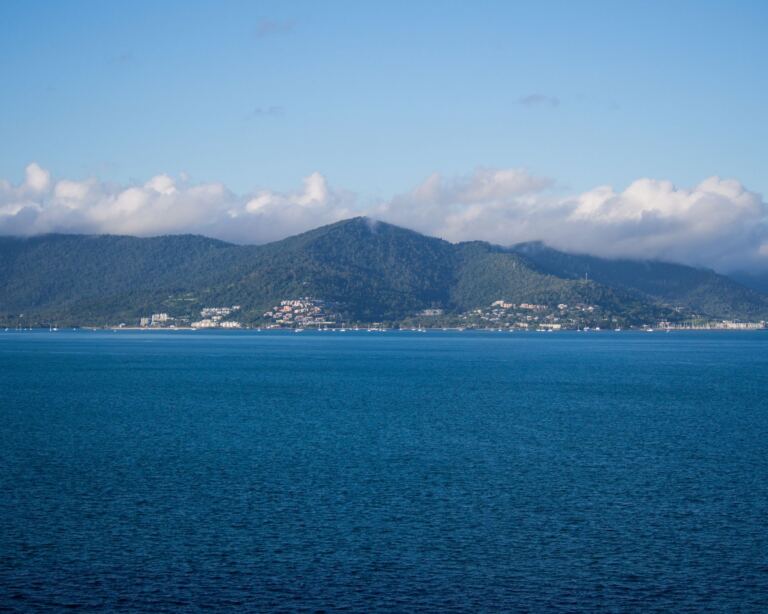
Where to Stay In Airlie Beach: BEST Hotels (Luxury to Budget)

7 Reasons To Visit Noosa

The Best Packing Cubes For Backpacking, Suitcases & Carry On

A Lover’s Haven: Top Romantic Activities In Bora Bora For Couples

120+ Road Trip Essentials Australia (with PDF Packing List)
There is no better way to explore Australia than jumping into your car and embarking on an epic road trip. Whether you decide to stop at motels along the way, or hitch up the caravan and camp your way around, road tripping is by far the best way to see this vast country.
However, being prepared for a road trip will not only make for a much more comfortable journey, it can sometimes even be a matter of safety.
The important categories to cover in a road trip essentials list include:
- Personal items
- Clothing & shoes
- Kids & pet items
- Entertainment
- Communication & technology
- Food & drink
- Camping & cooking
- Organisation
- Vehicle & trailer preparation
- Travel planning
Checking all of the essential tasks and items off your road trip checklist will give you peace of mind and ensure that you’re organised ahead of your next adventure.
We are a participant in affiliate advertising programs designed to provide a means for us to earn fees by linking to ebay.com and other affiliated sites. We may earn a commission from your purchases at no extra cost to you. For more information, see our disclosures here .
Road Trip Essentials – PERSONAL

The easiest way to keep all of your daily road trip essentials together while travelling is in a handy backpack. That way, you can just pick it up and go at any time, knowing that everything you need is in one place.
Medications & Scripts
If you require regular medications, make sure you’ve got plenty packed for your trip. It can help to pack your spare script as well, just in case you need to fill it during the road trip.
Microfibre Towels
Whether you’ll be staying in accommodation or camping, packing 1 x microfibre towel person is a must as they will dry quickly on the road. From showering to swimming, getting clean and dry is essential. It doesn’t hurt to have 2 towels per person if you plan on doing a lot of swimming or using campsite amenities at night.
Check out our review of the Tesalate microfibre towels for caravanning and camping.

Notebook & Pen
It’s always handy to have a notebook and pen or even some pencils and a rubber in the glovebox.
Notebook & pen uses:
- Accident/ incident – jot down necessary details
- Planning – brainstorm travel plans while on the go
- Shopping lists – for the next stop
- Boredom – can doodle or play games
Plastic Bags & Ziplock Bags
You never know when you’ll need to throw an item or two into a plastic bag or seal it away in a ziplock bag. From wet clothes to toilet paper, snacks or even your toothbrush! Plastic bags are also handy to use as shopping bags along the way, plus of course, you’ll need something to store your garbage in.
Uses for plastic/ ziplock bags:
- Keep small things stored together in a ziplock bag
- Separate wet/ dry items
- Storing garbage
Reusable Shopping Bag
Many supermarkets in Australia have now banned single-use plastic bags, which means you’ll need to have your own when ducking into the shops for supplies. A fabric bag is always handy and can roll down to a tiny size for storage.
Spare Money
The last thing you want to deal with on the road is not being able to pay for the goods and services that you require in that moment. Make sure you pack spare physical cash, as well as a spare debit card with back-up money on it. That way, if you’re in the outback with no WiFi reception and no ability to simply transfer money onto the other card, you will still be good to go.
Money to carry:
- Everyday debit card
- Spare debit card (with available funds in case of emergency)
- $1 coins for laundromats
Sunglasses & Reading Glasses
Driving along the bright Australian roads can be harsh on your eyes. Sunglasses are recommended in order to reduce straining and squinting. Plus, for those who wear reading glasses, don’t forget to pack a pair of those as well.
Toilet Paper & Tissues
Unfortunately, you can’t always rely on public toilets and rest stops having a topped up supply of toilet paper. It always pays to have a few rolls of your own in the car. Plus, a box of tissues in the car if someone gets the sniffles will keep everyone comfortable.
A great new camping gadget for keeping your toilet paper clean and dry is with the Dunny Buddy Toilet Roll Holder. It’s definitely handy for grabbing and heading over to random toilet blocks on the go.

- Bug repellent
- Floss & mouthwash
- Hair brush/ comb
- Hair ties & clips
- Hand sanitiser
- Moisturiser
- Nail scissors
- Shampoo & conditioner
- Soap/ body wash
One or two small, compact umbrellas stashed away inside the car door pockets may end up being very welcome on your road trip. If the heavens decide to open up at the exact moment you need to run into a store or attraction, you can simply pop it open and wander on over without getting too wet (hopefully!)
Wallet or Purse
A slim wallet or purse is perfect for slipping into your pocket or bag when you’re travelling on the road. Bulky wallets can take up too much space and are heavier to carry around.
Sometimes, having a shower on the road becomes a luxury, rather than a given. But, if you’ve got a wet washer or some wet wipes, you can still stay hygienic easily enough. They’re also useful for dirty hands when there is no running water nearby.

Road Trip Packing Checklist
[ Digital & Printable ]

What you get:
- Pre-filled with 600+ items
- TICK off items as you pack
- ADD in weights (to organise payload if applicable)
- 17 categories
- PRINTABLE format – fully customisable
- DIGITAL format – completely interactive on your device
- Download once, use it over-and-over
Road Trip Essentials – CLOTHING & SHOES

- 7 x shirts – to wear during the day
- 1 x dressy shirt – for going out at night
Shorts/ Skirts
- 5 x bottoms – to rotate through during the days
Long Pants/ Jeans/ Leggings
- 1 x pair – for going out at night
- 2 – 5 pairs – if it’s cold and you’ll wear them during the day
Jumpers & Jackets
- 1 x light jumper – for mild climates
- 2 x warm jumpers – for colder climates
- 1 x warm jacket – for colder climates
- 1 x waterproof jacket/ poncho – for wet weather
Socks & Underwear
- 7 x pairs socks – for your walking shoes & wearing in bed at night
- 7 x pairs underwear
- 2 x thermal underwear – for winter & cold climates
- 2 x wool socks – for winter & cold climates
- 1 x pair of walking shoes
- 1 x pair of thongs/ slides – for wearing around the campsite & in the shower
- 1 x pair of warm boots – for colder climates
- Bikini/ swimmers
- Board shorts
Road Trip Essentials – KIDS

- Blankets & wraps
- Bottles/ sippy cups
- Nappy Bag (nappies, wipes, cream, change mat, nappy bags etc.)
- A few favourite toys
- Drink bottle
- Educational material (if missing out on school)
- Entertainment (tablet, books, blocks, ball, sand toys etc.)
Here’s more tips for travelling with kids .
Road Trip Essentials – PETS

- Collar & tag
- Balls/ toys
- Prescriptions & special needs
- Ensure microchipping, vaccinations, registration, worming & vet checks are up-to-date
Check out the full guide to travelling with dogs .

Road Trip Essentials – ENTERTAINMENT

Audio Entertainment
Pre-make some playlists of various audio entertainment for long days on the road. Here are 150+ songs for road-tripping to get you started!
Audio Entertainment:
Ball or Frisbee
A great way to help stretch the legs and bodies during rest stops and at the end of the day is by kicking around a ball or throwing a frisbee. If you’re travelling with kids or pets, they will especially love this.
Binoculars are great for spotting wildlife in the trees both during the day and at night. They also give an extra perspective when exploring new places and you want to be able to see various sites a bit closer.

Board Games & Playing Cards
One of the best parts of a road trip is switching off from our highly-stimulated lives and reconnecting with each other and/ or the world around us. Board games and playing cards provide hours of entertainment without a device or battery in sight! Plus, if the weather turns awful, you’ll be thankful to have some easy entertainment on hand.

Books & Magazines
If you’re old school like me and prefer to physically turn the pages, then one or a few (depending on how fast you read!) good books or magazines will always offer plenty of entertainment. Head to the library before you go and grab some holiday reading. Or, look out for books swaps along the way (often found in campground amenity blocks)
Here are some great novels about travelling Australia , plus some fantastic Australian kids books , to read and help inspire you for your own travels.
Electronic Games
To help keep kids entertained during those long travel days, some pre-downloaded games on a device or a handheld gaming console can break up the hours.
If you want to be able to chill out and have your own downtime (either in the car, or at your accommodation), a set of headphones will be handy. Listen to podcasts, audiobooks, music, YouTube videos etc.
Portable Speaker
One of the best ways to chill after a day of road tripping is with some tunes going in the background while sitting around a campfire, reading a book, playing a game or chatting with your companions. Pack your portable speaker with charging cable and you’re good to go!

Tablet or eReader
Another great way to chill out during your down time is to play some pre-downloaded games or make your way through a pile of eBooks. The best thing about a tablet is that you can fit a lot of entertainment into one small device, saving you lots of space and weight.
Road Trip Essentials – COMMUNICATION & TECHNOLOGY
These days our phones do a pretty damn good job of taking photos. But if you want something on top of that, such as a drone, GoPro or DSLR, then don’t forget to pack your kit, along with the charger and batteries.

Camping App
If you’re camping during your road trip, make sure you download a camping app such as WikiCamps or Camps Australia Wide. These apps are invaluable tools for finding camps, drinking water, dump points, info centres and loads more.
Here are over 25 Apps for Travelling Australia , that will enhance your trip.
What would a modern-day road trip checklist even look like without chargers?!
Chargers to remember:
- Laptop/ tablet
- Bluetooth speaker
Map App/ GPS
If your vehicle doesn’t have a GPS system already installed, make sure you’ve got access to Google Maps or similar on your device. To ensure you’ve always got offline map availability around Australia, you can pre-download maps on apps such as WikiCamps , Maps.me or Hema Maps .
- Pre-download maps
- Use offline
- Save on mobile data
- Maps run off GPS when you don’t have reception
Portable WiFi Modem
You can quite easily use your mobile phone data while you’re travelling, if you have enough of it. However, another option is to take a portable WiFi modem with you for extra internet usage along the way.
A portable power bank that can be charged in your car as you’re driving is a great way to keep all of your devices topped up when you’re out and about.

Satellite Phone
If you plan on heading off the beaten track for any length of time and know that you won’t have phone reception, carrying a satellite phone can become a matter of personal safety. They can be expensive, but with a second hand unit and a small plan, just to cover the time that you’ll be travelling, it means you’ll still have communication with friends, family and emergency services if need be.
A UHF Radio is an essential road trip item for travelling in Australia. This is the main form of communication between truck drivers, passenger vehicle drivers, oversized load pilots and station workers.
Reasons to have a UHF Radio:
- Communicate with truck drivers
- Hear if there are any oversized loads coming so that you can move off the road
- Call for help in case of emergency
The main channel to use on the highways in Australia is Channel 40, which will allow other drivers to contact you and vice-versa if need be. Here’s the full guide for travelling with a UHF Radio in Australia .

Road Trip Essentials – FOOD & DRINK
Insulated water bottles.
Rather than carrying cartons of bottled water, which are awful for our environment, make sure every traveller has their own insulated water bottle.
You can carry a 20L water jerry can in the back or the larger 10L containers of water and fill your bottles from there. Even though you may not be filing the bottles up with cold water, the insulation will keep the water from boiling in the car from the heat of the sun.

No road trip essentials list is complete without an array of snacks to keep you going!
Snack Ideas:
- Cheese & dip
- Fruit/ protein/ muesli bars
- Treats (chocolate, lollies, chips etc.)
Plus, unless you plan on eating out or buying every meal on the go, you’ll need to pack ingredients for breakfast, lunch and dinner into your pantry box and portable fridge/ esky.
Water Containers
One of the main road trip essentials in Australia is water and packing a couple of bottles is simply not enough. You should always carry at least a 20L water container filled up, even if you don’t use it all. In case of break down or emergency, water is the number one resource that all passengers will require.

Road Trip Essentials – CAMPING & COOKING

Many of these items are essentials for those who are camping during their road trip, however, if you’re travelling in a van, check out these van camping accessories .
Aluminium Foil
Alfoil is useful for covering up foods and dishes to pack into the fridge or esky. It’s also great for campfire cooking (especially baked potatoes in the fire!)
Camping Chairs
Camping chairs will always come in handy on a road trip, however they can be rather bulky. If you’re pressed for space, you may choose to go for a waterproof picnic blanket and make use of public picnic tables instead.

Camping Stove/ BBQ
Something small and compact for cooking on will be essential. A camping stove with spare fuel canisters is a great, easy solution. Another option is to pack a small BBQ with a small 4kg gas bottle.

Chopping Board
Essential for preparing meals and cutting up food.
Collapsible Table
You can’t always rely on finding a spare picnic table every time you need one. Having a small, collapsible table in the boot is handy for making lunch on the road, cooking at night and even playing a game of cards.
Alternatively, you could go for a swing-away BBQARM, which easily attaches to either a tow mount or rear bar. They make a great, compact little table, which quickly dismantles and takes up very little storage space in the car.

A small amount of both laundry powder and washing up liquid for cleaning your dishes and clothes along the way are both road trip essentials, whether you’re camping or staying in motels.
- Laundry powder
- Washing up liquid
Fire Lighters
Getting a fire going on the road can sometimes be a bit tricky, especially if you’re foraging well picked over campsites and can’t find much kindling. In case of difficulty, throw in a few fire lighters to help get the fire going at night.
Fridge/ Esky
If you’re camping while road tripping in Australia, you will definitely need some way of keeping your food and drinks cold. A 12v fridge is the best way to go, however a good old esky with ice will also do the trick. You’ll obviously need to keep topping up the ice at service stations along the way if you go for the esky option.

Hot Water Bottles
If you’re road tripping during winter or travelling through colder climates, one hot water bottle per person will be very welcome under the blanket at night.

Every camper needs a good lantern for cooking, cleaning and moving around at night. Don’t forget to pack spare batteries or the cable for charging if it’s a rechargeable one.

Lighters & Matches
Always carry multiple matches and lighters if you’re planning on having a fire every night. It’s less than fun to arrive at camp on a cold night, only to find you’ve got nothing to start a fire with.
Mattress or Roll Mat
If you’re staying in a tent, you’ll need to pack some type of mattress for sleeping on. The easiest option is a self-inflating mattress, however they can be quite bulky to store. Another option is the humble blow-up mattress with a 12v pump that runs from the car. Alternatively, you can go for a simple roll mat underneath your sleeping bag, which will help to insulate you against the cold of the ground, as well as provide some padding.

Mugs or Tumblers
One mug or insulated tumbler per person is all that you’ll need. They will work for both hot beverages in the morning to cold drinks at night. For avid tea and coffee drinkers, you may also want to pack a lidded travel mug for hot drinks in the car.

Throw a newspaper in the car to easily get your fire started each night.
Paper Towel
When it comes to cooking on the road, paper towel is really handy in wiping over semi-dirty dishes and reducing what needs to be washed. It’s also handy for wiping hands and soaking up grease from food.
Pegless Clothesline
If you’re going to be camping during your road trip, you’ll need some way of drying your wet towels from the shower. Plus, if you use a laundry along the way, being able to dry your washing at camp, instead of putting it through a dryer, will save time and money. Having one (or multiple) Pegless Clotheslines with your road trip essentials will take up very little space, yet very much come in handy.

Picnic Blanket
It’s always handy to add a picnic blanket onto your road trip essentials Australia checklist. They’re great for throwing over picnic tables for meals or using as a ground blanket if need be. A picnic blanket with a waterproof backing is even better for those situations where things are a little damp.
Pillows, Blankets & Sleeping Bags
Definite road trip essentials for campers are some pillows and blankets to help stay warm and comfortable at night. For colder climates, a thermal sleeping bag with an extra warm blanket will keep you much warmer.
Plastic Containers & Twisty Ties
You’ll need some way of storing leftover food once packages have been opened. A couple of reusable containers and some twisty ties (or rubber bands) are all handy solutions.
Plates & Bowls
Pack the essential plates and bowls that you’ll need for your road trip. Going for plastic or stainless steel makes them easier for throwing back into the car along the way, without having to worry about breakages. You could even pack some paper plates and throw them into the fire at night, to help reduce the dirty dishes.

Pots & Pans
Ensure you pack at least one pot and one frying pan for cooking. You can also add in a whistling kettle for boiling water, although if you prefer to keep things light, a pot will also do the job.

Tea Towels & Dishcloths
Road trip essentials for washing the dishes while travelling include a couple of tea towels and one or two dishcloths for cleaning. A scourer is also helpful to remove stuck food from plates and pots.
The easiest camping accommodation when you’re road tripping and moving every day is a simple tent or a roll-up swag. The benefit of the swag is that there’s a built-in mattress, which means less packing and less setting up.

A good quality thermos will keep soups and drinks hot for hours. You can make up a batch of coffee or soup in the morning, store it in your thermos and enjoy it all day on the road.

Torch or Headlamp
Along with having a lantern, it’s a good idea to pack a torch or headlamp as well (with spare batteries). A headlamp in particular is much easier for doing nighttime toilet trips, getting things in and out of the car, changing a tyre on the side of the road and even using inside the tent.

Utensils & Cutlery
Some essential utensils and cutlery to pack for your road trip in Australia include knives, forks, spoons, tongs, flipper, wooden spoon and a large serving spoon.
Utensil & Cutlery Items:
- Can opener (or only buy cans with the ring pull)
- Cutlery – butter knives, forks, teaspoons, dessert spoons
- Egg flipper
- Large serving spoon
- Sharp knife
- Vegetable peeler
- Wooden spoon

Washing Up Bucket
You’ll need a bucket or plastic camping sink for washing the dishes after each meal. You can also use it to store all of the cleaning stuff in.

Whistling Kettle
Having some way of boiling water for tea, coffee and dishes is a must have item on your road trip essentials Australia list. However, if you prefer to pack less items, you could just use a pot.

12v to 240v Inverter
A small inverter, which is designed to plug into a car cigarette socket, will give you the ability to charge things like laptops and camera batteries if you don’t have access to mains power.

Road Trip Essentials – PAPERWORK

Most people never even look at their car manual, but if you’re stuck on the side of the road with a car problem, you might just be thankful you have it.
Double check that your insurance is up-to-date before hitting the road and make sure you’re covered for everything that you intend to be covered for. Pack a copy of your insurance policy number and contact details into the glove box, in case of an accident.
Insurance Tips:
- Ensure payments are up-to-date
- Ensure you’re covered for everything
- Pack policy number & contact phone number into the glove box
Here’s everything you need to know about Caravan Insurance in Australia .
Licence/ ID
Something we should never leave home without is our driver’s licence or some form of ID. This will become especially important when entering licensed venues along the way. For travelling kids who have a school ID card, it’s a good idea to pack that as well, just in case they need to show proof of age for various attractions.
Licences to include:
- Licence for driver/s
- Photo ID for 18+ travellers without a licence
- School ID for kids (if applicable)
Registration
These days, most authorities can do a quick rego check with their system and see whether or not your vehicle and trailer are registered. However, it can help to carry registration papers in the glove box just in case you need proof (especially if you don’t have internet access at the time).
Registration Paperwork:
- Ensure registration is up-to-date
- Pack paperwork into the glove box
Here’s everything you need to know about Caravan Registration in Australia , with state-by-state costs and regulations.
Roadside Assistance
Make sure you’ve got a good roadside assistance policy to cover you for various break-down situations that may occur during a road trip in Australia. Pack the paperwork with membership number and the roadside assistance phone number into the glovebox.
Roadside Assistance Paperwork:
- Ensure your car is covered
- Ensure your caravan/ camper is also covered (under the same policy if possible)
- Pack membership number & contact phone number into the glove box
Here’s everything you need to know about Caravan Roadside Assistance in Australia .
Road Trip Essentials – EMERGENCY

Emergency Roadside Kit
All travellers should include an emergency tool kit on their road trip checklist, whether you’re sticking to the highways, or going off the beaten track.
Emergency Kit Items:
- Basic tools
- Pocket knife
- Tyre repair kit
- Spare fuses
- Electrical tape/ Duct Tape
- Torch with spare batteries
- Reflective safety vest
- Reflective triangle
- Window breaker

First Aid Kits
When travelling throughout Australia for any length of time, you should always have a well-stocked First Aid Kit in your car. I also recommend packing a Snake Bite Kit, which will have the specific snake bite bandages with the square indicators on them.
For a full list of over 40 items, see our First Aid Kit Checklist .
Below are some pre-made First Aid Kits by Survival, which contain absolutely everything you should need to aid you in an emergency situation.

Survival First Aid Kits (eBay) →

Survival Snake Bite Kits (eBay) →
Jumper Leads or Battery Jump Pack
Another essential road trip checklist item is something to be able to jump start your car with, in the case of a flat battery.
Jumper leads are handy if you can hail down another car and jump off their battery. However, that’s not always possible. In which case, carrying a battery jump pack is a much better option, especially if you plan on travelling a little more remotely.

You should never fully rely on your phone maps when you’re travelling. Although it’s definitely recommended to pre-download offline maps using your GPS system of choice, what will you do if your phone charge dies? It’s always wise to have a good quality paper map of the area in which you’re travelling through as a back-up.

PLB (Personal Locator Beacon)
A Personal Locator Beacon is a device which will send out an alert to emergency services with your exact GPS location. They are generally carried by hikers, 4WDers and other people who engage in activities that isolate them from quickly being able to receive help in case of emergency.
It’s not essential to carry a PLB as a road tripper unless you plan on heading off the beaten track and will be unreachable if you need help.
Recovery Tracks
Recovery tracks are not just for 4WDers. Even if you are road tripping in a 2WD vehicle, it is still possible to find yourself stuck in damp ground at a campsite, national park or any other unsealed parking spots.
A set of plastic recovery tracks are a simple way to get out of a boggy situation if there’s no one around to pull you out.

Spare Tyre/s & Jack
Check to make sure you’ve got at least one good spare tyre for your car and another for the trailer (if applicable), plus a jack.
- Car spare tyre – inflated with plenty of tread
- Trailer spare tyre – inflated with plenty of tread
4WD Recovery Kit
If you plan to head along some unsealed roads, bush tracks and off-grid camping areas, it’s essential to add a 4WD emergency kit to your road trip checklist.
4WD Recovery Kit Contents:
- Snatch strap
- Tree trunk protector
- Extension strap
- Snatch block
- 2 x bow shackles
- Winch dampener
- Tyre deflator
- Heavy duty gloves

Road Trip Essentials – ORGANISATION
Car seat organiser.
The glove box can fill up pretty quickly with all of the bits and bobs you want to be able to grab in a hurry. Instead, use a car seat organiser. That way you can store all of the things you need to access quickly in organisational pockets. From tissues and wipes, to suncream, bug repellent, chargers and more.
If you’re travelling with kids in the back, over the seat organisers are the perfect place for them to stash their snacks, colouring books, devices and everything else that would otherwise end up on the floor.

Having a dedicated day pack is going to make life on the road so much easier. All of the items that you need with you at all times (even if you’re not in the car) should be stored in the day pack.
Day Pack Items:
- Maps/ guide books
- Water bottle
Overnight Bag
Rather than having to unpack half of you car every time to stop for the night, take an overnight bag to take into your accommodation with you. The main things that you’ll need are toiletries, towel, clothing and all of the valuables.
Packing Cubes
If you really want to maximise your storage space, roll your clothing up into packing cubes. You can easily organise clothing into either days or categories and even roll them back up once dirty and stack them back away for laundry day (or when you get home). If you want to go the extra mile, you could label each cube or colour-code for ease of use.

Roof Storage Box
A waterproof storage box on the roof provides a secondary place to store some of your road trip essentials. For items that don’t need to be accessed every day, the roof can be a good place to store them.
Rubbish Bin
A little zippered and collapsible rubbish bin for the car is the best way I’ve found to keep all of the trash locked away in one place, without fear of spillages. Here are 15 camping garbage bin ideas .

Storage Tubs
Depending on how you want to pack things, it can help to have lidded storage tubs stacked in the back of the car, labelled with what’s inside. That way, when you are making a beeline for a particular item, you can simply pull out that tub and find what you’re looking for.
Washing Bag
Have a dedicated collapsible bag for all dirty washing so that it doesn’t get mixed up with the clean clothing. Once it’s full or you can get to a laundry, just grab it and off you.

Road Trip Essentials – VEHICLE PREPARATION

Check Vehicle Fluids
Check and top up (if necessary) all of your car’s fluids.
- Windscreen wiper water
- Brake fluid
- Transmission fluid
- Radiator coolant
Check Vehicle Lights
Go around and check that all of your lights are working on the car.
- Indicator & hazard lights
- Brake lights
- Additional spotlights & light bars
I recommend getting a good set of rubber floor mats for your car as a road trip essential item while travelling throughout Australia. From the outback dust, to the coastal sands and all of the mud, grass and dirt in between… it’s all going to end up embedded in your car floor carpet if you don’t cover it up!
Fuel Top Up
Fill up the car’s fuel tank/s and any jerry cans that you’re carrying for spare fuel.
- Car fuel tank/s
Phone Mount
If you need to use your phone for maps or anything else while driving, make sure you’ve got your phone sitting in a mount or cradle. It’s illegal to have your phone in your hand while driving in Australia and the police will not hesitate to fine you for it.
Spare Car Key
Packing a spare car key can be helpful in case something should happen to your usual set. Trust me, it’s not unheard of to loose the car keys somewhere along a bush walk or god knows where else!
Of course, the second key needs to be accessible, which isn’t always going to be the case. So, think of a good place for the second key – maybe in your partner’s handbag or in the caravan.
If you’re travelling through the urban areas of Queensland, New South Wales and Victoria, you’ll most likely find yourself travelling along some toll roads. To pay for the tolls, you’ll need a toll tag in your car (loaded up with credit), which will automatically beep and deduct the fee as you drive through the toll point.
To get a Toll Tag, which will cover you for all toll roads around Australia, head to Linkt .
Tyre Pressure
Make sure all of your tyres (including the spare) are pumped up to their recommended PSI.
Where to find correct tyre pressure for your car (if the tyres are standard size):
- Owner’s manual
- Chart attached to the inside of the car door
Ensure all tyres on the car have plenty of tread on them. If not, get your tyres changed before hitting the road. A tyre blow-out when travelling at 100km/ hr can be catastrophic.
- Legal allowable tyre tread depth in Australia – 1.5mm
- Recommended tyre tread depth in Australia – Over 3mm
Window Shades
Popping a sunshade up across the windscreen makes a massive difference with keeping the car cool during the day when you’re parked in the sun. It also keeps the steering wheel and front seats a lot cooler.
In addition, you can also get sunshades for some of the other windows to help keep the rest of the car cooler.

Vehicle Walk-around
Do a final walk around of your vehicle and trailer, just to make sure that everything is secure and looking good for travel.
Road Trip Essentials – TRAILER PREPARATION

Check Electric Brakes
Plug in the electric brake controller plug when hitching up and make sure that the light comes on (most units will light up when connected correctly).
Check Trailer Tail Lights
Get someone to stand at the back of the caravan or camper and check that the brake lights and indicators are all working as you go through them from the car.
Jerry Can Fuel
Make sure any spare fuel jerry cans that you carry on your caravan or camper are all filled up and that any old, stale fuel has been discarded. Here are all of the legalities for carrying fuel on a caravan , just so you’re aware.
- Diesel for the diesel heater
- Fuel for the car

Pack Down Inside the Trailer
Make sure inside the caravan or camper is travel-ready. If you want to be even more organised, go and grab yourself our FREE Caravan Pack Down Checklist and Planning Kit .
- Wind down TV aerial
- Lock in/ remove TV from its bracket
- Close all roof hatches
- Close & lock all windows
- Open all blinds & curtains
- Secure all loose items
- Remove bunk ladder & place onto the bottom bunk
- Lock in the shower door
- Lock in the room dividers/ doors
- Lock in the fridge & freezer doors
- Lock all cupboards & drawers
Pack Down Outside the Trailer
Make sure the exterior of the caravan or camper is travel-ready.
- Lock all cabinet & hatch doors
- Secure & lock bikes onto bike rack
- Lock entry door
- Fold entry step away
- Ensure awning is rolled away, locked & secured
- Hitch up to the tow vehicle
- Wind up stabiliser legs
- Wind up jockey wheel
- Check tail lights
- Check electric brake controller
Tyre Pressure & Tread
Make sure your caravan or camper tyres have plenty of tread on them and are at the recommended PSI. Don’t forget to also check the quality and PSI of the spare tyre as well.
Spare Caravan/ Camper Key
Sometimes, things just happen and we find ourselves in need of the spare key. Touch wood that you don’t need to use it, but having one in a secondary location may just get you out of an otherwise tricky situation.
Towing Weights
If you’re about to hit the road with a caravan or camper behind you, it’s imperative that you weigh your set-up and ensure that you’re within your legal towing weight limits.
Remember, every time you add, subtract or shift your load, your various towing weights will also change.
Helpful Information for Towing Weights: ◆ All Towing Weights Explained → ◆ 3 Ways to Work out Tow Ball Weight → ◆ Step-by-step Instructions for Weighing a Trailer →
Vehicle & Trailer Walk-around
Always do a final walk-around once you’re hitched up and ready to go. This is where you’ll often pick up if something has been forgotten to be locked, put away or secured.
Road Trip Essentials – PLANNING
Accommodation style.
The type of accommodation you will be using during your travels will largely affect what needs to be included on your road trip packing list. For example, if you will be utilising motels, then you won’t need to bother with camping gear. Alternatively, you may want to Free & Low Cost Camp, which means you may have to plan your stops around campsites that have toilets on site.
Accommodation Considerations:
- Plan camps that have amenities
- Call ahead for vacancies/ bookings with caravan parks & motels
Have an Itinerary
Whether you’re the type to have all plans laid out in a spreadsheet, or you just prefer to wing it, having at least a loose itinerary for your road trip is essential.
Road Trip Itinerary Considerations:
- Travel time frame
- Departure & return dates
- Travel budget
- Final destination (or at least direction of travel)
- ‘Must Do’ stops along the way
Plan Rest Stops
Driving for long periods can tire you out. So, every two hours you may either want to switch drivers or make pit stops for a snack, drink some water, go to the toilet and stretch your bodies. This will help you to remain alert and enjoy your time.

Check for Roadblocks & Restrictions
Roadblocks can put a damper on every road trip, which is why you need to carefully plan the route that you are going to take. Make sure that there are no road works, closures, or accidents on the way. You may want to keep yourself updated until the day you are going on the trip as well as during the trip.
In this regard, you might want to do some research on the traffic as well using Google Maps or Waze. Nothing can ruin your trip more than blockages caused by a traffic accident, which will just lead to tiredness and frustration.
Check the Weather & Road Conditions
If it’s necessary for you to leave on a less than ideal day for the weather (say, you already have your holiday leave and you can’t change it), then you may use current weather and road conditions information to make an update on your route. Not every area will have the same weather, so an alternative route may well save your trip.
If the weather has been unstable (or is expected to be), then you might expose yourself to muddy roads that are difficult to drive on, bushfires or floods. Needless to say, this can put a great question mark on your safety, which is why you may want to find out what the conditions of the road will be.
For an up-to-date look at where there are bushfires around the country, use an app such as Fires Near Me .
Download an Emergency App
We all hope that our trips will go smoothly, but one can never be too sure when disaster may strike. Inform your loved ones about where you are going, stay in contact, and just in case, download an emergency app, such as Emergency+ . While emergency numbers are excellent, apps can also work as a reliable alternative.
Pack up your Home
Your trip starts even before you leave your home. Therefore, before you begin conquering all the wonders of the Australian Outback, make sure that everything in your home is packed up and in order.
House Packing Tips:
- Clean the bathrooms for when you get back
- Wash the bed linen for when you get back
- Vacuum the floors
- Empty all perishable food out of the fridge & pantry
- Empty all rubbish bins
- Switch off appliances
- Lock all doors & windows
- Let a neighbour know you’re going away (get them to clear mailbox & take garbage bins in & out)
- Leave jewellery and valuables in a safe place
- Leave the place looking like someone is still there
- Set the alarm
If you’re packing up for long-term travel, here are 8 tips for packing up the house .
Avoid Driving at Night
Driving at dusk, dawn or at night in Australia is not a wise move unless you absolutely can’t avoid it. Much of our native wildlife are most active during those times, but are much harder to spot, which increases the risk of having an accident and/ or adding to the roadkill.
Now, it’s over to you. Time to start planning and packing for your epic Australian road trip!

Road Trip Packing List
No matter what your accommodation style is, the Road Trip Packing List will ensure that you don’t forget a thing.
- PRINTABLE & DIGITAL
Travel Planning Tools

9 thoughts on “120+ Road Trip Essentials Australia (with PDF Packing List)”
We go road tripping alllll summer usually. These are really really good tips! I love your checklist, it’s something I’ve been meaning to make because we ALWAYS. FORGET STUFF. haha Thanks for all these resources.
Haha it seems as though forgetting stuff is a regular theme. Hopefully you can get out there for some road trips this summer.
We too love road trips as they give such an immersive experience of the places you visit and pass through. But of course one needs to plan so that things run smoothly. This is a very exhaustive and good checklist and has some really interesting points like checking for wildlife.
These are all great tips! I haven’t done a major road trip for a long time but I would really like to do one later this year. Checking for pests and snakes in a caravan that hasn’t been used in a while is a great tip, and so is not driving at night. Driving on a rural road that isn’t well lit (or lit at all) can be a very mentally intensive experience even if the chance of encountering wildlife is low. I wouldn’t have thought about dawn and dusk being active times for animals, either!
Night driving really can be more mentally intense, for sure. Definitely need to thoroughly check the caravan before loading it up for the next trip!
We are big list makers so always good to see another checklist and make sure ours is complete. We sure added a few things this year with more road trips. Good advice to check your route in advance. Especially in summer around here when most of the road construction is done! We often take the smaller roads to travel slower so we can stop when safe. Good planning tips.
I love a good list myself! I think it’s going to be a big year for road trips, as people can’t head abroad. It’s always nice to be able to travel slower if you’ve got the time.
I love love loveeeee road trips and have gone on several before yet I always seem to forget something still hahaa. What a perfect checklist and such a great lifesaver. I’ll definitely have to look into that Emergency+ app!
Road trips are so much fun. Haha there’s always something that gets forgotten!
Leave a Comment Cancel Reply
Your email address will not be published. Required fields are marked *
Privacy Preference Center
Consent management.
- Cookie Settings
Privacy Policy
We collect your Name & Email Address for the sole purpose of Email correspondence from our website. We do not pass your information onto third parties.
Advertising
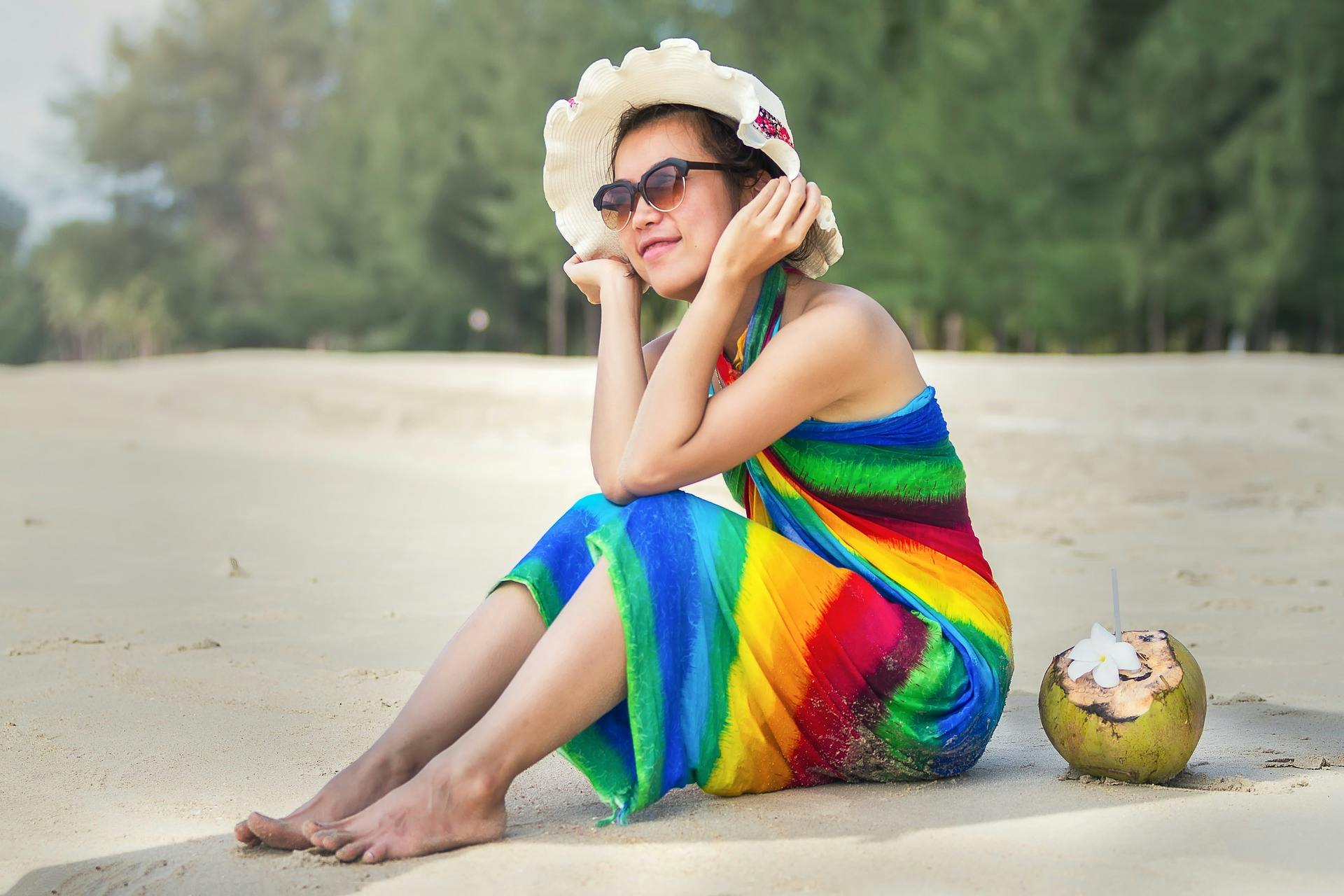
Travel Essentials, Things You'll Need But Might Forget
Written by: Sophie Garrod
Thinking of heading down under? There are a few travel essentials that you must have, but may forget, to give yourself the best travelling experience!
Australia Travel Essentials
1. waterproof phone case.
If you're planning on coming into contact with water at some point during your holiday, a waterproof phone case becomes essential.
No matter if you go snorkelling at the beach or kayaking across a river, your phone will stay protected, leaving you to take as many pictures to post online as you like.
The best cases to get are the ones that have a lanyard attached so you can take it around with you by your neck. They’re really cheap and the pictures will not be affected by the clear plastic. Just don’t purposely drop it in the water though.
For those of you wanting to get a selfie in the Great Barrier Reef but don’t want to fork out on a new waterproof camera, this is a must!
2. Adaptable Australian adapter
With a great number of selfies comes the need for a lot of battery. For all those holiday pictures and videos you’ll likely take, you’ll be using your phone a lot, meaning it requires a lot of charging. Taking a portable charger with you will give you enough power to last the day.
However, this will then need charging itself and so you’ll need an adapter to adapt to the local power sources. Travelling from the UK especially, countries abroad will not have the right plugs for you to charge up your electronic devices.
Maybe even look at getting a universal adapter so if you go travelling somewhere else later on in life, you’ll be prepared.
3. Reef-Safe Sunscreen
Not all sunscreens are created equally. Because of how precious the Great Barrier Reef is, special protection has been created to keep you safe from the sun and preserve the habitat.
It’s important for the health of the aquatic environment that you wear sunscreen that’s free of damaging chemicals. In fact, in some places it’s mandatory that the sunscreen you wear (and you WILL need to wear sunscreen – the sun in Australia is incredibly strong) be reef safe to avoid causing damage to the already fragile aquatic ecosystem.
Even if you’re not going to the famous Great Barrier Reef, you’ll likely be doing activities that involve the ocean, and you don’t want to leave chemical residue in the water wherever you go.
Make sure you have a read through these 30 Green Travel Tips to help you travel more sustainably.
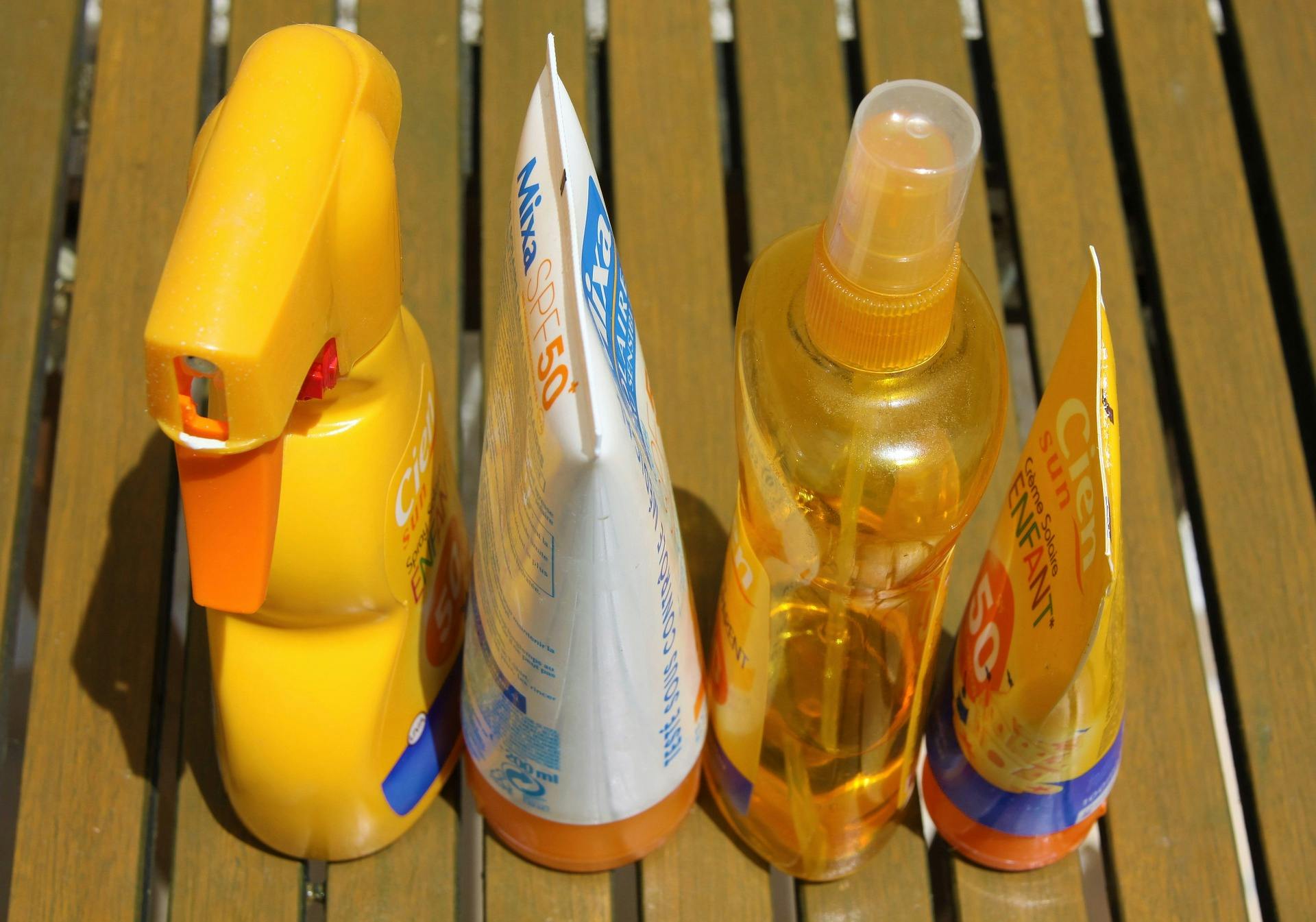
4. Water bottle
You should be taking sunscreen out with you everywhere in Australia and you’re probably aware of this but in case you didn’t, Australia is hot! In the summer, temperatures can reach high into the late 20s and 30s so it’s vital to keep hydrated as well as smothered in sunscreen. Invest in your own water bottle because not only do they save you money, as you won’t need to continue to buy plastic bottles, they're much better for the environment and they keep your water cold.
However, don’t get a regular water bottle that will take up loads of room in your bag. Instead, get a crushable water bottle. When empty, they can turn almost completely flat, saving valuable space for other travelling necessities.
5. Medicine / First Aid Kit
The Australian environment is probably like nothing like you’ve ever experienced.
Allergens and pollen are surprisingly tough to adapt to in Australia, so it’s best to remember to pack some non-drowsy allergy medicine so that you don’t have to spend your best travel days sniffling and sneezing.
Likewise, jet lag is a fierce foe when you’re on the opposite side of the world from home so its highly recommend packing some natural jet lag remedies to counteract its effects. Use it before and at the beginning of your trip and you’ll arrive feeling readier to dive right in to exploring!
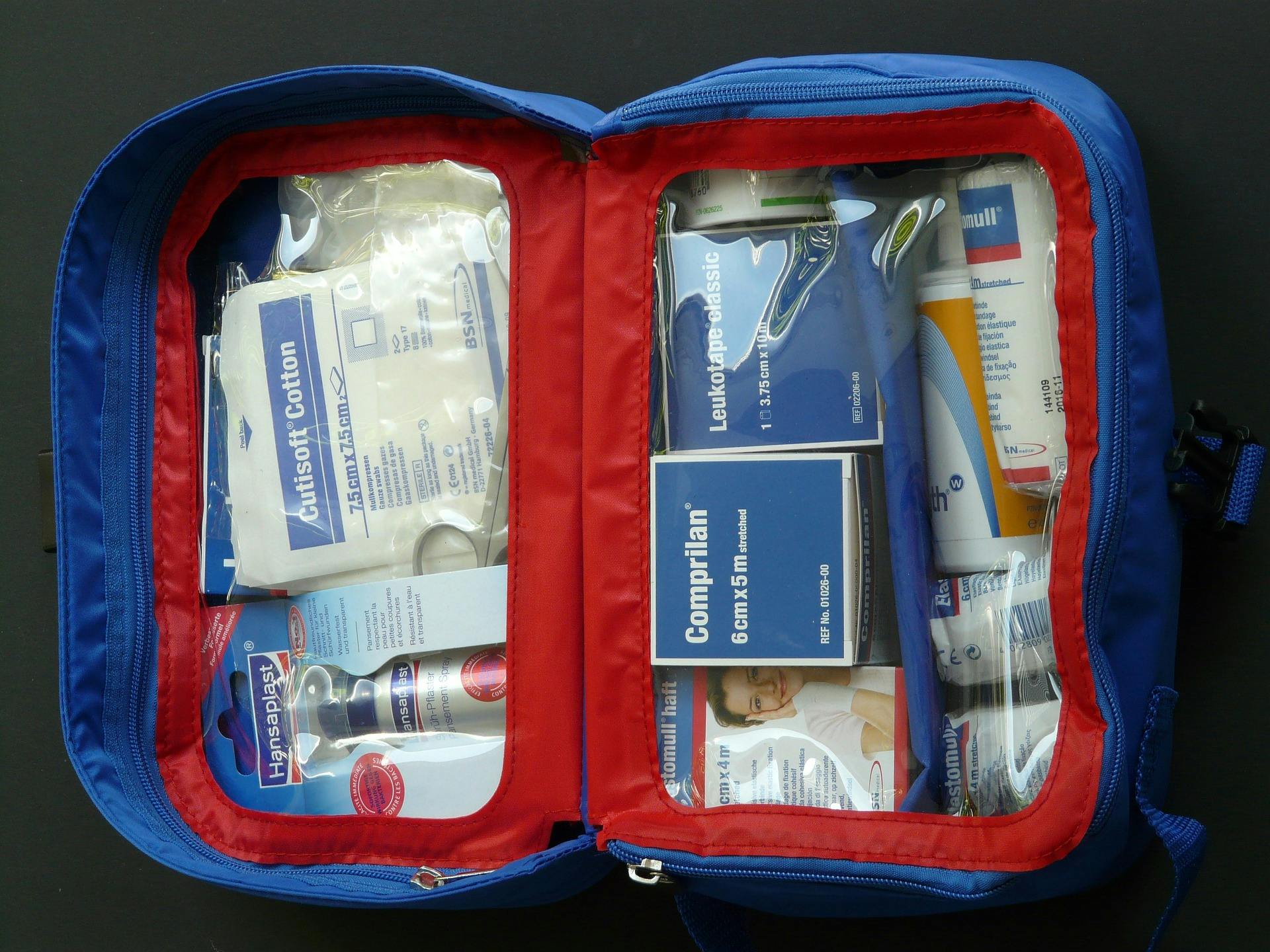
6. Activated charcoal
Staying on the medical theme, activated charcoal is another thing you’ll need to take with you when going to Australia but is easily forgotten.
A combination of jet lag, new food, and a new environment seems to be a recipe for digestive upset. Almost every traveller has experienced traveller’s diarrhoea at some point – if you haven’t, it’s not a fun way to spend your trip.
Activated charcoal helps tremendously with this problem, and serves as a great remedy for food poisoning, should that be something you encounter during your travels.
DO NOT go to Australia without a sarong. They have so many uses you’ll feel lost without one.
They can be used for a beach cover-up, a privacy screen, an emergency towel, a cover for a questionable pillow, and a lightweight blanket while on the road. These thin, colourful items are so handy. If that’s not enough, they are incredibly easy to store so it’s highly recommended to bring one or two on your trip.
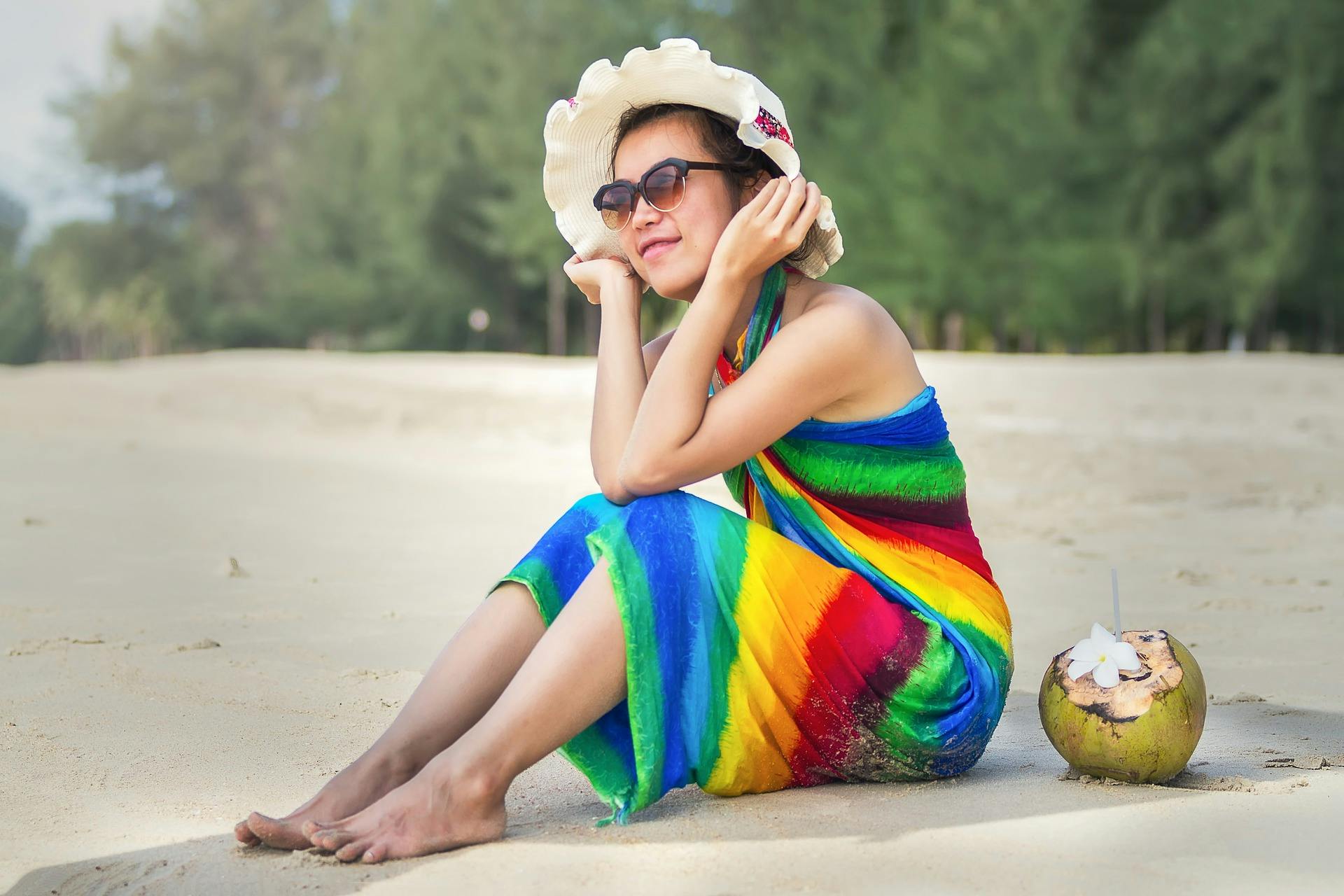
8. Quick dry towel
If you intend on doing a bit of exploring in Australia, packing a wet towel into your backpack every other day gives bacteria a helping hand that it doesn’t need. Thankfully, microfibre towels have made this aspect of travelling much better.
Travel towels are even better at soaking up the water and then drying out quickly. They pack down tiny too unlike beach and bath towels which will fill up, and weigh down, your backpack so storing luggage doesn’t become too difficult.
The fabric may seem a bit strange at first but you’ll get used to it. An absolute must have backpacking holiday accessory.
9. Travel insurance
Finally, don’t go anywhere without buying some travel insurance before you go. This is something that can often be forgotten by travellers and tourists but if anything unexpected happens, you’ll be covered.
Experienced travellers will let you know how important it is to expect the worst and make sure you are protected. Look to get yourself covered for medical, theft and emergency cover so your mind will be at ease.
Get in touch with a travel insurance provider to get coverage for your trip!
Author: After graduating in journalism and media, Sophie started working for Stasher as head of content. Sophie loves travelling, has been around Croatia and has also travelled through most of Western and some of Eastern Europe. Sophie's most important travel accessory is headphones!
Like this post? Please share it
Related articles to read.
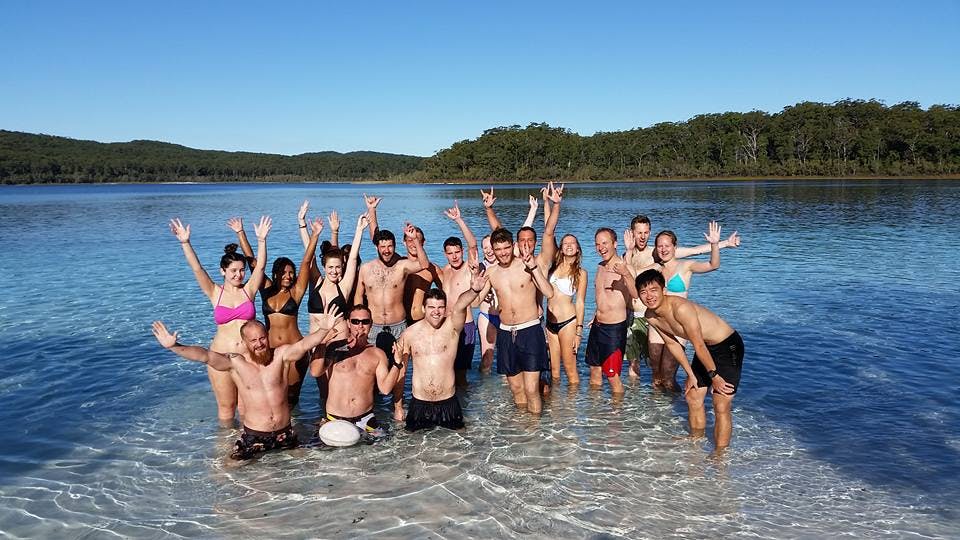
12 Must Do's on Australia's East Coast
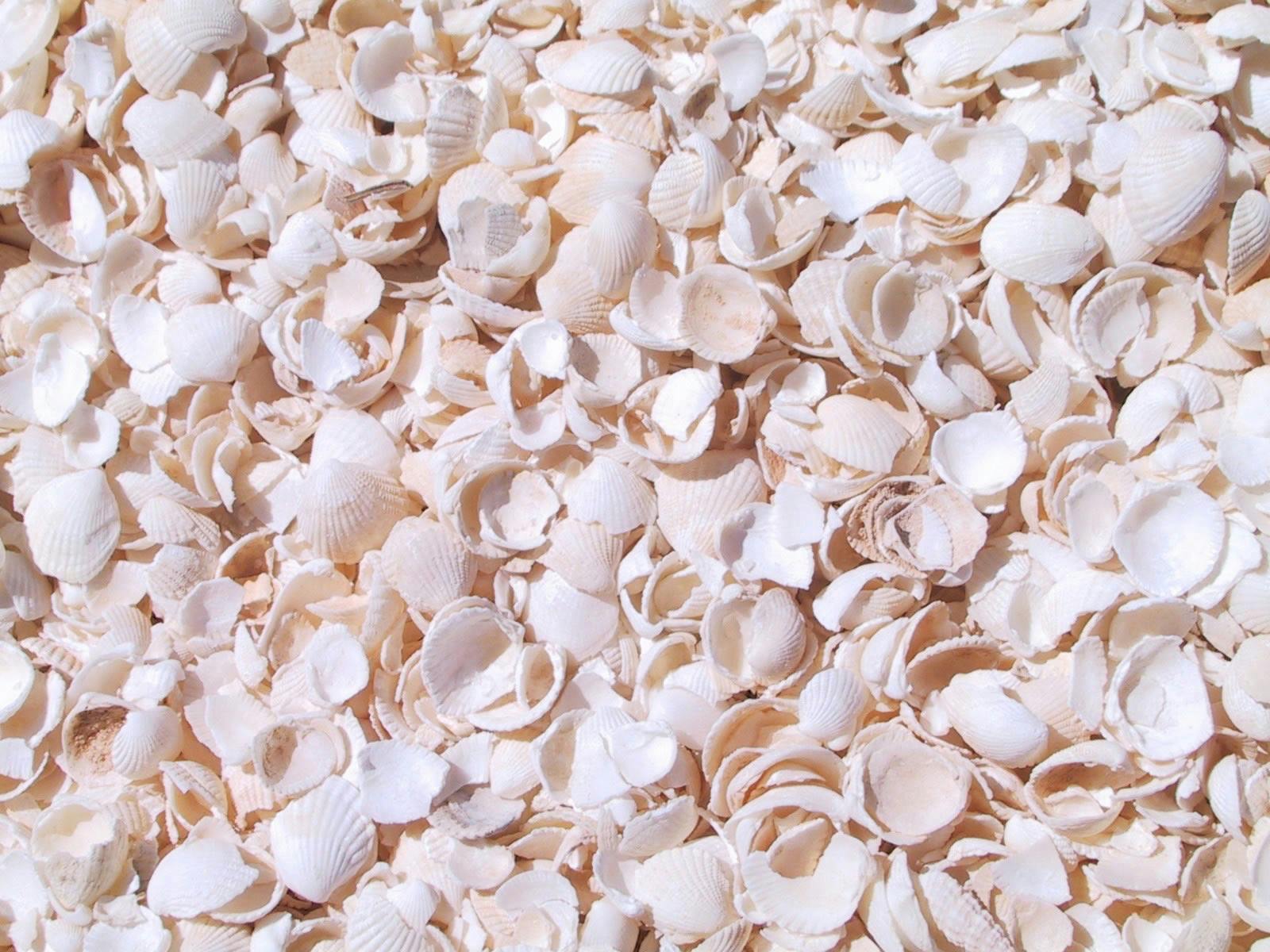
13 Amazing Places in Australia You've Probably Never Heard Of
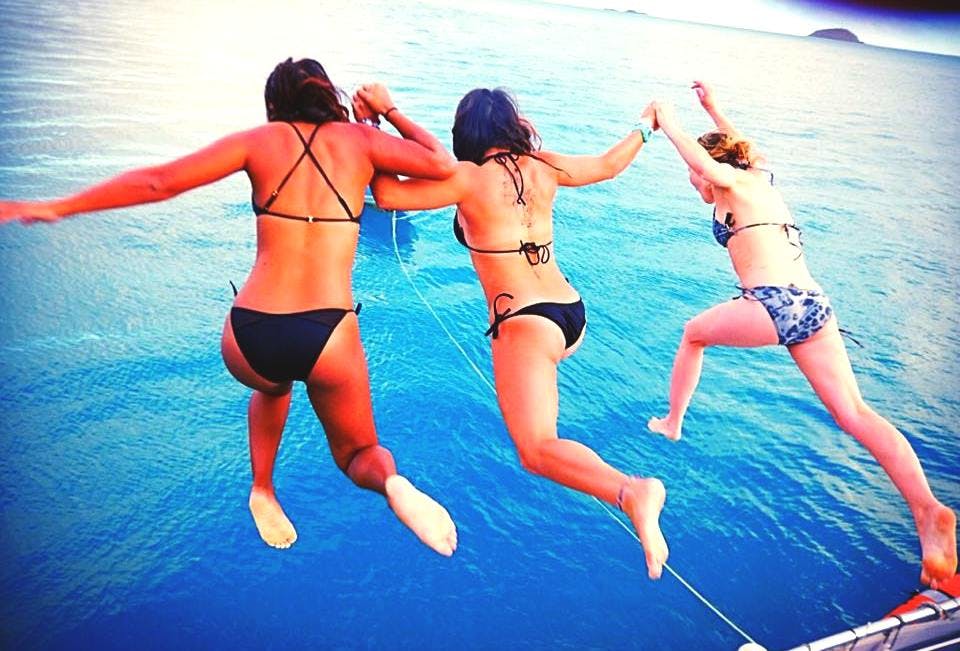
How to Travel East Coast Australia on a Budget
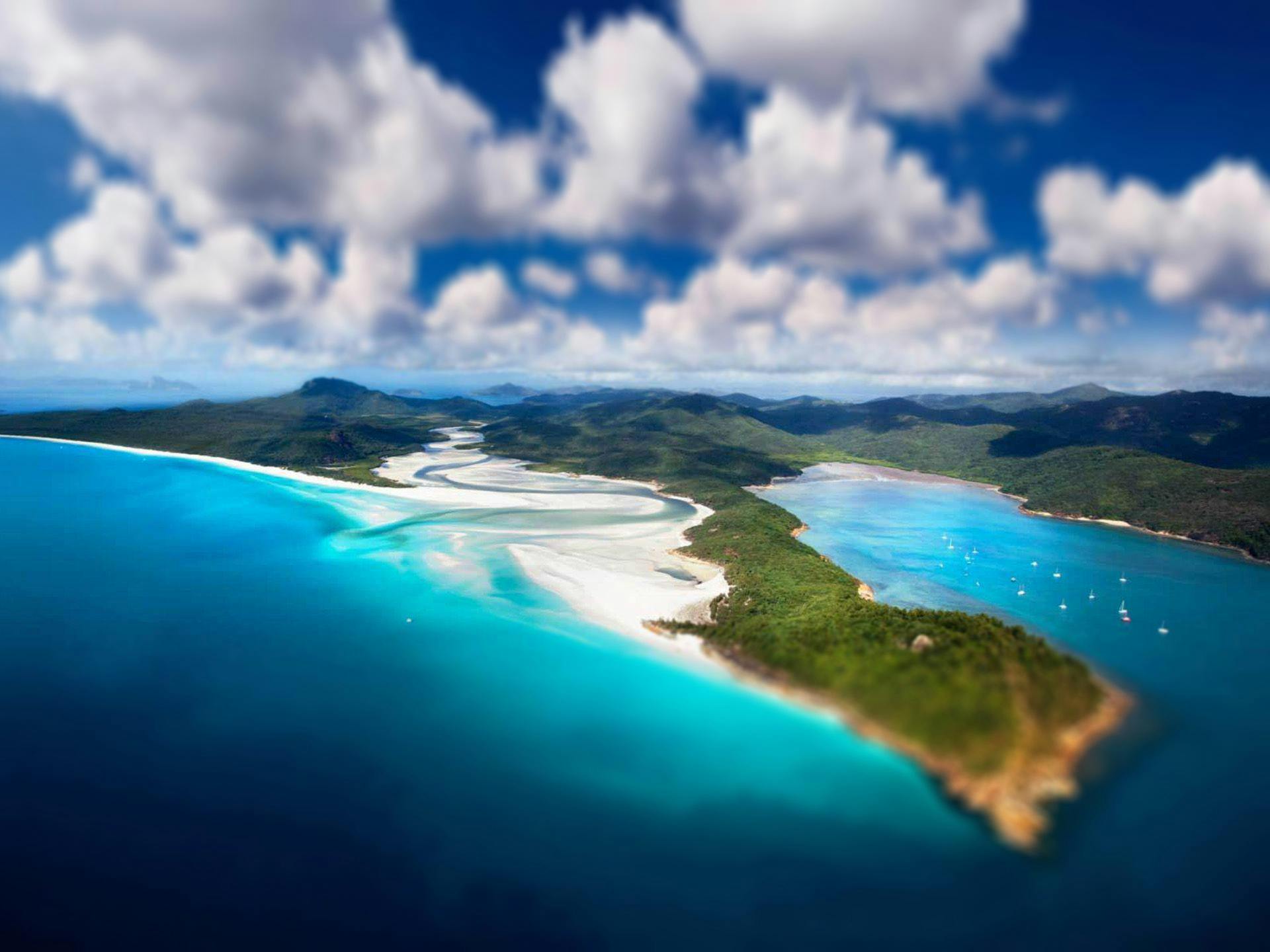
40 Reasons to Visit Australia
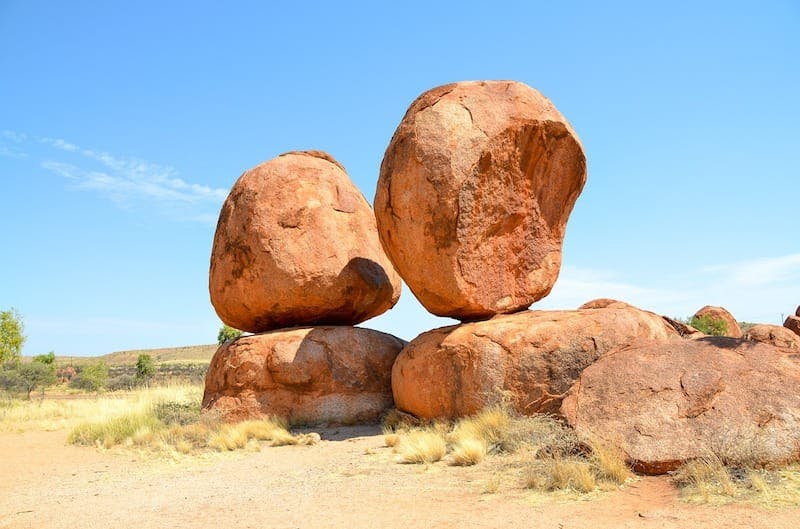
20 Tips for Travelling Australia
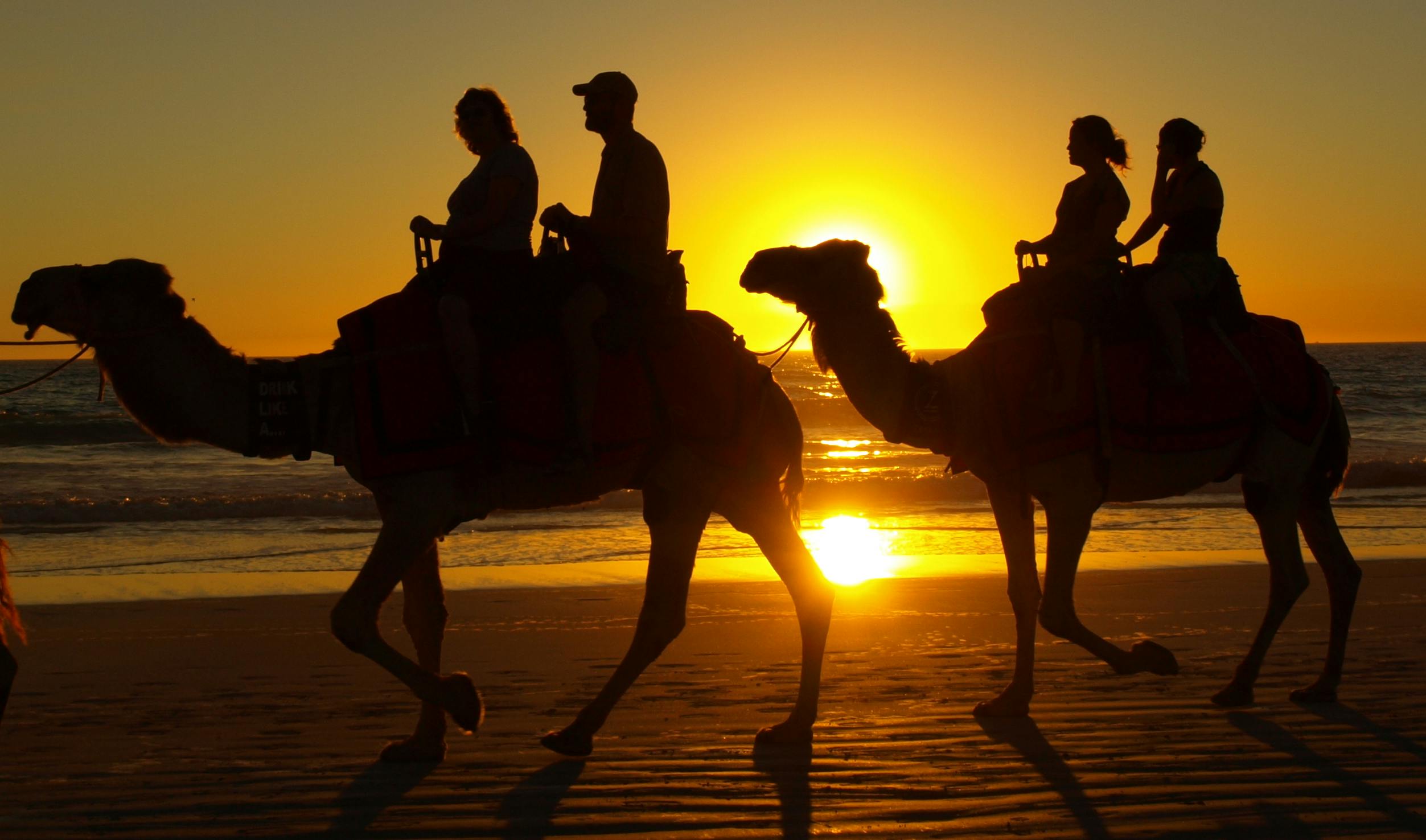
West Coast Australia Guide
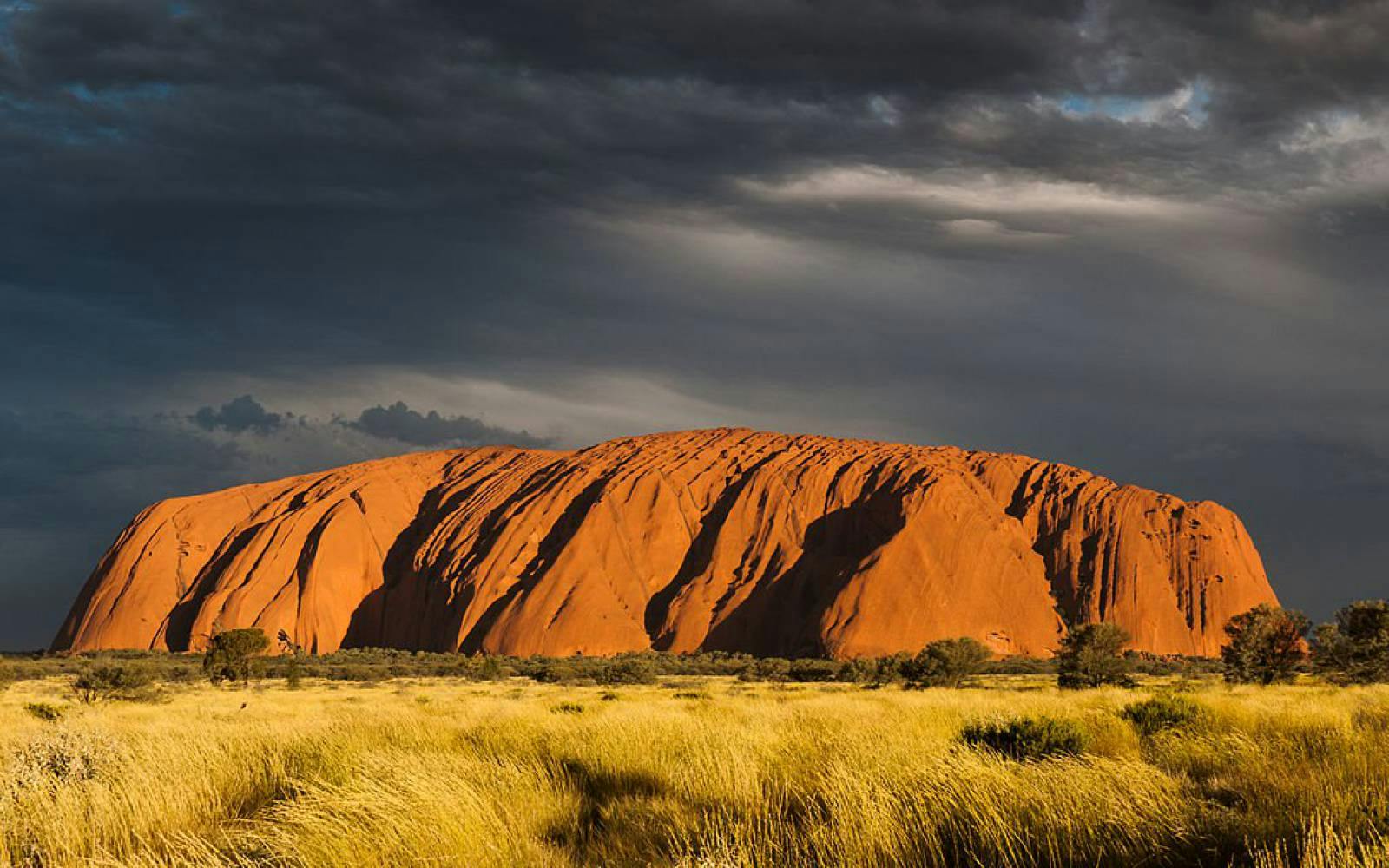
Weird or Interesting Facts about Australia
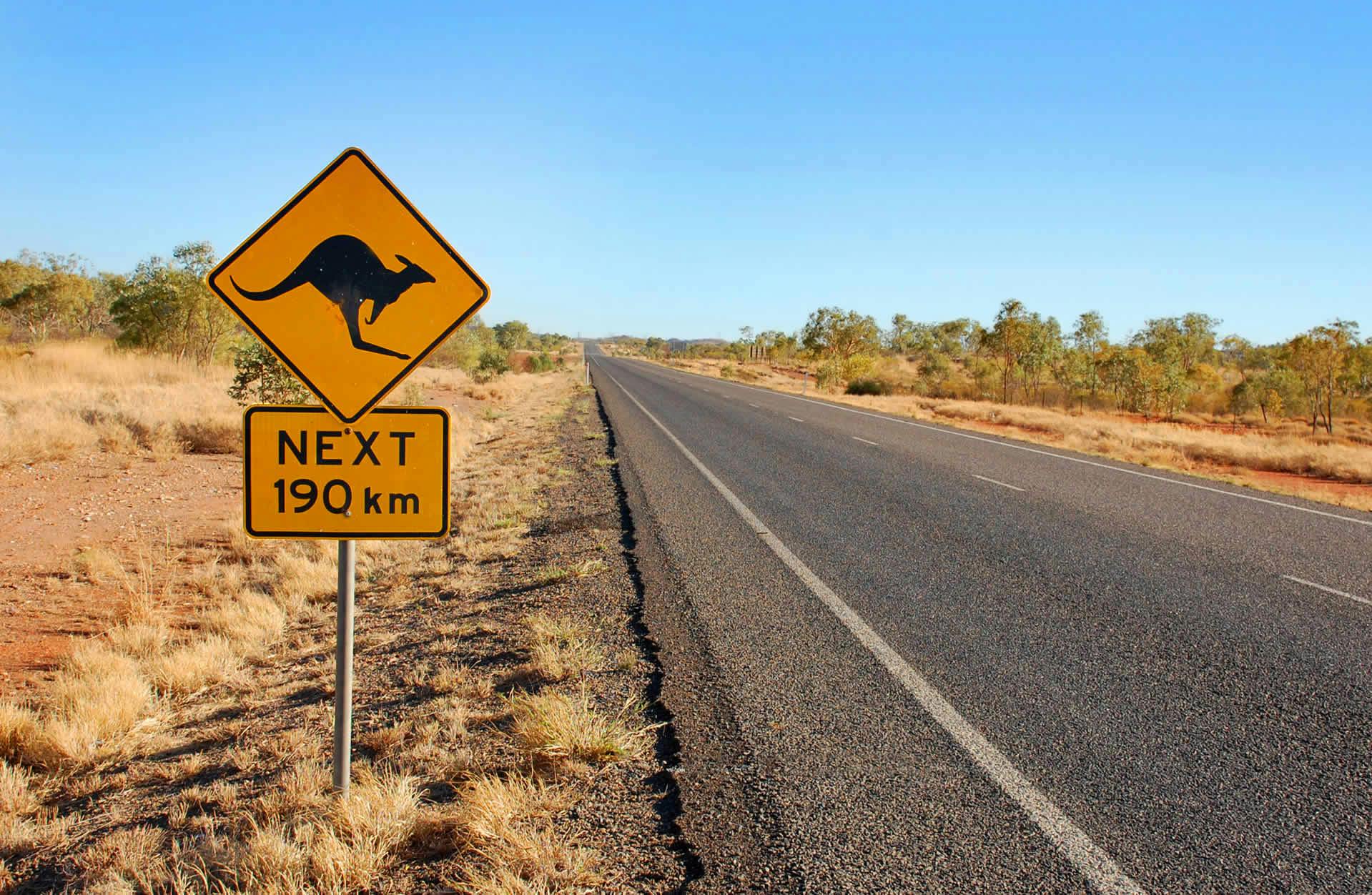
10 Strange Places You Need To Visit In Australia

Big Australia Bucket List
Absolutely EVERYTHING to see, do and experience in Australia
25+ ESSENTIAL Travel Tips for Australia (Know Before You Go!)
Australia, or the “Land Down Under”, is one of the most coveted tourist destinations in the world – with its fine balance between wildlife and environment conservation and cosmopolitan modern-day living.
Both a country and a continent, Australia definitely has a lot in store for repeat and first-time travellers alike! Witness kangaroos and koalas right before your eyes, dip in pristine ocean waters, soak up the summer heat and the tingling sensation of the sun onto your skin, and enjoy scenic views of bustling cities and breathtaking nature throughout your travels!
Be sure to read this guide to our most essential travel tips for Australia before packing your bags and preparing for this once-in-a-lifetime trip! It’s the only list of Australia travel tips you will ever need and it’s everything you need to know before you go!
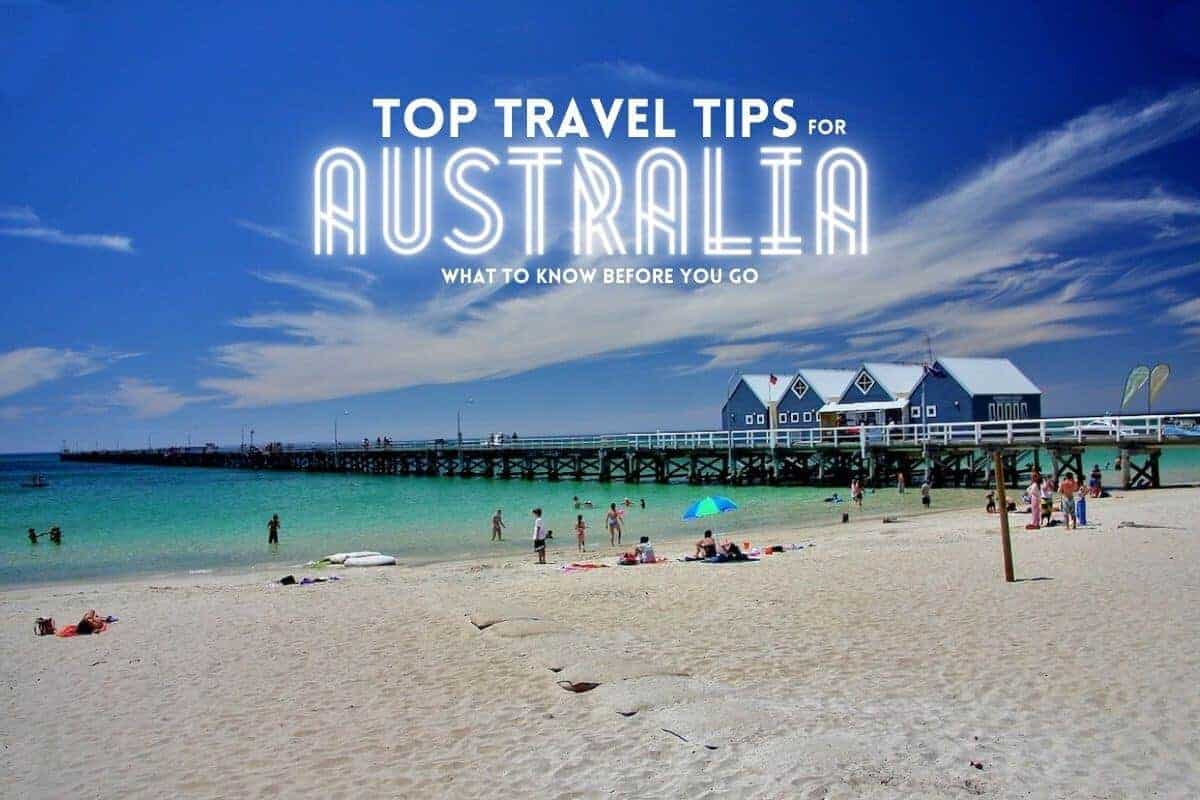
Table of Contents
- 1.1 The Best Time To Visit Australia
- 1.2 Australia is HUGE
- 1.3.1 By plane
- 1.3.2 By bus
- 1.3.3 By train
- 1.3.4 By Ferry
- 1.3.5 By car
- 1.4 Public WiFi Availability in Australia
- 1.5 The Emergency number in Australia
- 1.6 Swim Between The Flags
- 1.7 You have to try local beer, coffee & wine in Australia
- 1.8 Kangaroos and koalas are not that common in Australia
- 1.9 Aussies use Australian English
- 1.10 (Outside of a Pub) You Buy Alcohol either from a Warehouse or A Drive Through Bottle Shop
- 1.11 Is Australia Safe for Solo Female Travelers?
- 2.1 Where are the Best Places to Visit in Australia
- 2.2 How To Plan Your Budget for your visit to Australia
- 2.3 Our Money Looks like Monopoly Money
- 3.1 Australian border control is very strict
- 3.2 Free walking apps for cities in Australia
- 3.3.1 Money changing
- 3.3.2 Credit card skimming
- 3.3.3 Tours from unreliable guides or websites
- 3.4 Learn the Lingo: Basic Language Tips for Australia
- 3.5 Tipping Culture in Australia
- 3.6 Pre-book popular attractions in Australia
- 4 5 Quick Australian Dos and Don’ts
GENERAL TRAVEL INFO FOR VISITORS TO AUSTRALIA
Visa: Unless you are an Australian or New Zealand Citizen or Permanent Resident, or identify as a Torres Strait Island – practically everyone else needs a travel visa to enter Australia. Folks from the USA, UK and several other European countries are eligible for the free Visitor which allows visitors to stay for up to 3 months for each entry in a 12 month period.
That’s plenty of time to explore – but if you want to stay longer, there are other visas available too. Use the Australian Governments (free) visa finder tool to find the right one for you.
Currency: The official currency in Australia is the Australian Dollar ($, AUD). You can withdraw currency from ATMs using your local bank card or a designated travel card. If you are visiting from another country, be sure to check any fees and charges from your bank prior to using it and carry a second source of payment/cash in case your primary card gets ‘eaten’ by an ATM.
Language: English (Although Australia has no ‘official’ langauge, English is the most common language and is spoken throughout the country.) Almost 80% of all residents speak English at home, with Mandarin (2.5%) and Arabic (1.4%) spoken at home in small percentages.
WiFi/Internet Access: Depending on your length of stay and in what country, you can either purchase a local sim card (in advance or on arrival) – to swap out with the one in your own phone to avoid roaming charges. OR, grab a pay as you go portable Wifi Devices which means you can keep your sim active and connect wirelessly. Just remember to turn off data roaming so you don’t incur any hefty charges.
Essential Travel Tips for Australia for First Time Visitors: The Practical Stuff
The best time to visit australia.
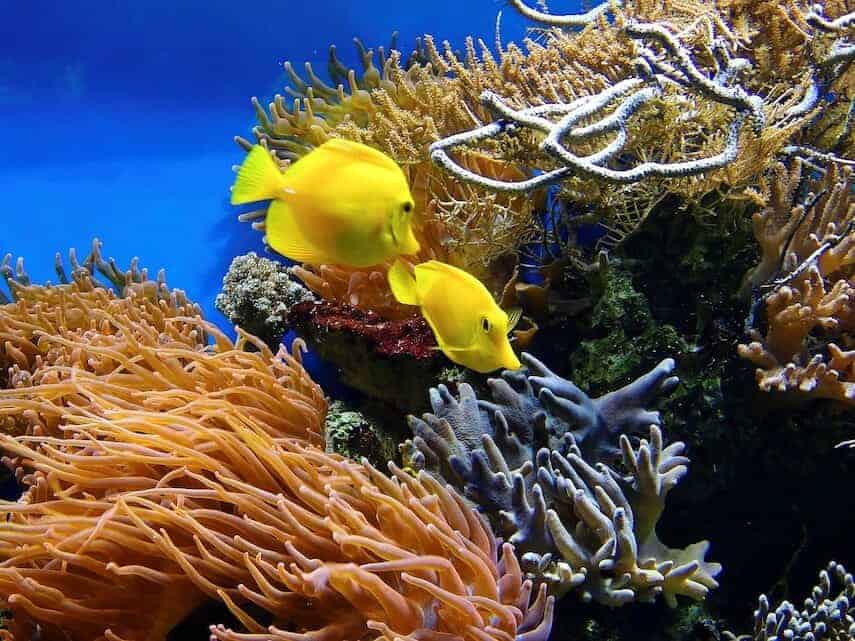
If you’re in it for the most perfect time to visit – specifically when the weather’s not too hot nor cold and when flights are relatively cheap – you must go between March-May and September-November.
If you’re the “always in for summer” type of traveler, you must visit from December to February. During this season, the average temperature can be anywhere between 15-30 degrees. So, be sure to bring a water bottle and hydrate!
If you’re in it for a lot of food and wine thrills, you have to plan your visit from March to May (a.k.a. the Autumn season). You have to brace yourself, though! This particular period is the busiest of all. Expect big crowds, busier places, and jam-packed tourist destinations.
If you fancy an all-white season and game for an intense snow skiing sesh, head for the mountains in Victoria, Southern New South Wales, and Tasmania sometime during the winter. The Winter season in Australia begins in June and extends up until August.

If you want to try diving, surfing, kayaking, canoeing, and other water-related activities and experiences, time your visit for between September to November and head to the North East coast. Remember to pack your sunblock and sunglasses along with you!
TOP TIP: Wear sunblock. Even on a cloudy day. The sun is very strong in Australia and it is easy to get burnt. Don’t stand out as a tourist by turning bright red!
Australia is HUGE
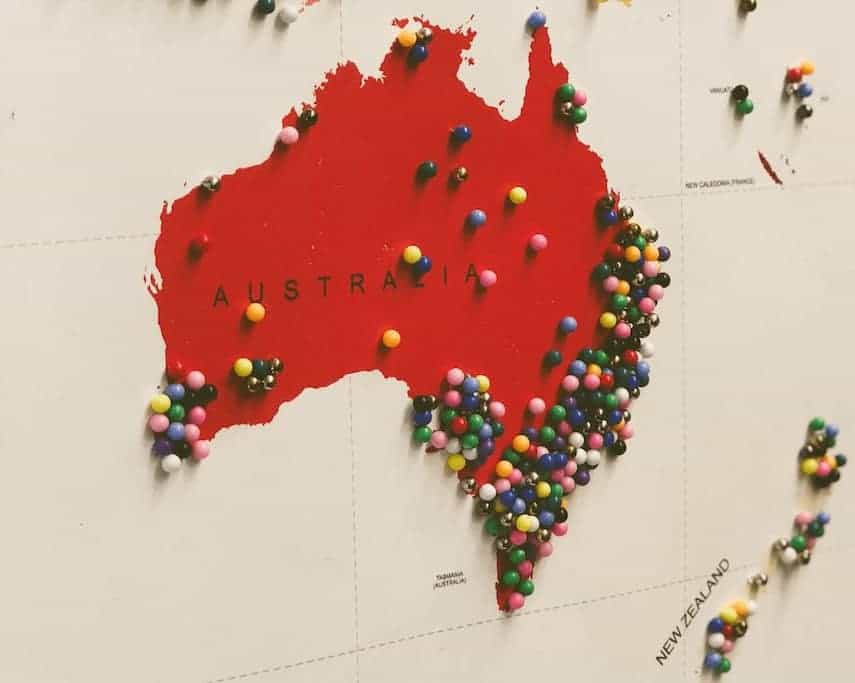
How To Get Around Australia
Australia sure is a BIG country to explore. But, would you believe it if I tell you it’s very easy to go around in it? Australia has a lot of transport systems made readily available and accessible for all types of travellers out there!

Australia has a bunch of domestic airlines to save you in travelling around large distances. You may start getting yourself familiar with the following: Qantas, Virgin Australia, Jetstar, Tiger Airways, and Rex. Knowing about their routes might give you a headstart in planning for your very own itinerary, as well as your budget!
If you’re one who enjoys travelling the long way to explore whatever you can, taking the bus in Australia is perfect for you to cover longer distances. Be comforted to know that coach and bus travel in the country is not only comfortable but also efficient and reasonably priced given their amenities. Enjoy free Wi-Fi, reading lights, and airconditioning throughout!
If you want to witness Australia in the most scenic yet convenient way possible, opt for the trains. Believe me when I say the train is the way to go.
- TrainLink: It runs from Sydney through New South Wales, down through Canberra to Melbourne and North to Brisbane in Queensland.
- V-Line: It connects Melbourne with regional hubs located in Victoria.
- Queensland Rail: It covers the entirety of Queensland.
- TransWA: It has services through Western Australia.
- The Ghan Train and Indian Pacific: Both generally sweep through the country. The Ghan specifically travels to and from Adelaide and Darwin, Red Centre, and the Top End. The Indian Pacific, on the other hand, runs between Sydney and Perth, through Broken Hill, Adelaide, and Kalgoorlie.

If you want to experience everything Australia offers, you also have to try getting on board on a ferry (and depending on where that is, you may need to have the stomach for it, as well!).
- Spirit of Tasmania: It operates a nightly passenger and vehicle ferry service from Melbourne (Victoria) and Devonport (Tasmania) – and is a notoriously bumpy crossing.
- SeaLink: Connects Cape Jervis (South Australia) and Kangaroo Island multiple times a day.
- Other ferry services: Other ferry services also operate that connect suburbs to capital cities such as those that run in and around Sydney Harbour, or those on the Swan River in Perth or on the Brisbane River.

Travelling in a car in Australia will give you comfort and the best road trip experience there is in the world! In case you didn’t know, the country boasts of its network of well-maintained roads.
Public WiFi Availability in Australia
Yup, don’t worry. We understand the need to connect to the internet, especially when traveling abroad. If you don’t have a local sim card and/or a portable WiFi device, lucky for you — we searched for this complete list of free WiFi hotspots around Australia . Just remember to be cautious, though. Hackers can easily have access to your personal information when you connect to these.
The Emergency number in Australia
Although we’re hoping you won’t ever have a need for this number, it’s always better to be prepared than sorry. Dial 000 (triple zero) when you encounter an emergency and are requiring the assistance of the police, fire, or ambulance departments.
Swim Between The Flags
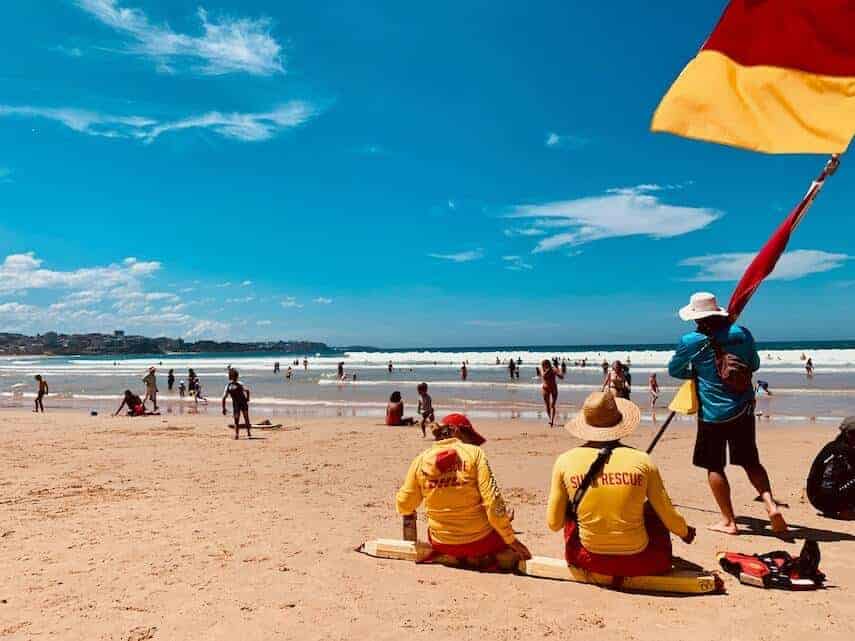
While spending a day on the sand and frolicking in the water sounds like a great idea – a lot of beaches have lifeguards present for a reason. The rips around Australia can be life-threatening and must be respected. If there is a lifeguard on duty on the beach you find yourself on, be sure to swim between the flags they have set up. They are there to show you the safest point on the beach for swimming.
You have to try local beer, coffee & wine in Australia

In case you didn’t know, Aussies invented the Flat White. And if you are a coffee drinker, you have to try one in Melbourne – where coffee culture is practically a religion!
Aside from coffee, you may also want to spend some time enjoying the Australian craft beer scene, and having a glass ( or bottle ) or two of some of the worlds best wines. From Margaret River to the Yarra Valley, Hunter Valley to the Barossa – there is no shortage of incredible wine in this country.
Just remember to be a responsible drinker – and absolutely DO NOT drink and drive.
Kangaroos and koalas are not that common in Australia

There are plenty of places to see them though. From numerous national parks and wildlife sanctuaries to secluded spots out in the country. Read our complete guide to Australian animals here to find out more. Also, not all Aussie animals are trying to kill you. Just around 75% of them!
Aussies use Australian English
Australian English is relatively different from American English or any other English for the matter – specifically in spelling, pronunciation, slang and shortening of some words. Oh and swearing is pretty common among friends in day to day conversation.
‘Mate’ is used universally – whether you’re the friend of a person or a complete stranger. It is a uniquely Aussie phenomenon which when used implies a sense of shared experience, mutual respect and unconditional assistance.
Nicknames, and the shortening of most words – often ends in -O, -A or -Y/-IE: Stevo (name), Arvo (afternoon), Straya (Australia), Barbie (BBQ) Footy (Football – Australian, not English), Accadacca (AC/DC), Tinny (can of beer), Servo (Petrol/Service Station), Bottle-O (The equivalent of a British ‘Off-Licence’ where alcohol is purchased for consumption off the premises, etc)
This might take a little bit of getting used to and may need a bit of translation from a local from time to time (but scroll down – we have included a few basic words below to give you a head start!)
(Outside of a Pub) You Buy Alcohol either from a Warehouse or A Drive Through Bottle Shop
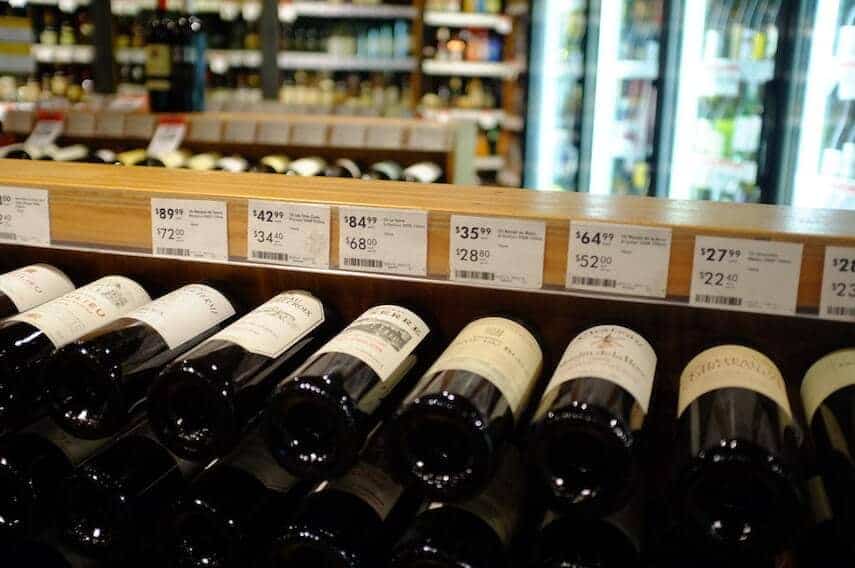
And if that concept doesn’t blow your mind, you also can’t buy alcohol from the supermarket (like in the UK), but have to go to a dedicated alcohol shop/liquor store. There are often smaller, separated buildings located next to the supermarket (and which often sell alcohol at a premium price for the convenience) and are owned by the supermarkets. Coles has Liquorland, Woolworths has BWS etc.
Or you can satisfy your alcohol needs (and get cheaper prices) with a visit to Dan Murphys – which is essentially a warehouse full of beer, wine & spirits. Affectionately known as Uncle Dan’s by many across Australia, these huge buildings are located on retail parks which you wouldn’t normally walk to – and can’t walk back from carrying your haul (case of wine/slab of beer etc) – as it’s typically always cheaper to buy in bulk.
Is Australia Safe for Solo Female Travelers?
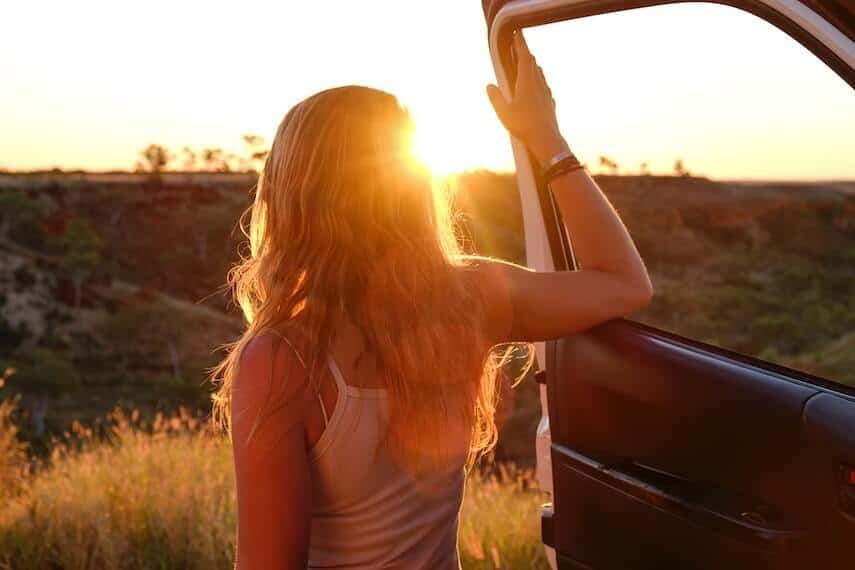
- Keep an eye on your belongings (bag/camera/phone etc) and be aware of your surroundings (for example, don’t have your head down glued to your phone)
- Be cautious and vigilant in busy areas or in crowds.
- Be wary of the ‘overly helpful’ local. The one who approaches you with stories and tips but seems to want nothing in exchange. And don’t feel obliged to give them anything.
- Be mindful of your drinking – that’s not to say not to drink, but alcohol lowers your inhibitions and reaction time. And a bag of Aussie Goon is a pretty standard item among the backpacker crowd and considered part of the Australian travelling experience!

- Walk with purpose – it will make you appear more confident and especially in Australian cities, will help you blend in with the locals.
- And finally, take note of where the exits are – wherever you are throughout Australia. You know, like you do on a plane. If there is an emergency, or you need to get away quickly, knowing where the exit is can be invaluable.
Top Australia Tips for Your First Visit: The Fun Stuff
Where are the best places to visit in australia.
Spread out across this vast country, Australia has eight city capitals, one within each State & Terriroty, which are all wonderfully unique packed with exceptional dining experiences, historic attractions, and non-stop shopping opportunities. Here’s why you need to visit each of them which will help in planning your trip:
- Canberra is situated in the Australian Capital Territory (ACT). It is the national capital, a city known for its cultural treasures and vibrant annual festivals.
- Sydne y is the largest capital in the country home to the famous Sydney Opera House, The Harbour Bridge, Bondi Beach and close to the Blue Mountains for a perfect day trip from Sydney!
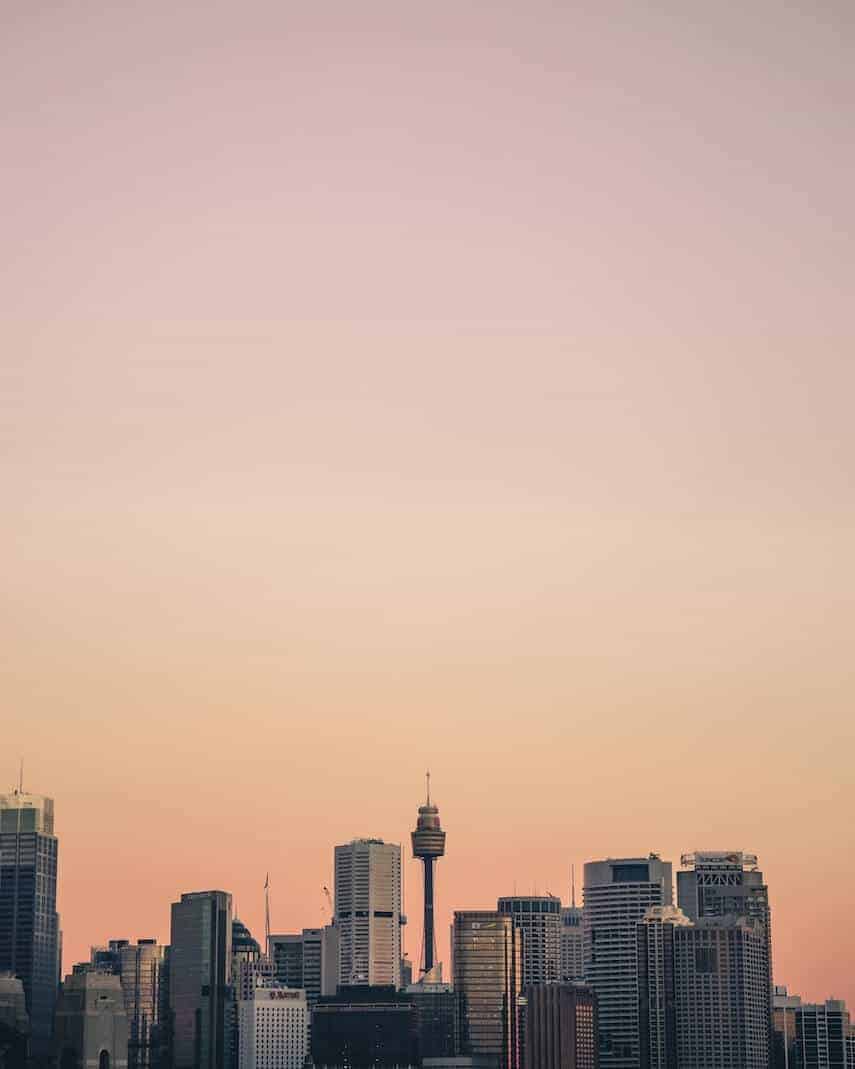
- Melbourne is the “Culture Capital of Australia” and one of the major cities in Victoria. From fashion to art, to film, to food, to sports, to music, to kids events, or to spiritual and multicultural festivals… Name it, Melbourne has it! (and some great day trips fro Melbourne too!)
- Hobart houses some of Australia’s convict era remnants adjoined with its panoramic coastal scenery. This picturesque city holds a number of interesting places to see including (but not limited to, of course) the charming Georgian era towns and villages!
- Cairns is Australia’s adventure travel paradise – with bungee jumps and jungle swings, scuba diving and snorkelling on the Great Barrier Reef, Skydiving over beaches and seaplane flights. For an adrenaline kick, head to Cairns.
- Adelaide is the perfect escape from the bustling crowds you might find elsewhere in Australia. It has surrounding hills to the east, beautiful beaches to the west (don’t miss Hervey Bay), luxuriously wide boulevards, and breathtaking park and garden views!
- Perth has a small population, the greatest weather year-round, and has a convenient location to stunning beaches. If this doesn’t make you want to visit Perth, I don’t know what else will!

- Darwin is the top end’s darling! From its World War II history to its very diverse food scene, to the best tropical lifestyle an Australian traveler could want, not to mention the different Outback tours through Kakadu National Park offered from the city – Darwin in the Northern Territory is the best place to be!
- Brisbane houses the liveliest subtropical paradise with ever-delicious food, coffee, as well as an epic music and arts scene. Not to mention the fact that it’s just an hour away from the world’s best beaches on the Sunshine Coast and Gold Coast.
How To Plan Your Budget for your visit to Australia
If there’s one thing you ought to know about Australia, especially if you’re a first-time traveler, is that it can be quite (sometimes really) expensive. To experience it at its best, you have to allot around $100-$200 per day for your accommodations, food, and activities.
Sad to say, though, transportation is a totally different conversation – meaning you need to allot a separate budget for it. Doing your research might do the trick in helping you get the best deals possible and that means everything!
What to eat in Australia
- Vegemite – a dark brown paste made from various vegetables, yeast extract and spice additives. Regardless of anyone telling you not to try it because it tastes weird , I say still do! Who knows, you might like it more than you can probably imagine.
- Tim Tams – a famous Australian chocolate biscuit, which, anyone hardly says no to. Do yourself a favour by grabbing one and snack on it to your heart’s content!
- Chicken Parmigiana – although not particularly of Australian descent, you will most certainly encounter this dish in most Australian pubs — and it’s worth the try!
- Fish and Chips – as the country is surrounded by oceans, it’s easy to say that their fish recipes are the bomb! This one’s definitely a must-try for the tourists.
- Pavlova – a meringue cake base topped with whipped cream and fruit that you can score from a cake shop, a bakery, or from major supermarket chains (directly look for it in the frozen dessert section).
Our Money Looks like Monopoly Money

Bet y’all want our funky money now, huh?!
Useful Tips & Friendly Advice for your First Visit to Australia
Australian border control is very strict.
Bringing prohibited items, whether or not you’re aware, will result in serious borderline problems. Included in the roster of forbidden things include fruits, vegetables, meat, eggs, feathers, weapons, firearms, and wildlife among other things. It’s best to double-check your things before embarking on a trip of your lifetime by doing your research.

Free walking apps for cities in Australia

Scams to avoid in Australia
Australia being a great country and a continent by itself makes it not vulnerable to travel-related scams. Sad, but true. Here are several things you need to watch out for and avoid when traveling to Australia:
Money changing
Yup, it sounds so old school but it still happens anywhere – might be at a restaurant where the cashier switches you $50 for $5 and tells you you didn’t give enough cash, at an attraction, or right at the money changer. When dealing with money, it’s always better to double-check and try to book your activities in advance so you have total control.
Credit card skimming
Basically, credit (or debit) card skimming is the act of illegal duplication of information from the magnetic strip of your card. As much as possible, be wary especially when the restaurant personnel collects your card and swipes it out of your sight.
Tours from unreliable guides or websites
To make sure you’re not booking some dodgy day tours, you have to make sure you’re booking from official travel agencies. Before clicking that purchase button, do your research. Check reviews, ask for recommendations from your friends and family – or particularly anyone you trust. Doing so will be helpful during the time of an accident or an emergency.
Learn the Lingo: Basic Language Tips for Australia
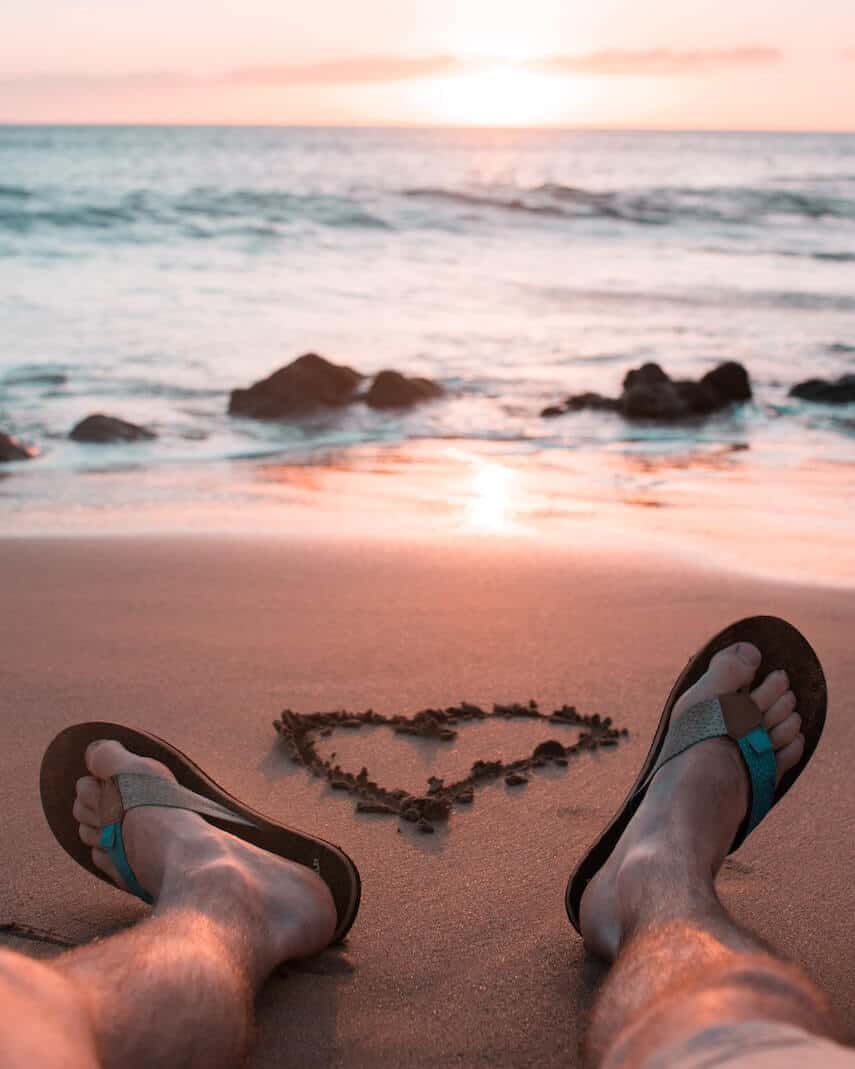
- Gas means petrol.
- Thongs mean flip flops.
- Chips (commonly called hot chips ) mean fries.
- Fortnightly means every two weeks.
- Boot means trunk.
- Bum bag means fanny pack.
- Lollies means candies/sweets.
Tipping Culture in Australia
In a country where the minimum wage is a lot higher compared to other countries, tipping isn’t that much of a necessity — most especially where service charges are included in the bill (typically for group or specialty bookings rather than a meal for 2). No one’s stopping you, though! You can still give tips if you want to and you feel like it.
Pre-book popular attractions in Australia
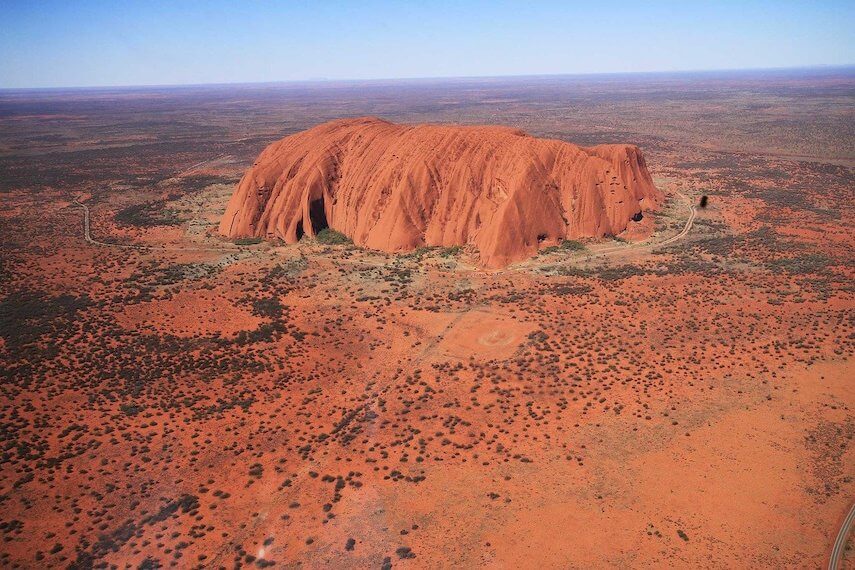
5 Quick Australian Dos and Don’ts
- Slip, Slap, Slop, Seek, Slide (That’s slip on a shirt, slop on sunscreen, slap on a hat, seek shade and slide on your sunglasses – if you’ve never heard the iconic Cancer Council slogan before. Fun fact – it was so successful in the 80s that there is a generation of Aussies with a Vitamin D deficiency!)
- Carry photo-ID
- Swim between the flags on Aussie beaches
- Watch out for drop bears …
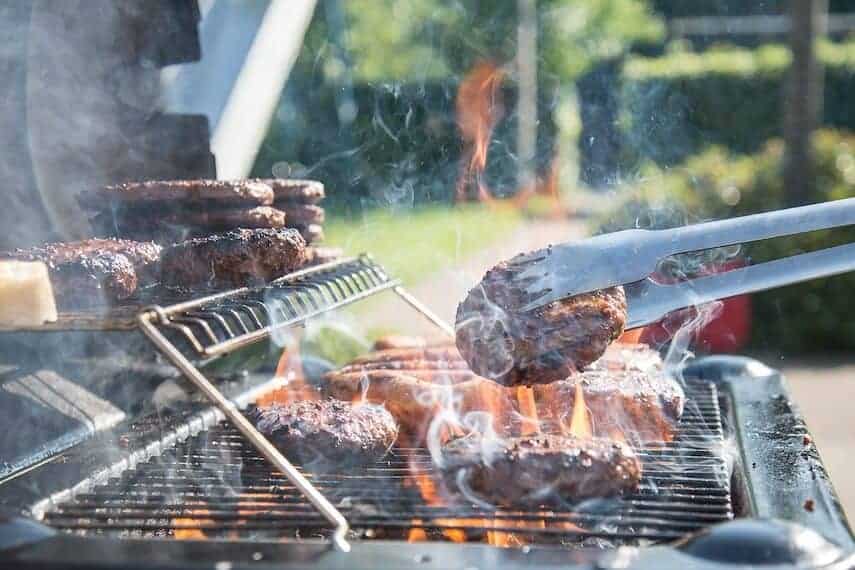
Don’t:
- Drink & Drive
- Climb Uluru (thankfully the are now rules to prevent people climbing the sacred rock, but it’s good to remind everyone that it shouldn’t be done, should that ever change)
- Eat, Drink or Smoke on public transport
- Turn up to a BBQ empty-handed (bring a bottle of wine or beer that the host will enjoy)
- Get offended when Aussies swear, it’s part of our national identity.
That’s a wrap, I hope our helpful tips for Australia (perfect for firsttime visitors) has got you all excited to explore Oz and this Australia travel guide has given you all you need to know to make it happen. We hope you have a wonderful time in Australia.
And if you know someone who could use these Australia travel tips for planning their trip to Australia, be sure to share this article with them on Facebook, Twitter, Flipboard or Pinterest. Sharing is caring and we thank you in advance.

READY MORE AUSTRALIA TRAVEL INSPIRATION? YOU MIGHT BE INTERESTED IN THESE TRAVEL TIPS, TRAVEL ARTICLES, DESTINATION GUIDES, TRAVELER RESOURCES AND RELATED POSTS ABOUT OTHER AMAZING PLACES IN AUSTRALIA:
- Test Your Aussie Knowledge: The Big Australia Trivia Quiz + 80+ Interesting Facts about Australia
- South Australia: Adelaide Travel Guide (Perfect for First Time Visitors)
- Australian Capital Territory: Top Things to do in the ACT
- Queensland: QLD Bucket List (inc. the some of the best spots on the East Coast Australia – think Gold Coast, Sunshine Coast, Airlie Beach, Fraser Island and the Great Barrier Reef) + 50 Things to do in Outback Queensland
- New South Wales: Top Things to do in Sydney (inc. The Sydney Opera House, Byron Bay & the Blue Mountains ) & Best Places to visit in NSW + Incredible Ski Resorts in NSW
- Victoria: Free Things to do in Melbourne , Melbourne Travel Guide (Perfect for First Timers), Best Time To Visit Melbourne (Month by Month Guide) + Best Day Trips from Melbourne (inc. the Great Ocean Road)
- General Australia Inspiration: 25 Best Places to Visit in Australia (inc. Alice Springs in the NT!) + Best Australian Travel Apps + Australia Travel Tips to Know Before You Go
- Beyond Oz: Looking for content outside of Oz? Head on over to MakeTimeToSeeTheWorld travels blog – they’ve got content on everywhere from Sri Lanka to South Africa , North America to South America & the Middle East to Europe .

Hi There! Thanks for reading our guide to 25+ Essential Travel Tips for Australia (What to Know Before You Go) I just wanted to let you know that this post contains affiliate links, which means if you purchase something after clicking a link, I may get a small commission – which is at absolutely no cost to you . If you enjoyed this article and are going to be searching for some of the things I mention anyway, I would love it if you could click through from the links above & thank you in advance! Read my full disclosure here .
1 thought on “25+ ESSENTIAL Travel Tips for Australia (Know Before You Go!)”
What a great collection of tips from travelers. I went through the list and nodded. Although I am still searching for all the right solid toiletries that work for me. And no matter how I try, I can’t travel with just a carry-on!
Comments are closed.
- GetInspired
As an Amazon Associate, I earn from qualifying purchases: “Big Australia Bucket List are participants in the Amazon Services LLC Associates Program, an affiliate advertising program designed to provide a means for us to earn fees by linking to Amazon.com and affiliated sites”
We acknowledge the traditional owners of the country throughout Australia and their continuing connection to land, sea and community. We pay our respect to them and their cultures and to the elders past, present and emerging.
Copyright © 2020-2022 Big Australia Bucket List . All Rights Reserved

- £ 0.00 0
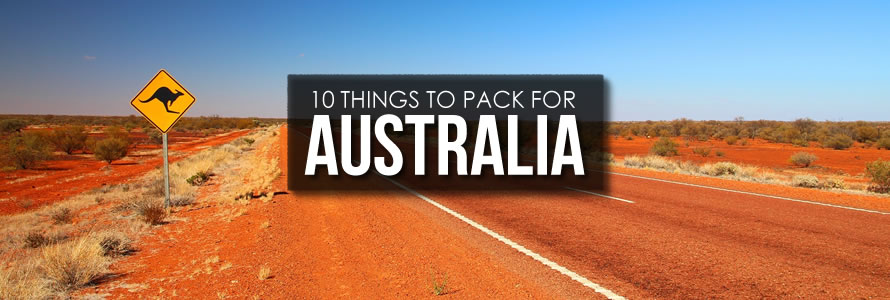
10 Things to Pack for Australia
Australia has so much to offer backpackers, so it’s really no surprise that it’s a popular starting point for many gap year adventures! So what should you pack for a travelling in Australia? Of course your passport, currency and essential travel documents all go without saying, but here are a few Australia travel essentials we would recommend packing for a trip down under!
1) Australia Plug Adapter
Australia have different plug sockets to the ones we use here in the UK, so you’ll need to pack an adapter so that you can charge your phone, camera and other devices. Australian plug sockets accept type I plugs (2 flat slanted pins in an upside down ‘v’ shape) and will generally accept both unearthed 2 pin and earthed 3 pin plug variations.
New Zealand use the same plug, so you won’t need to buy another adapter if you’re travelling there too!
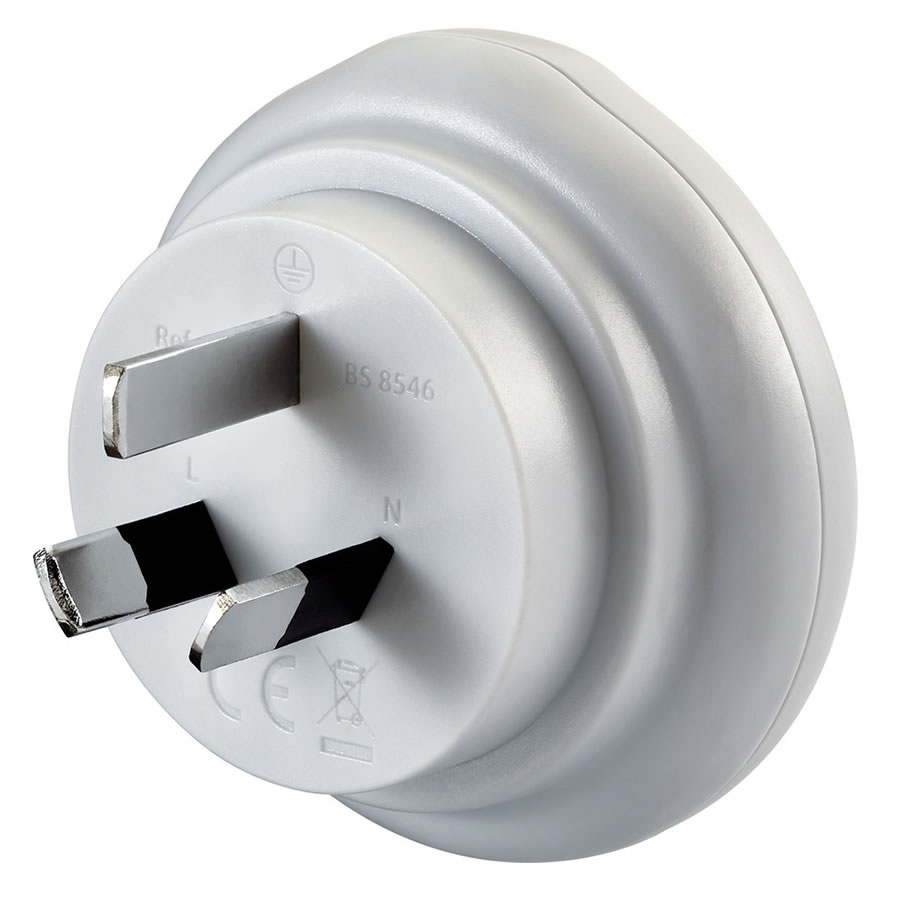
2) Australia Travel Guide
While some travel guides are pretty cumbersome and not always a practical addition to your backpack, the Marco Polo pocket guide range is suprisingly compact and travel friendly! This Australia travel guide includes a pull out map and covers the different regions of Australia, as well as offering general travel tips and country highlights.
At 19 x 11 x 1.5cm in size, it’s great for popping in your daypack, so you can read up on your next destination during long bus journeys or while you’re chilling out at the beach.
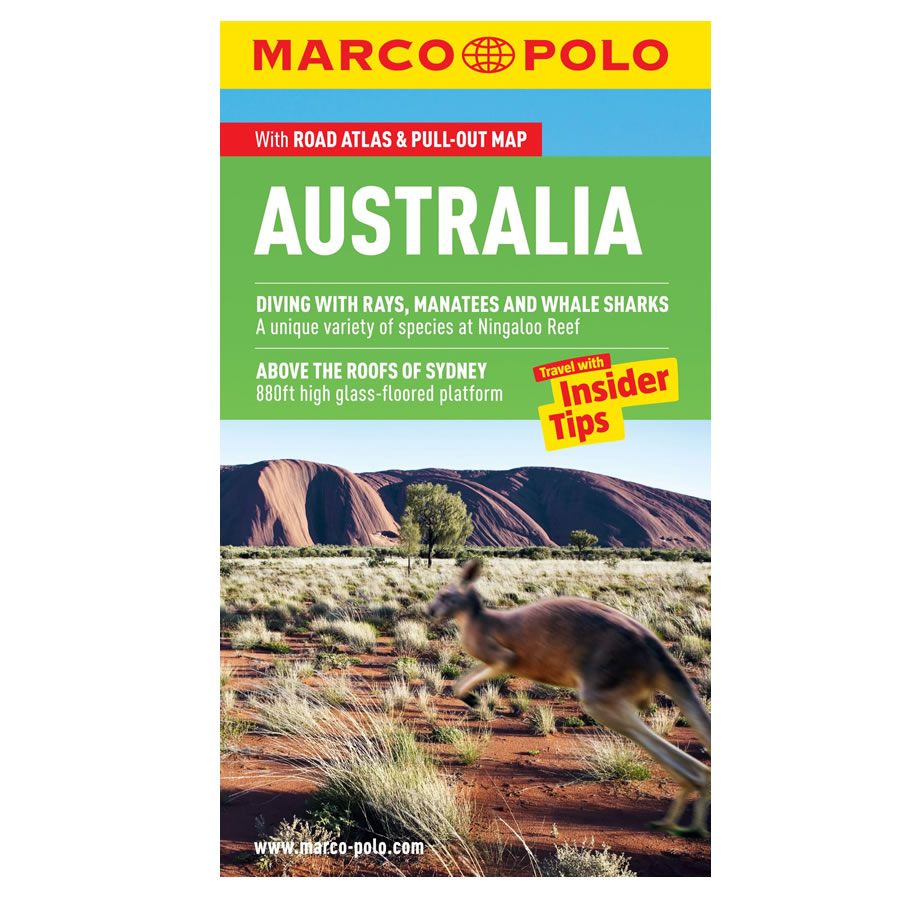
3) Mosquito Repellent
While you don’t need to worry about contracting Malaria in Australia, you should still take precautions to prevent insect bites. Mosquitoes and sandflies can cause painful and uncomfortable bites, so using a repellent containing DEET is your best defence ( 50% DEET is all you should need).
If you have sensitive skin a repellent such as Trek Sensitive would be a good alternative, and is clinically proven to be as effective as 50% DEET formulas.
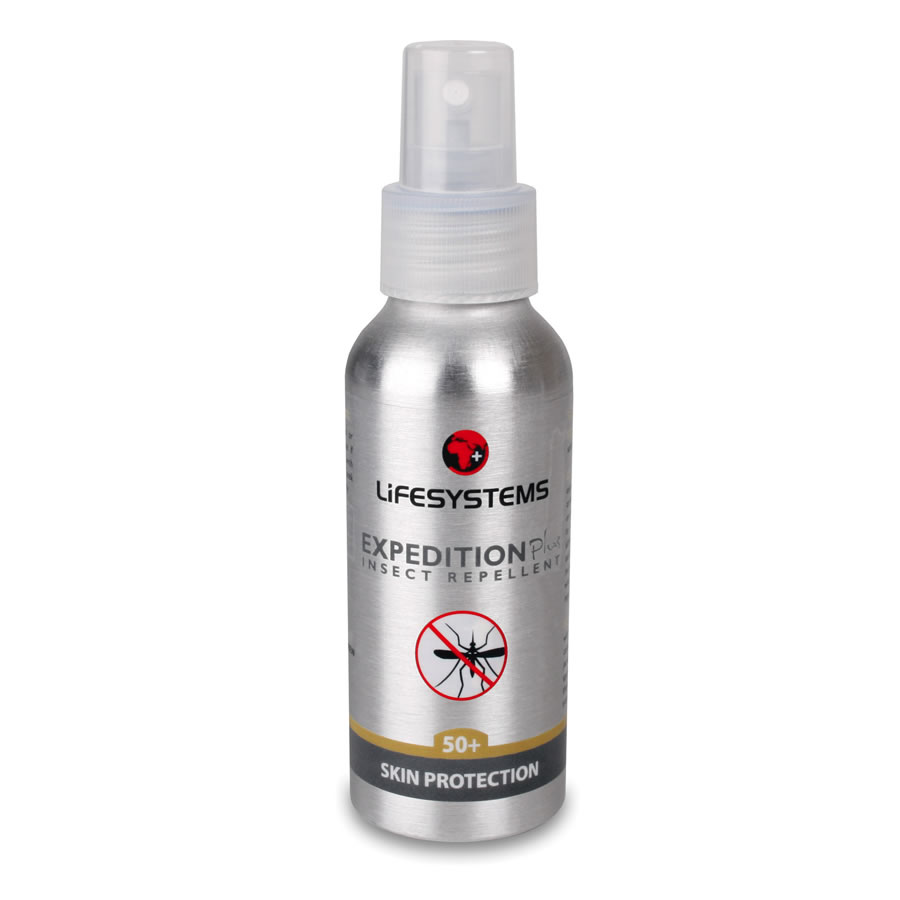
4) Travel Towel
An essential for any destination, travel towels save space in your backpack by packing down to a compact size. They’re also much lighter than standard towels from home and are made from quick drying microfibre material, some even come with anti-bacterial treatment to help reduce odours in between washes.
We’d recommend packing an XL or giant sized towel for travelling in Australia, that way it can double as a beach towel. Depending on your personal preference you can choose between a smooth or soft touch towel that feels more like a standard towel, although the smoother textured towels are better for the beach as sand doesn’t stick to them as much!
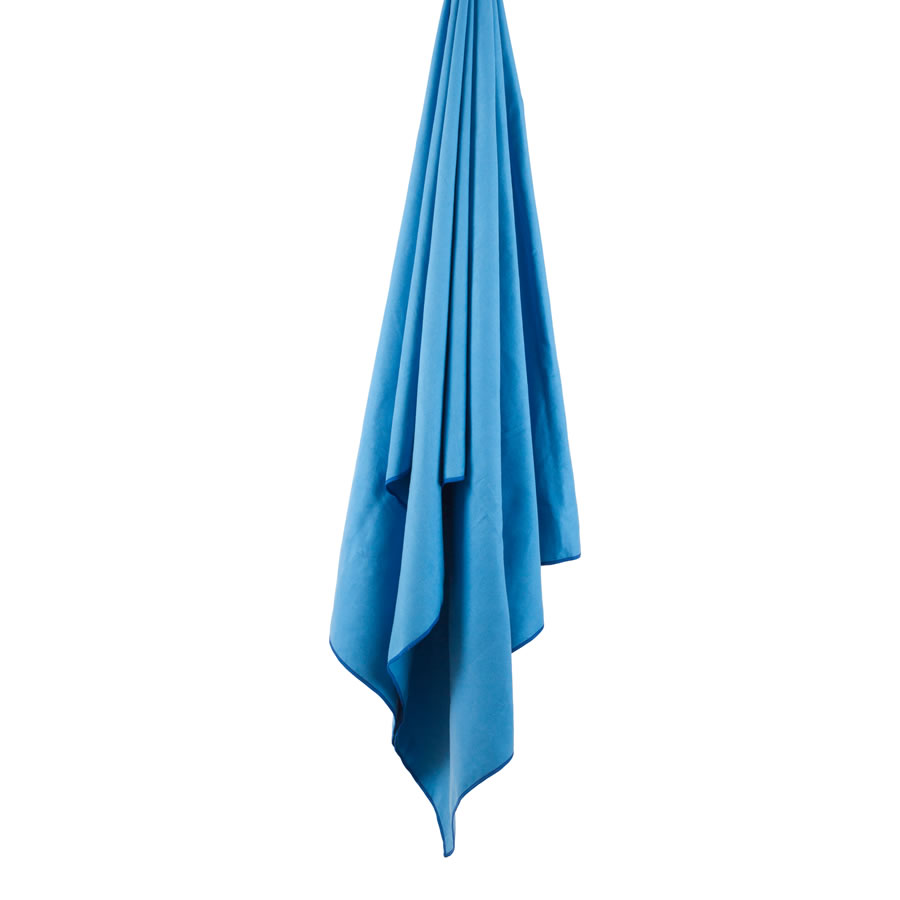
5) Travel Pillow
A flight to Australia takes approximately 22 hours from the UK, but can take much longer when you factor in stopovers. Although you’ll usually get a pillow from the airline, there really is no substitute for a good quality neck pillow, as this will help support your head and neck to help reduce aches and pains during your flight.
You should also try and get one with a flat back design to ensure your head isn’t pushed forwards. The Supreme Snoozer is a good option as it combines the comfort of a foam pillow with the compact pack size of an inflatable, so is less bulky compared to standard bean and foam options.
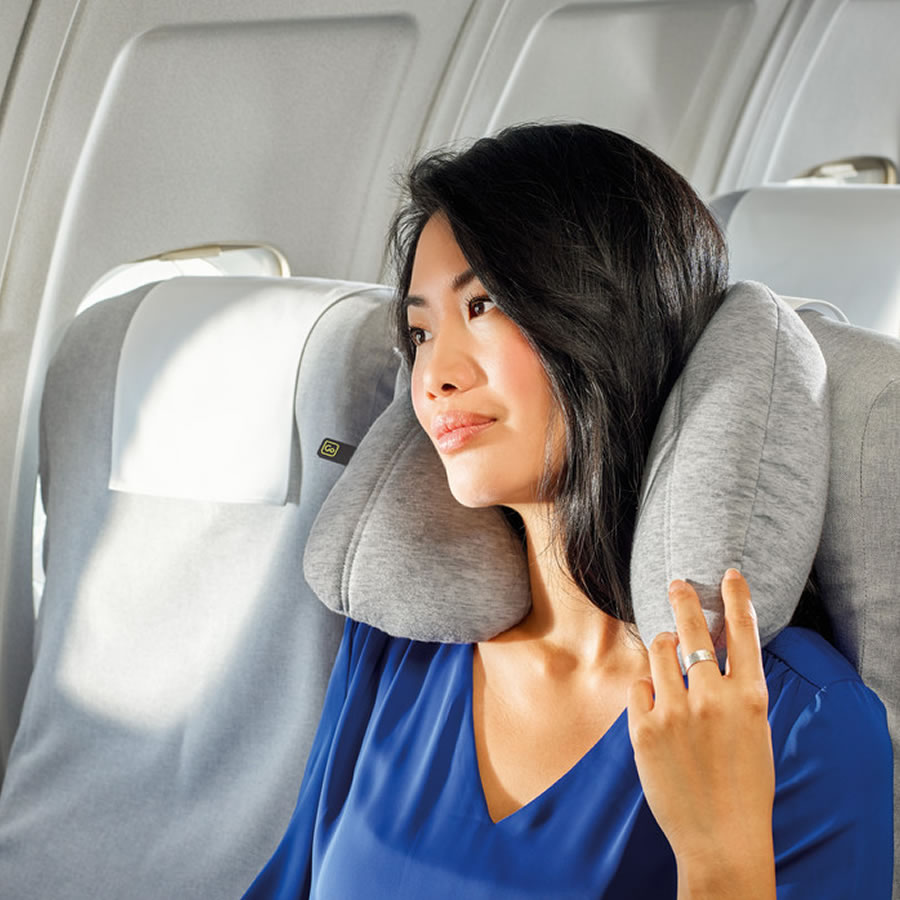
6) Sun Cream
Australia has one of the highest rates of skin cancer in the world, mainly due to the country’s proximity to the equator and its depleted ozone layer. Make sure you choose a sun cream with both UVA and UVB filters and a high SPF, usually SPF30 or SPF50.
Don’t forget that insect repellent reduces the effectiveness of your sun cream, so you’ll need to use a higher SPF than normal if you’re wearing repellent. Care Plus Outdoor & Sea sun cream offers high SPF50 protection and is also water-resistant, while offering protection against most jelly fish stings, corals and sea anemones…making it our top pick for travelling in Australia.
You should also consider packing after sun lotion to help hydrate your skin after a day in the sun, and for unfortunate sunburn incidents!
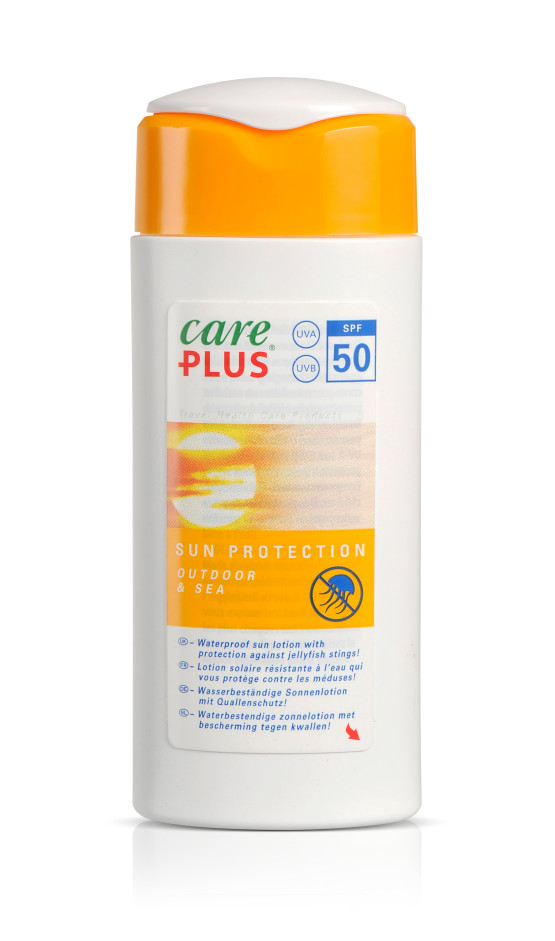
7) Waterproof Dry Bags
Whether you’re white water rafting, kayaking, surfing, scuba diving or simply lounging around at the beach, dry bags are a great way to ensure your belongings are kept dry. They can also be used to store wet items like bikinis, wet suits and shorts, making them a must have for beach days, boat trips and water sports. If you have gadgets you want to protect, you may also want to pack a waterproof phone case .
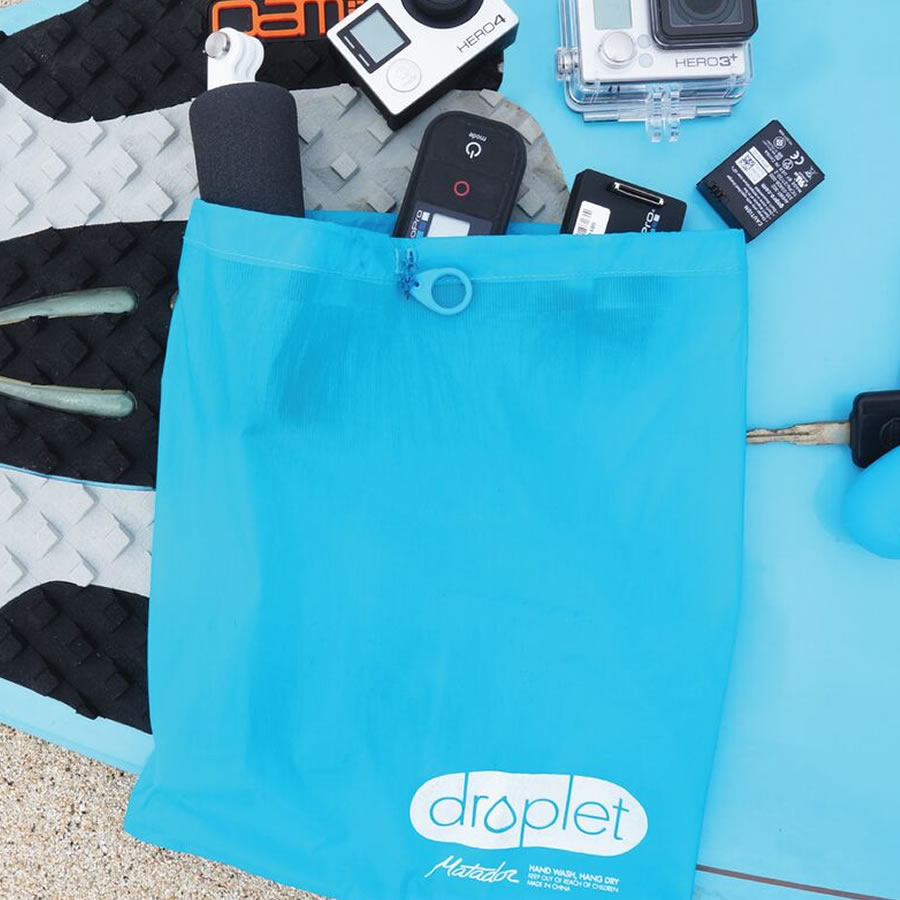
8) Portable Power Bank
Another item we would recommend for most destinations. Portable chargers are a great way to ensure your devices never run out of juice on long journeys or when you’re out exploring. They also act as a back-up power source when you need to charge your phone and all the hostel sockets are in use!
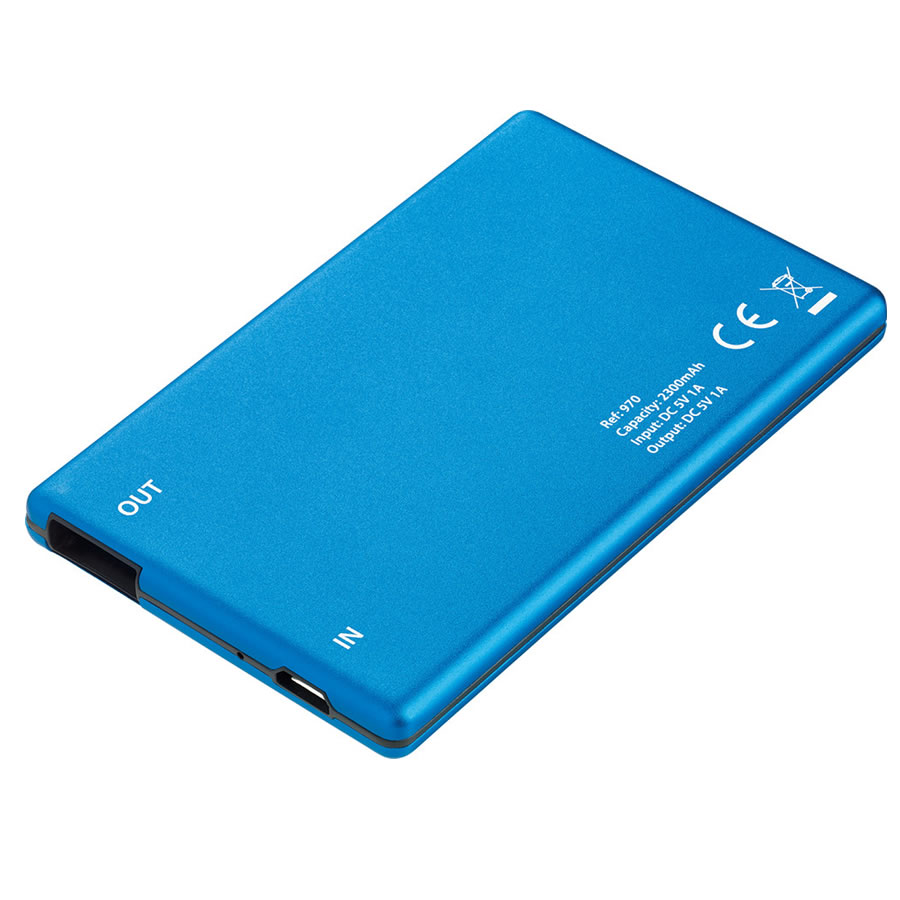
9) Water Bottle
The heat in Australia can be unforgiving, especially during the summer, so you’ll need to ensure that you keep well hydrated. Water is safe to drink in Australia, but to avoid buying bottled water and contributing to waste plastic, you might want to bring your own re-usable water bottle. If you’re concerned about space and weight, choose a folding bottle which can be rolled up or packed flat when it’s empty.
For travellers exploring the Australian Outback, we’d recommend a water bottle with a built in filter to remove any harmful bacteria, viruses and other contaminants from suspect water sources.
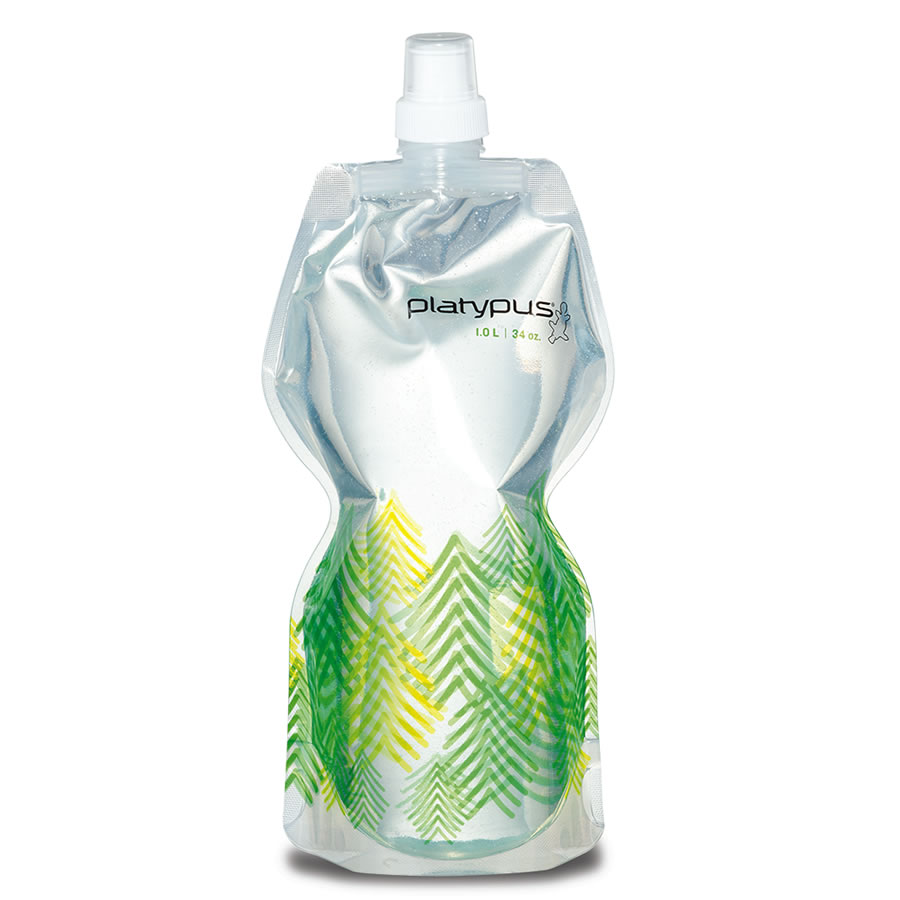
10) First Aid Kit
With an abundance of adventure activities at your finger tips and creepy crawlies galore, you never know when you might need to treat cuts, scrapes and insect bites. You should ensure your first aid kit contains plasters, bandages, dressings and anti-septic wipes to clean wounds. You can then add items specific to your destination and personal requirements, a few items we’d recommend including in your kit are insect bite relief, paracetamol and anti-histamines (in case of allergic reactions).
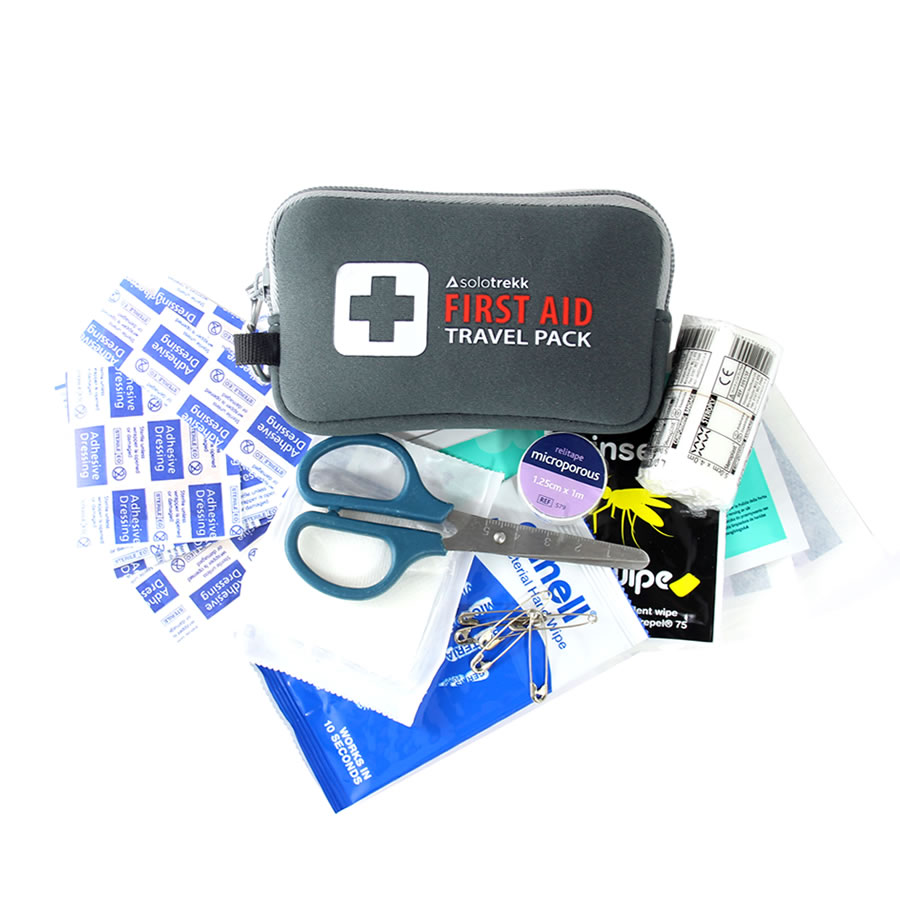
OK, so this is meant to be a top 10 post, but we don’t play by the rules…So here are some more items you might want to pack for your trip to Oz!
- Packing Cubes – great for compartmentalising your clothes and making everything easier to find in your backpack. They also keep your clothes compact (roll them for the best results!) to help maximise packing space.
- Ear Plugs – ear plugs will prove invaluable when you’re in the same dorm as someone who snores like a wildebeest.
- Torch – for camping or when you don’t want to disturb the rest of the hostel dorm by turning on the lights.
- Sleeping Bag – another camping essential. The season rating you require will depend on where you’re camping and the time of year. Check the average temperature (particularly during the night) at your destination and choose a sleeping bag with a similar comfort temperature.
- Combination Lock – locks are essential for any destination and are great for keeping your backpack secure. You can also use them to lock your hostel locker.
- Destinations
- Gear & Health Advice
- Travel Tips
- Volunteering
africa asia australia backpack backpacking backpacking gear backpacks brazil Cambodia central america colombia costa rica gap year gear review health India indonesia laos latin america malaysia mexico mosquito defence mosquito repellent new zealand packing packing list packing tips peru review solo travel south america southeast asia south east asia thailand top 10 travel travel advice travel backpacks travel essentials travel gear travel gifts travel health travel kit travel tips vietnam
- Best Money Belt Alternatives
- Osprey Fairview 55 2022: Changes and Updates to Know About
- Top 5 Sleeping Bags for Travelling & Backpacking
- Top 10 Hostel Essentials
- Top 20 Travel Essentials

Essential items for your Journey to Australia
Ready for a trip to Australia ? Then here are some essential items to make your journey more enjoyable.

Published 23.08.2020. Any post on this site may contain affiliate links which could result in Many Journeys Blog receiving a small commission at no extra cost to you.
Table of Contents
Mosquito repellent
Does australia have mosquito borne diseases.
Let’s just get straight to the point – mosquitoes in Australia suck (literally!). These blood suckers are big, they are persistent and I am yet to meet anyone who likes them!
So what mosquito repellent should you pack? Firstly, repellent is widely available in Australia and range from all natural, right through to nuclear grade (not really, but close!).
Do some research on the area you are visiting in Australia to work out the level of protection you might need as mosquito borne disease s are present in Australia. A quick summary of the more common diseases with links to government websites is below. However, don’t let this list scare you off visiting Australia, just do some research and take precautions.
Queensland : Dengue, Ross River Virus, Barmah Forest Virus
Northern Territory : Murray Valley encephalitis, Kunjin, Ross River virus, Barmah Forest virus
Western Australia : Ross River virus, Barmah Forest Virus, Murray Valley encephalitis, Kunjin
South Australia : Ross River virus, Barmah Forest
New South Wales, ACT : Ross River virus, Barmah Forest virus and rarely Murray Valley encephalitis.
Victoria : Ross River virus, Barmah Forest virus, Kunjin virus, Murray Valley encephalitis
Tasmania : Ross River virus, Barmah Forest virus
Australia is malaria free, however some travellers do come back from overseas infected which is included in Australia’s statistics.
How to choose a repellent
Moving onto the trusted insect repellent brands. The Australian Government advice is for repellents to contain picaridin and DEET (higher % is more effective).
Bushman Repellent –20-80% DEET and up to 15 hours protection. Bushman has a solid reputation in Australia for being highly effective.
Off! – this is my preferred option when I need strong repellent as it is only lightly fragranced (strong fragrances annoy me!). Whilst it doesn’t contain DEET, it has picaridin and lasts around 8 hours.
Brands generally offer a range of strengths and application type (spray, lotion, aerosol). Combinations of repellent and sunscreen are also widely available (I hate the smell of these and don’t use them, but some people love them).
Natural based – living in Victoria the statistical chance of being infected is low, so I generally use a more natural based repellent . The Biome brand Mozzie Mist provides a good level of protection and smells wonderful.
Do your research for diseases in the area you are visiting before using a natural based repellent.
Looking for more ideas on keeping mosquitoes away? Have a look at the detailed Tips For Avoiding Mosquitoes post by World Travel Family .

Choose a repellent suitable to the area you travel in Australia. My first preference is the Mozzie Mist, second choice is Off!
Images from Biome , Bushman Repellent and Off! websites.
Sunscreen and sun protection
Slip, slop, slap, seek, slide.
When I was younger the slogan was SLIP, SLOP, SLAP for Slip on a UV protective top, Slop on sunscreen and Slip on a hat. SEEK and SLIDE were added om 2007 to encourage people to Seek shade and Slide on a pair of sunglasses.
Further to SLIP, SLOP, SLAP we were taught “Between 11 and 3 sit under a tree” as that was when the UV was highest. However, now the UV can be strong for most of the day, don’t assume it will only be strong over lunchtime.
Advice from Cancer Council Australia is to use a water-resistant sunscreen with a Sun Protection Factor (SPF) of 30 or higher.
Supermarkets and Chemists/Pharmacists stock many different brands of sunscreen, whilst Health Food Stores and online stores will offer some more natural alternatives . The main thing is to ensure the SPF is high enough as many natural alternatives can be lower in protection levels. My preference is to cover up more and limit my time outside when the UV is high rather than relying on sunscreen for full protection.
I have started investigating reef safe sunscreens as the chemicals (particularly oxybenzone) in sunscreen have been found to damage coral reefs. Informative articles that I have found include Laura in Waterland blog, Travel for Difference blog, and the Travel and Leisure website. I think I will start with Sunbutter Skincare since they are Australian, cruelty free and SPF50+. Stay tuned for a future blog post with reviews!

I am looking to make the switch to reef-safe sunscreen.
Rain coat and warm jumper/top
Australia has a reputation for being hot and dry, but it still rains in much of the country! Depending on where you travel you might experience tropical style rain up North, or just cold miserable rain along the south-eastern coast. Pack a lightweight coat just in case – those ones that fold up super small are perfect.
Australia gets cold too, so pack a jumper or warm top as even the desert can get below zero overnight!

I love my Pocket-it raincoat from Kathmandu. I don’t have a photo of me wearing it, so you will have to just enjoy this image from the Kathmandu website. The whole coat stuffs into the coat pocket which you zip closed for compact storage.
Thongs (not the underwear!) also called Flip Flops
Whilst they are an unattractive (I will wait for the hate mail!) national dress for Aussies, they are really handy for beach visits and are super easy to clean. Personally, I don’t share the love of thongs that the rest of the nation does, I prefer sandals, but I do appreciate the simplicity and ease of thongs.

My thongs are old and disgusting, so here is an image of some super cute Havaianas instead.
Power adapter
Don’t forget to bring a power adapter – type I which has either 3 or 2 pins.
Guide books and maps
If you plan on driving around Australia you might want to source some printed maps. These are often included in vehicle rentals or grab some from Tourist Information Centres. Programs/Apps like Google Maps aren’t always that accurate away from main towns, and mobile reception can be limited.
Lonely Planet has a mixture of general guide books and maps to help you plan. The Gregory’s Touring Atlas of Australia is very popular for maps and handy advice like free camping locations, public toilets and visitor information centres.

The standard stuff
Don’t forget to carry a water bottle to stay hydrated and pack any other items specific to your activities. Remember you can buy pretty much everything you need to Australia, it will only be in outback/rural areas that the range of products might be limited. Hopefully this list of essential items helps you with planning you adventure to Australia!
Happy Travels!

Books to Inspire

Related Posts

Things can go wrong when you travel – but that’s OK!

How to keep indoor plants alive when you are on holidays

Best Time to Visit Victoria, Australia
11 items for your Australia & New Zealand packing
Recently updated on July 31st, 2023 at 05:04 pm
Your Australia and New Zealand packing list will change from summer to winter and whether you’re planning an outdoor adventure or city escape. One thing is for certain – you want to arrive prepared so you don’t waste precious vacation time looking for missing items in shopping centres.
When it comes to planning what to pack for Australia and New Zealand , be sure to include these essential items in your suitcase for a worry-free trip down under.
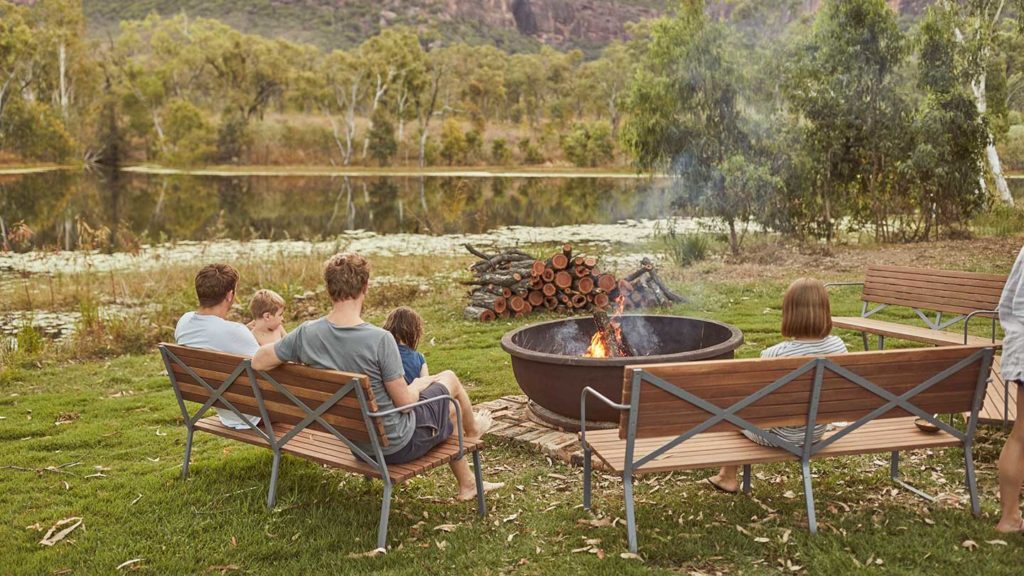
1. Power adapter
On your Australia and New Zealand packing list be sure to include a power adapter. Luckily the two countries down under use the same three-prong power plug so you will only need the one adapter in your suitcase. If you forget to pop one of these in? Well, say goodbye to a charged phone, camera battery and other electronic devices. An adaptor is truly an essential!
We think travelling with a towel is an absolute essential. If you’re at the beach, you need a towel. If you have an impromptu picnic, you can sit on the towel. If you get cold, you can wrap the towel around you. One item, many uses beyond drying yourself after a swim. If you don’t like the feeling of microfiber towels, look for a thin Turkish cotton towel that dries equally as fast (and looks cuter on the sand).
When it comes to deciding what to pack for Australia, look at your itinerary and you’ll see that likely, you’ll be spending a lot of time outdoors. And time outdoors calls for a hat. The same goes in New Zealand, where while the climate is more temperate the sun is still just as powerful, so you’ll need to protect your face from those harmful UV rays.

4. Walking shoes
Australia is a country of wide open plains, wide city streets and large swathes of nature to explore. You’ll notice while planning your New Zealand trip that the smaller neighbouring country is quite the same. To make the most of your time in each country be sure to pack great walking shoes that can take you from the top of an amazing lookout to downtown Sydney or Auckland.
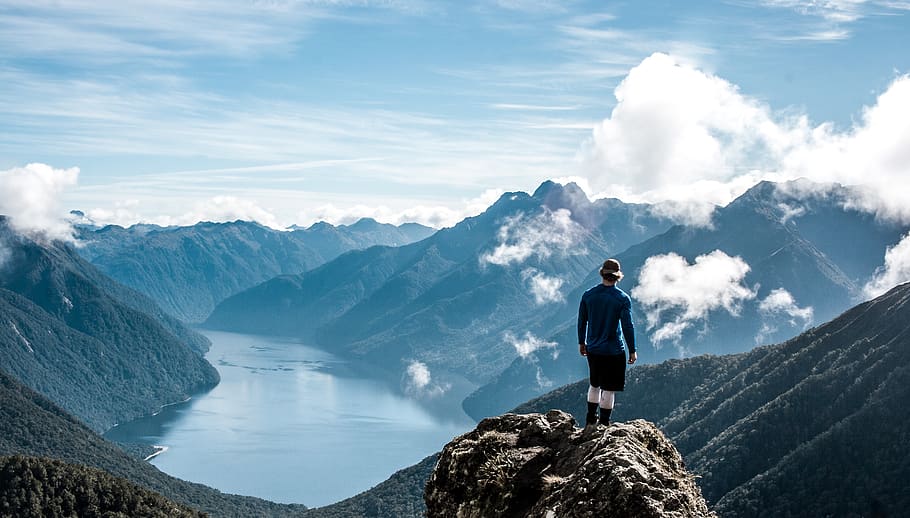
GET INSPIRED: New Zealand Uncovered
You may have noticed while planning your Australia and New Zealand trip that both countries are islands surrounded by incredible beaches. In the summertime you’ll want bathers or a swimsuit to dive into the glorious ocean, waterholes and waterfalls across both countries, and in winter you’ll want to pack them to enjoy the hot pools and thermal spots around New Zealand.
Your Australia and New Zealand packing list should always include a jacket of some sort. In summer, the southern parts of Australia and all of New Zealand feel quite cool in the evenings so pack a light jacket or sweater to feel cosy. In winter, you might like to bring a ski jacket or warm feather-down jacket to combat the winter temperatures depending on where you plan to visit and what you plan to do.
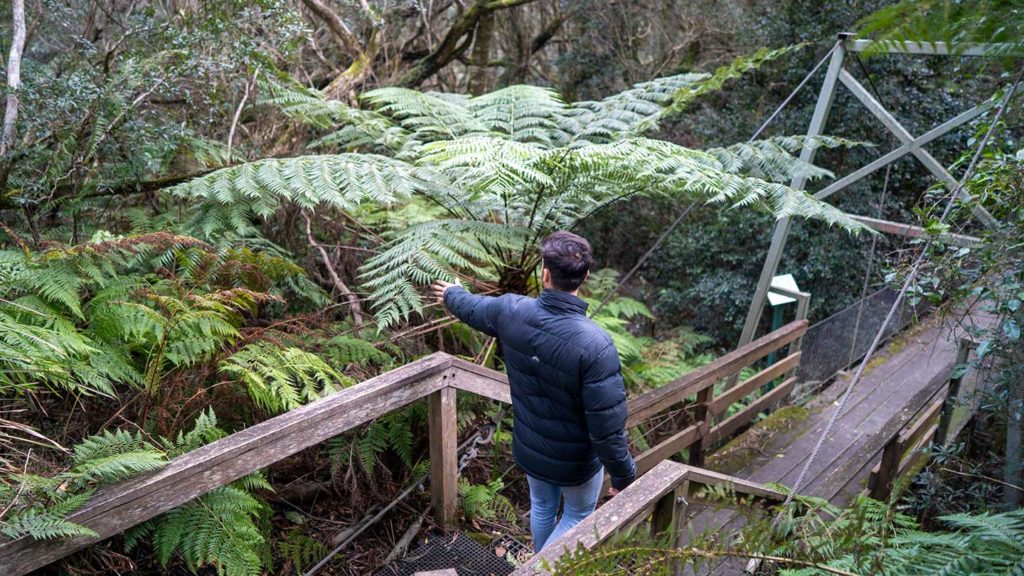
RELATED CONTENT: 7 of the main differences between Australia and New Zealand
7. Water bottle
Chances are your trip to Australia and New Zealand will be quite active and you’ll spend lots of time outdoors, even in winter. In summer it is definitely essential to carry a reusable water bottle to stay hydrated while on the road. In parks and towns around both countries you will find water fountains or water “bubblers” where you can refill. Water is safe to drink from the taps.
8. Thongs or jandals
Planning a trip to Australia? Pack thongs. Planning a trip to New Zealand? Pack jandals. Not sure what either of those items are? No problem. That’s the local slang for flip flops and the rubber footwear is immensely popular in both countries. Flip flips are great for the beach, but also to pop out for coffee, go to the shops or wade into a rocky creek.
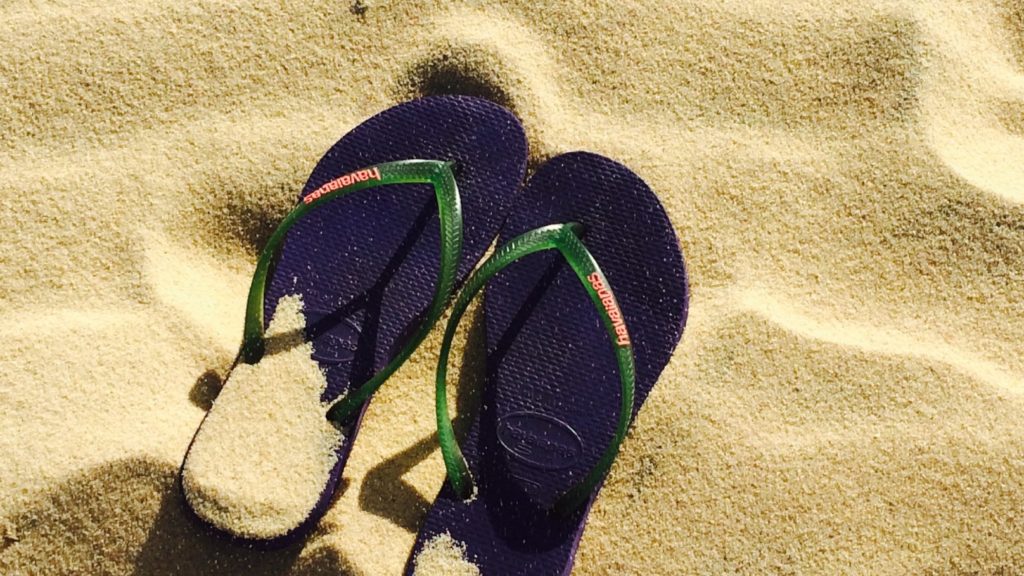
9. Active clothing
Overall your packing list for Australia and New Zealand will be determined by the season you travel in and the places you go, but either way you will definitely need some clothing for outdoor adventures. In summer that might just mean a pair of shorts for walking beachside trails or visiting a wildlife park. In winter that might mean thermal tights and a windbreaker.
GET INSPIRED: Outback Australia
10. Something chic
In the bigger cities like Sydney, Melbourne and Auckland people like to dress up to go out for long lunches, dinners or day trips to wineries. When it comes to deciding what to pack for Australia or New Zealand, pop in a nice dress, shirt or outfit that makes you feel good so you can fit in and feel like a local while enjoying the food and wine scene.

11. Sunscreen
Easy to forget, but essential to pack for Australia and New Zealand, sunscreen lotion is an absolute must when heading down under. The sun is very harsh in both countries thanks to an ozone hole, so if you plan to spend more than 20 minutes in the sun, make sure to apply suncream lotion at least SPF30+ and reapply throughout the day. Of course, if you forget to pack this one you can buy it in shops and supermarkets everywhere!
What else is on your Australia and New Zealand packing list? Let us know in the comments…
Want to hear more from us?
Sign up to receive inspiring travel articles, offers & news
" * " indicates required fields
Privacy Overview
Sign up for our emails (popup).

Road Trip Essentials for Travelling around Australia
Sharing is caring!
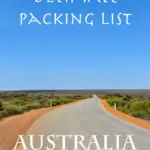
Taking a long drive around Australia is the dream of many. Whether you are travelling solo or as a couple, an Australia road trip is the adventure of a lifetime. Having done many drives myself, both as a couple and on my own, I have put together a comprehensive list of road trip essentials for travelling around Australia.
Table of Contents
This road trip checklist is designed for people driving in Australia or New Zealand and staying in accommodation. Packing camping gear is a lot more involved than this list and there are many road trips you can take without having a tent or a trailer.
If you are based in Australia, you can click on the highlighted links to see my recommendations.
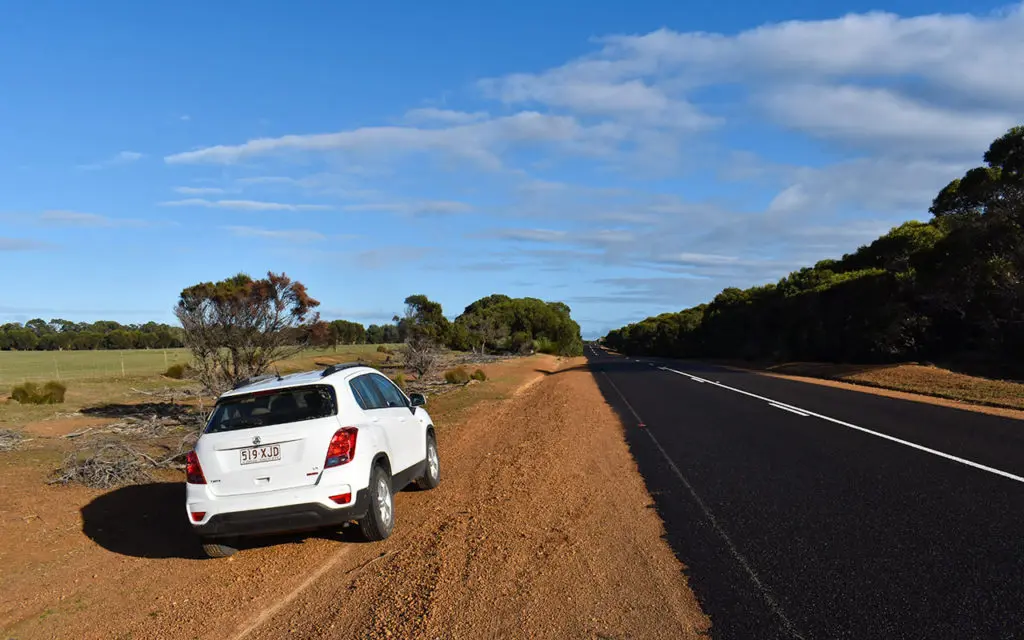
Having road trip essentials and other travel items will enable you to have an organised and safe trip. Australia is incredibly big and diverse, and whilst I consider it an easy country to drive in, the sheer size and climate conditions require some important considerations.
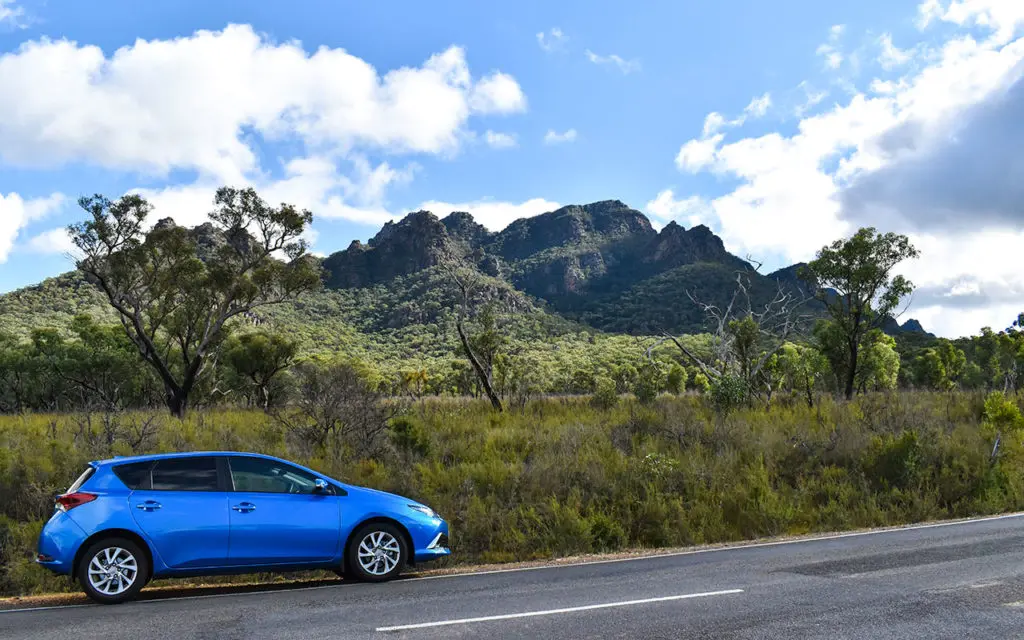
If you are wondering what to pack for a road trip, there are 5 areas to consider: driving items, personal items, how to manage your food and drinks on the road, what you need for packing and which travel apps will make your trip a breeze…
This ultimate travel packing list may seem like a lot of stuff but it also depends on how far you go and what your individual needs are…
My Tasmania road trip was a good experience in learning what I needed for an enjoyable journey.
Driving Essentials
Emergency roadside toolkit.
Whilst self-drive in Australia is generally good, a breakdown can always happen and you need to consider an emergency preparedness checklist. If you find yourself in an isolated area, you will need to be self-reliant and you need a fairly comprehensive road trip kit to solve any minor roadside issues.
A complete emergency roadside toolkit is a good idea for your Australia packing list. They’re not that expensive and could be a lifesaver in case of emergency. Typically, a car emergency kit contains a basic toolbox, jumper cables, a shovel, a tire repair kit, a flashlight, a reflective safety vest, a tow rope and gloves.
Jumper cables
You can also buy a few essentials separately. Booster cables are road trip car essentials in case of battery failure. On the road in Australia, it’s not too hard to flag another car down for help. You’ll need a functioning engine to recharge your battery with the jumper cables.
My Southwest road trip to Albany went without a hitch but due to the age of the car we had, booster cables would have been a good idea.
Foldable Reflective Sun Shade & Car Window Sun Shades
For long drives in the sun on your Australia itinerary, and especially if you have a passenger in your back seat, windscreen covers are a simple way to avoid the bite of the sun.
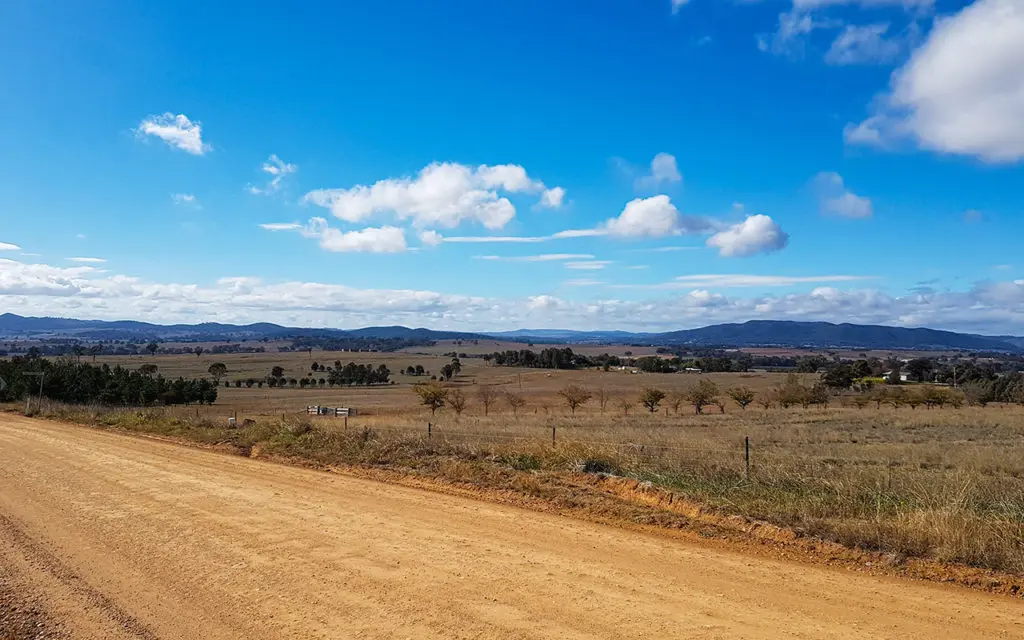
Sunlight is harsh in Australia. If you leave your car in the sun for a while, trying to hold on to the steering wheel will hurt!
A foldable reflective sunshade to leave in your windscreen will mean you don’t burn your hands when you’re ready to hit the road again. I remember it being very useful on my Perth itinerary !
First aid kit
For any driving holidays, you should have a first aid kit tucked away in the car. Without going overboard with a survival kit bag, it’s good for your peace of mind. Vehicle first aid kits are comprehensive and usually contain scissors, tweezers, adhesive tapes, a tourniquet, bandages, wound dressings, gloves and a first aid guide.
Australia is full of small dangers and it’s a good idea to be prepared.
Even if you don’t have an emergency roadside toolkit, it’s a good idea to have a flashlight.
From finding something you’ve dropped in a dark carpark to making your way back from the beach after watching the sunset, a flashlight is one of the things to take on a road trip.
Printed Road Maps
After all this technology talk, it’s time to take a step back in time! On a long road trip, an old-fashioned printed road map is not out of place. I like the spread of a road map, I find it easier to get a broad view of my journey. Some maps have useful indications on the terrain or a scenic route.
I dropped my phone on a Melbourne road trip once, in the Grampians National Park , and it went totally dead… Getting to the airport without a map turned out to be quite stressful… I got there in the end but it’s now part of my road trip must-haves.
Melbourne , by the way, is one of the best cities to visit in Australia. Other road trips from Melbourne include the Great Ocean Road and Sovereign Hill .
Mobile Phone Holder
Unless you have a GPS in your car, it’s a good idea to use Google maps on your phone. In order to avoid blowing out your data usage, I recommend downloading them to your phone. They are pretty reliable in Australia but you don’t want to only rely on mobile coverage.
Driving rules in Australia are very clear: using (or even holding) a mobile while driving is illegal, and it’s a focus area for the local police. Installing a mobile phone holder on your dashboard is a safe way to get access to your maps while driving.
Whether you need maps locally or for longer drives, a mobile phone holder is one of those must-have travel items…
Multiport USB Car Charger
With the technology used in the car while driving, you may as well recharge your device while driving. A USB car charger is a cheap yet very useful device to have around for a long drive.
Whether you take short road trips from Sydney such as Orange or Mudgee , or a longer West Coast trip with a partner, it is likely you will need to charge several devices at the same time. And those long driving stretches are ideal for refuelling whatever technology you are carrying… Make sure your chargers can accommodate have at least two ports.
Battery pack
As you may use your mobile maps on a walk or generally outdoor, I recommend keeping a small battery pack. It’s also part of your survival equipment “when all else fails” in order to never run out of juice when going on a road trip!
Spare car key
I once lost my car key in a shopping centre and it was a mess… I learned my lesson there and would add it to my list of things to bring on a road trip. A car key is never that big and could easily fall out of a pocket or a bag. Make sure you have one locked away in a safe pocket…
Car laptop charger
There are many things to pack for a road trip and a car laptop charger might be a bit of a stretch but if access to power is limited, this could be very useful. If you need to recharge a laptop during your travels, you will need more than a USB car charger.
These devices are designed to provide enough power to charge your laptop off the car battery and some of them can even jump-start an engine.
Personal hotspot
I try not to use it too often in order to manage my data but a personal hotspot can be very handy when you need to use another device and wifi is scarce. Be careful that it can put a strain on your battery. If you are going to use the hotspot function on a regular basis, make sure you have sufficient data available.
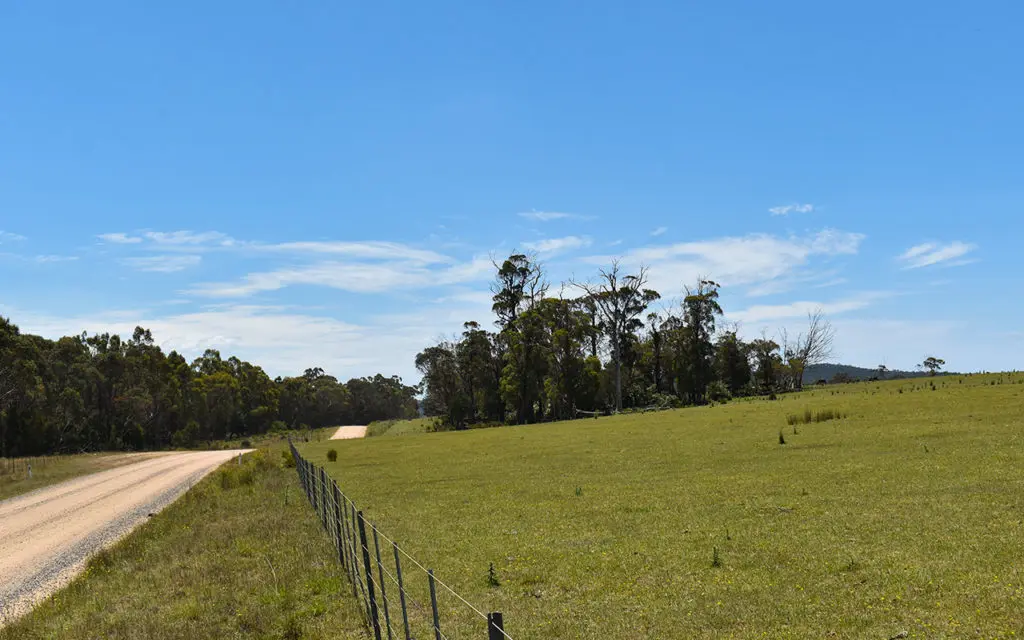
I didn’t have the need for a hotspot on my West Coast road trip itinerary but it got me thinking for longer trips…
Spare Change and Toll Tag
Most toll roads are now automated in Australia and it’s best to have a toll tag. If you have a rental vehicle, the vehicle will most likely have one and the funds will be charged to your account. In case you go through a toll without a tag, you have three days to call a number and arrange payment.
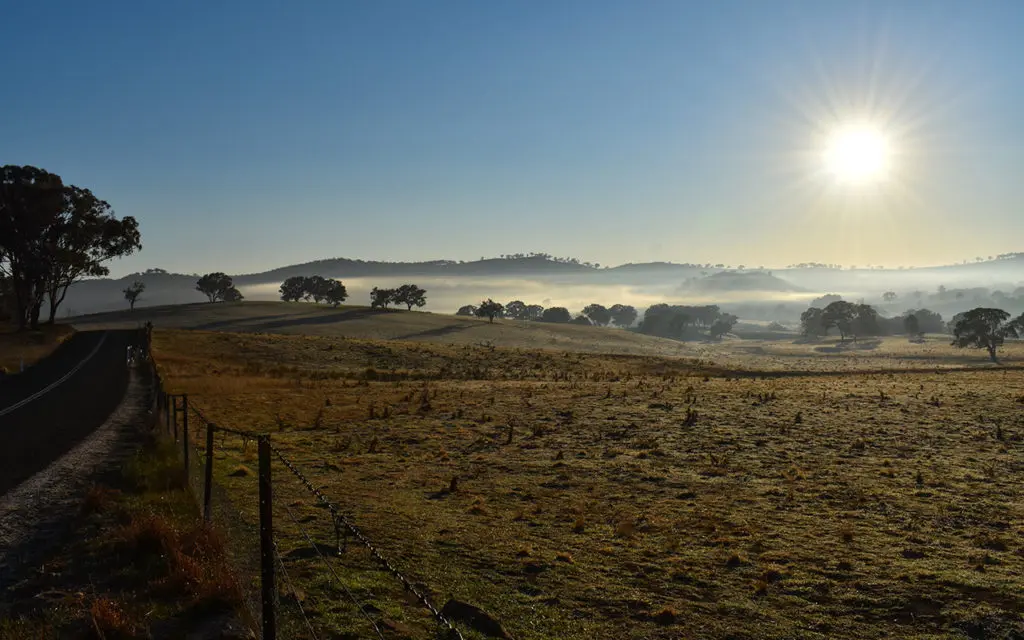
On a long road trip around Australia, you are unlikely to go through too many toll roads but a Sydney road trip will certainly take you through many toll roads.
Playlists, Podcasts, Audiobooks
Driving around Australia will present you with some very long stretches of road… And even on a couples road trip, the conversation may dry up after a while. Quality playlists, podcasts are long road trip essentials to entertain you on the road…
Personal Travel Items
There are few essential travel items you will need more than sunglasses… The sun in Australia is incredibly bright, especially in Western Australia.
Make sure you pack at least one pair of dark, polarised sunglasses that you keep with you at all times.
Prescription glasses
If you need prescription glasses, make sure you have them nearby at all times. I would also recommend having a pair prescription sunglasses in order to drive comfortably.
Blanket and Pillow
Long drives can be tiring and as soon as you feel tired or sleepy, you must stop and get some rest. Having a light blanket and pillow in the car means you can stop by the roadside and get some meaningful rest.
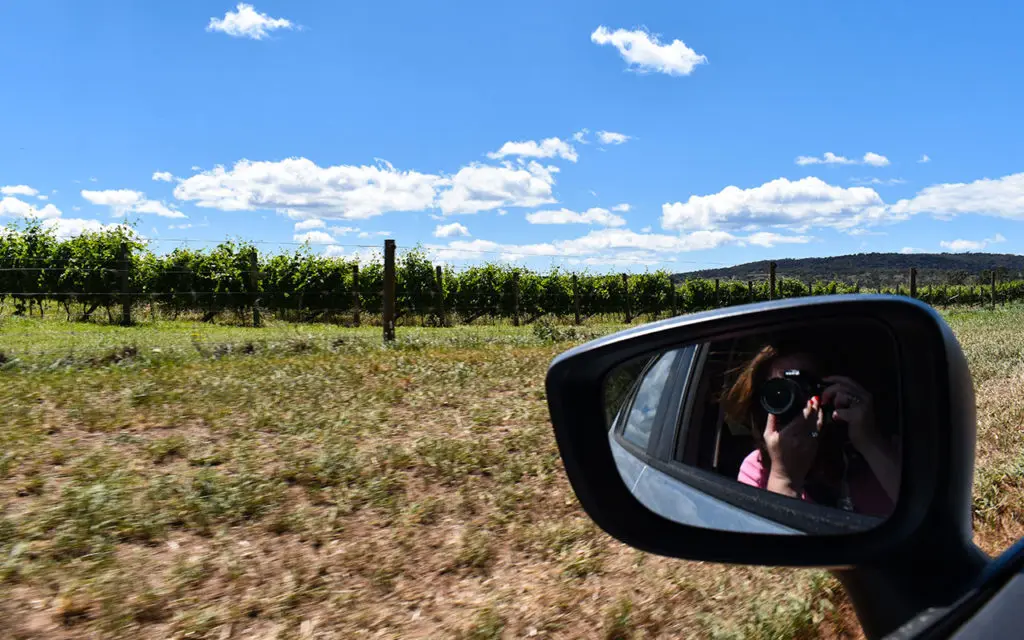
One of my Australia travel tips is to choose a lightweight but quality blanket to add to your road trip items. Don’t skip basic comfort!
Comfortable Shoes
What to take on a road trip in terms of shoes? I always travel with sturdy but light hiking shoes but on my West Coast Australia road trip, I discovered they weren’t the best for driving.
For long drives, sneakers or slip-on shoes with good gripping soles are a much better idea.
Hat or baseball cap
When packing for a road trip, a head covering is just like sunscreen. A hat or a baseball cap is a very important item when travelling around Australia and you should always keep one in your car.
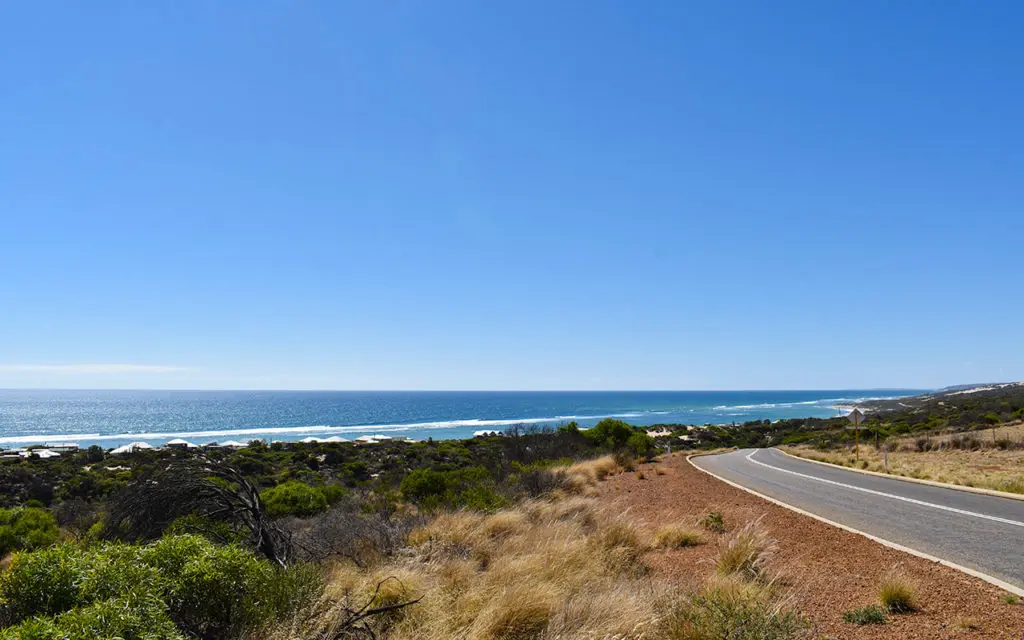
Hand sanitiser
Australia has many areas where access to water might be difficult. Aside from drinking water, keeping some hand sanitiser in your road trip necessities means you can keep your hands clean.
Even if you are sitting in a car for long periods of time, the sun will get you, as I found on my Western Australia road trip. The sun is fierce in Australia and a high spectrum sunscreen is essential to any summer packing list.
Driving in air conditioning means your eyes might get dry. I always keep some eye drops in my toiletries packing list.
Toilet Paper
Australian roads are well maintained and I’m always surprised at how common it is to find functioning toilets in remote areas. And a lot of these places will have toilet paper ! But not always… so come prepared…
Tissues & Cleaning Wipes
I always add tissues and cleaning wipes on my travel toiletries list. I’m not too much of a germaphobe but I like to be prepared for any spills.
When you go on a road trip, your car is like your home, you spend a lot of time in it and it’s important to keep it clean.
Microfiber towel
Whether it’s for personal use or to keep the car clean, a quick-dry microfibre towel is lightweight and versatile.
Food & Drink
On long road trips around Australia, you will need more than a travel water bottle to put in your backpack…
Finding drinkable water can be quite difficult in some places and in remote areas, it is essential to have some autonomy. I recommend carrying a large water container and a portable water filter.
Driving across Australia doesn’t mean you have to forgo your beloved cup of coffee or tea, you only need to make it sustainable…
This travel mug will keep your drink hot while you ride in the sunset…
Refillable Water Bottle
The best travel water bottle should be insulated, otherwise the water won’t stay cool very long!
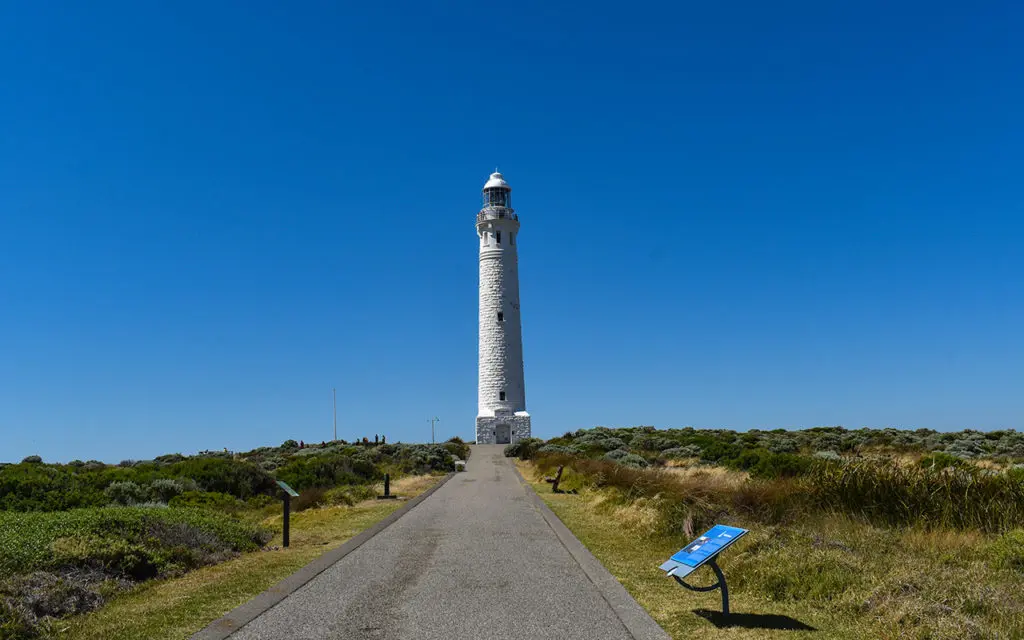
Sitting in a car for long periods of time, you are bound to feel a little hungry at times. Or you may need something to nibble on while waiting to get to the next town. Resorting to fatty snacks and sugary drinks is an easy option but it’s worth getting some healthy road trip food.
I find that eating healthy on the road is not always easy. Fresh fruit is a good idea. The only thing to remember is that you can’t cross state borders with fresh fruit, there are bins at the border for you to toss whatever you have left.
Car Bin with Biodegradable Bin Bags
When you are used to driving in a casual fashion, rubbish is not too much of an issue but when you are driving long distance, it can become a nightmare if not managed properly.
A simple solution is to have a small car bin. I’ll make sure I have one on my next couple road trip! Add some biodegradable bin bags to your road trip essentials list and you’ll keep a clean car all the way around Australia!
Swiss Army Knife
A classic on every backpacking list, a Swiss army knife is a very handy tool to have. Depending on how many tools you choose, this could be part of your survival kit essentials.
Cool Bag or Car Cooler
Embarking on an Australia road trip itinerary, especially in summer, means that your road trip supplies may not stay cool for very long. Having a car cooler or even a cool bag will make the journey more enjoyable.
Australia is full of places where you can take a break from your long drive and enjoy a picnic. Sheltered tables and even functioning barbecues are remarkably commonplace along the roads of Australia.
A small and portable picnic set means you won’t have to always eat sandwiches and you can diversify your travel meal ideas.
Utensil Set
The best way to travel Australia is to keep sustainability in mind. Single-use plastic is banned or at least frowned upon now.
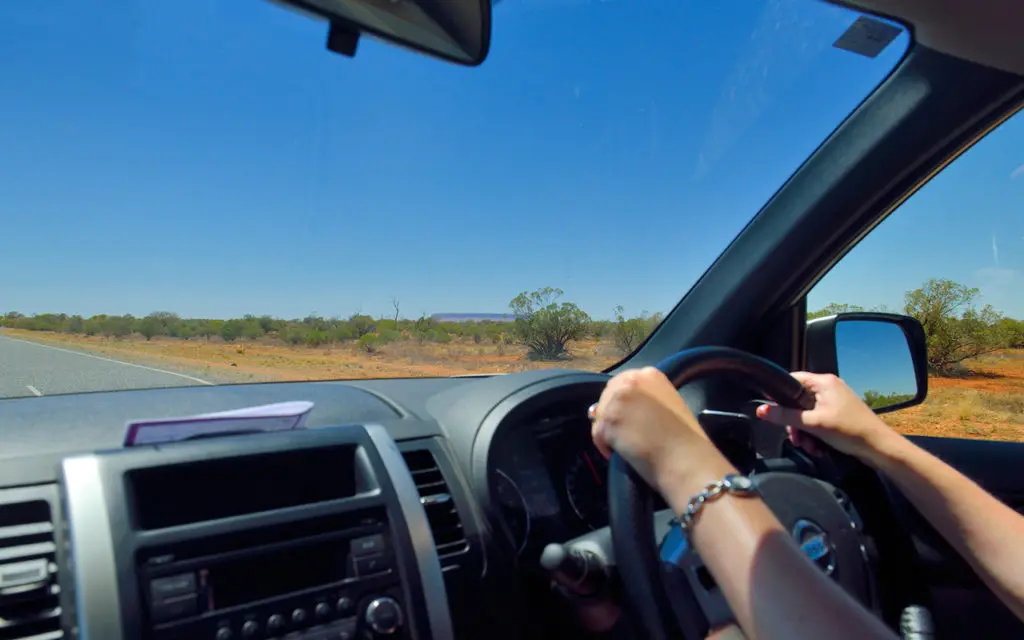
If you don’t have the need for a picnic set on your road trip, having a basic utensil set is a good idea and should be on every backpacking travel list.
Packing Items
Travel daypack.
Thankfully, driving around Australia means a lot of excursions and day trips, you are not always in the car! Select a lightweight daypack for your daily adventures.
Small Overnight Bag
Depending on what type of luggage you choose for your road trip, keeping a small overnight bag is a great idea, as you won’t need to unpack and repack every time.
Reusable Shopping Bag
I always carry a reusable calico bag, even when I’m not travelling. Single-use plastic is now banned by the major supermarket chains in Australia so you need a solid bag to carry your groceries.
There are some very lightweight grocery bag options to add to your road trip packing list.
Car Organiser
It’s funny how quickly you run out of pockets when you need to organise so many little bits and pieces.
The best road trips in Australia shouldn’t be spent looking for things or dealing with a messy car: a car organiser is a brilliant solution to keep everything you need in one place.
Packing Cubes
In my opinion, packing cubes are one of the best travel essentials for women and I can’t travel without them! They’re a great way to organise everything in your luggage. They can also be used as an alternative for an overnight bag.
The best packing cubes for travel should be lightweight with a quality zipper.
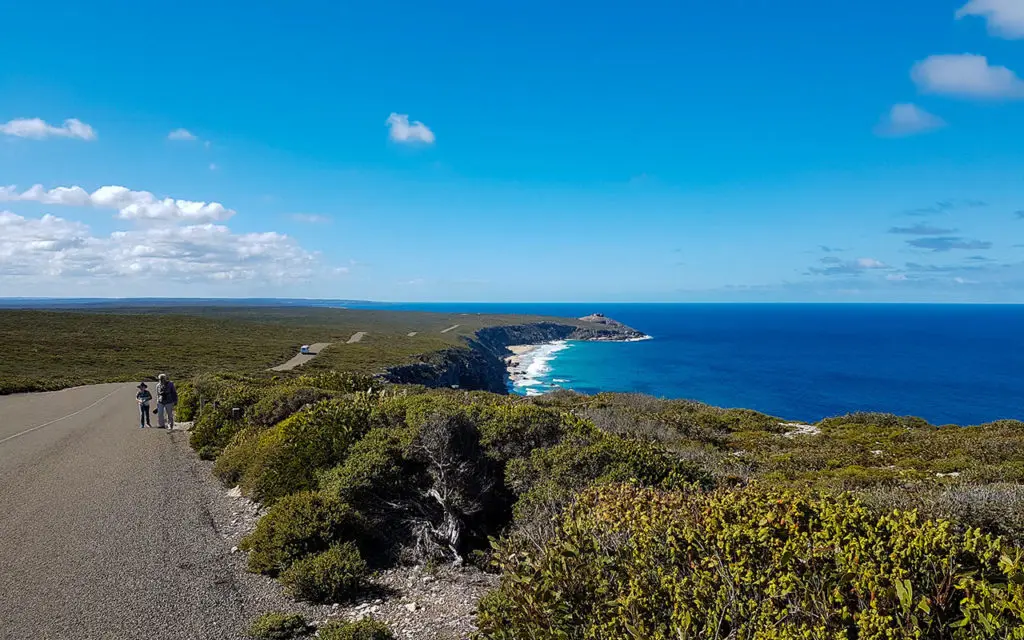
Camping Chairs
This may be for a road trip in a bigger car but having some camping chairs to relax in when taking a break in driving might feel like a small luxury.
Small Fold-out Table
If you are embarking on a longer trip and intend to camp or at least to have meals outdoors, consider a small fold-out table.
Travel Document Holder
Just like you organise your travel essentials, don’t forget to keep your travel documents safe: passport, copies of your bookings, car rental agreement, drivers’ licence will fit nicely in a travel wallet.
Essential Travel Apps
Some online applications will make your life on the road a lot easier:
Use Wikicamps to find campgrounds, free camps, hostels and caravan parks. Even if you’re not camping on your road trip, you can use this to find walking tracks, swimming holes, power points, playgrounds, fishing spots and showers.
AirCamp is an alternative to WikiCamps and you can upload your photos to share with the community.
Fuel Map gives you the location and best prices for petrol and keeps a log of your petrol usage and costs.

This app is useful if you are travelling with a gas bottle, this app will help you find places where to refill or swap your gas bottle.
This great app lets you borrow audiobooks and e-books from libraries around Australia for free.
Polar Steps
Polar Steps helps you track your travels, share your adventure with friends and you can even create a photo book at the end!
This is the Amazon audiobook app. It’s free for 30 days and you have access to Amazon’s library.
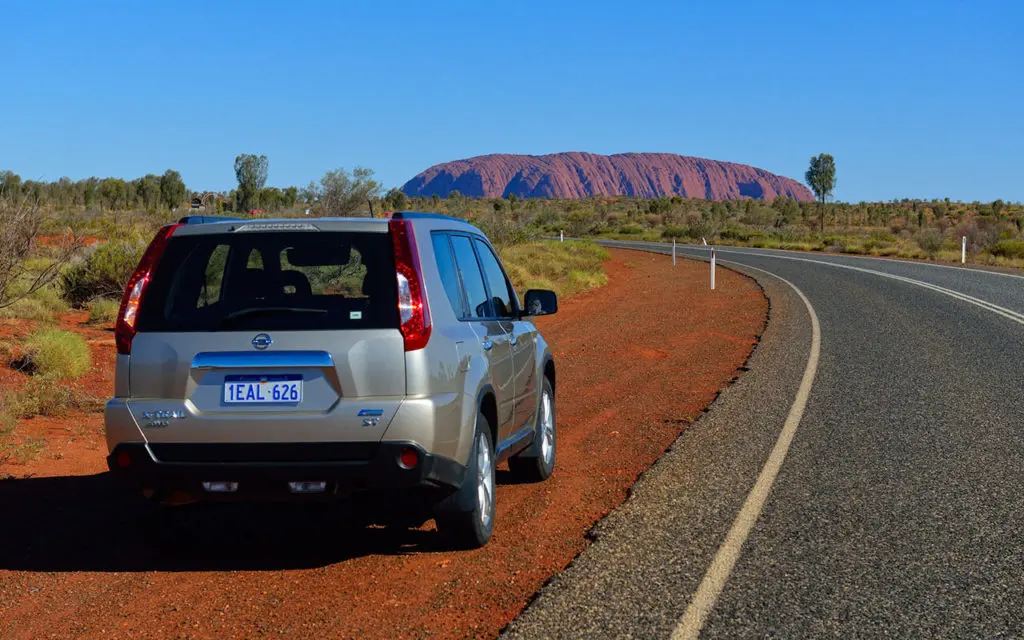
Listen to the radio and podcasts with ABC Listen.
OurGroceries
OurGroceries is a shareable shopping list.
Evernote is the best app for any notes, lists, ideas you need to jot down on the road.
With free offline maps, MAPS.ME is very useful when you are in remote areas.
Pocketbook helps you manage your travel budget and track expenses.
Google Maps
Google Maps offers comprehensive and functional maps all over Australia
You can add all your loyalty cards to Stocard and travel with a lighter wallet!
What to Pack for a Road Trip Checklist
Now that you know what to bring on a road trip around Australia, is such an adventure on your travel bucket list?
Related Posts
Australia road trip, best gifts for hikers, sydney getaway weekends.
Please tell me if I’ve missed anything in the comments below!
LesterLost is a participant in the Amazon Services LLC Associates program, an affiliate advertising program designed to provide a means for us to earn fees by linking to Amazon.com and affiliated sites.
Save these road trip essentials for Australian on Pinterest!
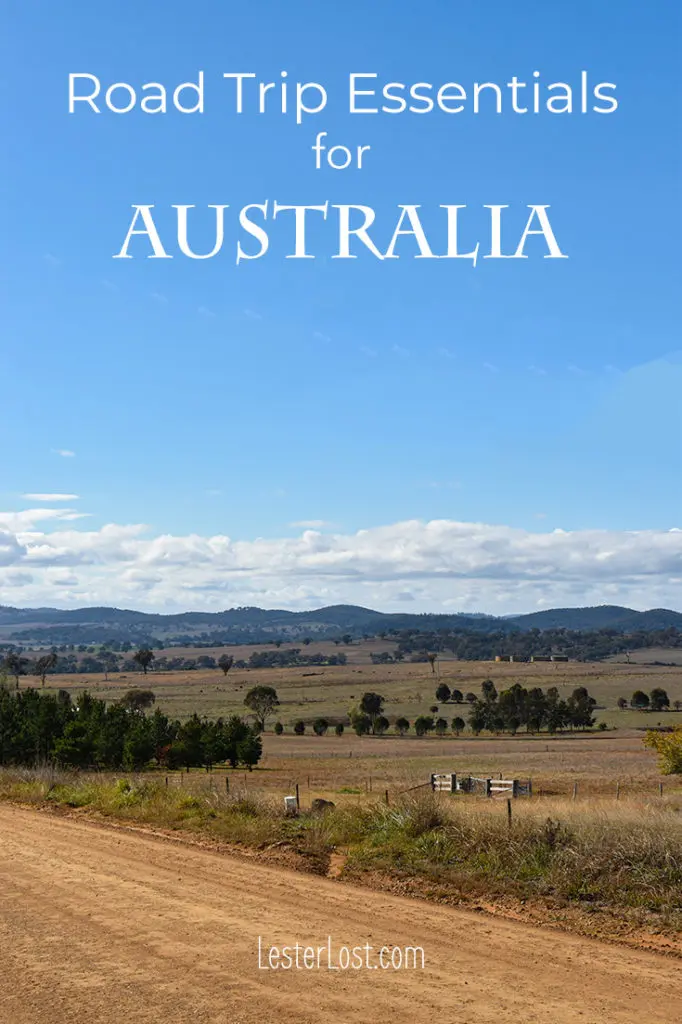
23 thoughts on “Road Trip Essentials for Travelling around Australia”
This is a very comprehensive Road Trip essentials list for travelling around Australia. We’ve got most things listed here and I definitely attest to WikiCamps being our bible. We use it not only for finding camps, but drinking water and points of interest in each town that we travel through.
It’s so great being able to rely on quality information when you travel, those apps are incredible in their detail!
Wow! If I ever head on an Australia road trip (which I hope to someday) I will definitely use this road trip essentials kit when planning. This is so concise and has everything I would ever need.
Hi Samantha, the list is pretty big but a lot of things you probably use in your car anyway, it’s just a matter of being organised. I hate a messy car!
This is one of the most comprehensive packing lists I’ve ever seen for a road trip. Good tip about bringing a spare car key, losing your keys in the Australian outdoors could be a huge bummer!
Hi Neha, losing car keys would completely ruin a holiday. I know my husband has a spare key hidden somewhere and I’m very careful with the one I use everyday!
Borrow Box sounds like a great app to have. Australia is so much bigger than you would think. Having a good supply of audio books make just make the difference between a dream road trip and a grump fest.
Yes, I think Borrow Box is a great idea! I wonder what type of books both my husband and I would want to listen to though…
There seems to be a lot more items required for road trips around Australia and can understand this. And I would defo have that Borrow Box app! That looks so useful. Have bookmarked this page for future reference, as I plan to do a massive road trip around the island one day.
If you do a round trip of Australia, you do need some preparation as it’s a lot of hours on the road… At least the apps don’t take any space! Don’t forget that these are options and you can choose what you take with you!
What a great and comprehensive list. Love Wikicamps tip. You can use this essentially for America, too!
I dream of a road trip across the US, I would definitely refer to this list in order to be prepared and properly packed!
Such a great post, I did drive from Melbourne to Sydney it was such an adventure. I wish I could read your post before that travel. Though i will use the tips for my next road trip
This is a great compilation for the perfect and hassle free road trip. A set of duplicate keys is an amazing addition, had never thought about it. You have some gorgeous photos of the trip!
Hi Ketki, I think the spare key could make or break the trip. Imagine losing your car keys in the middle of nowhere!
This is such a thorough and well thought-out list, Delphine! Many of these items would be useful for road trips across the world, but I totally see what you mean when you say the heat, sun, and sheer size of Australia need to be considered. I am not much of a driver when I travel, but seeing Australia beyond the cities is definitely something I aim to do eventually. I´ll be sure to come back to this list when the time comes! Thanks for sharing!
Hi Kevin, if you visit Australia, I think the best things to see are well beyond the cities. You do need to drive a lot though as the distances are so massive… Hopefully you’ll take a road trip in this beautiful country someday!
I’ve been meaning to do a road trip around Australia so this is great information to familiarize myself with. Preparing a booster cable is definitely a good tip as that’s not something I ever thought about bringing on a road trip. Blankets and pillows are also must haves for long trips. Awesome list!
Hi Jas, I think a serious road trip requires things you don’t actually want to use. Also, there has to be a degree of solidarity on the road. If you come across a fellow motorist with a broken down car, it’s good to be able to help!
This road trip essentials guide is not only useful for Australia but for any road-trip around the world. I will be using it as my packing list. Thanks.
Thank you, I find that taking a road trip is a great way to visit a country, wherever you are in the world.
Great post-Delphine. Everyone loves road trips but always trouble while packing for it. Whenever I have to go on a road trip, I always end up forgetting some of the important things. Your post is helpful to me. Thanks for sharing.
Packing light is always a challenge for me but I’m improving on every trip. Packing for a road trip requires some forward-thinking, you don’t want to get caught out in the middle of nowhere!
Leave a Comment Cancel Reply
Your email address will not be published. Required fields are marked *
This site uses Akismet to reduce spam. Learn how your comment data is processed .
Privacy policy
New Zealand
Solo travel
Couple travel
Travel resources
LesterLost a participant in the Amazon Services LLC Associates Program, an affiliate advertising program designed to provide a means for us to earn fees by linking to Amazon.com and affiliated sites.
- Work With Me

- Sierra Leone
- South Africa
- New Zealand
- Falkland Islands
- Netherlands
- Accommodation
- Electrical Gear
- Essential Gear
- Working Abroad
- Blogging Resources
The 15 Essential Gadgets We Couldn’t Road Trip Australia Without
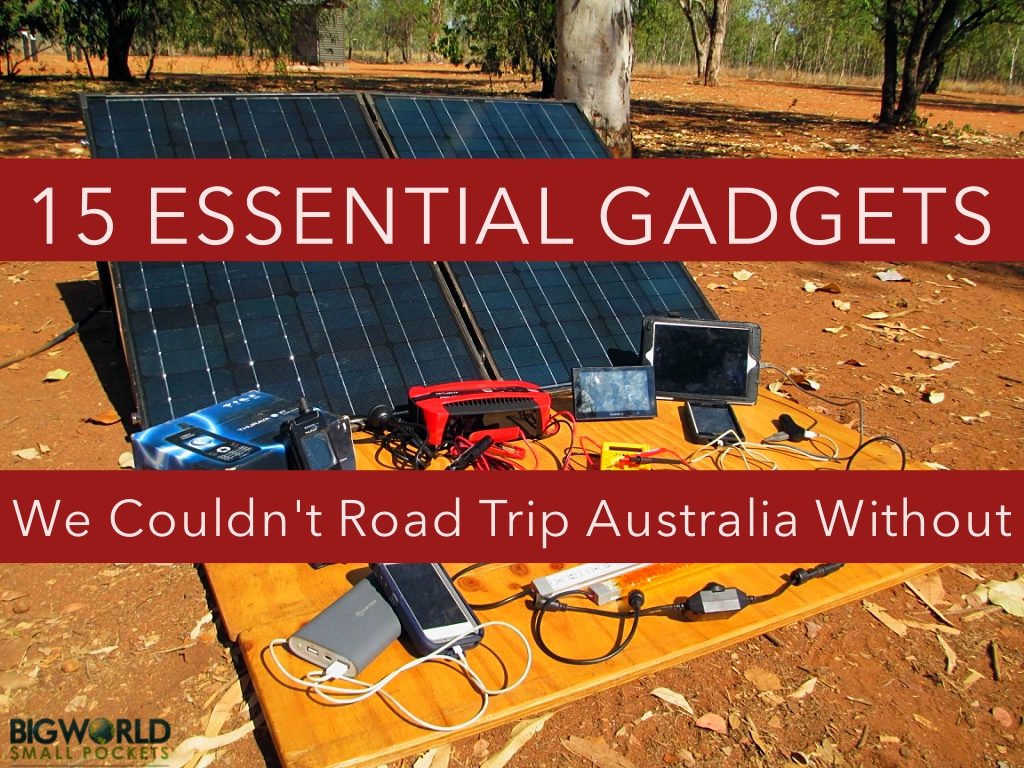
So you’re heading on an Australian road trip hey?
First things first, AWESOME!
This is possibly the best adventure you’ll ever go on, so prepare to have the time of your life!
Seconds things second, are you prepared?
You may be traveling uber-cheap, but trust me there are some super handy gadgets you’ll definitely want, or even need.
Having now been on the Australian road for 6 months, we’ve definitely got down what we consider to be essential and what, well, we’ve demoted to the rubbish bin!
Then there are also the things we didn’t think we’d need, but ended up buying in absolute desperation once we set off.
So here, to make your planning easier, is our definitive list of the 15 essential gadgets we couldn’t (and you shouldn’t) road trip Australia without.
Grab Your Copy of How to Road Trip Australia on a Budget
My ultimate guide to road tripping Australia on a shoestring is now available, meaning you can finally get ALL my top tips for driving around all, or parts, of this amazing country in one handy eBook, including…
- Full Planning & Preparation Guides
- Day by Day Itineraries & Routes
- Complete Packing & Gear Lists
- Top Money-Saving Tips & Hacks
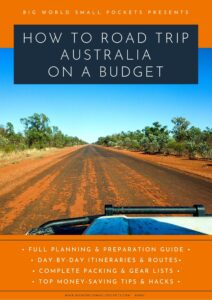
Click Here to Check It Out!
Related posts.
- Perth to Broome… on a Budget!
- The Ultimate Darwin to Broome Road Trip Itinerary
- Cairns to Darwin – Your 14 Day Road Trip Itinerary
This page contains affiliate links meaning Big World Small Pockets may receive a small commission on any purchases at no extra cost to you.
#1 Smartphone
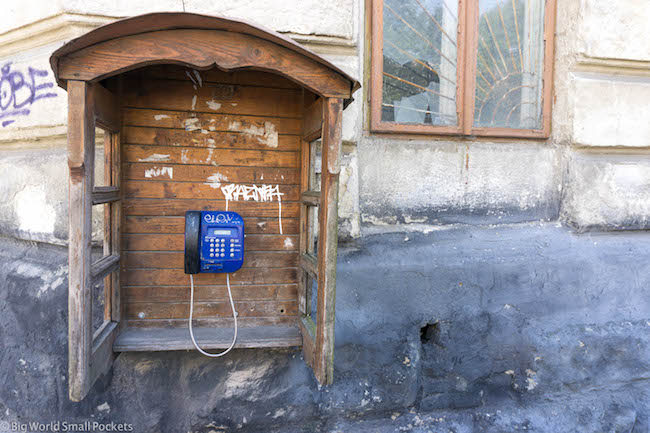
The good old smartphone, where would we all be without them hey!
This is probably one electrical gadget I couldn’t road trip without that you’ve already got – hoorah!
Smartphones are so useful for a ton of things.
From booking accommodation to researching destinations, from taking photos to following maps, they are almost as useful as the other 14 gadgets on this list put together!
If you’re coming from overseas to road trip Australia, then I highly recommend bringing your smartphone with you.
This is because once you get here it’s super easy to get a local SIM card and roam for cheap (see #2).
My Recommendation: You can’t beat the iPhone!
#2 telstra sim.
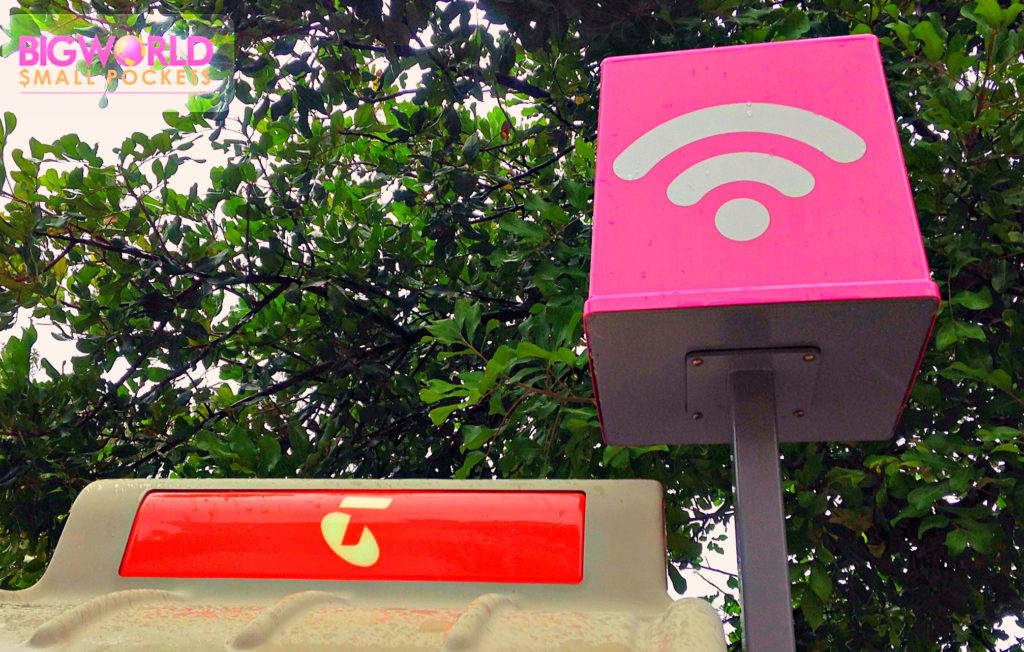
It might cost you a little more up front, but making sure your phone provider is Telstra when you road trip Australia, will be worth its weight in gold!
I know the temptations of signing up to a cheap provider all too well – but trust me, once you leave any major town or city, your money will be rendered useless, because you will not be able to use your phone.
This means you might as well have taken the money you’re paying Vodafone (or whoever isn’t Telstra) and throw it down the drain!
Continually not having signal is also very frustrating, so seriously, just do yourself, your blood pressure and your bank account and pay for a Telstra SIM from the off!
And if you don’t want to sign up to a Telstra contract – which I wouldn’t recommend anyway on the basis most have a minimum term of 48 months – then you don’t have to.
Stick to a pre-paid deal like me and get all the benefits without the commitment (minus a phone of course!)
My Recommendation: Telstra Pre-Paid Freedom Plan. $50 per month gives you 8gb of data, unlimited national calls and texts and $500 of free international calls to selected countries – winner!
Just enter your details below and I'll email it you - simple!
Information will be sent to the email provided above
#3 Inverter
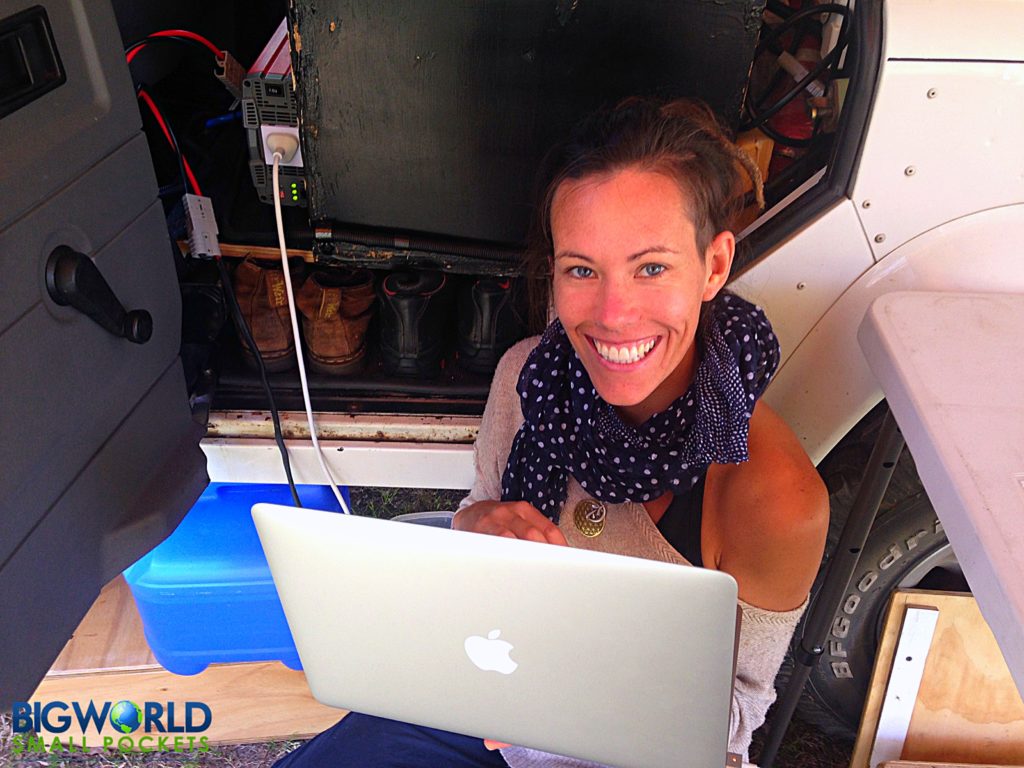
Next on the list of the 15 essential gadgetsI couldn’t road trip Australia without is the not so humble inverter.
If you’re traveling in a campervan or 4wd, then this is a particularly crucial one, as it will allow you to charge and run 240v devices like laptops, phones, blenders and power tools off a 12v battery like that of your vehicle.
Especially great for bloggers, or those working while travelling, having a device with battery life can be essential and that’s why an inverter is so crucial for me
I can use it to charge my laptop, camera and phone while I am driving (via the dual battery system) and when I’m stationary, the inverter runs off the solar panel.
Without an inverter, I’d be permanently reliant on cafes, powered campsites or libraries etc to charge my devices.
Not only would this be expensive, but also near in possible in much of the remote Australian terrain I’m covering.
I also use the inverter to power items like electrical razors for hair cutting and hand blenders for smoothie making!
Inverters can be large, bulky and expensive, but they are well worth it when it comes to wanting to stay connected – electronically, as well socially and professionally – on your journey.
My Recommendation : RedArc 700W Pure Sinewave Inverter
#4 led lights.
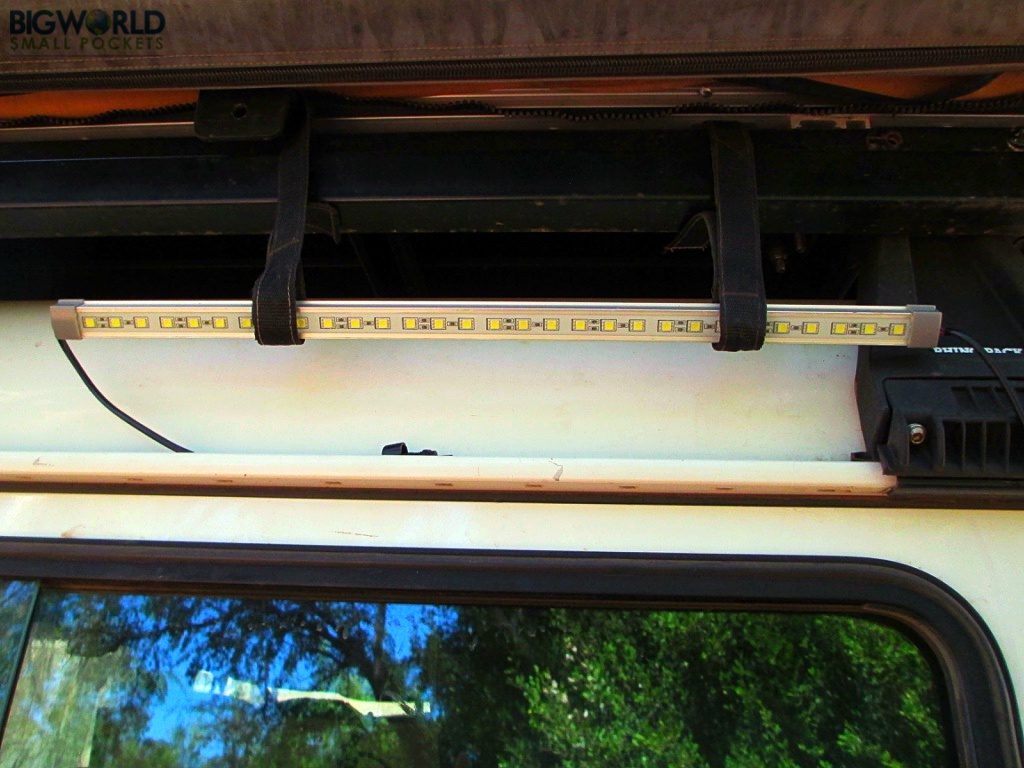
A large part of my road trip in Australia involves staring up at the country’s incredible night skies and marvelling at all the stars.
However, at times, you will also want to see a bit more!
That’s where LED lights come in!
These great inventions are easy to use, easy to store and definitely the way to go when it comes to cooking or setting up camp after dark.
And, best of all, they use almost no power, meaning they won’t drain your battery – hoorah!
This was something I originally crossed off my list of essentials, meaning I set off to road trip Australia without them.
Big Mistake!
When you have to go to your tent every night at 6pm because you’ve run out of light, or you have to make sure you’ve cooked and packed away by 5:30pm, it really starts to impinge on your day!
As such, it wasn’t long before I had worked out I desperately needed a set of these bad boys and haven’t looked back since!
Now I enjoy light in the evening for as long as we want and we can also feed the LED strip up through a special flap into my rooftop tent too!
This is a real godsend in Western Australia especially, where daylight savings doesn’t exist and it’s currently getting dark around 5pm!
My Recommendation: OZ Trail Camping LED Bars
5 essential packing items for australia.
#1 Good Camera – You will be pretty much snapping non-stop in Australia and will need a good camera to do this gorgeous country justice. I highly recommend the Sony A6000 , which I use for all my travels and love, not least because it’s light, compact and robust!
#2 Good Walking Shoes – There will be a lot of walking in Australia – from cities to national park! Make sure your feet are comfortable therefore with a pair of New Balance Trainers . Perfect for stylish strollling, I love mine
#3 Good Guidebook – I’m still a massive fan of the Lonely Planet Guidebooks and do think their Australia edition is well put together
#4 Good Water Bottle – Travelling in hot old Australia can be thirsty work, so make sure you have a metal water bottle that you can refill as you go, because tap water is drinkable… and free!
#5 Good Sun Hat – And there’s no denying you’ll need a good sun hat for protection in Australia too. In my opinion you can’t go past this Hello Sunshine one, which is both gorgeous and ideal for keeping the rays off your face.

Keeping food cold and good to eat for longer periods of time is obviously crucial for anyone when they road trip Australia, but especially for us given how much I eat and how much of my diet is comprised of healthy, wholefoods that need to be kept cold.
You could risk your road trip with just an esky, but if you’re carrying some decent meat for your barbie or some lovely rocket for your salad, then they are not always the most reliable!
Messing around with ice, constantly draining it and then having to buy more bags of frozen water all the time is highly annoying.
Not to mention potentially impossible if you’re road tripping remote Australia for long periods of time.
As such, I recommend you take my advice and try a get a 240/12v fridge for camping.
This will save you sooo much time and hassle.
No matter where you go, your food will stay crisp, fresh and not half-frozen like it will in an esky!
My other tip is: Go Big!
I have a 70l fridge, which although it takes up half the space in the back of the Landrover, is always stuffed to the brim after my weekly shop. Did someone say greedy pigs?!
My Recommendation: Waeco CFX-65 (65l)
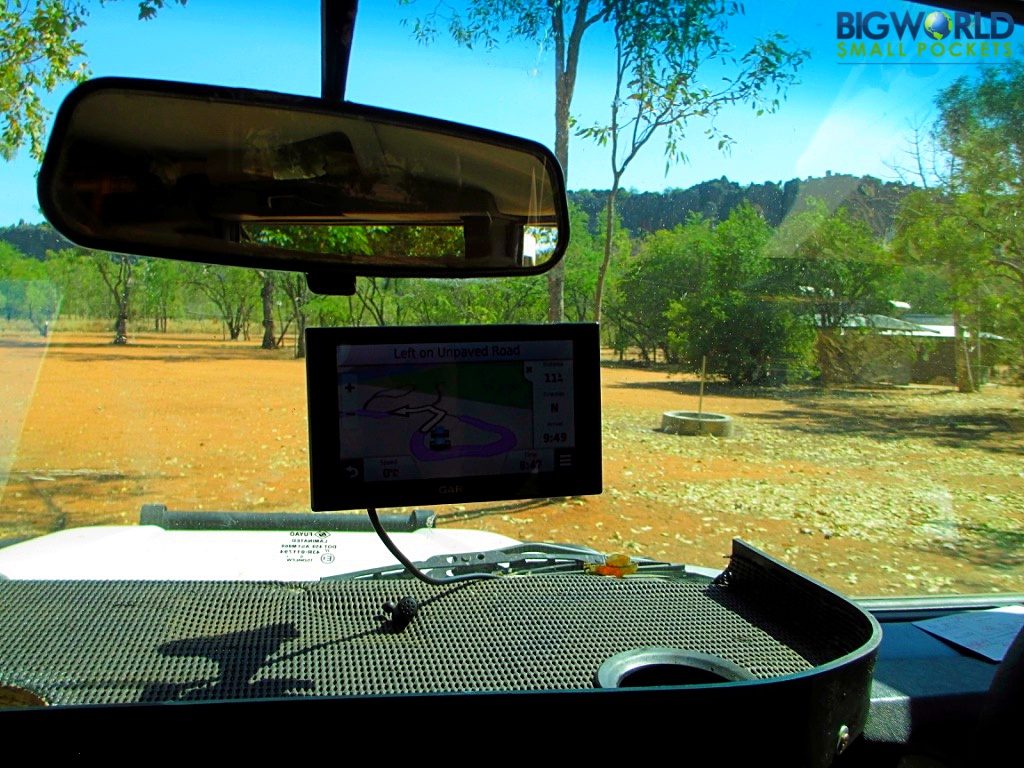
If you’re starting to road trip Australia , then you really should know about the dangers of getting lost in the bush!
Seriously, people do die in this vast country’s wilderness and if you’re not familiar with the flat red landscape of much of its interior, it can quickly and easily become very disorientating.
Even if you are just sticking to the coast or the cities, then let’s be honest, getting lost can be damn right annoying.
As such, I definitely recommend investing in some GPS technology and letting these modern devices do the hard work, so you can just concentrate on the views.
<p”>Smartphones with google maps are ok when you have phone signal, but leave any major point of civilisation and your google maps will likely be rendered useless.
We have a Garmin Nüvi and swear by it for its awesome directions, knowledge and usefulness.
Only once has it not been able to locate a road for us and that was in remote Arnhem Land, so fair enough!
We also love our Garmin for the way it keeps track of the miles we’re doing, works out our fuel efficiency and lets us know when there’s red light and speed cameras up ahead!
Paper maps are super handy (and can easily be picked up for free at most tourism offices around Australia), but there’s nothing like a GPS to make life easy and provide you with a ton of extra stats!
My Recommendation: Garmin Nüvi 2589
#7 head torch.
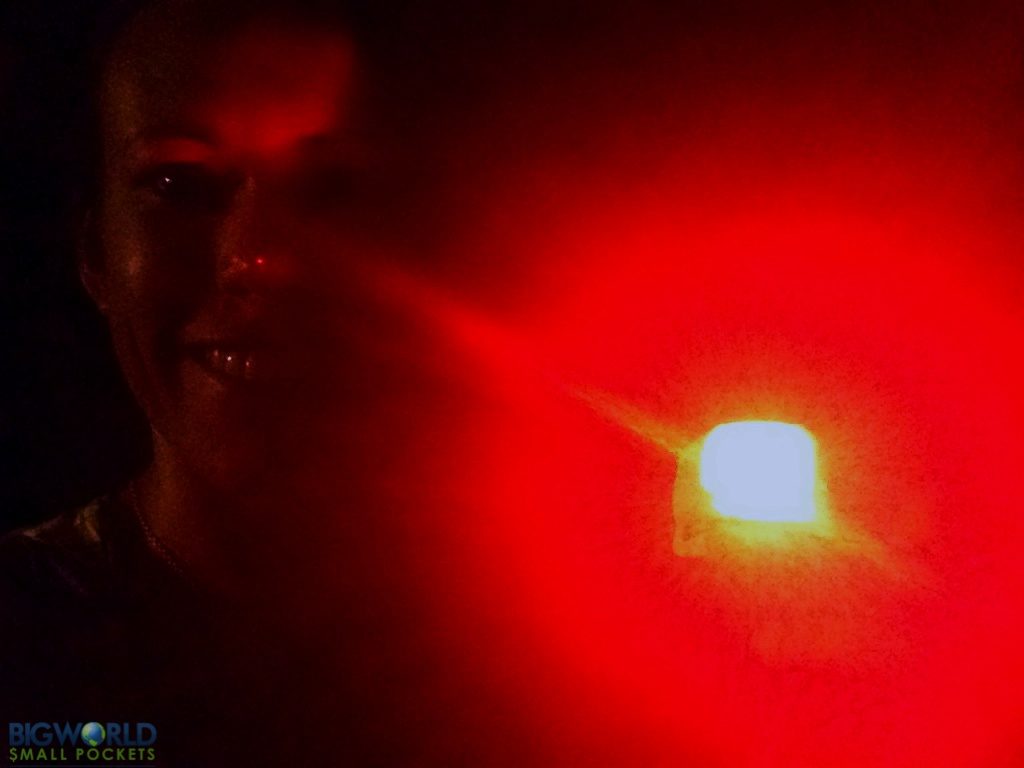
Do not, I repeat do not, even consider going on a road trip in Australia without getting a head torch before you leave home.
And why do I say this? ….. Because I did … Rookie error my friends!
One of the first things I bought after only a few days on the road, therefore was a good headlamp.
Do you know how dark it can get out there and do you know how many potential creepy crawlies you may encounter on your way to the toilet in the night? Enough said.
Plus, it’s really helpful when trying to cook and/or eat and/or set up a tent in the dark.
Check my post about the best headlamps if you’re looking for inspiration.
Otherwise, just make sure you get something with a red night vision setting, so you don’t walk around attracting every bug in the place to your forehead!
My Recommendation: Vtin Aurora Headlamp
#8 battery charger.
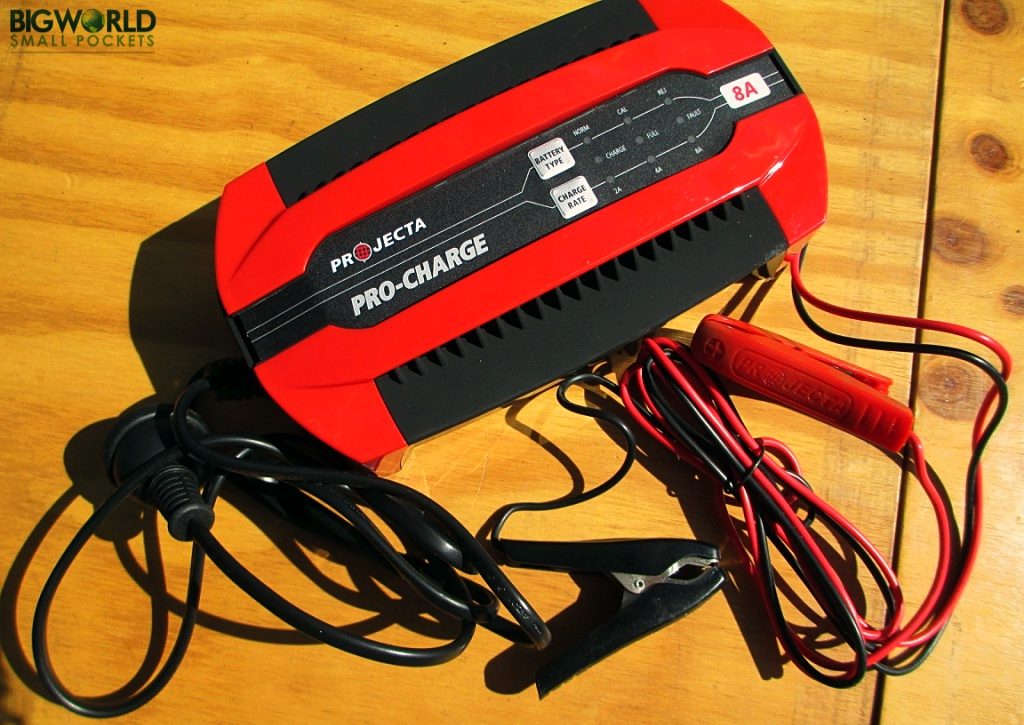
A key piece of kit for those rare times when I treat myself to a powered campsite, a battery charger is a great piece of gear if you plan to road trip Australia.
With one of these guys, all you have to do, is rock-up to a powered site, plug the charger into a 240v socket and attach the other end to your battery via the alligator clips.
The just sit back, safe in the knowledge your dual battery system is being topped up.
My Recommendation: Projecta Pro-Charge Battery Charger
#9 satellite phone or sat sleeve.
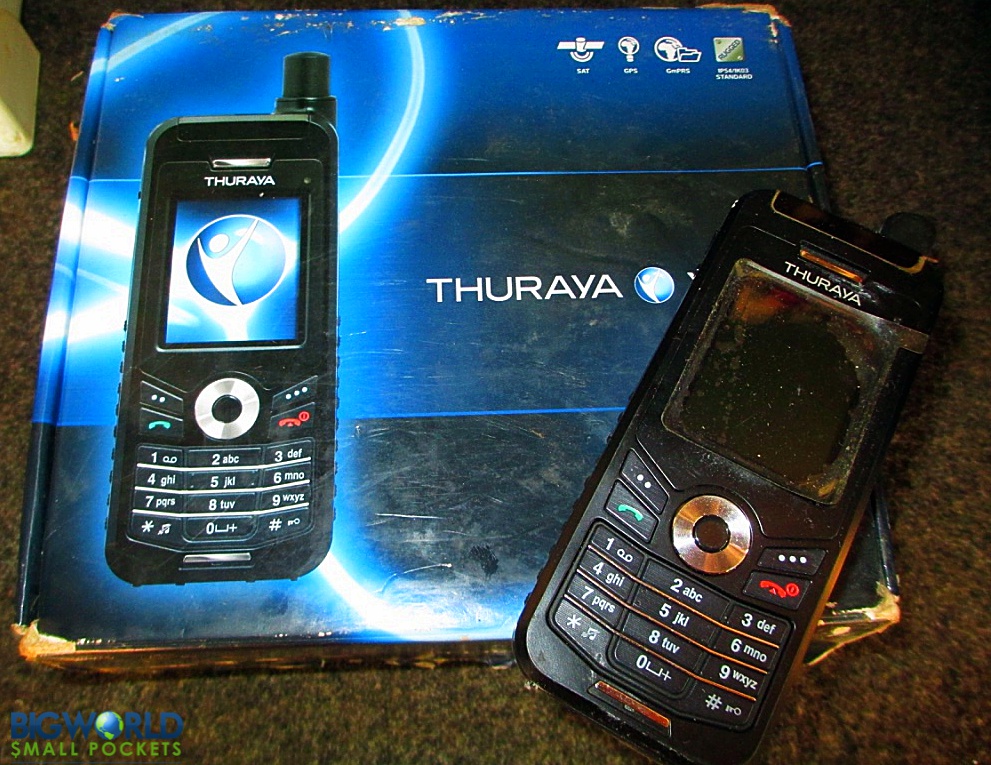
Again another item I set off to road trip Australia without … and then regretted!
I knew satellite phones were pretty essential for where we were going, but I also knew they were pretty expensive.
Therefore I just accidentally, kind of on purpose, forgot about them!
Blowing a hole in the radiator in a remote 4wd track in Arnhem Land where there was no phone signal, soon bought the notion of a sat phone rushing back to the forefront of my mind however!
You can read all our about the blown radiator (mis)adventure in week 11 of the budget 4wd adventure around Australia , but in short, the story is that luckily I had enough water and food and only had to wait 6 hours before being found by someone!
It could have been a lot worse however and the first thing I did when I got back to civilisation, aka Darwin, was research sat phone models.
It turns out that the best buy is probably a Sat Sleeve.
This is a phone case with an inbuilt satellite receiver that slips over your smartphone, magically turning it into a sat phone.
All you need do after this is buy a plan (most of the major phone providers offer them) and away you go.
Luckily I didn’t have to end up buying one of these as a friend kindly lent me his satellite phone (thanks Neil!), but had I not been so fortunate, a Sat Sleeve is something I no longer would have quibbled over forking out for.
My Recommendation: Thuraya Sat Sleeve
#10 spotify premium.

This is one of the best and cheapest ways to listen to a ton of awesome music when you road trip Australia.
Unless you’ve got a mega iTunes library, Spotify is always going to give you more access to more music than you can imagine.
It’s also going to be cheaper that buying a shed-load of albums – and a lot more morally sound than downloading them illegally!
Plus, when you’re on the road in Australia, wifi access becomes a real drama, so the ability to download stuff almost always goes out the window anyway!
As such, the answer to my prayers has been Spotify Premium .
This is definitely one of the 15 essential things I couldn’t road trip Australia without because it allows me to download massive playlists and enjoy them offline.
Australia is huge.
That means hours of driving time and hours of music listening time.
Get with the programme people and get with Spotify Premium.
My Recommendation : Umm ….. Spotify Premium!
#11 dual usb charger.
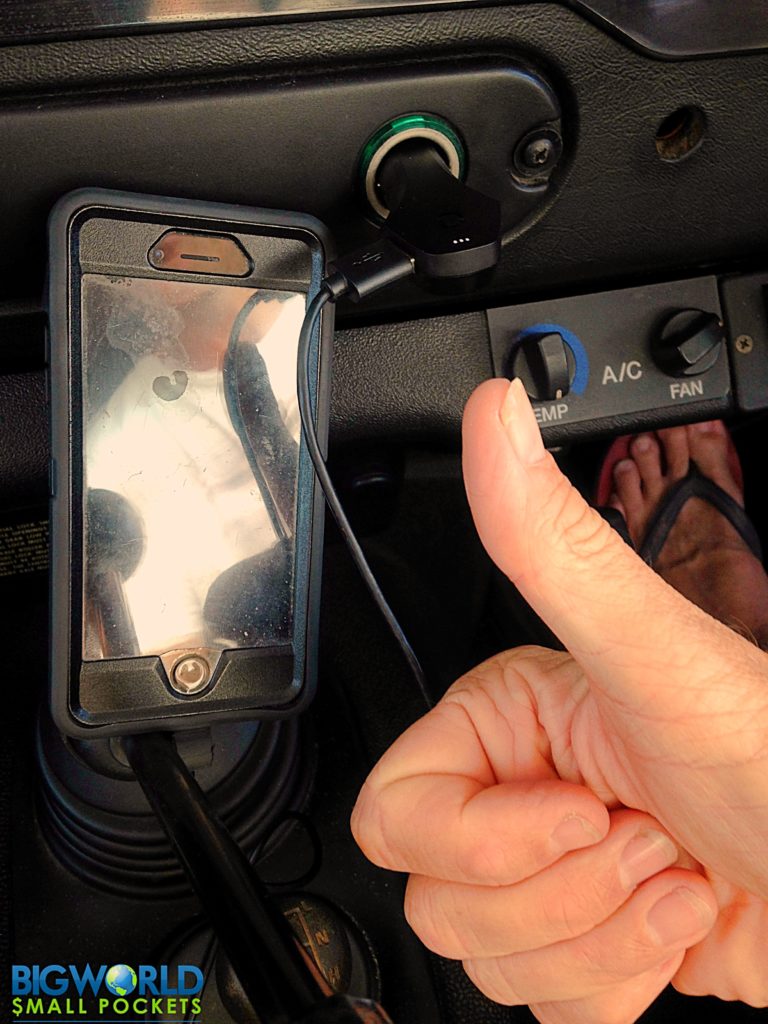
These genius inventions are a crucial part of life as I road trip Australia because they ensure all our much-needed devices such as iPhones and iPads stay topped up.
This makes life happier and blogging easier because I’m never left high and dry without any music to listen to or anything to capture that great sunset with.
The benefits of a dual USB charger are, of course, that you can charge 2 devices at the same time.
What you want to avoid however is getting a dual USB gadget that charges 2 devices but at half the speed i.e. the output is the same, just split between 2 things.
Enter the ZUS!
Thus little handy little specimen is permanently plugged into the cigarette lighter and is brilliant because it charges 2 devices at double the speed!
Don’t ask me how it does it, it just does and it does it brilliantly.
Plus it doesn’t even have a hefty price tag!
My Recommendation : ZUS Dual USB Charger
#12 solar panel.
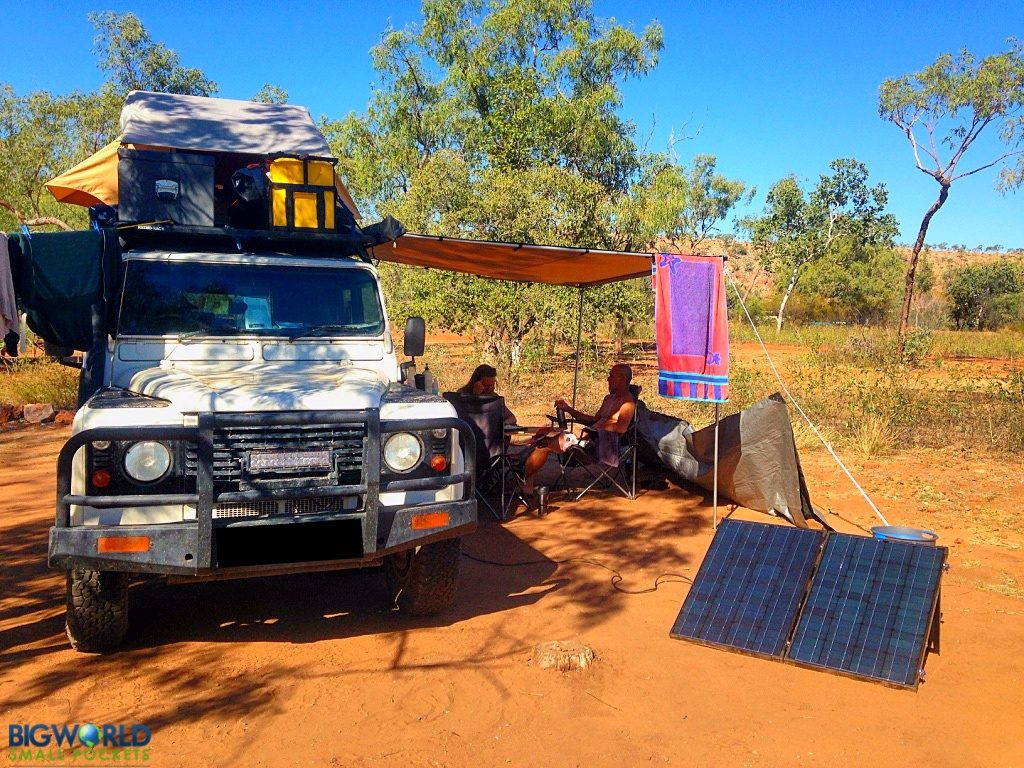
Now, what about harnessing loads of free energy while you road trip Australia?
I mean you will be travelling through one of the hottest countries on the planet, so why not make it work for you?
Sound like a good idea?
Well yes, it is a good idea and buying a solar panel before I left home was one gadget I knew I was going to have to splash out on.
Especially, because I would need at least a 120W solar panel.
Luckily, I hung out and eventually managed to nab one half price in an Anaconda sale, but it still cost us over $300.
However, while a solar panel was a big expense up front, I’ve more than reaped the rewards of it, getting day after day of free power.
Easy to setup, use and disable, these handy inventions are one of the best things to take, especially if you’re looking to be a bit self-sustainability during your adventure.
Basically, solar panels will allow you to go off-grid and, if it’s sunny enough – still keep your fridge running, your LED lights glowing and possibly even your laptop charging! Hoorah, hoorah!
My Recommendation: Projecta 120W Portable Solar Panel
#13 wikicamps.
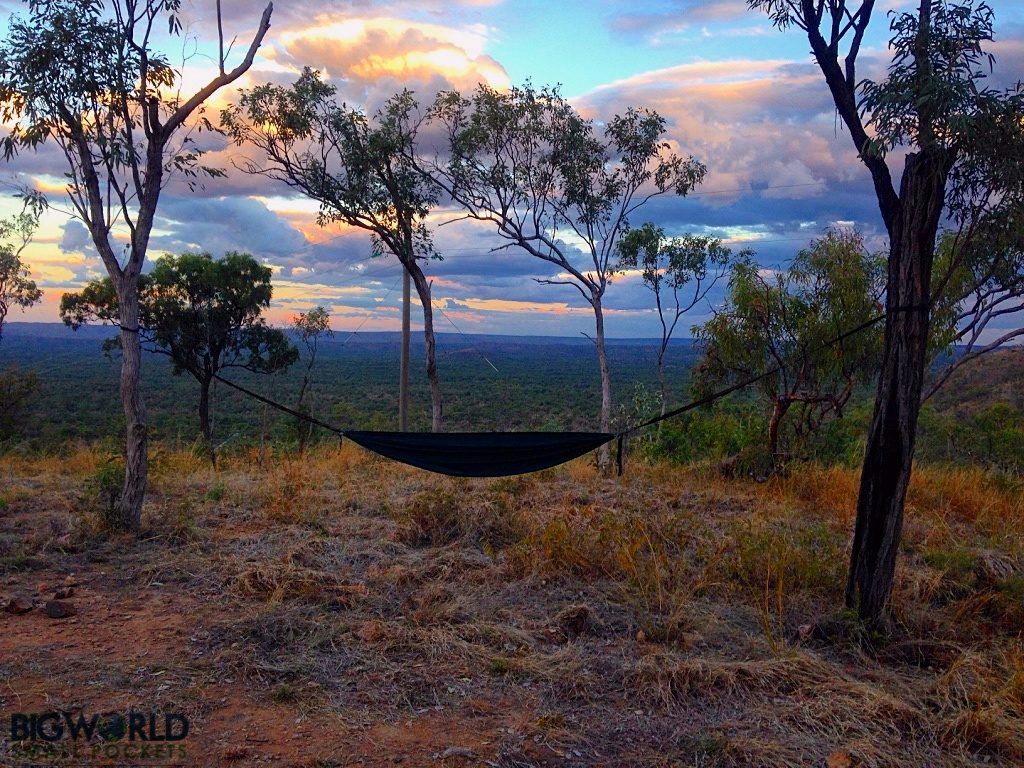
If you’ve read any of the weekly updates about my budget road trip Australia (FYI: they are published on the blog every weekend), then you’ll know how frequently I make use of Wikicamps.
Wikicamps is basically a genius little app, that costs only $7, but gives you access to the info and locations of just about every campsite in the country.
Along with directions, Wikicamps also boasts reviews written by other campers and a list of facilities, which gives you more of an idea about what you can expect from a place.
Very handy, you can also set filters on Wikicamps, which allow you to select and view only free camps in your area for example or those with RV dump points.
Whatever you want to know about camping in Australia, Wikicamps is bound to have the info and it’s saved me hundreds and hundreds of dollars in accommodation fees.
My Recommendation: The one and only Wikicamps App
#14 portable power bank.
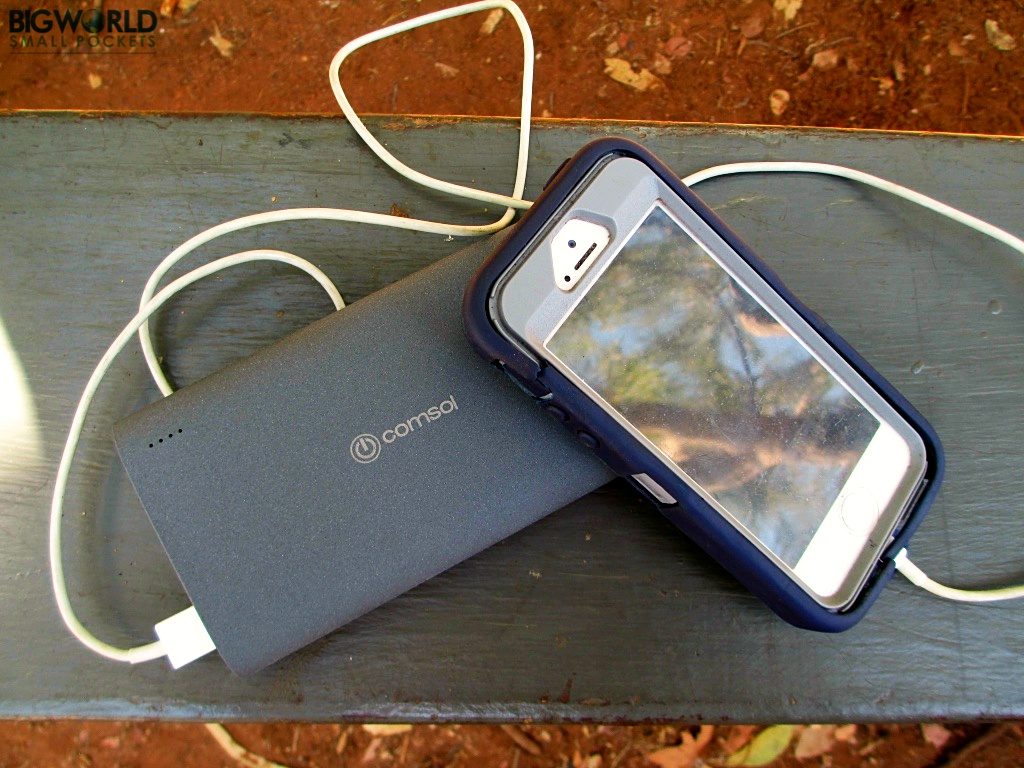
My latest purchase, a portable, dual USB, power bank, has already proved incredibly handy when I need to charge my phone but aren’t going to be driving or near mains power for a few days.
The one problem with using the inverter a lot is that it does chew up dear Landie’s battery, so by investing in a portable power bank, I can keep my phone charged (for cameras, social media, family contact etc) without worrying about the car.
You can also buy portable power banks that will charge laptops, but being bigger and bulkier, I just opted for one that can be used with tablets and phones.
My model is 15000mAH, which more than suits my needs, charging our iPhone 6 up around 5 times.
My Recommendation: Comsol 15000mAH Power Bank Dual USB Charger
#15 digital multimeter.
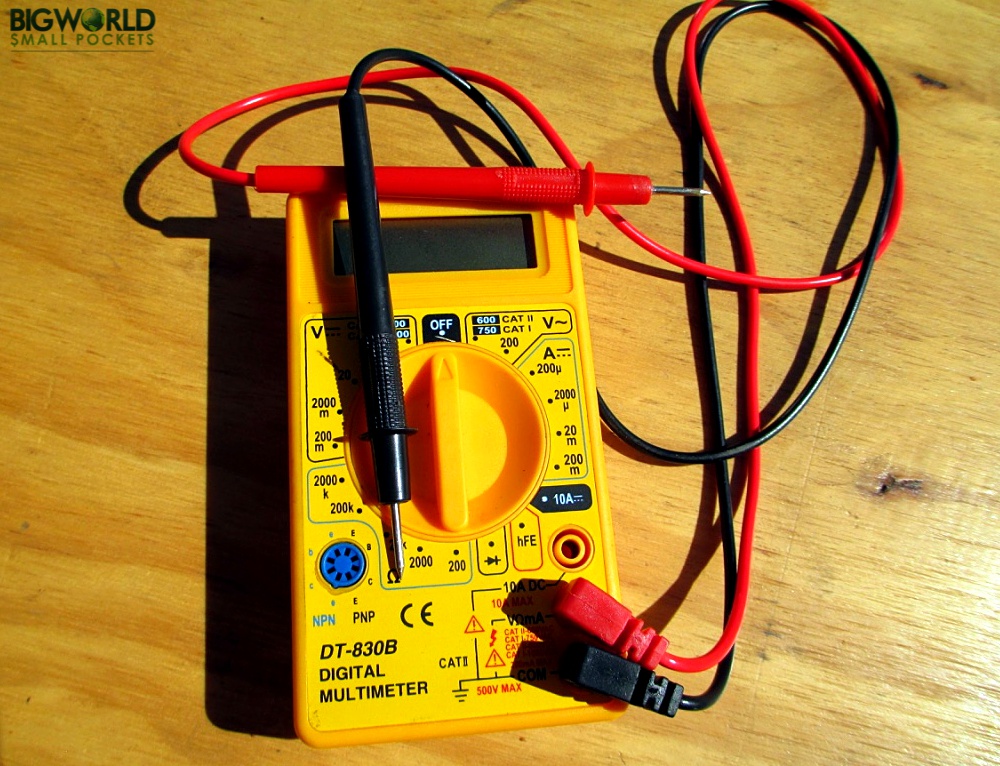
An absolute winner, especially if you road trip Australia for a long time, a multimeter is definitely something you shouldn’t pass over … like I did at first!
Essentially this little gadget allows you to test the voltage of your dual battery system, helping you to determine how effectively your solar panel is working, how much voltage your fridge is drawing and, most importantly, whether you’ll be able to start your car in the morning!
My digital multimeter is just a simple 2-pronged tool that you have to put against the terminals to get a reading, but it works just fine.
Better yet, would be to get a hard wired volt or amp meter from your battery to a viewable display gauge that easily allows you to take a reading just at a glance.
This will save you tons of time trying to second guess how many volts your battery is sitting at and whether you need to run the car, up the solar panel or switch off the fridge!
My Recommendation: Crenova MS8233D Digital Mulitmeter
Pin it for later.
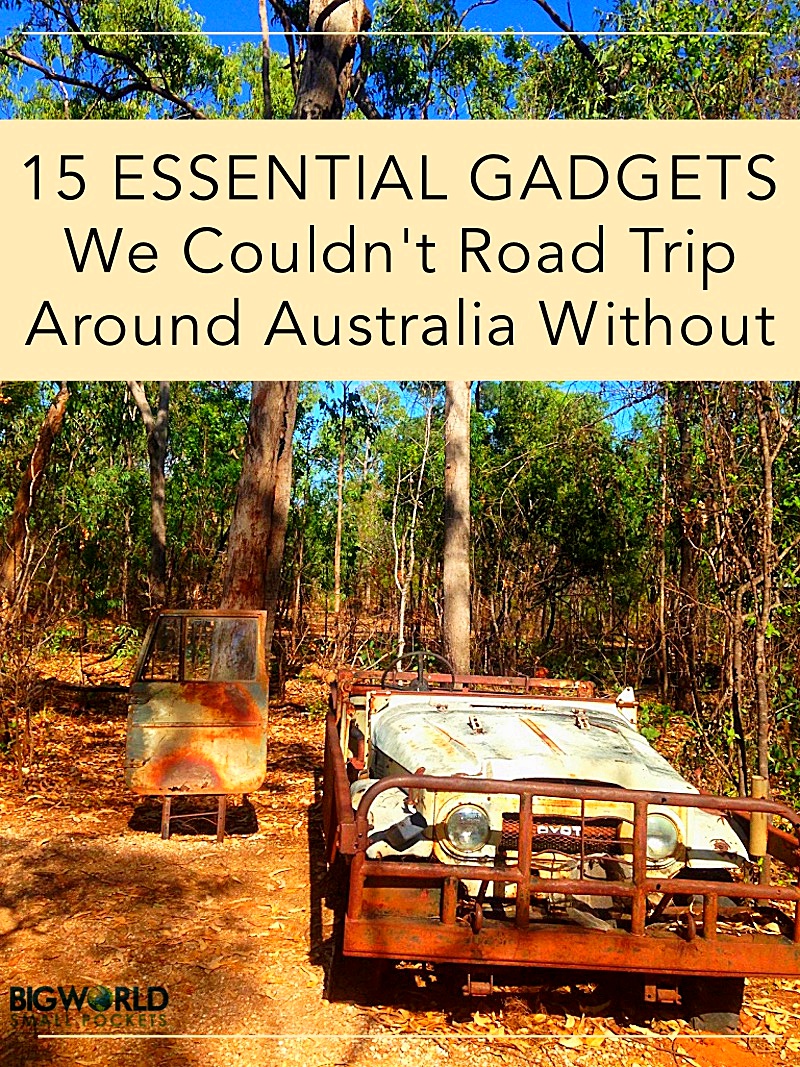
So there you have it, the 15 essential gadgets I couldn’t (and you shouldn’t) road trip Australia without.
I was desperately looking for this sort of straightforward information before I started my trip, but couldn’t find anything, so helpfully this will be of use to some of you.
Of course, do let me know if I missed anything and don’t forget to tell me your number 1 essential road trip gadget in the comments below…
Creator of Big World Small Pockets, Stephanie Parker is a travel addict! Originally from Jersey in the Channel Islands, Stephanie adventures the world collecting tips, advice and stories, to share with a smile
4 thoughts on “ The 15 Essential Gadgets We Couldn’t Road Trip Australia Without ”
I love Spotify. I couldn’t get through a day without it!
You know it Stephanie! Any recommendations for road trip tunes? 🙂
Good first aid kit including snake bite kit
Hi Andrew, these are 2 excellent additions! Thank you so much for the prompt. Safe travels, Steph 🙂
Leave a Reply Cancel reply
Your email address will not be published. Required fields are marked *
This site uses Akismet to reduce spam. Learn how your comment data is processed .
- CRUISE TIPS & PORT GUIDES
- Celebrity Cruises
- Holland America
- Marella Cruises
- P&O Cruises
- Princess Cruises
- Virgin Voyages
- Cruise Packing
Australia , Travel Tips
Australia packing list: what to pack for australia.
Travelling to Australia but not sure what to take? It can be pretty overwhelming thinking about to pack for such a big trip so let me help you out.
My packing list sets out what to pack for Australia so you can make the most of your holiday.
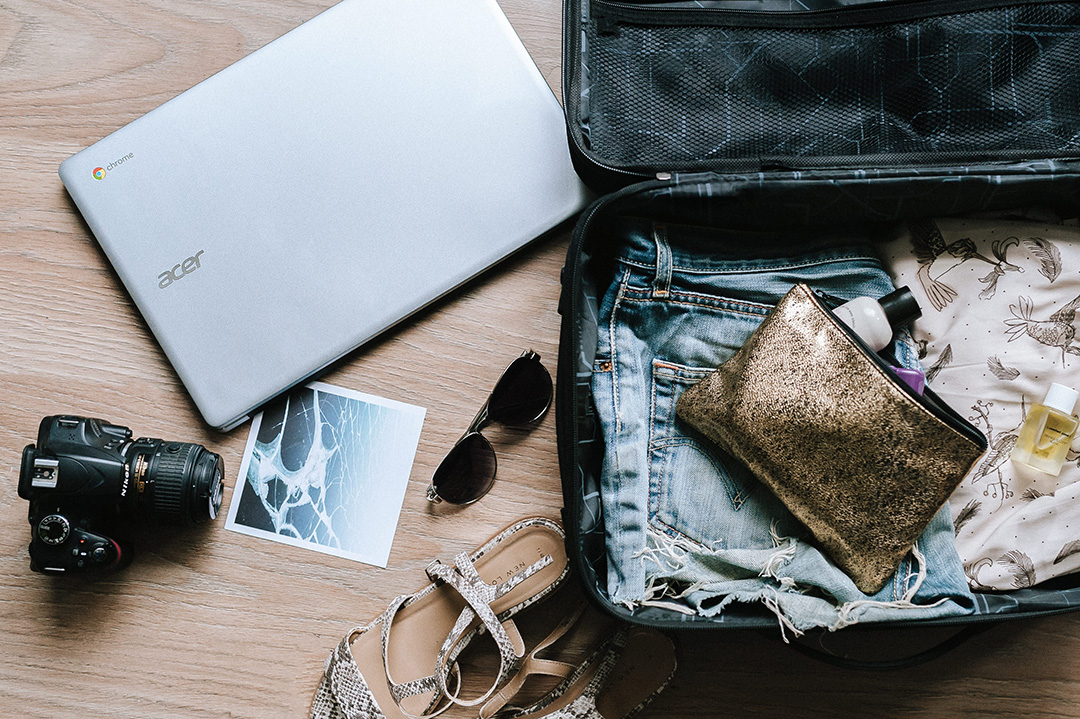
Packing list for Australia
I’m often asked what I take with me on my trips to Australia. Most people don’t really seem to think twice about packing for the average two week holiday, whether they travel light or take the kitchen sink.
However, throw in an extra week or two and it can start to get a little more complicated.
Can I take (or carry) enough to cover my whole trip? What should I take? Where can I wash clothes? They are just some of the questions that spring to mind when planning a big trip.
Backpacking taught me we actually need very little when travelling, not least because I can’t carry much. Thank god for backpacks on wheels – they do exist!
However, now I’ve upgraded from hostels to hotels I’m always trying to find the balance of taking what you need for a comfortable trip but still being able to get around easily.
If you are doing a whistle-stop tour of Australia over a few weeks you definitely don’t want to be carting loads of stuff around with you. Packing and unpacking gets more than a little tedious after a few days…trust me .
With a number of trips to Australia under my belt, from nine months backpacking to a two week flying visit, I’ve made every packing mistake there is.
From taking too much (I posted home over half the stuff I took backpacking within a week) to packing for a trip an hour before leaving for the airport. I’ve done it all.
So to save you that trouble and get your holiday off to a flying start I’ve put together a packing list for Australia.
My guide covers what you should do before you leave, some tips on how to make the long flight a little more comfortable, what essential things to take to Australia and some packing advice.
Before you leave – travelling to Australia checklist
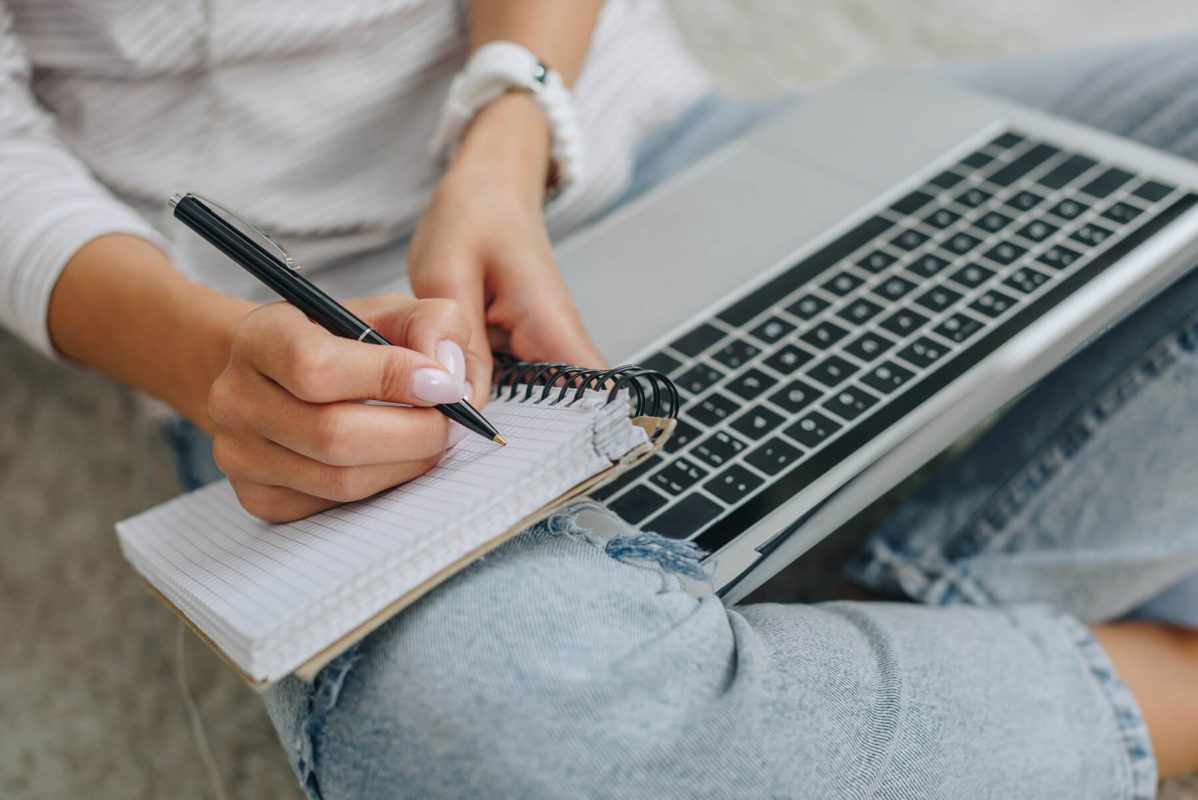
These things should be sorted long before you head off to the airport. The last thing you want to be doing in the last few days before your trip is running around checking passports and visas or buying travel insurance on the way to the airport.
So make sure you check these off before you go.
- Passport: check it is still valid. You don’t want to get to the airport to find out they won’t let you on the flight or into the country.
- Visa: you need a visa to visit Australia so you definitely don’t want to be leaving that till the last minute. It’s quick and easy to apply for. If you are European an eVisitor visa is available that allows you to visit Australia as often as you like in a 12-month period for stays of up to three months.
- Travel insurance: not the most exciting thing to organise but one of the most essential. Make sure your travel insurance covers your whole trip and any activities you may wish to do (watersports, winter sports, sky diving etc).
- Your tech: update your smartphone, laptop or tablet with your favourite films/tv shows/music. Make sure they play without an internet connection. Trust me there is nothing worse than getting on a 12-hour flight to find all your entertainment is stuck in the cloud.
- Contact details: leave details of your travel plans with a relative or close friend. Particularly important if you are travelling solo.
- Medical supplies: if you are an on medication make sure you have enough to get you through your travels. It’s also worth having a copy of your prescription with you just in case.
- Packing cubes: once you’ve used these you’ll never look back. Makes organising your case so much easier.
Plan your adventure to Australia with my state by state to the top attractions and must see places. Find out more…
For the flight
I love long-haul flights, there is nothing better than being able to switch off for a few hours. That said they are not always the most comfortable of journeys.
Well for those of us in economy!
So to try and make it a little easier here is what I always take on board with me.
- Reusable bottle of water: saves you keep having to get up for a drink or calling the flight crew.
- Snacks: the less said about most airline food the better. Take some of your own snacks just in case.
- Reading material: stock up on books and magazines or download lots of books to your Kindle/smartphone.
- Large wrap/pashmina: I know most airlines offer you a small blanket but I always think using your own is cosier.
- USB cable: lots of long-haul flight these days come with USB sockets in the seats so you don’t have to worry about your phone running out of battery before you reach your destination anymore.
- Moisturiser and lip balm: those long-haul flights can really take it out on your skin.
- Glasses: once up in the air I switch from contact lenses to glasses to avoid dry eyes (and from waking up thinking a miracle has happened and I can see again).
Tech Essentials
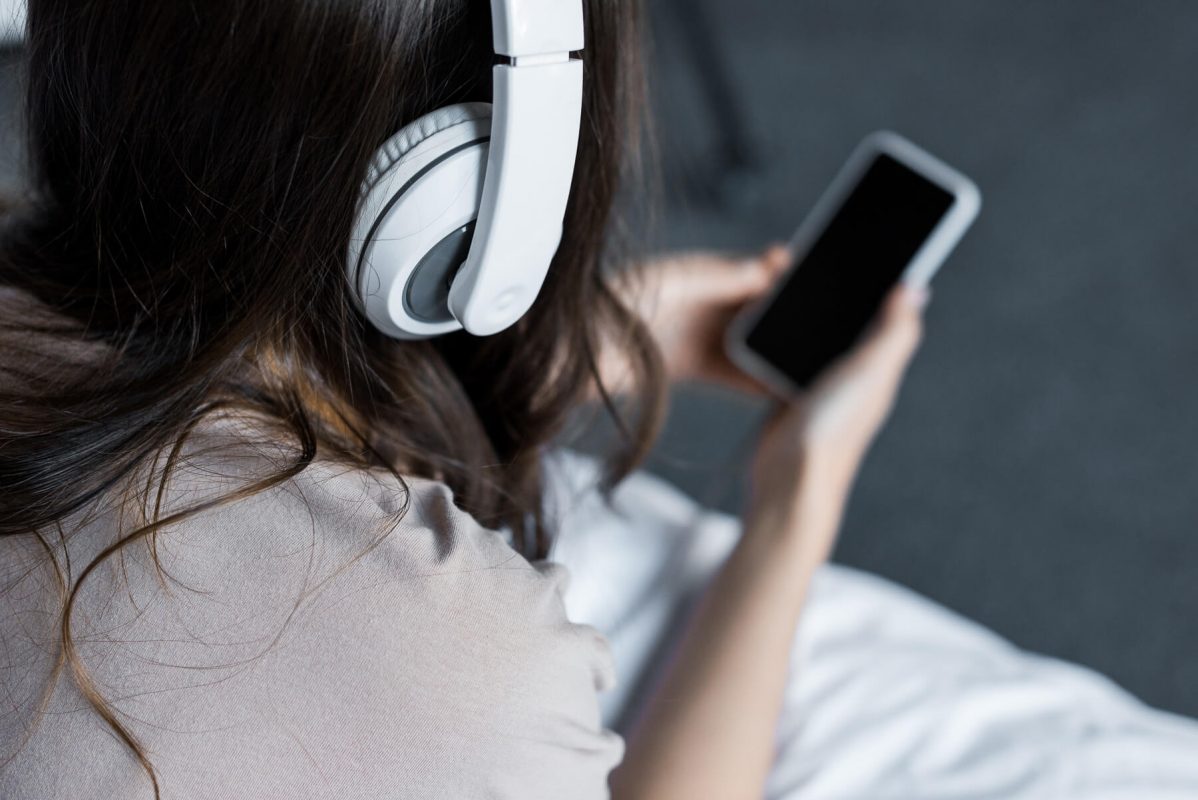
- Smartphone: these days your phone is your camera, travel guide, map reader and entertainment centre. Don’t travel without it.
- Spare battery charger: although most smartphone batteries are pretty good these days it’s always worth having a spare battery charger. You don’t want to get to the end of a long day sightseeing to find you have no battery left to take photos or to use a map to find somewhere to eat.
- Power adapters : depending on where you are travelling from you may need a travel adapter. Also, if a few of you are travelling together it is worth picking up an extension lead. There are never enough plugs in hotels rooms for everyone’s tech… or hair straighteners!
- Camera: whether you are a serious photographer or not if you are taking that once in a lifetime holiday or dream long-haul trip then take a proper camera. Smartphones take great photos nowadays but nothing beats a proper camera.
- Extra memory cards: you’ll take a LOT of photos
- Laptop/tablet: most hotels have computers you can use or there is usually an internet cafe not too far away but laptops/tablets are so light these days it’s more convenient to have your own with you.
- USB stick (or portable hard drive): backing up to the cloud isn’t always that easy or practical while travelling. It can be hard to get a decent connection and can take ages to upload. So having a USB stick or portable hard drive means you can back up photos and other information safely and easily.
- SIM card: if you are spending a few weeks in Australia, look into getting a local SIM card. It can often be cheaper than using your own one. If I’m Oz for more than 2-3 weeks then I usually by an Aussie SIM card.
What to wear in Australia?
While I have been known to chuck some clothes into a suitcase an hour or so before heading to the airport (even for a month in Australia), I do try to have some kind of checklist for packing.
- Jeans (blue and black)
- Skirt (mid-length/maxi)
- Dresses (day dresses and one that can be jazzed up for an evening out)
- Vest/Camisoles
- Light rain jacket – believe it or not it does rain in Australia sometimes.
- Swim/beach wear
- Exercise gear – the outdoor lifestyle will get you at some point on your travels
- Trainers/converse
- Flip flops (or thongs if you are in Australia)
- Wedges/day shoes
- Heels (well you never know)
- Comfy walking shoes!
Accessories
- Sarong (a multitude of uses)
Packing for winter in Australia (yes they do have a winter – kind of)
You might not believe it but it can get cold in some parts of Australia in winter – Melbourne I’m looking at you! So if you are heading to Australia then make sure you add a few warmer clothes to your case.
- Long sleeved tops
- Jumpers or hoodie
- Winter jacket
Toiletries List
Obviously, you can pick up toiletries in Australia but unless I’m really trying to cut down my luggage or my case is ridiculously heavy I usually take a few favourites with me.
- Shampoo/Conditioner
- Cotton wool buds/pads
- Make-up: long wear makeup all the way. I swear by Bobbi Brown & Charlotte Tilbury for long wear eyeshadow. Estee Lauder for foundation
- Make-up remover (wipes and liquid or cream remover)
- Moisturiser (Elemis Pro-Collagen Marine Cream is my hoily grail)
- Sun cream – with a high SPF
Backpacking Australia Packing List

My first trip to Australia was when I was backpacking which brings it’s own set of packing challenges.
I thought I had packed light but ended up sending home a box of stuff within two weeks of arriving in Australia.
You quickly realise the less you have the easier it is to carry around! So if you are going backpacking try packing a few days before you leave. Then halve it. And maybe halve it again!
Most of the items in the list above are still relevant if you are backpacking (though perhaps on a smaller scale) however, there are a few more items you should consider packing.
You’ll likely be in hostels most of the time so you’ll need to be a bit more self sufficient than if you were in a hotel.
Backpacking essentials
- Microfibre towel
- Sleeping bag
- Sleeping bag liner
- Mesh protector for rucksack
- Hanging toiletries bag
- First aid kit
So that is my list of essential things to take to Australia. Have I forgotten anything? What are your travel essentials? Or do you have any packing hacks? Let me know in the comments below.
The last word
Packing for Australia needn’t be overwhelming. It just needs a bit of planning and preparation
You may also like
- How to plan a trip to Australia
- An Australian Bucket List
Pin for later

One thought on “ Australia Packing List: what to pack for Australia ”
– I always take some currency with me. I learned my lesson when I couldn’t exit a freeway in the US due to not having any dollars with me 🙂 – Offline maps on my (Android) phone. – A wireless router with a local SIM card. Was extremely handy in Japan and NZ. – Antibacterial wipes – One roll of toilet paper (also a lesson learned 🙂 ) – flip flops for the hotel room
Leave a Reply Cancel reply
Your email address will not be published. Required fields are marked *
This site uses Akismet to reduce spam. Learn how your comment data is processed .

- Free eBook guide
- Before coming to Australia
- Budget for your Working Holiday
- The Working Holiday Visa
- Which city to arrive
- Packing Guide
- Backpacker Travel Insurance
- Cheap flights to Australia
- What to do on arrival
- Open an bank account
- How to transfer money
- CurrencyFair 5 free transfers
- WISE money transfers
- How to migrate to Australia
- Tourist Visa
- Working Holiday Visa
- Student Visa
- TSS Visa Sponsorship
- Partner Visa
- Travel insurance options
- Australian healthcare system
- Working Holiday Insurance
- Backpacker travel insurance
- Short term travel insurance
- International student insurance
- Travel insurance companies
- Go Walkabout promo code
- Living in Australia
- Accommodation guide
- Phone Plans in Australia
- Driving in Australia
- Cost of living in Australia
- Climate and Seasons
- Claim GST on expenses
- How to claim your tax return
- Claim your Superannuation
- New South Wales
- South Australia
- Western Australia
- Northern Territory
- POPULAR SPOTS
- NEW ZEALAND
- ASIA PACIFIC
- Travel Budget
- Climate and seasons
- Customs in Australia
- Itineraries ideas
- Road Trip Complete Guide
- Budget Road Trip
- Where to camp in Australia
- Choose and buy a vehicle
- Tips for everyday life
- News in Australia
- Festivals & events in Australia
- Just for fun
- Best stopovers from Europe
- When to buy your plane ticket
- Rent a cheap campervan in Australia
- Motorhome rental in Australia
- Car rentals in Australia
- How to rent a vehicle in Australia
- Rent a cheap campervan in NZ
- Motorhome hire in New Zealand
- Best Diving spots in Australia
- Great Barrier Tours – Best tours
- Best spots to surf in Australia
- Working in Australia
- Setting yourself up for work
- Writing a resume in Australia
- Wages in Australia
- Typical Backpacker jobs and salaries
- Certificates & training
- Getting your Tax File Number
- How to get an ABN
- How to claim your superannuation
- Housekeeping work
- Hospitality jobs
- How to find a job in hospitality
- Working in a bar
- RSA Certificate
- Coffee Barista course
- Gambling establishments (RSG / RCG)
- Work in construction
- Work as a Traffic Controller
- White Card certificate
- Become an Au Pair in Australia
- Get your Blue Card
- Fruit picking jobs
- Fruit picking map – contacts
- Fruit picking season – calendar
- How to apply for a second year
- How to calculate your 88 days
- Eligible areas for a second year
- Eligibles jobs for a second year
- Volunteering in Australia
- Work as a freelance
- Best Outback jobs
- Work in a road house
- Working in a cattle station
- Become a Hairdresser in Australia
- Find a professional job
- More job experiences
- Study in Australia
- International Student insurance
- Budget to study
- Diploma equivalency
- How to finance your studies
- Universities in Australia
- ANU: Australia’s number one uni
- Medicine studies in Australia
- Top 10 online courses
- Getting ready for your IELTS Test
- Find a student job
- Orientation Week
- Free study advice
- Internship in Australia
- $25 OFF RSA Courses
- $16 OFF White Card Courses
- $25 OFF RSG / RCG Courses
- 5% OFF Travellers Autobarn
- Cheap Campervan rental
- 10% OFF Go Walkabout
- 5 Free transfer with CurrencyFair

- Great Barrier Tours - Best tours
- News in Australia Be up to date. Here you will find all the news from Australia that are relevant for backpackers! All news at a glance!
- Festivals & events in Australia
- Wildlife Discover Australia’s wildlife! Find everything you ever wanted to know about Australia’s animals. Kangaroos, wombats, koalas, wallabies, crocodiles, Tasmanian devil, kookaburras, sharks, wales and many more… Understand Australia s animal kingdom and discover some adorable Aussie animals.
- Just for fun Funny articles about random things happening in Australia: Unusual events, illustrations, competitions and much more. Just for fun is entertaining and funny!

- Certificates & training
- Fruit picking map - contacts
- Fruit picking season - calendar

- More info Australia is a popular destination for both Working Holiday Visas and tourists, however, it is also worth considering Australia as a destination for studying. Better yet, foreign students are in great demand, with many nationalities. Many choose to study in Australia to improve their English skills, travel around Australia and to gain an international degree. Many choose to study in Australia.
- ANU: Australia's number one uni

- Travel Tips
Packing for Australia – The Ultimate Backpacking Checklist
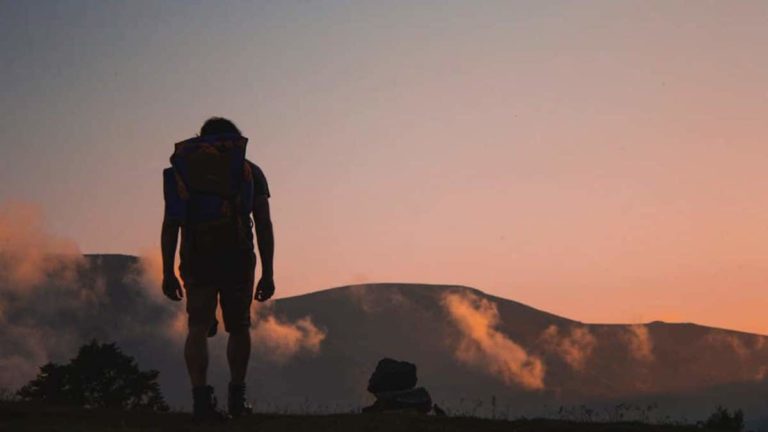
Embarking on a backpacking adventure through Australia is an exciting prospect. With its diverse landscapes, from sun-kissed beaches and tropical rainforests to bustling cities and the vast outback, preparing adequately is crucial. This ultimate backpacking checklist ensures you’re well-equipped for everything the Land Down Under has to offer.
Table of Contents
Preparing Your Luggage for an Extended Stay
Packing for a lengthy stay in a foreign country like Australia can be daunting. Our perceptions of a place can often differ from reality, and personal travel preferences also play a significant role in how we pack. Whether you’re an urban explorer or a wilderness wanderer, your luggage should reflect your travel style and itinerary. Remember, flexibility is key as your plans might evolve once you’re there!
Some will leave with a backpack with holiday clothes, others who want to settle in town will leave with more dressed, business clothing… So by determining your trip, you will know more or less what you will need for this trip to the end of the world 🙂 all this while knowing that your plans may change once there…

Backpack or Suitcase: Making the Right Choice
The eternal traveler’s dilemma: should you opt for a spacious backpack or a sleek suitcase? The answer lies in your travel mode and personal preference.
Selecting Luggage Based on Your Travel Mode
- For Road Trippers: If you’re planning an epic road trip across Australia, a backpack is your best bet. It’s more convenient and space-efficient in a vehicle. Check out various sizes and brands at sportsdirect.com, but remember, trying them on in-store is always better than buying online.
- For City Dwellers: If your Australian adventure involves city living, perhaps as an au pair, intern, student, or urban worker, a suitcase might seem appealing. However, consider the ease of storing a backpack in smaller living spaces.
A poll among backpackers on our Facebook page revealed that 67% preferred backpacks while 32% chose suitcases. Ultimately, it’s about what suits your travel style best.
Advantages and disadvantages
Choosing the ideal backpack or suitcase, the perfect backpack(s).
Aim for a large backpack (50-70 L) complemented by a smaller daypack for personal items.
A big backpack: Balance and accessibility are crucial. Heavy items should be placed along the back, while frequently used items go on top.
NB: There are backpacks for men and women. The straps are positioned differently for men and women. So be sure to check this when you buy. Choose well-padded, wide shoulder straps, which are more comfortable, and an adjustable carrying belt.
A small backpack : This is ideal for carrying personal or important items outside of your main/larger bag. Think about bringing your wallet, photocopies of your license, visa, passports, etc. in case you lose your luggage/cabin bag.
Big or small, always secure your bags with padlocks. Especially when you leave them at hostel receptions, in plane or in bus compartment.
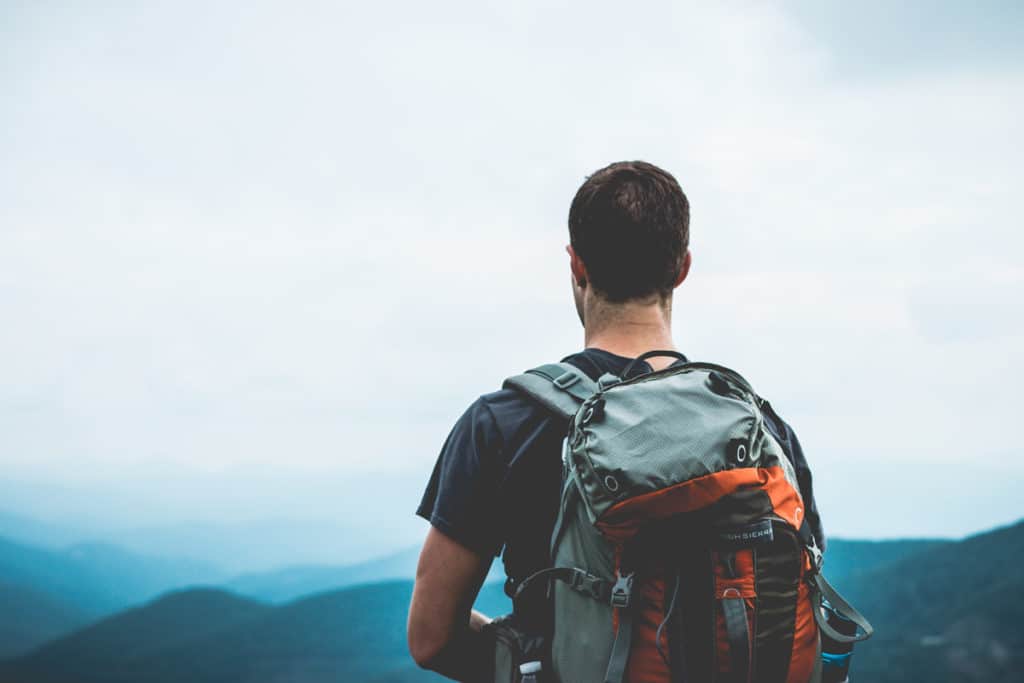
Steps for travelling to Australia on a WHV
Wanting to go to Australia on a Working Holiday Visa but unsure where to start? We will take you through it all in this article.
The ideal suitcase
Go for a lightweight model with sturdy 4-wheel rollers for maneuverability. Dual compartments are great for organization. Remember to check airline baggage limits, as they vary, especially for domestic or low-cost flights.
If you opt for a carry-on suitcase too, remember to check its size! Indeed, companies impose maximum sizes for cabin suitcases. In general, your cabin baggage must measure 55 x 35 x 25 cm maximum (wheels and handles included).
NB: Remember to check the weight limit for your baggage with the airline you are flying with, and also bear in mind that you may have to take domestic or low-cost flights where the maximum weight will certainly be lower.
Read also : Cheap Flights to Australia
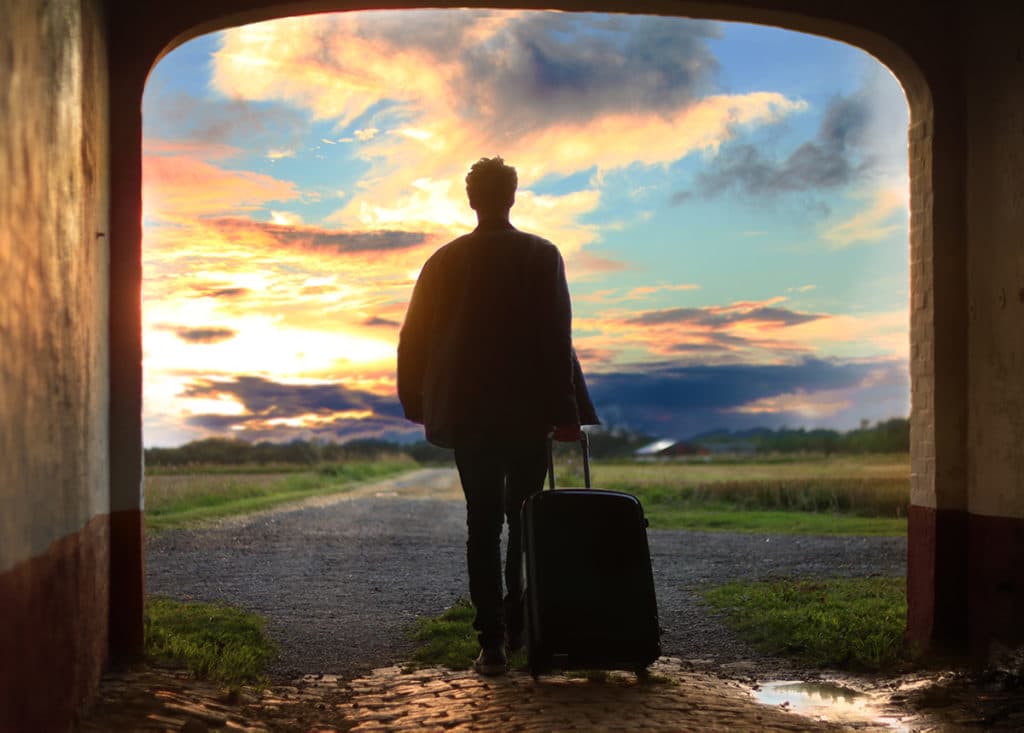
Packing your bag – where to start?
Tip #1 – travel light.
Make three categories:
1) Things you need – 2) Things you don’t need – 3) Maybe’s… Try and take all the things from the first category and then see what room you have left.
Don’t forget that airline companies only give you a limited weight allowance . Generally you get 20 kg for bags / suitcases registered as checked in luggage (max. 2 per person). Some companies allow you up to 30 kg or else you can pay a supplement to get 10 kg extra. Your hand luggage can generally be up to 7 kg (sometimes 10kg). Make sure to check this with the airline.
Tip #2 – Bring a bit of everything
Sure the weather is nicer than in Europe, but beware, in the South of Australia it can get pretty cold during winter . So take 2 or 3 jumpers, a jacket and some trousers.
For those that want to stay in the city, clothing standards are quite similar to ours. Australians dress up when they go out but it’s less common to be refused entry to a club for not wearing a shirt (with some exceptions).
Tip #3 – Don’t bring fancy stuff
Of course you can bring some nice things for your nights out. But again, it all depends on the trip you are planning.
It’s important to bring at least one sports/outdoor outfit. Especially if you’re planning to do Fruit picking or work on a farm. You should have a pair of trainers, long pants and a long sleeve T-shirt. If you don’t want to bring those in, remember that you can always buy second hand clothes from Op shops or cheap ones from big brands such as BigW, Kmart or Target.
Australia Backpacking list
Here a list to give you an idea of what you will need to back before landing Down Under!
Clothing and Footwear
Australia’s climate varies significantly across the country, so versatile and layerable clothing is key.
- Lightweight, breathable clothing for warm climates.
- A waterproof jacket for unpredictable weather, especially in tropical areas and during the rainy season.
- Fleece or sweater for cooler evenings and southern regions.
- 5 short sleeve shirts/vests + 1 or 2 long sleeve shirts
- A pair of jeans
- 2 or 3 pairs of shorts
- 1 pair of trousers /dress skirt
- socks and undies
- Durable hiking boots or shoes, depending on your planned activities.
- Flip-flops (thongs) for beach days and hostel showers.
- Swimwear for Australia’s famous beaches and reef snorkeling.
Health and Hygiene
- First Aid Kit : Include personal medication, pain relievers, band-aids, and antiseptic wipes.
- Sun Protection : High SPF sunscreen, sunglasses, and a wide-brimmed hat.
- Insect Repellent : Particularly for tropical areas and the outback.
- Tooth brush and tooth paste
- A nail clipper + tweezers
- Deodorant /Perfume
- Condoms /your pill.
Accessories
- Reusable Water Bottle : Stay hydrated and reduce plastic use.
- Laptop or tablet + external hard drive
- Smartphone with a good camera and sufficient storage + charger
- Headphones or Earbuds : For long bus rides or flights.
- Universal Travel Adapter : Australia uses Type I plugs.
- Padlocks : Secure your belongings in hostels and public places.
- Daypack : For day trips and excursions.
Essential Travel Documents
- Passport with at least six months validity.
- Ensure you have the correct visa and a print out of it
- Travel Insurance : Opt for comprehensive coverage that includes medical emergencies, theft, and cancellations.
- International Driving Permit (if you plan to drive).
- Copies of Important Documents : Keep digital and physical copies of your passport, visa, insurance, and emergency contacts.
Things not to put in your luggage
In your hand luggage.
Certain products are prohibited in hand luggage. You cannot take a liquid product of more than 100ml in cabin luggage. These must be in a transparent plastic bag. Thus, perfume, gel, moisturizer etc. should not exceed 100ml, otherwise, they will be thrown away when you pass security. There are exceptions for medications, but you will need a prescription.
Knives, scissors, sometimes lighters or any other weapon are also not allowed in the cabin.
In your checked-in luggage
Do not pack your valuables in your checked-in luggage. Take your laptop, camera, etc. with you in the cabin. You are never safe from theft, loss of your luggage or the possibility that it could be damaged during loading/unloading. Also take your important papers into your hand luggage: passport(s), any money, identity card, driving license etc.
Traveling to Australia in 2024: What’s New?
As we look ahead to 2024, traveling to Australia presents new opportunities and experiences. Here’s what you need to know:
- Australia is increasingly focusing on sustainable tourism . Consider eco-friendly travel options and accommodations.
- Explore beyond the usual hotspots. Australia’s lesser-known regions are gaining popularity for their unique offerings.
- Engage with Australia’s rich indigenous culture through immersive experiences and tours.
Remember, the key to a successful trip lies in preparation and adaptability. Whether you’re backpacking across the outback or exploring urban landscapes, Australia in 2024 promises to be an adventure of a lifetime.
FAQ – Packing for Australia
Luggage restrictions depend on your airline and your plane ticket. Check with your airline for weight and size restrictions on checked and hand baggage. In general, you will be allowed one hold bag and one hand bag. Some airlines give you a weight allowance but you can spread this across several suitcases, so you can check this on their website.
We would always recommend carrying any valuables in a secure backpack or travel bag and keep them with you at all times instead of checking these in. Make sure you lock your bags and hotel rooms when you are away and use the in-room safe if possible. To protect your bag or suitcase during transport, you can have it packed at the airport, costing around £20. It is also advisable to take out travel insurance to cover any loss or damage to your belongings.
As well as clothes, you may want to pack a first-aid kit, toiletries, an adaptor for the plugs abroad, an unlocked mobile phone so you can buy a local SIM card later, a camera, a credit or debit card, your passport and your visa.
Australia is a huge country, so the climate will vary from region to region. In general, the best time to travel depends on the activities you want to do and the places you want to visit. For example, the best time to visit Australia’s tropical north is between May and October, while the best time to visit Tasmania is between December and February (the Australian summer).
Pack as light as possible. Aim for a backpack you can comfortably carry, ideally not exceeding 15-20kg.
es, but consider the logistics and costs. It might be easier and cheaper to rent equipment on arrival.
Packing for a backpacking trip to Australia doesn’t have to be daunting. By covering the essentials listed in this checklist and preparing for the diverse experiences and climates across the continent, you’re setting yourself up for an unforgettable adventure. Remember, the key to successful backpacking is flexibility and a sense of adventure , so pack light , plan ahead, and be ready to embrace all that Australia has to offer. Whether you’re exploring the urban landscapes of Sydney and Melbourne, the natural beauty of the Great Barrier Reef and Uluru, or the laid-back vibes of coastal towns, this checklist will help ensure you’re prepared for the journey ahead. Enjoy your Australian adventure!
RELATED ARTICLES MORE FROM AUTHOR
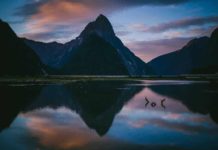
Traveling with children in New Zealand

Phone plans in Australia: Prepaid, Packages, Contracts

Best Stopovers from Europe to Australia
Leave a reply cancel reply.
Save my name, email, and website in this browser for the next time I comment.

Motorhome rental prices in Australia

The Coral Coast – Western Australia

- Terms of Use
- GDPR – Privacy Policy


17 Top Sydney Packing List Items for 2024 + What to Wear & NOT to Bring

Sydney is a booming coastal metropolis with gorgeous beaches, fun nightlife, and beautiful weather! With yearly temperatures rarely creeping higher than 90 degrees Fahrenheit or dipping lower than the mid-forties, this city offers a relatively moderate climate that allows visitors to get out and enjoy all that it has to offer at any time of the year.
Below you will find a list of our packing recommendations for Sydney, as well as what to wear and what NOT to bring on your trip as well!
What to Pack for Sydney - 17 Essentials
1. neck wallet.
From your passport to your vaccination card, this organizer makes keeping all of your documents and cards in one place easier than ever. Instead of having to rummage around your bags every time you need your ID or credit card, this hanging neck wallet allows you to quickly and easily access anything that you could need on the fly. It is available in six different colors and allows for easy organization while you explore Sydney.
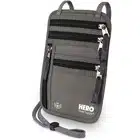
View on Amazon.com ➜
2. Small City Day Pack
Sydney is a fantastic walking city and it can also be very warm! A backpack or large purse is not always the ideal setup because of this. Instead we recommend a small day pack that fits your essentials in order to keep things light and easy to access. This one is available in 12 awesome colors and is perfect for a walk along the harbor.

3. Universal Travel Adapter
Every country has its own power plug and coming prepared for this will save you time and hassle when you need to charge your electronic devices in a new country. This Universal Adapter is an awesome one-time investment for not only your charging needs in Sydney but also on any future trips you may take to New Zealand as well.
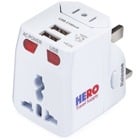
4. Universal Waterproof Phone Case
When you find yourself on the beaches of Sydney, which you inevitably will because they are everywhere, it is important to not only be able to capture memories there, but to protect your phone from the ocean water as well! Check out this waterproof phone case as a great option to let your friends know what you are up to without getting sand in your phone.
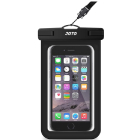
5. Quick-Dry Travel Towel
One of the best parts about Sydney is that it is located right on some of the best beaches in the world. From Narrabeen to Bondi it is easy to throw a couple hours of swimming into the middle of your day without missing a beat. This quick-dry towel is an essential to have on hand so that you can dry off easily and keep the things in your bag from getting damp from the ocean water.
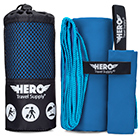
6. Floating Wrist Straps
This floating wrist strap is great if you are trying to get some underwater shots. Many of the beaches surrounding Sydney have fantastic snorkeling with lots of underwater sea life you will want to capture. This floating wrist strap will ensure that there are no phone casualties while you do it!

7. Packing Cubes
Nothing is worse than arriving at your destination with a pile of disorganized and wrinkled clothes. Use these packing cubes to help you keep your suitcase nice and organized so that finding all of the things you need is easy and painless. These cubes are great for keeping socks, underwear, and other clothing items easy to find. They also are an awesome place to throw your dirties to keep them from stinking up your other clothes!
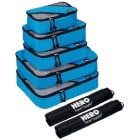
8. Hanging Toiletry Bag
Toiletries are an essential part of life and a must have for trips of all kinds. The best way to not only stay organized as you travel, but once you get to your destination as well, is by using a hanging toiletry bag. This allows you to keep your bathroom space clean and also have everything you could need in one spot.
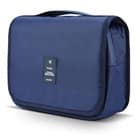
9. Memory Foam Travel Pillow
Australia is far away from well, almost everywhere! The flight is very long, especially from the United States and at some point you are very likely to sleep on it. A travel pillow, sleeping mask, and ear plugs will help you to do this comfortably even if you are stuck in economy!

10. Portable Charger
Sydney is best seen on foot and by bus and there are very few chances to charge your phone once you are out and about. By bringing a portable charger with you it will help you to be able to stay in touch with your group and record the best moments of your trip without worrying about conserving your battery.

11. Portable Speaker
Australians love to kick back, take it easy, and have a good time. With beaches abound there will be many opportunities for a nice picnic by the beach or swim in a lagoon. Bring a portable speaker to help set the mood of your happy day at the beach. These are also fantastic when you are at your hotel or Airbnb and want to get pumped for your day on the town.

12. Travel Insurance for Australia
Unfortunately, accidents happen, luggage gets lost, and sometimes flights get delayed and you have to reschedule your trip entirely. This can cost thousands of dollars if you are not prepared. By getting travel insurance for your trip you can rest easy knowing that any bumps you may encounter will be reimbursed or taken care of for you. We use TravelInsurance.com to compare policies from the top companies and find one that best fits our family and travel plans.

Compare policies at TravelInsurance.com ➜
13. Waterproof Dry Bag
Some things we simply don’t want to get wet. Whether that is your nice camera, your purse, your phone, or your change of clothes, having a dry and waterproof space to store your essentials in is a must-have for any trip to Sydney. As we have said before, you are bound to find yourself in the water at some point on your trip, and protecting the things that are important is a must. We recommend this awesome dry bag for just that!

14. Travel Sized Aloe Vera Gel
Try as one might, the sun in Australia is STRONG. There is a very likely chance that even with good sunscreen you will end up a little crispier than you intended. Having Aloe Vera on hand is a great way to plan ahead in case this happens. We recommend a travel size one so that you can make it through TSA easily in the case it ends up in your carry-on.

15. Virtual Private Network (VPN)
Every country is allowed different access to different content and websites around the world. By having your own VPN you are able to access anything from anywhere without restrictions or difficulty. This also protects your personal information from anyone who may try to access your personal information via a public and unprotected network.

View NordVPN.com Options ➜
16. Windproof Travel Umbrella
Protecting yourself from unpredictable elements is an essential part of traveling. Whether the wind kicks up or the sun is beating down more than you planned, this travel umbrella is a great portable way to help shield you from anything unexpected. It is small and lightweight so that it doesn’t add unnecessary bulk to your packing.
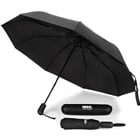
17. Cooling Towel
Sydney is a city of sun! The temperature in Sydney ranges from mild warm winters to very hot and sunny summers. With the constant sun and heat it is great to have a cooling resource when you find yourself exploring the city instead of relaxing on the beach. This cooling towel helps you to find heat relief anywhere you are and is lightweight and portable.
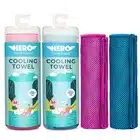
Other Sydney Packing List Items Not to Forget
- Luggage Locks
- Jet Lag Relief
- Deodorant Wipes
- Beach Sarong
- Selfie Stick
- Travel Sized Liquids Bottles
- Hand Sanitizer
- Sun Hat (Mens)
- Sun Hat (Womens)
- Memory Cards
- Travel Size Wrinkle Release Spray
- TSA Approved Liquids Bag
- Travel Pill Boxes
- Travel Shoe Bags
- Comfortable and Breathable Face Mask
- Toothbrush Travel Case
- Women’s Mini Razors
- Men’s Mini Razor
- Sydney Guidebook
- Sunglasses (Women’s)
- Sunglasses (Men’s)
- Flip Flops (Women’s)
- Flip Flops (Men’s)
- SPF Lip Balm
- Deodorant (Womens)
- Deodorant (Men’s)
- Over-The-Counter Medications
What to Wear in Sydney
Because of this, you will want to plan for an overall warmer vacation with lighter-weight clothing and materials that are breathable and lightweight. Linen pants , lighter tops , and a good sun hat are great for the city and will protect you from the hot Australian sun.
The general dress code for the city is casual because so many people are going to and from the beach and then back into the city to do other things. This makes beachwear with coverups acceptable for a daily outfit around town.
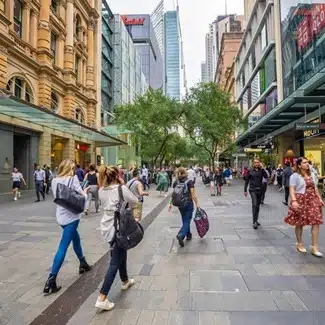
Below is a sample women’s clothing list. (All items link to Amazon.com for your convenience).

Below is a sample men’s clothing list. (All items link to Amazon.com for your convenience).

Packing for the Seasons in Sydney
Summer – december, january, february.
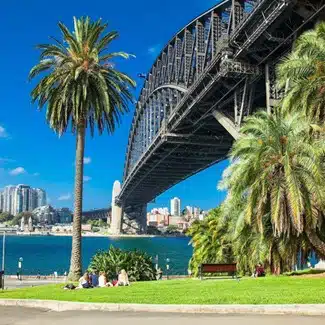
FALL – March, April, May
Fall is considered to be the mildest time of the year. There is much less humidity and the temperatures are more crisp and enjoyable for a day out and about. The evening may call for a jacket or some lighter-weight pants as temperatures are known to dip down into the 50’s.
WINTER – June, July, August
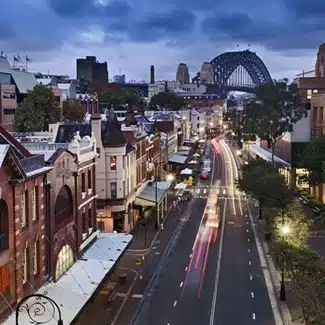
SPRING – September, October, November
Spring is when temperatures will start to rise again but will not be quite as warm and humid as they get in the summer. This is a great time to visit if you are wanting warmer weather but less of the sticky humid heat. Packing for this time should be more along the lines of a summer wardrobe with a light jacket or wrap for the evenings. Average temperatures of this time are generally low 50’s to high 70’s Fahrenheit.
Exploring the City: Sydney is really cool because not only is it an awesome walking city, but many parts of town are reached by an awesome boat transportation system that they have in place. Take a jaunt across the harbor to explore a new neighborhood or get incredible views of the famous Sydney Opera House and Skyline. The best way to dress for a day like this is some light pants, comfortable shoes, and a good hat to protect you from the sun.
Taking a Boat Ride or Tour: There are many fun boat tours that leave out of Sydney and the surrounding area. Whether you want to booze cruise or whale watch, there is something for everyone. Depending on the time of year will determine how you dress for this one. If it is warmer, then summer clothes and a swimsuit will be in order, and if it is a cooler time of year it’s smart to bring along a jacket in case the wind kicks up.
What NOT to Bring to Sydney
1. don't bring too many valuables.
Although Sydney is considered to be a safer city, it is still a city. To avoid any petty theft or loss of things that are important to you, bring copies of your passport and leave your actual passport locked up at the hotel. Avoid any expensive watches or jewelry that could make you a target.
2. DON'T Bring Snorkeling or Diving Gear
Snorkeling and diving gear are bulky and cumbersome. Lugging either of these all the way down to Australia will be much more trouble than it is worth. Rentals will be available in all beachy and diving areas.
3. DON'T Bring Bulky Clothing
Even at its coldest, Sydney is still pretty warm. Heavy winter coats or shoes will pretty much never be needed and just take up space in your luggage.
4. DON'T Pack a Regular Towel
Towels are bulky and take up a lot of space in your suitcase. We suggest a lighter alternative such as a quick dry travel towel . Anywhere you stay will provide you with towels so it is only necessary to have one for the beach.
5. DON'T Bring Heavy Shoes
Sandals and good outdoor and water shoes are your best option for a trip to Sydney. Anything big or clunky will not only be too hot but will be a pain to lug around.
6. DON’T Overpack
Sydney is generally a warmer place and a few lighter material outfits that are versatile are really all you need. The general fashion here is casual and so tons of expensive or bulky clothes aren’t needed.
FAQs about Traveling to Sydney
1. what is the best month to visit sydney.

This depends on what you are looking for. If you want a hotter vacation that is centered around spending time on the beach then you should visit between December and February to enjoy the hottest summer temperatures. The next best would be spring, which lands between September to November and offers warm but less humid weather.
2. Where is the best nightlife?
Sydney has a bustling nightlife filled with lots of fun bars and restaurants, live music venues, dance clubs, and events going on constantly. The majority of these are going to be located downtown by the harbor. King Street Wharf and The Rocks are where the more upscale of these is located. King’s Cross is considered the “red light” district of this area, and Oxford Street is the hub for all things LGBTQ+.
3. What are the best beaches?

Sydney has some of the most famous beaches in the world. These include Bondi, Manly, Shelly, Bronte, Palm, Coogee, and Freshwater beaches. Each offers a unique experience, beautiful blue water, white sand, and many memories to be had. Beware the crowds and try to visit out of peak season! If you can only go during peak season, try to go early in the morning or later in the evening when the crowds are thinner.
4. What is there to do outside of the city?
Visiting the Blue Mountains is a must-do when you are in Sydney. Offering gorgeous views and hikes, this area of Australia gives you a little bit of a taste of what bush life looks like without having to wander too far from the city. It’s a great way to see wild kangaroos and dingos as well.
5. What are the best excursions?

Some great excursions to do are the Sydney walking tour, whale watching tours, a day tour to the Blue Mountains, take a tour of the famous Sydney Opera House or the Sydney Harbor Bridge, a sunset dinner cruise on the harbor, snag a Hop-On Hop-Off bus, or visit an Australian wildlife refuge. There is no shortage of exciting and unique activities in Sydney.
6. What area is the best to stay in?
City Center
The center of Sydney offers a fantastic launch pad to just about any major tourist destination you would want to get to in Sydney. It is close to the harbor and is really walkable, offering access to Darling Harbor, the Botanical Gardens, The Rocks, and the ferry terminal that allows you to quickly get all over the city.
This area of town offers great beaches and a more laid-back vibe that is fantastic for a family beach trip. Out of the throng of the city, but still close enough for a daily scenic ride past the iconic opera house and harbor bridge, this area is fantastic for walking around and seeing the more suburban area of Sydney. There are awesome restaurants and great shopping located in this area as well.
North Sydney
North Sydney takes you out of the city for a quieter area that feels almost like its own little communal part of town. With fun nightlife and restaurants of its own, there is still plenty to do here. You will enjoy fantastic views of the city skyline and easy access to downtown if you want to spend time there.
7. What is the best way to see the city?

This is a fantastic walking city with a great public transport system. The public transport covers not only a city-wide bus system but also a city-wide boat system that allows people to travel from one side of the city to the other by going across the harbor. Both are clean, safe, and reliable ways to see Sydney, not to mention affordable too.
Get Daily Travel Tips & Deals!
By proceeding, you agree to our Privacy Policy and Terms of Use .
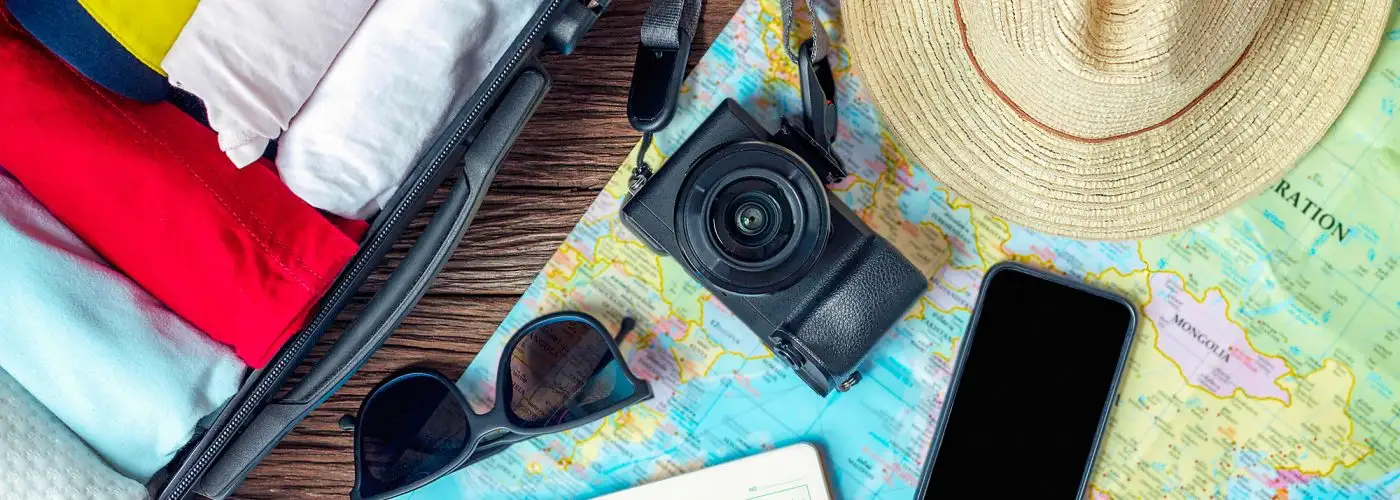
The Ultimate Packing List
Christine Sarkis
Ashley Rossi
There's a 95 percent chance Senior Editor Christine Sarkis is thinking about travel right now. Follow her on Instagram @postcartography and Twitter @ChristineSarkis .
Christine Sarkis is an SATW-award-winning journalist and executive editor at SmarterTravel. Her stories have also appeared on USA Today, Conde Nast Traveler, Huffington Post, and Business Insider. Her advice has been featured in dozens of print and online publications including The New York Times , Conde Nast Traveler , and People magazine. She has also shared travel tips on television and radio shows including Good Morning America, Marketplace, and Here & Now. Her work has been published in the anthologies Spain from a Backpack and The Best Women's Travel Writing 2008 . She is currently working on a travel memoir.
The Handy Item I Always Pack : The Trtl Pillow . It's easy to pack and comfortable, and makes it so I can actually sleep on flights.
Ultimate Bucket List Experience : Seeing the Aurora Borealis from the comfort of somewhere warm, like a glass igloo or hot spring.
Travel Motto : Curiosity is an amazing compass.
Aisle, Window, or Middle Seat : Aisle all the way.
Email Christine Sarkis at [email protected] .
Ashley Rossi is always ready for her next trip. Follow her on Twitter and Instagram for travel tips, destination ideas, and off the beaten path spots.
After interning at SmarterTravel, Ashley joined the team full time in 2015. She's lived on three continents, but still never knows where her next adventure will take her. She's always searching for upcoming destination hotspots, secluded retreats, and hidden gems to share with the world.
Ashley's stories have been featured online on USA Today, Business Insider, TripAdvisor, Huffington Post, Jetsetter, and Yahoo! Travel, as well as other publications.
The Handy Item I Always Pack : "A reusable filtered water bottle—it saves you money, keeps you hydrated, and eliminates waste—win-win."
Ultimate Bucket List Experience : "A week in a bamboo beach hut on India's Andaman Islands."
Travel Motto : "Travel light, often, and in good company."
Aisle, Window, or Middle Seat : "Window—best view in the house."
Travel Smarter! Sign up for our free newsletter.
Packing mishaps range from inconvenient (heading to the Caribbean without a swimsuit) to disastrous (discovering you left the country without your wallet), but most are preventable. We’ve created this ultimate packing list to help you pack well every time.
The Ultimate Packing Checklist
To see the ultimate packing list, scroll down the page or click here for an editable PDF version that you can save or print out. To customize the list, simply download or print it, then edit for your specific needs. You can also download the editable, mobile-friendly checklist here .
Clothes to Pack
- Dress Shirts
- Casual Shirts
- Sweatshirts
- Laundry Kit
- Leisure Shoes
- Hiking Boots
- Dress Shoes
- Collapsible Tote
Shop Our Clothing Packing List
Toiletries to Pack
- Dental Floss
- Conditioner
- Styling Tools
- Facial Cleanser
- Face Lotion
- Moisturizer
- Contact Lenses
- Contact Solution
- Shaving Supplies
- Makeup Remover
- Menstrual Products
- Birth Control/Medication
- Nail Clippers
- Hand Sanitizer
- First-Aid Ointment
- Insect Repellent
- Pain Relievers
Shop Our Toiletries Packing List
Miscellaneous Items
- Laptop/Tablet
- Film/Memory Card
- List of Medications
- Banking Contacts/Information
- Electronic Chargers
- Emergency Contacts
- Copy of Passport
- Plug Adapter
Shop Our Miscellaneous Items List
What to Pack in Your Carry-on
- Books or E-Books
- Travel Blanket
- Travel Pillow
- Disinfecting Wipes
- Change of Clothes
- Empty Water Bottle
- In-Flight Medications
- Passport/Visa/ID
- Credit/ATM cards
- Insurance Cards
- Maps/Directions
Shop Our Carry-On Essentials List
Packing Tips for Clothes and Other Items
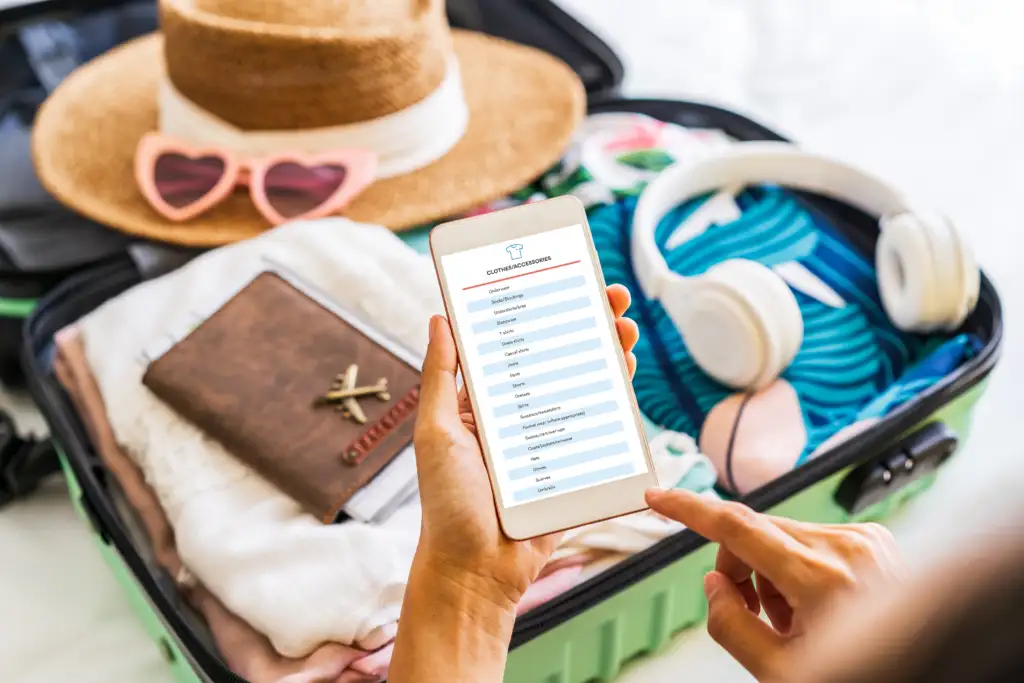
When packing for a vacation the most important things to keep in mind are the length of your trip, the weather, and any non-standard clothing or gear you might need.
Your first step when packing is to decide if you’ll be checking a bag or only taking a carry-on and then curate the amount of clothing you’ll need based on that decision. Typically, you should avoid checking a bag in situations where you have a layover since the likelihood of your bag going missing goes up with every connection . You might also want to avoid checking a bag if you absolutely need items in your bag on arrival—for example, if you’re going on a cruise.
If you’re packing more minimally, focus on packing layering clothes in more neutral colors. That’s not because we don’t like fun colors and patterns; it just means that neutral-colored clothing is more versatile, so you can wear these items more than once when you’re tight on space.
How to Pack in Just a Personal Item Sized Bag
Also invest in clothing that does double duty, like multi-use wraps , crushable hats , self-cooling and heating fabrics like merino wool layers , bug-repellent clothing , wrinkle-resistant shirts, quick-drying activewear and undergarments, casual sneakers, UPF-proof clothing , and compressible jackets … just to name a few. Look toward popular athleisure brands like Lululemon , prAna , and Athleta for comfortable yet stylish travel clothing.
When curating your packing list, you should keep in mind the length of your trip and decide on quantities from there. For a shorter trip (three to five days), you can probably manage with the following: one pair of underwear and socks per day, one pair of pajamas, one to two dressier outfits, one to two activewear or athleisure outfits, one to two casual outfits, and one to two pairs of shoes. For a longer trip (over a week), you can manage with one pair of underwear and socks per day, two pairs of pajamas, three dressier outfits, three to four casual outfits, two pairs of shoes, and two activewear or athleisure outfits.
And if you’re able to do laundry on your vacation, you can probably manage with even fewer items. Just don’t forget to pack a travel laundry kit .
Scrubba Untouched Review
Also make sure to bring along accessories like a money belt, scarf or sarong (can be used for things like an airplane blanket , coverup at the beach, or to throw over your dress on a cool evening), and a collapsible tote or day bag for any extra items you might acquire on your travels. If traveling to a city or destination that is prone to pickpocketing, make sure to pack some pickpocket-proof clothing and gear .
Depending on the type of trip you’re going on, you may need to invest in some special travel gear. We’ve tested out everything from waterproof baby carriers to interchangeable heels , so you can trust our recommendations. If you’re headed out on an organized group tour , you’ll most likely get a packing list from the tour provider, which should make your trip planning easier. If not, do your research online (one tip is to look at locations on Instagram and see what people are wearing) and consult this story for other handy lists of tips.
For more active trips, make sure you have a sturdy pair of hiking boots, quick-drying clothing, a day pack, snacks, and any necessary equipment. Check out our specific packing lists for hiking trips and camping trips .
Another type of trip that you may need to pack slightly specific items for is a cruise . Make sure you pack non-standard items like seasickness remedies, formal wear, dress shoes, and your bathing suit. Beach vacations also require different items like water shoes, towels, sunscreen, and maybe even snorkel gear. Luckily for you, we also have a specific cruise packing list and a beach vacation packing list .
Lastly, you need to consider the weather. For warm-weather destinations like jungles and Caribbean islands, you can obviously skip the coats and gloves, but if you’re headed out on a ski vacation then you’ll need a whole slew of things like goggles, a neck gaiter, snow boots, and more. But don’t worry, we’ve got you covered with a specific Caribbean vacation packing list , a Mexico vacation packing list , and even a ski trip packing list .
10 Secrets I Learned Working in a Hotel
To help keep things organized, we love using packing cubes and/or compression sacks. They’re especially useful for when you’re traveling to multiple destinations in one trip.
Wondering how to pack all of your items? Enter the great debate of the rolling vs. folding method! While this is definitely a personal preference, we put two editors to the test to find out which method is in fact, more space-saving. Watch the video below to see the answer.
How to Pack Toiletries and Medications
Whether it’s important medication or your favorite lipstick, forgetting any type of toiletry can range from being mildly inconvenient to becoming a serious problem. For toiletries, make sure to pack your essentials, like medication, contacts, and any other items that you might not be able to purchase or replace during your travels. (Put them in your carry-on bag, not your checked suitcase.) However, if you forget items like a toothbrush or razor, you can typically call the front desk at the hotel for a spare.
We also recommend traveling with some type of a travel first-aid kit , which includes items like tweezers, first-aid ointment, bandages, travel-sized hand sanitizer, sunscreen, and insect repellent. Make sure to check TSA guidelines if you’re traveling with medication , as well as the policies and regulations at your destination.
Packing Tips for Everything Else …
Traveling without tech items like your phone, laptop, tablet, or camera can be a major bummer. For those traveling abroad, you’ll also want to remember to pack electronic adapters and converters . Other tech-related items for photographers to pack are a sturdy camera bag , backup batteries, and memory cards, as well as lens cleaner. And don’t forget smartphone essentials like a backup charger, waterproof case if you’re headed out on the water, and a phone stand or tripod for photos.
A travel packing tip we’ve learned the hard way? Travel with a copy of your passport, credit card, and bank contacts, as well as a list of medications and your emergency contacts.
If you are traveling abroad, we have an entire checklist for you, but the most important thing to note here is your passport and visas . Make sure that your passport is up to date, has as least six months of validity, and has enough blank pages for any stamps. Another tip for international travel? Give yourself plenty of time to apply for any visas that you might need and to arrange for a visit to a travel clinic if any special medications or vaccines are needed. You should also familiarize yourself with any remaining COVID-19 travel restrictions at your destination.
There are also some items that you may not think to pack, but should, like an electronic tracker , duct tape , toilet paper, a decoy wallet, or a whistle.
The 10 Best Expandable Suitcases
What to Always Pack in Your Carry-on Bag
In case you’re separated from your checked bag or other items, you should always make sure that you have your ID, wallet, house keys, medications, valuables, camera, phone, laptop, tablet, pen, cash and cards, glasses, and copy of your itinerary with you on the plane.
Other items that you might want to have handy with you include entertainment for your flight, comfort-promoting items like a blanket or pillow, as well as an empty water bottle to fill up post-security (here is a list of our favorites ), a change of clothes (just in case your luggage is lost or delayed), snacks, and gum.
If you’re looking to pack carry-on only, you guessed it: We also have a separate packing list and tips for that, as well as the best bags to use for carry-on only .
What to Pack to Stay Healthy While Traveling
The pandemic has significantly changed the way we travel and, by extension, the items we prioritize in our luggage. While many destinations have loosened or entirely lifted COVID-19 restrictions, some venues and events may still require a mask or proof of vaccination/negative COVID test to enter. Plan ahead to see if any activities on your itinerary have restrictions in place.
Sanitizing wipes and hand sanitizer , while always a good idea to have on hand at the airport , have become absolute carry-on musts. Wiping down areas like your tray table, airplane seat armrest, and hotel television remote can spare you from a variety of common travel bugs.
Editor’s note: This story was originally published in 2013. It has been updated to reflect the most current information. Ashley Rossi contributed to this story.
All of the products featured in this story were hand-selected by our travel editors. Some of the links featured in this story are affiliate links, and SmarterTravel may collect a commission (at no cost to you) if you shop through them. As an Amazon Associate, we earn from qualifying purchases.
You Might Also Like:
We hand-pick everything we recommend and select items through testing and reviews. Some products are sent to us free of charge with no incentive to offer a favorable review. We offer our unbiased opinions and do not accept compensation to review products. All items are in stock and prices are accurate at the time of publication. If you buy something through our links, we may earn a commission.
Top Fares From

Don't see a fare you like? View all flight deals from your city.
Today's top travel deals.
Brought to you by ShermansTravel
Greece: 8-Nt, Small-Group Tour, Incl. Aegina,...

Amsterdam to Copenhagen: Luxe, 18-Night Northern...
Regent Seven Seas Cruises

Ohio: Daily Car Rentals from Cincinnati

Trending on SmarterTravel
Travel blog
40 Travel Must Haves According To Flight Centre Experts

Published 5 August 2022

Luke Wilson
Travel wallet, eye mask, noise-cancelling headphones – we all have certain items that we simply cannot travel without. We have put together a list of our 40 best must-have travel items according to our Travel Experts.
1. Noise Cancelling Headphones
Noise cancelling headphones are a fan favourite here at Flight Centre. We just love them, and many of us can't travel without them. They are great for watching movies on long-haul flights, they are great for listening to music while you travel, and they are especially great at keeping unwanted noise out. Noise cancelling headphones are one of the most useful travel accessories for long haul or red eye flights.
“Noise cancelling headphones are great for drowning out the plane and the people around you and also allows you to enjoy your own entertainment.” - Robert Caldwell

2. Packing Cubes
If you are a messy packer, you are probably familiar with sitting on top of your suitcase as you struggle to zip it up. In that case, packing cubes will probably be your best friend. They are great for keeping your luggage neat and organised meaning you have more space for the things that matter, like souvenirs.
“Packing cubes for my suitcase helps to keep me super organised and also helps with my life-long issue of overpacking.” - Donna Pearce
3. Travel Pillow
Jetting off on a long-haul flight? Taking off early in the morning or late at night? A travel pillow (sometimes called a neck pillow) could be the difference between arriving at your destination ready to go or arriving ready to go to bed. Plus having something to support your neck can help to avoid neck pain.
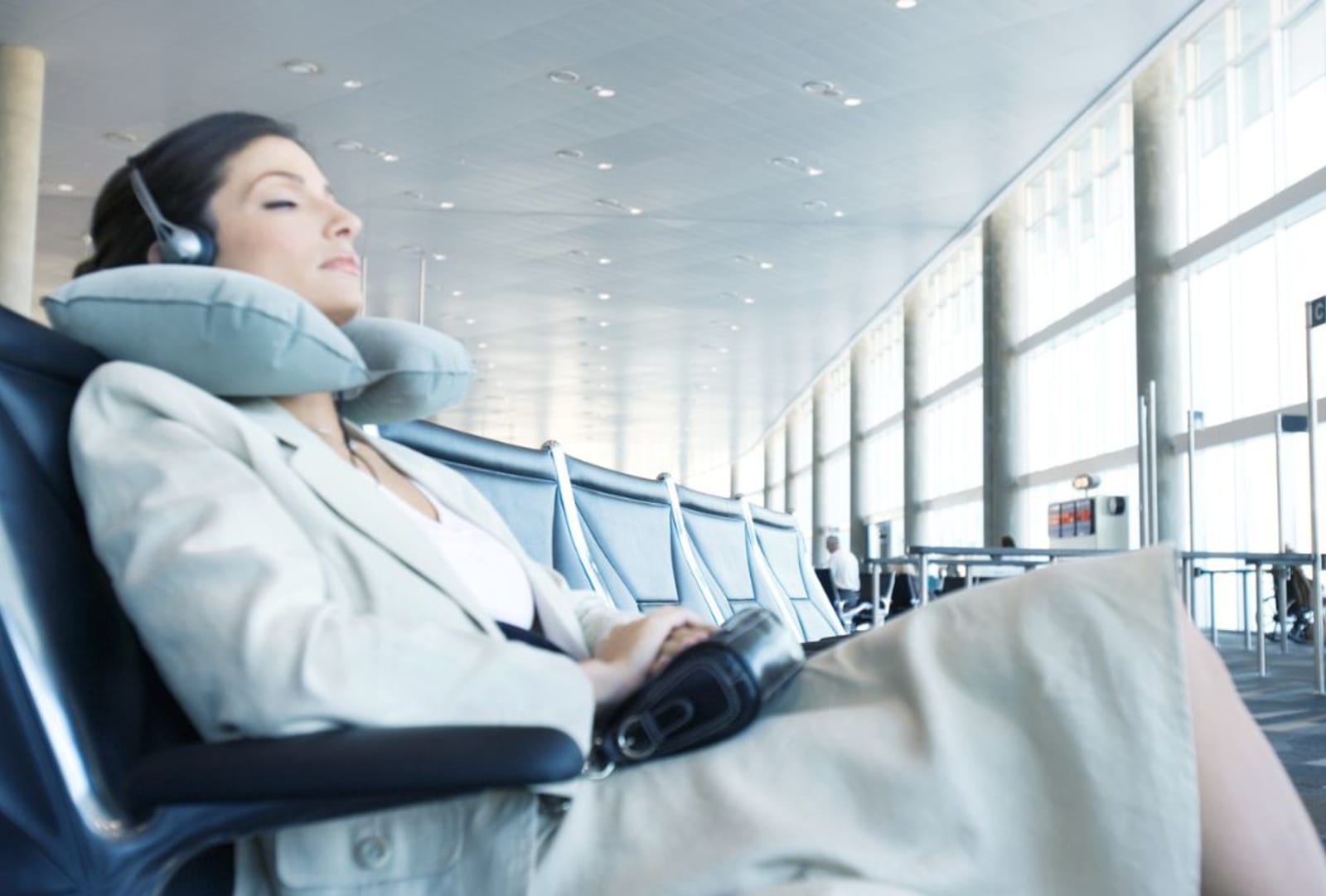
4. Eye Mask
are going to need your energy. To make sure you are able to get your sleep, we recommend an eye mask or a sleep mask. If you are bothered by noise, ear plugs can be a great way to make sure you get some uninterrupted shut-eye.
“An eye mask is great so that I can make sure I can get some slumber and be energised for when I arrive.” - Matilda Williams
Related Article
40 Best Travel Destinations In The World
When travelling to another country, you'll often find that that country has different electrical outlets, meaning your chargers and devices may not work. A travel adapter is one of the most important travel gadgets you can pack in your suitcase, because it allows you to plug into any outlet making sure you can stay fully charged anywhere you go. This can be especially important if you are travelling with electronic documents.
“Make sure to pack your adapter in your carry-on baggage. It will be a real life-saver if your luggage gets lost in transit.” - Luke Wilson
6. Compression Socks
These are great for a long flight. Compression socks help with blood flow and aid circulation which prevents swelling and stops your feet falling asleep.
7. Travel Wallet
Imagine being at the airport, and you are fumbling in your bag looking for your boarding pass. Take the stress away with a travel wallet or document organiser.
When you are travelling, your travel documents, especially your passport if you are travelling internationally, are some of the most important items for you to pack. A travel wallet helps to keep them organised and safe. It also makes for a more seamless airport experience by making them easier to find.
8. Toiletry Bag
Have you ever arrived at your destination, only to open your suitcase and discover a major shampoo explosion? If only Ross from Friends had this list, he could have avoided this catastrophe.
A toiletry bag can help to save space as well as keep your clothes safe from leaks and keep your toiletries organised in an easy-to-find bag.

9. Luggage Tags
“Is that my bag? No, that shade of red is slightly too dark”
You would be surprised how many suitcases look like yours on a baggage carousel. Make your luggage easy to spot with a luggage tag. They can also add some much-needed flare and personality to a bland bag.
10. Tripod and Camera
When you are travelling, Instagram worthy pictures that will make your family and friends jealous is a must!
“I tend to do a lot of photography when I’m travelling. A camera and tripod is great as a solo traveller to make sure you get the picture you want, without having to rely on other people.” - Liam Lavery
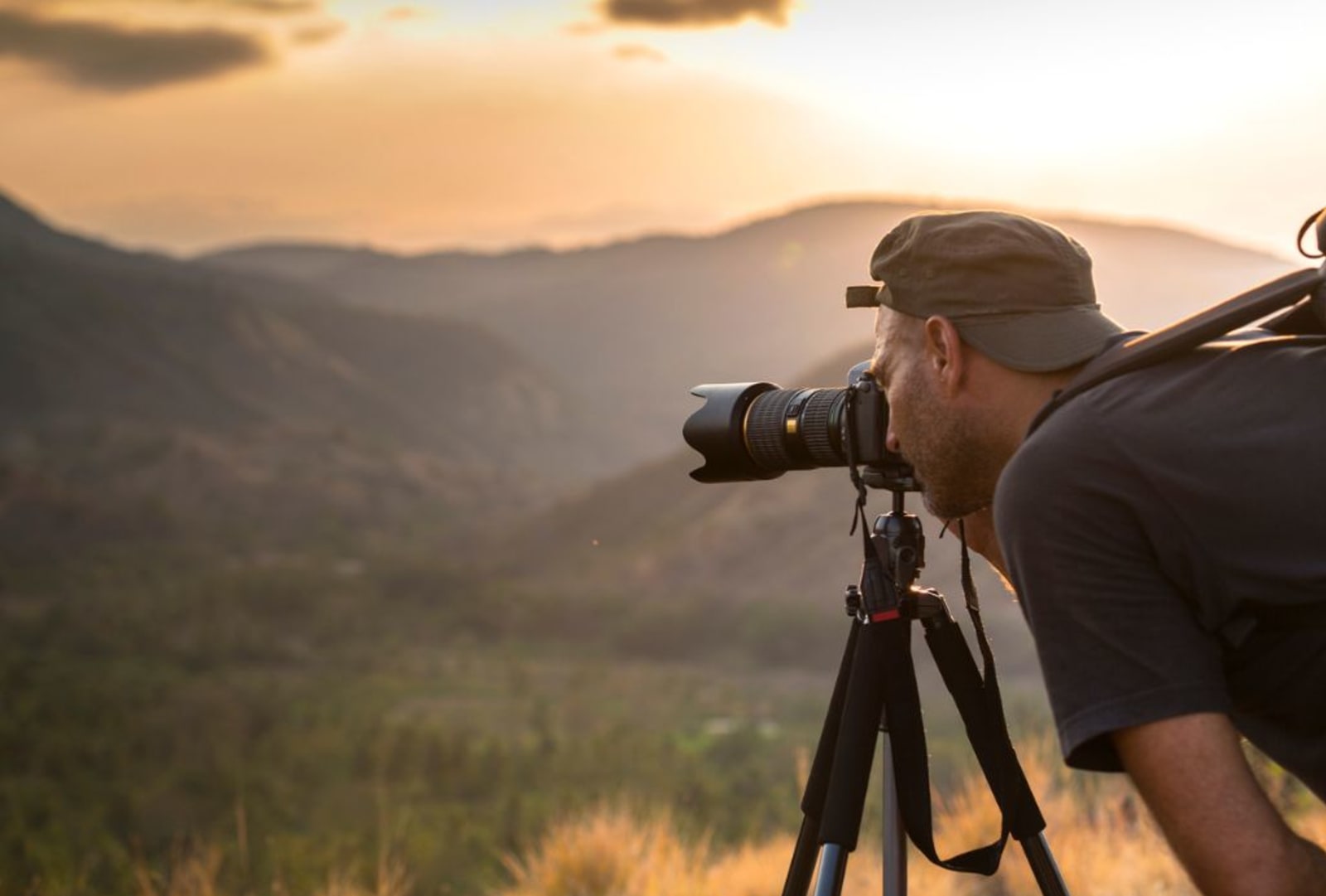
11. Laundry Bag
Have I worn this pair of underwear yet on this trip or are they clean? Solution. Keep them separate! A laundry bag is a great way to keep your clean and dirty clothes apart. Plus, it keeps and dirt and smell off your clean clothes.
12. Carry-On Bag
Phone, wallet, keys, passport, charger, headphones, boarding pass... The amount of items you need for a flight can be extensive. Having a carry-on bag is absolutely essential for a much more seamless airport experience. Your carry-on bag could also double as day bag in your destination.
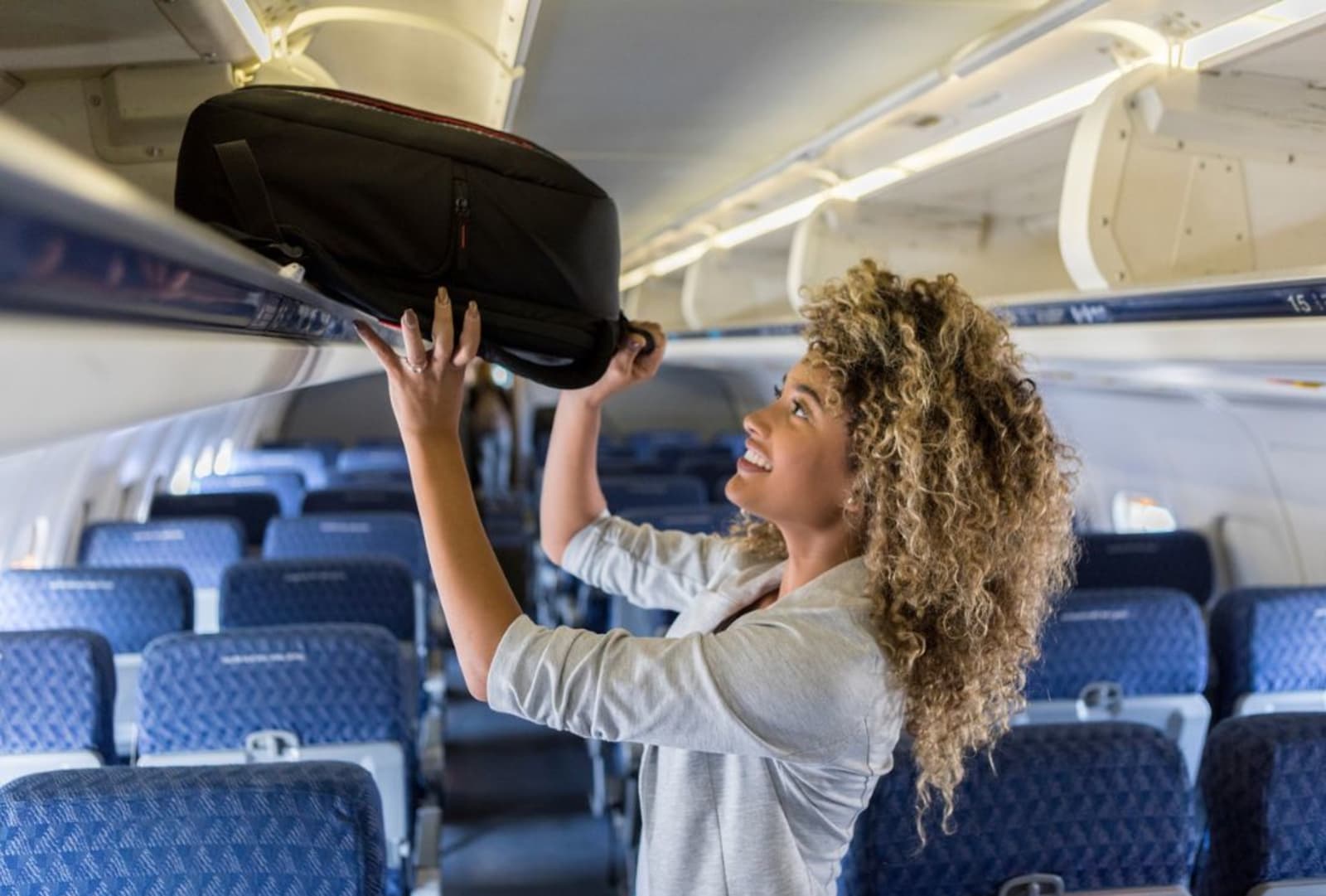
13. Water Purifier Bottle
In some countries, the tap water is not safe to drink, so having a water bottle that can purify your water on the go is super handy. Plus, it reduces your reliance on plastic bottles, which is great for the environment and can be a great way to save money.
14. WaterWipes
“They are like wet wipes, but biodegradable (made mostly out of water). They are great for so many situations and fit easily into your day bag. Travel with your baby, tick! Spill something on the plane - tick! Clean the table before you eat - tick! Wipe your hands and face after eating pizza in Italy (unless you lick your fingers clean!).” - Barbara Davidson
15. Money Belt Or Bra Pocket
In some countries, having a wallet in your pocket is pretty much an invitation for pick pockets. A money belt or bra pocket can be a great way to stash your cash safely.
16. Baby Carrier
When the kids are little, a baby carrier can be a blessing in an airport. It makes getting on and off planes much easier and can also be great for getting around your destination.
“As a new parent, a baby carrier is essential for the airport, layovers and in the destination itself.” - Craig Gardiner
17. Battery Pack
In 2023, we rely on our phones for a lot! Maps, translation, snapping pictures, tickets, music... the list is pretty much endless which makes a portable battery pack one of our essential travel items.
“I take a battery pack everywhere I go because I rely on my phone so much for Google Maps and tickets etc. If it dies, I'm toast!” - Sarah Goosem
“A battery pack is great for long-haul flights, bus and train journeys to keep your music going and make sure you can always contact people.” - Vicki Fletcher
18. Entertainment
Entertainment while you are travelling is a must. Pre-downloaded Spotify playlists and Netflix series can be great for getting through long flights in a sometimes uncomfortable airplane seat. Books can also be a great option, one of our team once took the entire Tomorrow When The War Began series on his trip to France – and he loved it!
“A Netflix binge is a great way to make it through a long-haul flight!” - Joshua Pollok
“Pre-downloaded Spotify playlists and Netflix series are a must on long-haul flights” - Nick McGinley
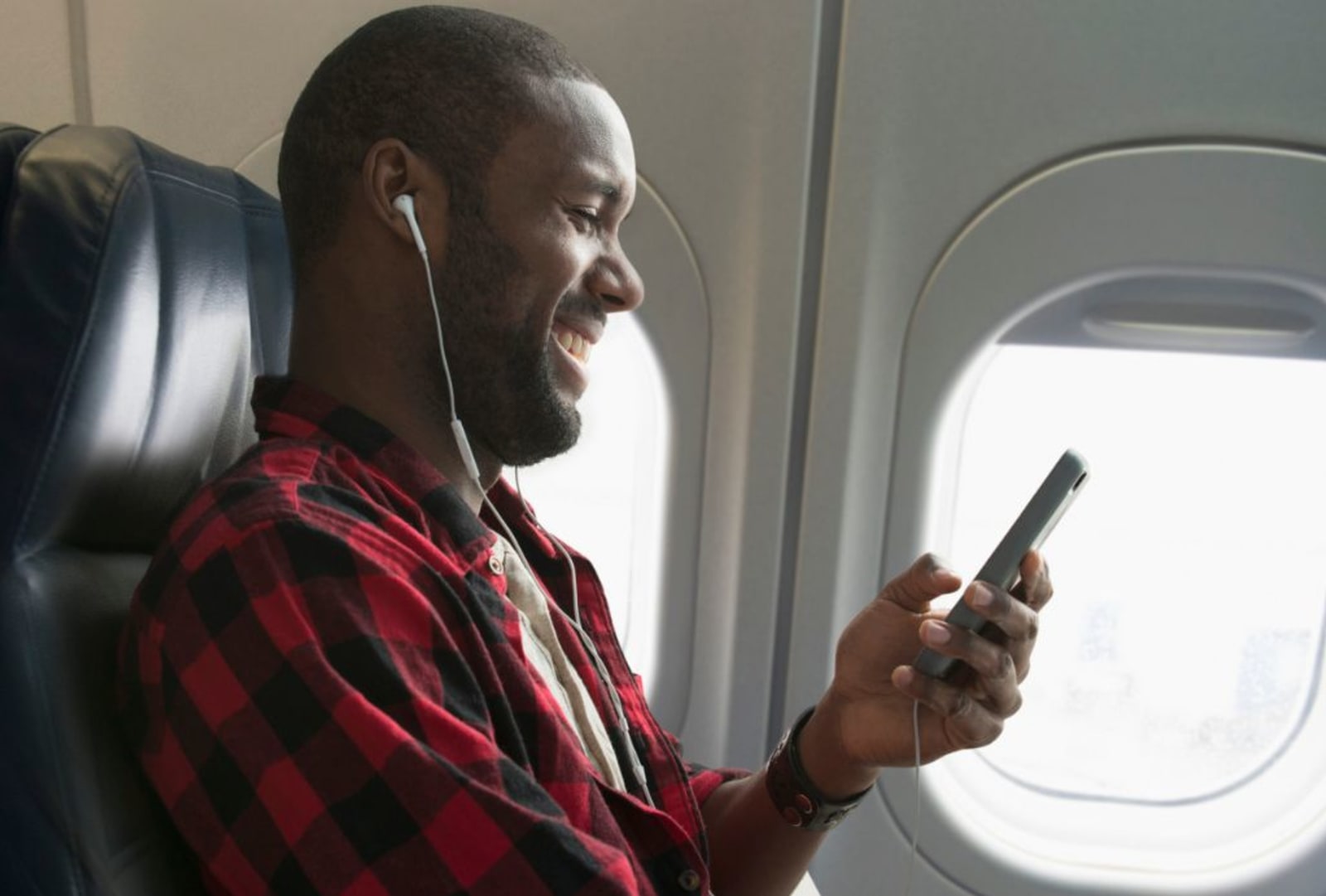
19. Sunscreen
Imagine stunning white-sand beaches with beautiful blue water, and there you are looking like a plum. Avoid this situation completely, and make sure you pack some sunscreen.
“In some places, such as tropical islands, sunscreen can be very expensive. So save some money and your skin, and take some with you.” - Vicki Fletcher
20. Gaffa Tape
60 Tips For Flying With Kids
21. An Empty Space
Did you really go on holiday if you don’t bring home a few souvenirs?
“No matter where I go, or for how long, I always manage to return with more than I left with” - Ben Weston
22. Moisturiser
Between the dry in-flight air and changes in climate, air travel can wreak havoc on your skin. That's why we recommend bringing moisturiser on your next trip to make sure your skin stays silky smooth!
“Face masks are good for long-haul flights, but a great moisturiser can really save your skin on arrival. It also helps with jetlag!” - Vicki Fletcher
23. Toothbrush
It might come as a surprise that not all cultures use toothbrushes, which makes remembering to pack yours all that more important! You may not always be able to pick one up in your destination.
“I can't stand having unclean teeth or the "furry feeling" and the thought of having bad breath scares me” - Nathan Varney
24. In-Destination Sim Card
If you don't have an affordable global data plan, and you don't want to rely on WIFI on an international trip, an in-destination SIM card can be an affordable option.
“You can't always rely on WIFI when you need to access WhatsApp, socials, Google Translate or most importantly, Google Maps! You can usually pick up pretty cheap SIM cards in-destination with a lot of data. If you are going to the UK and Europe make sure you get your sim card in London, it is cheaper, easier and can be used through all European countries.” - Amanda Zeleznik

25. Selfie Stick
When you are travelling, you will want to capture the memories forever. Whether you are travelling solo, or you are travelling with your besties and want to get a group pic – a selfie stick is a great option! There may not always be someone around to take your picture, plus, in some destinations, handing over your expensive iPhone to a stranger to take a picture might not be the smartest choice.
“My selfie stick came in super handy on the Great Wall of China with my friend! We got so much of the amazing background in the photo with us without having to ask strangers to take photos of us every other minute.” - Skye McRae-Mitchell
26. Sunglasses
“They protect you from the sun. They hide those hungover post-party eyes. And who doesn’t look and feel better in a pair of cool shades!” - Kylie Johnson
27. Hand Sanitiser
Post-pandemic, hand sanitiser has become essential for protecting your health while travelling. The last thing you want is to spend your trip in a hotel room because you have a pesky cough. Be safe, wash your hands regularly.
11 Tips To Stay Healthy While You Travel
28. Shoe Bags
Dirty shoes and clean clothes don’t tend to mix well. Shoe bags are a great way to keep them separate. This is especially important if you plan to do a lot of hiking or expect your shoes to get muddy.
Even the most tropical of destinations can get chilly. Even if you don’t end up wearing it, it is always better to be safe than sorry.
“You might get cold, you should bring a jacket” - Mum
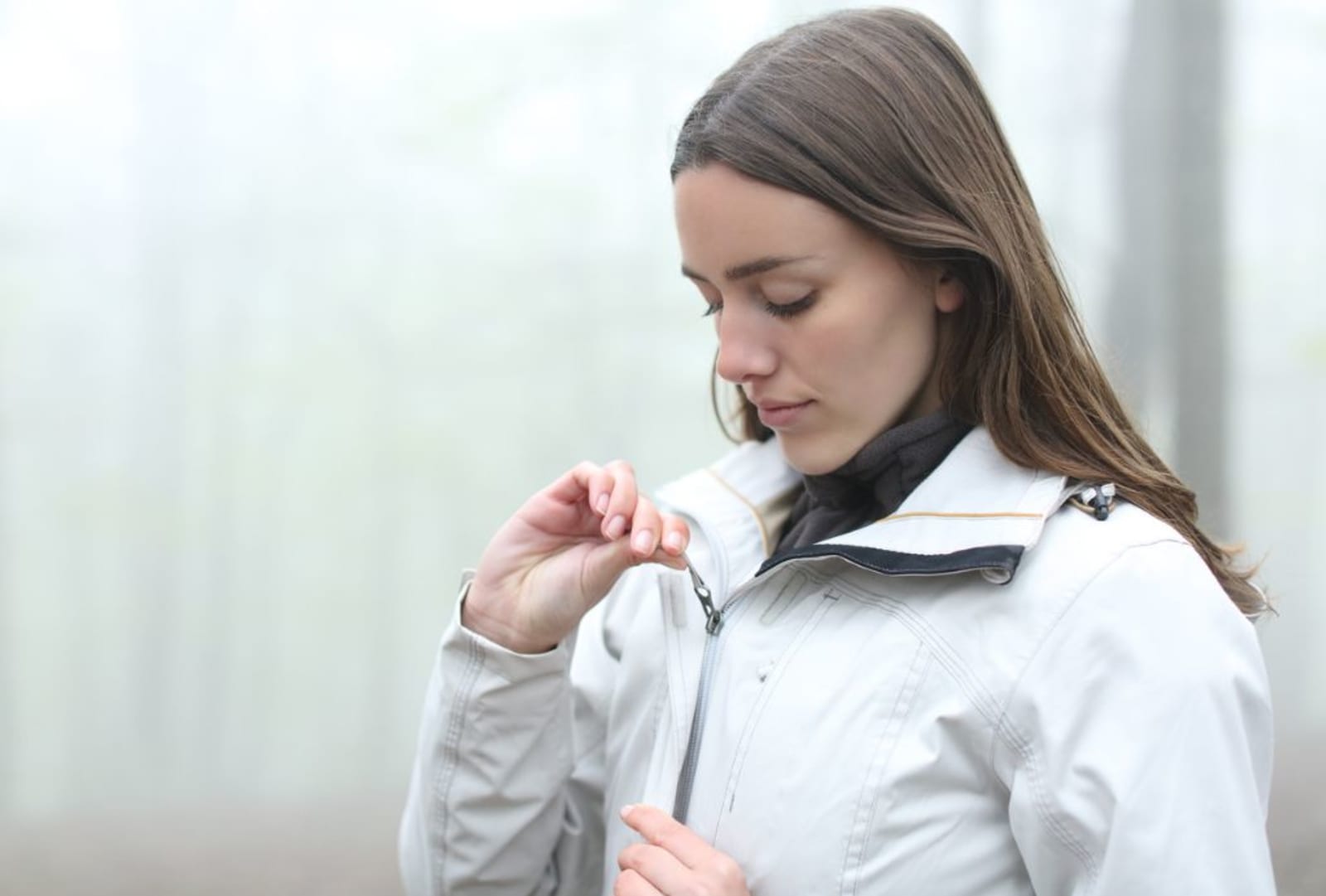
30. Spare Clothes That Are Easily Accessible
Whether you are flying, driving, catching the train or any other form of transport, it’s a good idea to have a spare pair of clothes that is easily accessible in case you spill food or get what you are wearing dirty.
This is even more important for parents of young children, where the chances of ending up with something on your clothes increases exponentially.
31. A Few Days’ Worth Of Toiletries
A few days’ worth of toiletries in your carry-on baggage can be a life-saver. Losing your luggage is a bad experience, but having no toiletries will make it even worse. Having a few toiletries on hand will help you out until you are reunited with your belongings. Plus it could save you the stress of having to go buy some on your first day in an unfamiliar city.

32. Electronics Organiser
Phone charger, laptop charger, headphones, SD cards. In 2023, there are a lot of electronic accessories we need to pack. An electronics organiser can help keep them neat, tangle-free and all in the same place. You can also get waterproof cases that will keep them all safe.
33. Travel Insurance
While travelling is a relaxing and fulfilling experience, you never know if you are going to hit a bump in the road. Having travel insurance can protect you from unexpected expenses and help to smooth out any dramas that may arise.
At Flight Centre, we recommend Cover-More for both domestic and international travel insurance.
34. Travel Credit Card
Carrying wads of foreign cash can be a risky endeavor in some destinations. Keep your money safe and organised with a travel credit card. We recommend using a Travel Money Card which allows you to load up to 10 currencies and can be used wherever Mastercard is accepted.
35. Deodorant
While this might seem like an obvious one, forgetting this could turn that 18+ hour flight into an absolute stinker... and not just for you! Plus, if you are anything like me, having some on hand will give you some much needed peace of mind.
36. Mosquito/Bug Repellant
Packing mosquito or bug repellant is one of the best decisions you will make, especially if you are planning to travel to somewhere tropical. The uncomfortable itching feeling definitely doesn’t help you relax.
In some countries, mosquitos can be carriers of disease, which means bug repellant can be a real life-saver!
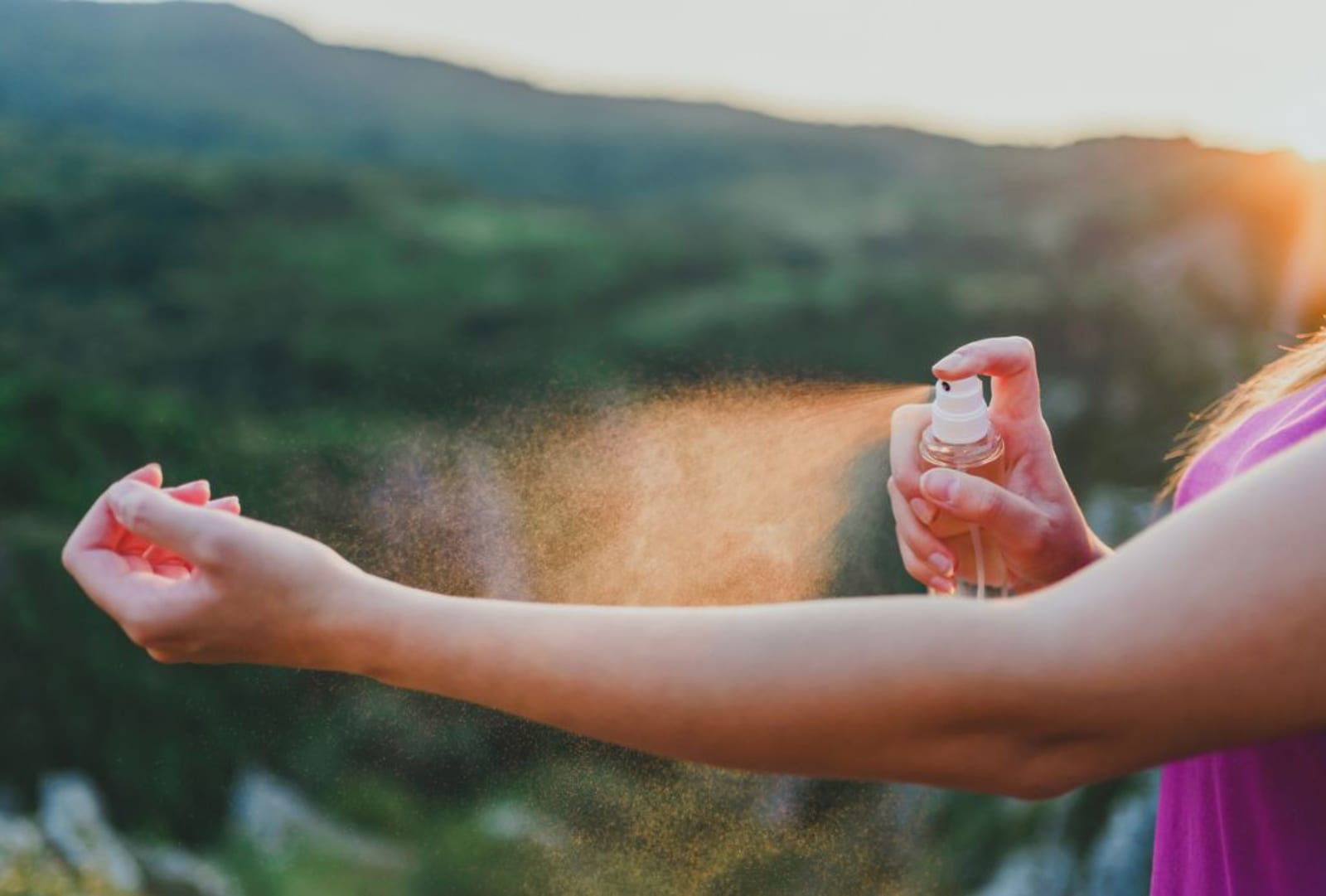
37. Padlocks
This item may not seem important until you need it. Having a padlock is a great way to add an extra layer of security and to keep your luggage safe from prying hands.
We definitely recommend having one on you in case you need to part your luggage between checking-out of your hotel and your flight back home.
38. Lip Balm
Not only can changes in climate and the dry air wreak havoc on your skin, but it can also leave your lips dry and cracked, which makes for an uncomfortable experience. That is why we recommend lip balm or something to keep them hydrated.
“Cracked lips ruin anything, keep them hydrated!” - Whitney Wong
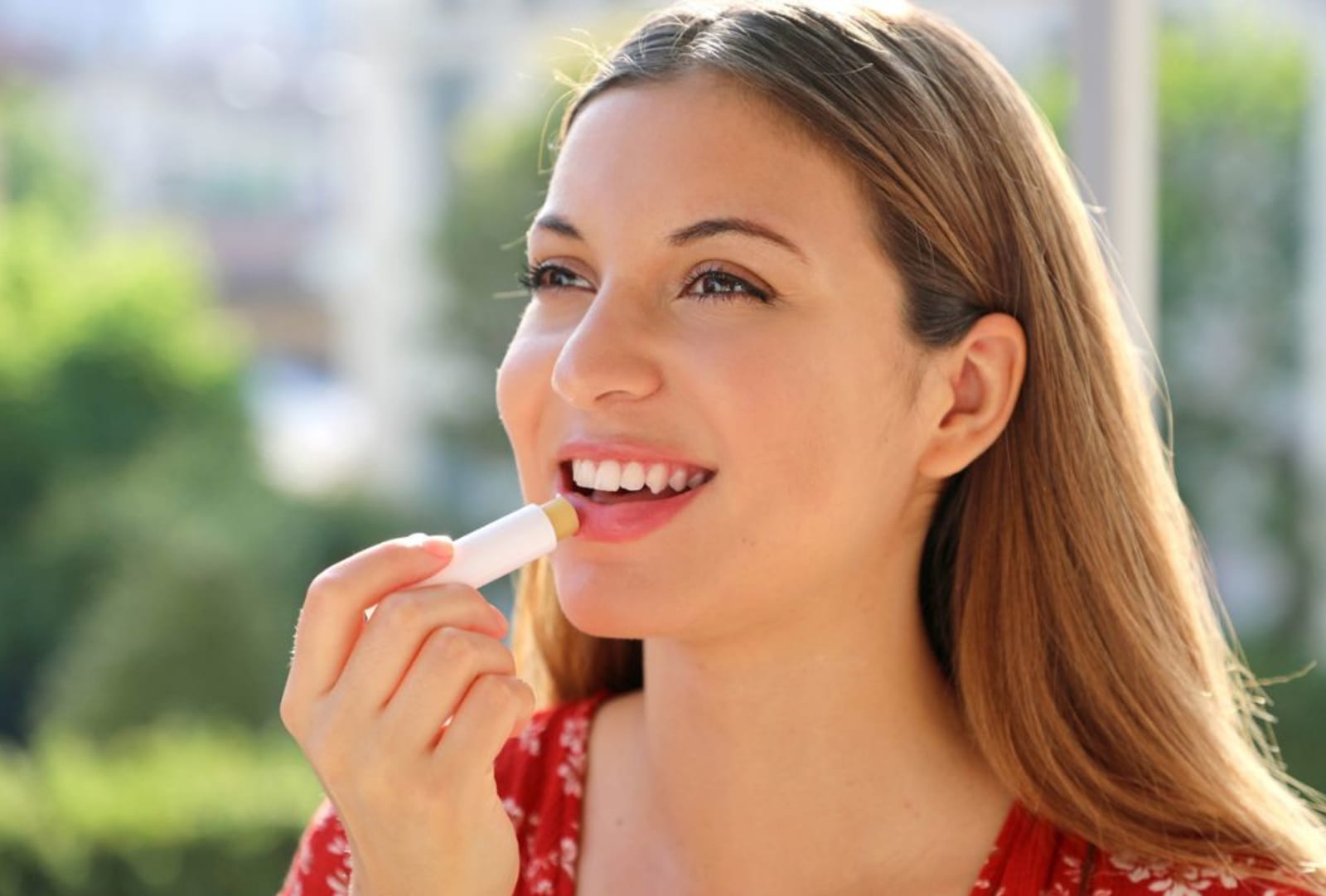
39. Sleeping Devices
A long-haul flight and a child that can’t get to sleep is a recipe for disaster! Luckily, many airlines allow sleeping devices such as a flight hammock or inflatable pillow to help the little ones, and the big ones, get some rest.
40. An Open Mind And Sense Of Adventure
“When you travel to the places I travel to, you need it! I've been stuck at borders for hours and it's out of your control, so you make the most of it and find the positive in it, and time flies. Nothing is an issue. You open yourself up to more adventures and great conversations with new friends, with fantastic travel stories when you return!” - Katherine Benvenuti
Start planning your next holiday today! Best Holiday Travel Deals
Watch our Relax YouTube series
Site quick links, help & support.

Flight Centre acknowledges the Traditional Custodians of Country throughout Australia.
© Flight Centre Travel Group Limited. ATAS Accreditation No. A10412.
*Travel restrictions & conditions apply. Review any specific conditions stated and our general terms at Terms and Conditions . Prices & taxes are correct as at the date of publication & are subject to availability and change without notice. Prices quoted are on sale until the dates specified unless otherwise stated or sold out prior. Prices are per person.
- Search Please fill out this field.
- Manage Your Subscription
- Give a Gift Subscription
- Newsletters
- Sweepstakes
If you click on links we provide, we may receive compensation.
- Travel Products
- Travel Accessories
I Can't Relax on Planes, but These 10 Genius Travel Items Kept My Mind Off the Clock on a 23-hour Flight
And they all fit in your carry-on.
:max_bytes(150000):strip_icc():format(webp)/Cassandra_Brooklyn-f05dd805dc104fb9b15f42c24643d6d8.jpg)
Travel + Leisure / Francesca Fasciglione
There’s no way to sugarcoat it; long-haul flights are awful. Unless you’re a high-roller with a business-class cabin and fold-down bed, you’ll likely spend hours upon hours shifting around in your seat trying to get comfortable and catch some shut-eye. Take it from me, a frequent traveler and a very sensitive sleeper who can't ever seem to relax on flights; it’s almost impossible for me to sleep, so I do everything possible to get comfy and keep my mind off of the clock (and maybe even snooze a bit).
While some travelers swear by neck pillows or a pillow-blanket combo , I use neither. Instead, my focus is on cozy clothing (like super-soft leggings and a warm hoodie ), noise-canceling earbuds , and a blackout eye mask . I recently spent three weeks hiking, biking, and kayaking in Sri Lanka , which required a 23-hour flight there and back (including a lengthy layover in Qatar). While I definitely would have preferred to be in business class, I flew coach, and these 10 products helped me stay comfortable during the flight.
Lululemon Align High-Rise Pant With Pockets
I have way too many pairs of Lululemon leggings, and while I love them all, these high-rise pants with pockets are perfect for flying because they’re soft and stretchy. The warm, buttery fabric feels great on my skin and offers enough give that the pants move with me as I shift around to find the elusive, perfect position to sleep upright. You can get these pants with or without pockets, but I love the pockets when I travel because I can store my phone, passport, and boarding pass in them for security and easy access.
Matador Blackout Sleep Mask and Ear Plugs
I can rarely sleep more than 20 minutes at a time on a flight, which is brutal for 23-hour itineraries. However, I’ve learned that I can’t sleep without an eye mask because, even when the cabin lights are dimmed, there is still light coming at me from the TV screens, phones, and windows of other passengers. I also get distracted by people stretching their legs in the aisle and walking to and from the bathrooms. This sleep mask from Matador is awesome because it comes with a handy pocket for your ear plugs and it folds up into itself so you can stash it in a backpack pocket without it getting dirty.
OluKai Ohana Women’s Beach Sandals
I don’t always fly in sandals, but I do enjoy them on long-haul flights when I want to easily slip my footwear on and off on the plane. I love these OluKai sandals because their anatomical footbed makes them extremely comfortable and far more supportive than your average summer flip-flops. I wore them to pools and beaches in Sri Lanka and then I wore them for the 23-hour flight home. I also get up a lot to stretch my legs on long flights and it’s too much work to tie and untie shoes every time, so sandals are a quick solution to protect my feet from walkway carpet junk and bathroom floor stickiness.
Vim & Vigr Compression Socks
I’ve been wearing Vim & Vigr compression socks for years because they’re comfortable, versatile, and available in a variety of lengths, fabrics, weights, colors, and patterns. They’re great for working out, post-workout recovery, standing all day, and sitting for many hours (especially when flying) because they help the blood circulate. I started off wearing the brand's traditional compression socks (in adorable patterns, thank you very much) but recently switched to compression leg sleeves and open-toe compression socks on flights when I wear sandals. They cover your lower legs, heels, and mid-foot area to boost circulation, but they leave the toes open. Yes, I assure you that it’s okay to wear socks with sandals (on a long flight, at least).
Hydro Flask Wide-mouth Vacuum Water Bottle
This has been my main water bottle for the last two years because it’s super sturdy, rugged, lightweight, and insulated. I used it throughout my three-week trip in Sri Lanka, filling it with ice water that stayed cold all day and kept me cool while hiking, biking, and swimming in 90-degree Fahrenheit weather. For flying, however, I like to travel with hot tea because I find it soothing and satisfying in cold airplane cabins. For both legs of my flights, I filled the insulated bottle with hot water at the airport and it stayed warm for hours.
I travel with my own bags of tea, but you could certainly buy tea at the airport or get a bag from the flight attendant. I also usually ask flight attendants to pour hot water directly into my bottle when I need to top it up. This way, my tea stays warm throughout the flight, and the leakproof bottle prevents it from spilling all over my lap and electronics, which is always a possibility when drinking out of the flimsy airline-provided cups.
Arc’Teryx Kyanite Hoodie
Airplane cabins are notoriously cold and the thin, flimsy blankets they pass out simply aren’t enough. That’s why I always travel with a hoodie on long flights, and this Kyanite Hoodie from Arc’Teryx is my favorite. Yes, it’s a really expensive hoodie, but it is astoundingly soft and well-made, so it will basically last forever. I’ve had it nearly two years and it is in just as good of shape as it was on day one — something that can’t be said for fast fashion brands.
What's more, this sweatshirt has smooth-sliding zippers, cozy hand pockets, and a snug-fitting hood, and is made with bluesign-certified sustainable materials that are super soft and cozy. Not only is this my go-to hoodie for flying, but it’s also my top choice for cold-weather hiking and lounging around at home in the winter months.
Sony Wireless Noise-canceling Headphones
Anybody who has ever relied on airline-provided headphones knows how horrible they are. Sure, they’re free, but they’re also uncomfortable and ineffective. Typically, they’re made with cheap, flimsy plastic and the speaker doesn’t actually get close enough to your eardrum to block out surrounding noises. As such, you wind up having to crank up the volume to a dangerously high level and you can still hear whatever nonsense is going on in the row behind you.
That’s why I always travel with my headphones, and I love these Sony noise-canceling earbuds because they are comfy, easy to use, and they fit right inside my hip pouch or leggings pocket. While they don’t cancel out as much noise as the over-the-head version , (which I also have and love), they do block out some ambient noise and you can quickly adjust the volume by tapping on the headphones.
Avantree Relay Bluetooth Transmitter
Though you can easily pair your wireless headphones to your laptop or phone via Bluetooth, it can be harder to pair them with an airplane’s TV, which is where a transmitter adapter comes in. I’m a fan of the Avantree Relay Bluetooth Transmitter , which comes with a dual prong. Why is this important? Most transmitters have single-prong designs, but many international flights have dual-prong, not single-prong , ports. While you could get away with a single-prong adapter (and I certainly have in the past), you get the best sound quality when using an adapter that actually fits the port the way it was intended to.
Matador ReFraction Packable Sling
Though I love stashing my boarding pass and random items in the pockets of my leggings, I always travel with a hip pouch or fanny pack. Actually, I’ve been wearing a belt bag (what the cool kids — and grandparents — are calling fanny packs these days) every single day for over a decade as it's a practical accessory that helps you safely store your essentials and access them easily. I love the Matador hip pouch because it’s super thin, water-resistant, made with recycled materials, and equipped with an external pocket for small items.
While this is not the fanny pack that will fit most of the contents of your purse, it will have just enough room for the essentials. For flights, I usually store my phone, passport, keys, hand sanitizer, and some tissues in mine; it also comes in handy while hiking or just walking around town and sightseeing.
Travelpro Platinum Elite Carry-on Hardside Spinner
Like my travel writer colleagues, I own way too many backpacks and suitcases because they all have their own sets of pros and cons, and they are designed for different types of trips. My new favorite carry-on suitcase is this smooth-sliding one from Travelpro because, unlike other roller boards on the market, this one has a genius external zipper pocket for a laptop. Gone are the days of having to fight with a suitcase onboard to yank my laptop out of the overhead bin.
With the Travelpro Platinum Elite Carry-on, I simply roll the bag onboard, unzip the pocket, snatch my laptop out, and store the suitcase in the bin. Considering how long my flights were, I knew I’d get bored watching TV the entire time, so I wanted to have the option to work on my laptop and read magazines (which were also easily accessible from the front pocket).
Love a great deal? Sign up for our T+L Recommends newsletter and we'll send you our favorite travel products each week.
Shop More T+L-Approved Picks
:max_bytes(150000):strip_icc():format(webp)/15-styles-to-wear-to-the-us-open-826-98-tout-f06e0dc7672843b2a806a512ea435026.jpg)
Related Articles
- How to Tie a Tie
- Best Coffee Beans
- How to Shape a Beard
- Best Sweaters for Men
- Most Expensive Cognac
- Monos vs Away Luggage
- Best Luxury Hotel Chains
- Fastest Cars in the World
- Ernest Hemingway Books
- What Does CBD Feel Like?
- Canada Goose Alternatives
- Fastest Motorcycles in the World
Cruise essentials: The packing list you need for your trip (including duct tape?)
Don't forget these important items.

Planning for a cruise can be overwhelming, especially when it comes to packing. With limited cabin space and a wide variety of activities onboard and onshore, having the right items in your suitcase can make a world of difference. Whether you are a first-time cruiser or a seasoned sailor, this guide on cruise essentials will help you pack like a pro. From the obvious necessities to some surprising must-haves (like duct tape!), we’ve got you covered.
Packing and planning essentials
The entire process begins before you even begin packing. It is essential to make sure you have all of the necessities needed to pack in the first place.
Carry-on bag
Your carry-on bag is crucial for keeping essential items like travel documents, medications, and valuables accessible on travel day. Since your checked luggage may take some time to reach your cabin, having a carry-on with a change of clothes and toiletries ensures you’re prepared.
Checked bag
Your checked bag allows you to bring the bulk of your cruise essentials, especially your liquids that are over 3.4 ounces. Opt for a sturdy suitcase that can withstand handling, as it will often be delivered directly to your cabin.
Packing cubes
Packing cubes are a lifesaver when it comes to organizing your suitcase. These cubes keep your belongings organized and also ensure that your suitcase is tidy throughout the trip.
Luggage scale
A luggage scale ensures your bags meet airline weight limits and helps you avoid having to open up your bags on the airport floor to shift items around. This is especially useful for cruises with multiple flights or when returning home with souvenirs.
Luggage tracker
A luggage tracker provides peace of mind by allowing you to locate your bag in case it gets lost during travel. Apple AirTags are one of the most popular options when it comes to suitcase tracking devices.
Bungee cord
A bungee cord is a great, inexpensive tool that you can use to strap multiple pieces of luggage together.
Cruise insurance
It’s always a smart idea to purchase cruise insurance before your trip. Cruise insurance can ensure you’re covered in case of unexpected events, such as trip cancellations, medical emergencies, or lost luggage.
Travel day essentials
When travel day arrives, it’s important to make sure you have all of the necessities for the long day ahead.
A passport is a must for international cruises, serving as your primary identification when boarding the ship and during port visits. Make sure your passport is valid for at least six months beyond your return date to avoid any issues.
Medications
Medications should always be packed in your carry-on bag. Pack both prescription and over-the-counter medication in clearly marked bottles.
Credit cards and local currency
Credit cards are essential for purchases on the ship and during excursions, while having some local currency can be useful for smaller transactions or places that don’t accept credit cards.
Reusable water bottle
A reusable water bottle helps you stay hydrated during your travel, whether you’re waiting in airports or boarding the ship. Additionally, many airports have fill stations, reducing the need to buy several plastic water bottles.
Cruise tickets/boarding passes
Keep your cruise tickets and boarding passes handy, as you’ll need them to check in and board the ship.
Cabin essentials
Your cruise cabin will be your home for several days, so you might as well make it comfortable! These are the items that will make life easier on the boat.
Since cabin closet space is limited, having extra hangers can help keep your wardrobe tidy and accessible.
Laundry detergent
Many ships offer laundry services, but having your own detergent can save money and provide convenience.
Over-the-door shoe organizer
An over-the-door shoe organizer maximizes your cabin’s storage space by providing extra compartments for shoes, accessories, and small items.
Magnetic hooks
Oftentimes, the walls on cruise ships are metal, so bring along magnetic hooks to provide extra hanging space.
Poo-Pourri is a discreet and effective solution for maintaining a fresh-smelling bathroom. This is especially useful if you are sharing a cabin with several people.
Shampoo and conditioner
Although some cruise lines provide shampoo and conditioner, they may not meet your personal preferences. Bringing your own ensures you have the products that work best with your hair.
Wrinkle release spray
Wrinkle release spray helps keep your clothes looking sharp and fresh without the need for an iron.
Portable humidifier
A portable humidifier can improve air quality in your cabin, keeping your skin and respiratory system feeling more comfortable during your journey.
Extension cord and travel adapter
An extension cord provides additional outlets for charging your devices, while a travel adapter ensures you can plug in electronics regardless of the ship’s outlet configuration.
Sound machine
A sound machine can block out ship noises or other disturbances, creating a more relaxing atmosphere.
Portable coffee maker
A portable coffee maker such as the AeroPress allows you to enjoy fresh coffee in your cabin, making your mornings more pleasant. It’s a great way to start the day without needing to rely solely on the ship’s coffee offerings.
A nightlight is a great tool for preventing trips and falls when moving around in the dark.
Reading materials
Bringing books or an e-reader ensures you have entertainment for relaxation and downtime in your cabin.
Duct tape is a versatile tool that can handle various small repairs or fixes, from securing loose items to addressing minor issues with luggage or cabin equipment. Although unconventional, it’s a handy item to have for unexpected situations.
Ship and excursion essentials
It is also important to be prepared when exploring the ship and participating in excursions.
If you are prone to seasickness, then pick up a package of Dramamine. Having it on hand ensures you’re prepared for any rough seas or motion sickness.
Themed party attire
Cruise ships often host themed parties or special events, and themed attire allows you to fully participate and enjoy these activities.
Capsule wardrobe
A capsule wardrobe consists of versatile, mix-and-match clothing items that are easy to coordinate with one another. It helps maximize luggage space while ensuring you have stylish options for the entire trip.
Packable hat and jacket
A packable hat and jacket are convenient for unexpected weather changes during excursions. They are lightweight and easy to store in your backpack or purse while you are off the ship.
Comfortable walking shoes
Comfortable walking shoes are a must for exploring ports and participating in excursions.
Water shoes
Pack water shoes if you are participating in activities involving water, such as beach outings or excursions involving rocky or slippery surfaces.
Bathing suit
A bathing suit is a must for enjoying the ship’s pools, hot tubs, and beach excursions. You may even want to bring two options to ensure you always have a dry option ready for swim and sun activities.
Swimsuit cover-up
A swimsuit cover-up provides added comfort and style when transitioning from the pool or beach to other areas of the ship.
Beach towel and towel clips
Bringing along a beach towel is essential for lounging by the pool or beach, and towel clips keep it securely in place on lounge chairs.
Waterproof phone case
Putting a waterproof case on your phone helps to protect your device from water, sand, and other elements during beach outings or water-based excursions.
A dry bag is essential for keeping your valuables and electronics safe and dry during water activities or rainy weather.
After-sun lotion
Because you are in the sun so much during a cruise, pack a bottle of after-sun lotion to help soothe and hydrate your skin.
Editors’ Recommendations
- These are the best California road trip itineraries: Plan your route
- Where can you see the Northern Lights? The best vacation spots
- Jackson Hole’s new filter helps keep you safe while photographing wild animals
- 11 best things to do in Seattle — what to add to your bucket list
- Carry-on luggage: The rules you need to know before you fly

When visiting a special place, knowing what to do and where to go can be a challenge. Finding the best experiences, and the right ones for your group, takes time and energy. Even then, you could still miss out on a unique adventure.
This fall, the Four Seasons Resort Maui at Wailea takes the guesswork out of your trip. By offering curated experiences, the resort immerses you in the culture, nature, and cuisine of the island. The Four Seasons Maui Getaway: Experience Hawaii like never before
- Food & Drink
As one of the most famous cuisines in the world, Japanese food has a rich history and endless options. With an intense focus on seasonality and techniques, Japanese meals have a bit of something for everyone. While sushi is the most famous, there are plenty of other Japanese dishes you should try. Tempura Tendon (tempura bowl) bady / Unsplash
Using frying techniques brought over by the Portuguese in the 16th Century, tempura has a rich history. Compromising primarily of seafood and vegetables (chicken tempura, called toriten, is a regional specialty in Ōita Prefecture), tempura is characterized by its light batter and delicate seasoning. The batter is generally unsalted and seasoned after cooking by dipping in salt or a tempura dipping sauce (tentsuyu) made from shoyu and dashi. More than just a side dish, tempura can be found at the highest levels, with entire fine-dining tasting menus centered on tempura. Soba Zaru soba (cold soba). gaspanik / Unsplash
Being in the path of a total solar eclipse is a spiritual, enlightening experience. The sky goes dark as totality begins, and a serene shadow covers the landscape. It makes you realize you’re a small part of something much bigger and offers a perspective-changing moment.
For 2026, Holland America will take guests to bucket-list European destinations, all while in the path of totality, for a cruise to remember. Here’s what you need to know. Holland America’s 2026 eclipse cruises: On the water, in the path of totality
If You Travel A Lot And Still Don’t Have Any Of These 44 Products, You’re Doing It Wrong

Popular items from this list include:
- A pack of four mini refillable perfume spray bottles for scents you can safely take on your travels without TSA getting rid of them
- A portable cordless phone charger if your device is chronically under 10% when you’re out and about
- A water-resistant hanging cosmetic bag with four separate compartments that will help you keep your makeup and skincare products organized.
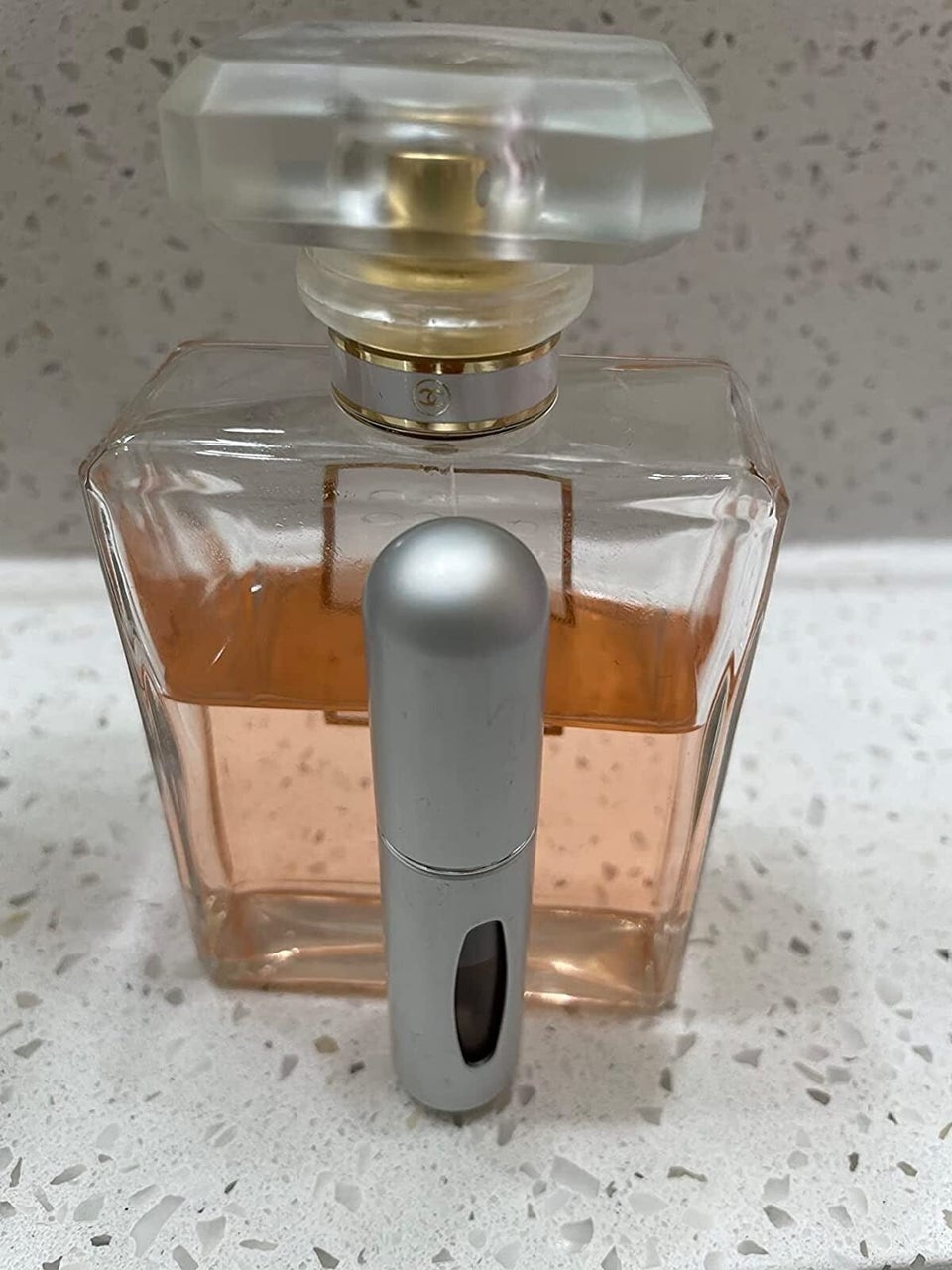
From Our Partner
Huffpost shopping’s best finds, more in shopping.

IMAGES
VIDEO
COMMENTS
What to Pack for Australia: Clothing. Jeans: These all-purpose pants are great for walking around cities. Hiking pants: Lightweight, quick-drying pants are ideal for outdoor adventures. Shorts ...
2. DON'T TAKE items made of wood. If you can avoid it, it's best not to bring wooden items into Australia, as you'll have to declare them for the same reasons that foods and camping equipment are banned - Australia is very keen on protecting their native species from foreign and invasive species. 3.
Travel pros like use micro-fibre dry towels that roll up into tiny, space saving proportions AND they dry unbelievably quick. Granted, they are not quite as comforting as a cotton towel but its a trade of that travellers need to make. A good micro-fibre travel towers is essential travel gear on any ultimate backpacking gear list.
Carry-on packing list: (if required), boarding pass, itinerary and travel insurance policy. Compression socks: recommended for long-haul flights. Entertainment: book, journal and pen, magazine, cards, tablet, laptop and headphones. Reusable bottle: just remember to empty it before you go through security!
Tiger balm - it works wonders on headaches and itchy mosquito bites. Earplugs - an essential if you're sleeping in hostel dorms. Eyemask - ditto. Senekot if you often get an upset tummy when travelling. Mooncup for the female travelers - they're a lifesaver when travelling on your period. Eco-friendly bamboo towel.
Scotch Duct Tape. $4.99. Buy Now. We earn a commission if you make a purchase, at no additional cost to you. 09/03/2024 04:21 am GMT. Duct tape might seem like a strange item to include on your packing list for Australia, but there are a few reasons why you should include it.
The Basic Essential Items For Full-Time Travel In Australia Some of these items might be expected, however, we wanted to provide a couple of the basics before we get into the bigger essential items. There is A LOT to research before embarking in full-time travel in Australia, so you may slip past some of these:
Gather an Australia pack of important documents. In this, you need to include: originals of personal documents (birth certificates, marriage certificate, qualification certificates, police checks from your visa etc.) These will be essential pieces of identification in Australia. Make sure you leave photocopies of all of these with someone you ...
The Ultimate Australia Packing List. My guide focuses on essential items for a summer trip to Australia! I'll highlight key items you should pack for popular Australian destinations during the summer months, ensuring you're well-prepared to make the most of your sunny adventures Down Under.
Since I planned to explore both the urban and more natural settings, I needed versatile items that could be worn in many ways. I placed all of my belongings into a 55-liter backpack and boarded my one-way flight to Sydney. Here's what factored in to my decision of what to pack for Australia—and what may influence the contents of your travel ...
Some essential utensils and cutlery to pack for your road trip in Australia include knives, forks, spoons, tongs, flipper, wooden spoon and a large serving spoon. Utensil & Cutlery Items: Can opener (or only buy cans with the ring pull) Cutlery - butter knives, forks, teaspoons, dessert spoons. Egg flipper.
Australia Travel Essentials. 1. Waterproof phone case. If you're planning on coming into contact with water at some point during your holiday, a waterproof phone case becomes essential. No matter if you go snorkelling at the beach or kayaking across a river, your phone will stay protected, leaving you to take as many pictures to post online as ...
2.2 How To Plan Your Budget for your visit to Australia. 2.3 Our Money Looks like Monopoly Money. 3 Useful Tips & Friendly Advice for your First Visit to Australia. 3.1 Australian border control is very strict. 3.2 Free walking apps for cities in Australia. 3.3 Scams to avoid in Australia. 3.3.1 Money changing.
6) Sun Cream. Australia has one of the highest rates of skin cancer in the world, mainly due to the country's proximity to the equator and its depleted ozone layer. Make sure you choose a sun cream with both UVA and UVB filters and a high SPF, usually SPF30 or SPF50. Don't forget that insect repellent reduces the effectiveness of your sun ...
The Australian Government advice is for repellents to contain picaridin and DEET (higher % is more effective). Bushman Repellent -20-80% DEET and up to 15 hours protection. Bushman has a solid reputation in Australia for being highly effective. Off! - this is my preferred option when I need strong repellent as it is only lightly fragranced ...
6. Jacket. Your Australia and New Zealand packing list should always include a jacket of some sort. In summer, the southern parts of Australia and all of New Zealand feel quite cool in the evenings so pack a light jacket or sweater to feel cosy. In winter, you might like to bring a ski jacket or warm feather-down jacket to combat the winter ...
Kangaroo Island, South Australia. Having road trip essentials and other travel items will enable you to have an organised and safe trip. Australia is incredibly big and diverse, and whilst I consider it an easy country to drive in, the sheer size and climate conditions require some important considerations.
5 ESSENTIAL PACKING ITEMS FOR AUSTRALIA. #1 Good Camera - You will be pretty much snapping non-stop in Australia and will need a good camera to do this gorgeous country justice. I highly recommend the Sony A6000, which I use for all my travels and love, not least because it's light, compact and robust!
Travel insurance: not the most exciting thing to organise but one of the most essential. Make sure your travel insurance covers your whole trip and any activities you may wish to do (watersports, winter sports, sky diving etc). Your tech: update your smartphone, laptop or tablet with your favourite films/tv shows/music. Make sure they play ...
A waterproof jacket for unpredictable weather, especially in tropical areas and during the rainy season. Fleece or sweater for cooler evenings and southern regions. 5 short sleeve shirts/vests + 1 or 2 long sleeve shirts. A pair of jeans. 2 or 3 pairs of shorts. 1 pair of trousers /dress skirt. socks and undies.
A travel pillow, sleeping mask, and ear plugs will help you to do this comfortably even if you are stuck in economy! View on Amazon.com . 10. Portable Charger. Sydney is best seen on foot and by bus and there are very few chances to charge your phone once you are out and about.
The Ultimate Packing Checklist. To see the ultimate packing list, scroll down the page or click here for an editable PDF version that you can save or print out. To customize the list, simply ...
Travel wallet, eye mask, noise-cancelling headphones - we all have certain items that we simply cannot travel without. We have put together a list of our 40 best must-have travel items according to our Travel Experts. 1. Noise Cancelling Headphones. Noise cancelling headphones are a fan favourite here at Flight Centre.
A travel writer shares the foolproof products that helped her stay comfortable and entertained on a 23-hour flight. Fresh off the heels of a three-week long trip from Sri Lanka, her travel ...
Your carry-on bag is crucial for keeping essential items like travel documents, medications, and valuables accessible on travel day. ... Travel day essentials 584652 / Pixabay. When travel day ...
My essentials tend to vary depending on my destination and the time of year. In my latest Travel Essentials column, I include clothing, olive oil, perfume and packing cubes.
Alleyoop is a woman-owned small biz making products to help simplify your beauty routine. This pack includes a water spray bottle, a shea butter moisturizing bar and two triple-blade razor cartridges. Promising review: "Great essential to have when traveling or on the go! Not to mention the soap smells amazing!
From seamless NFC payments with my Apple Watch to the compact wonder of the Ultimate Ears Wonderboom, these 10 tech essentials made all the difference. Check out my top picks for a smoother, more ...
Our readers' favorite Amazon products in August included travel essentials, cooling products for the home and tools to host the perfect barbecue.